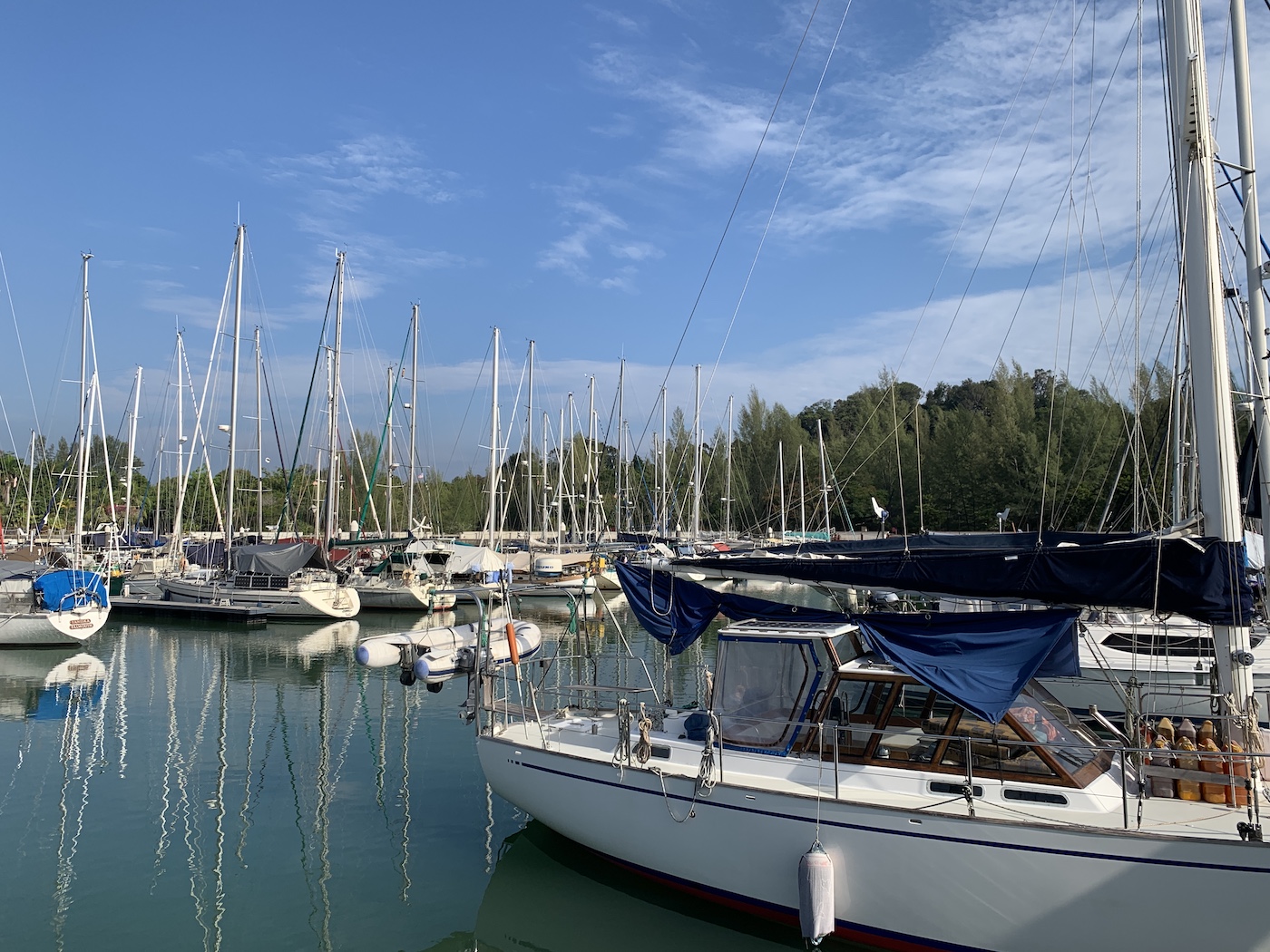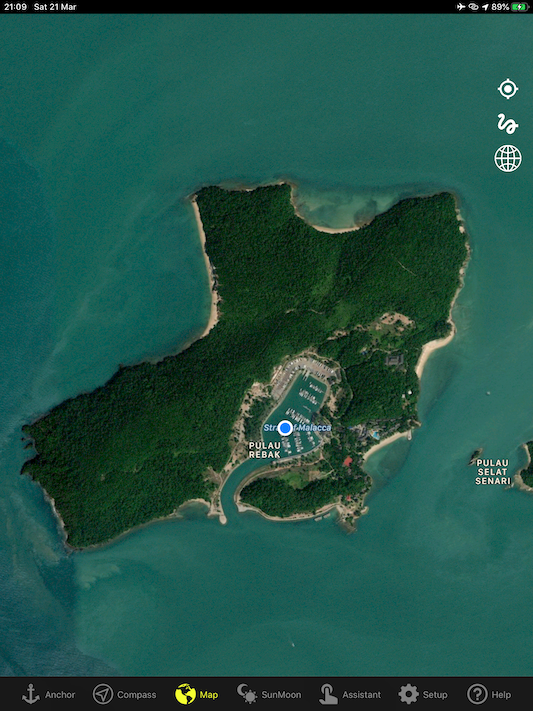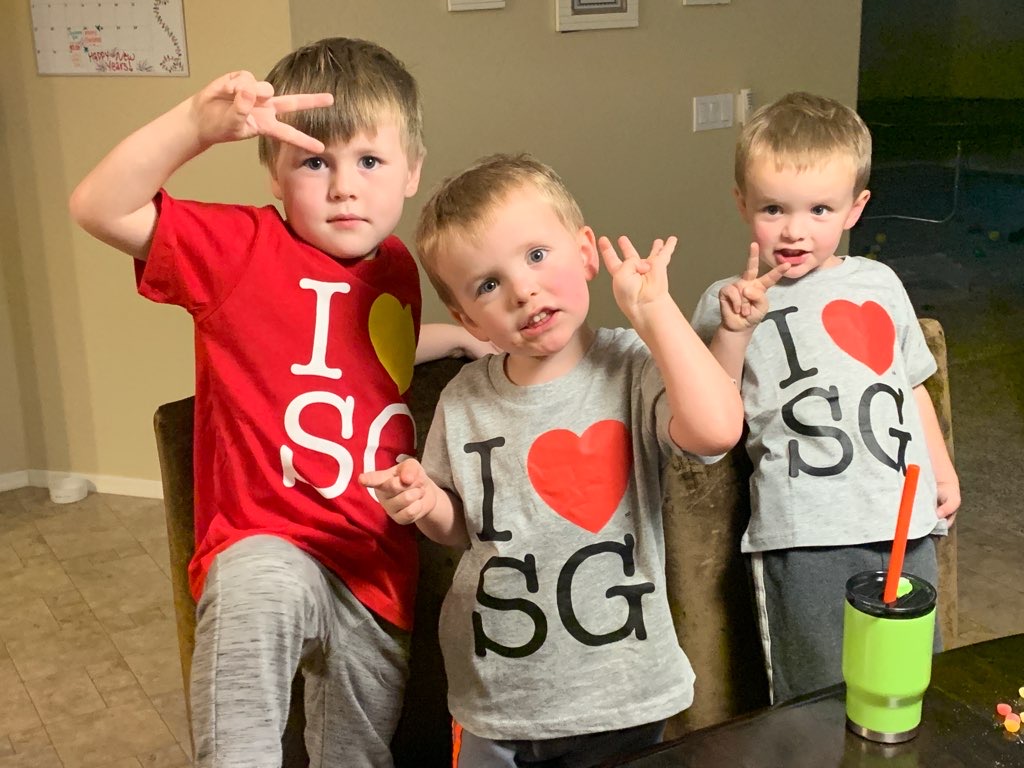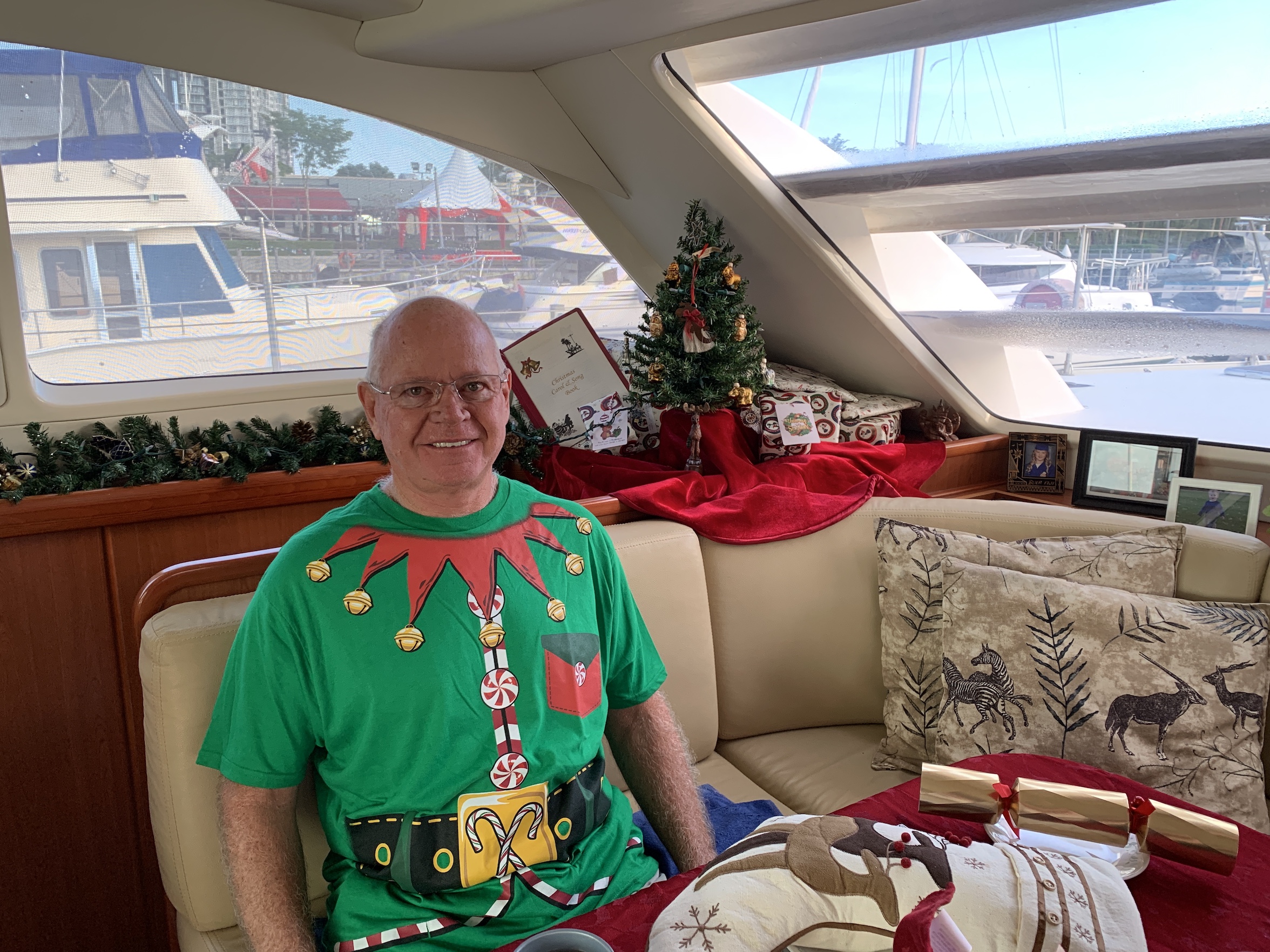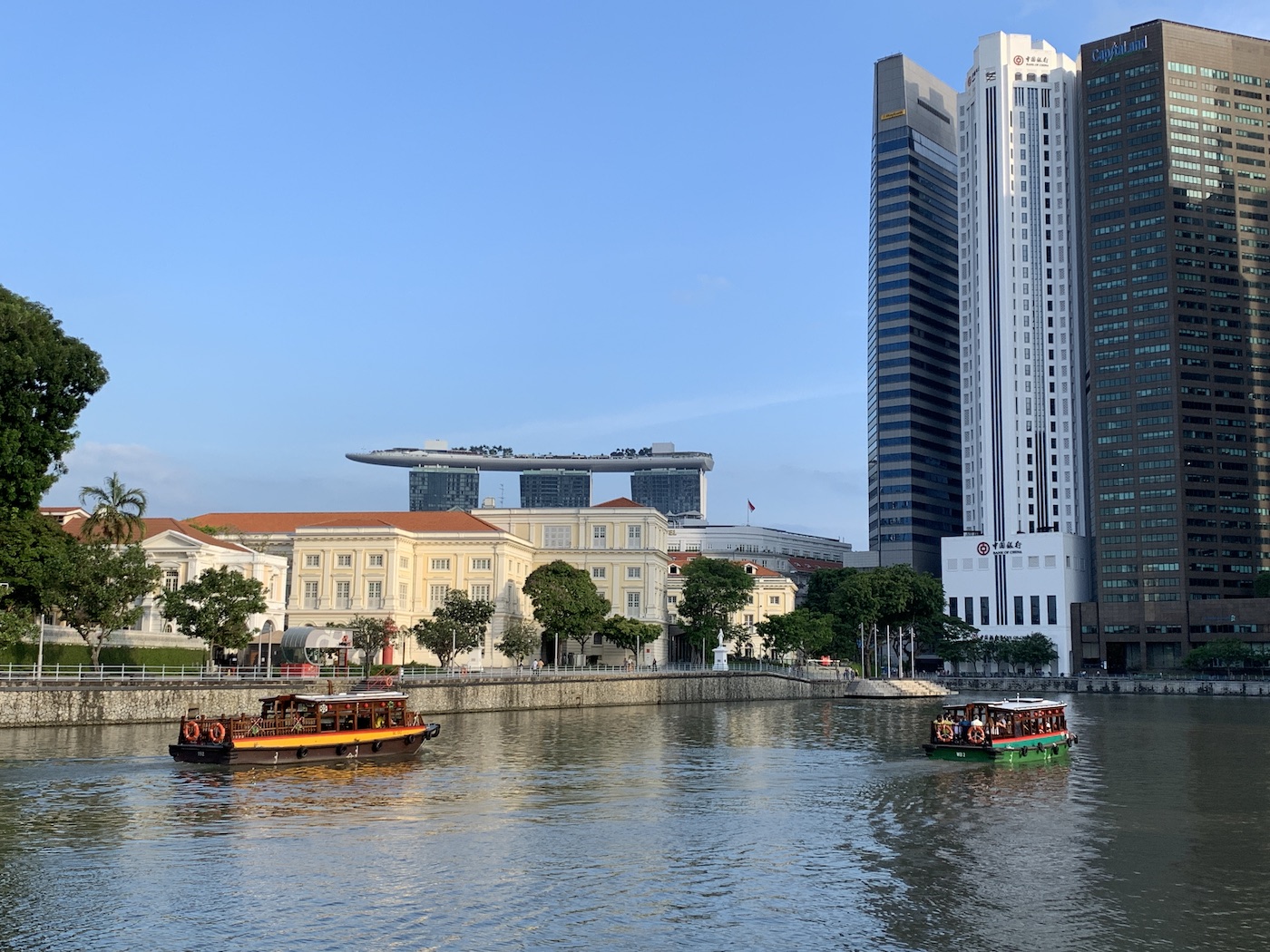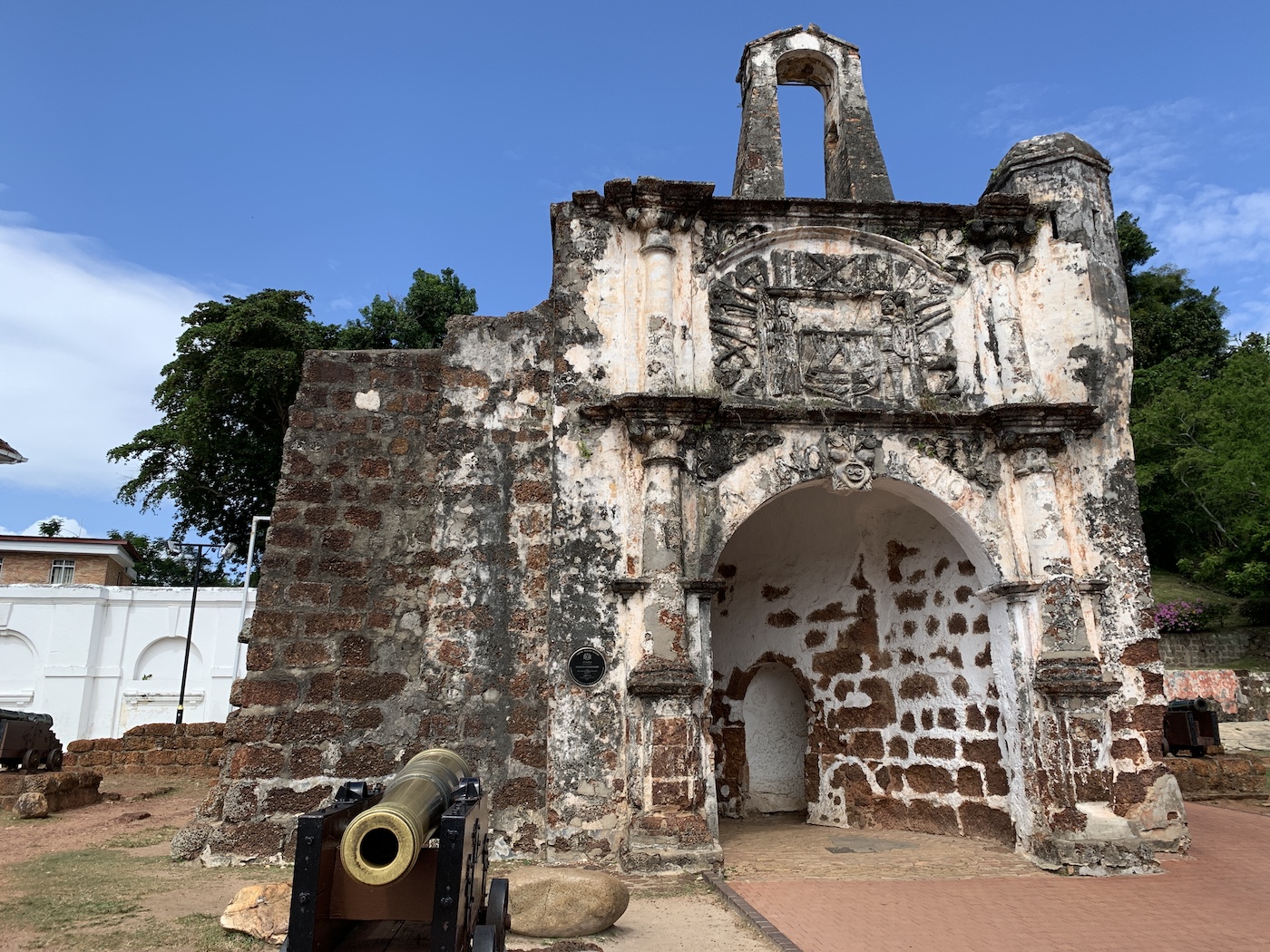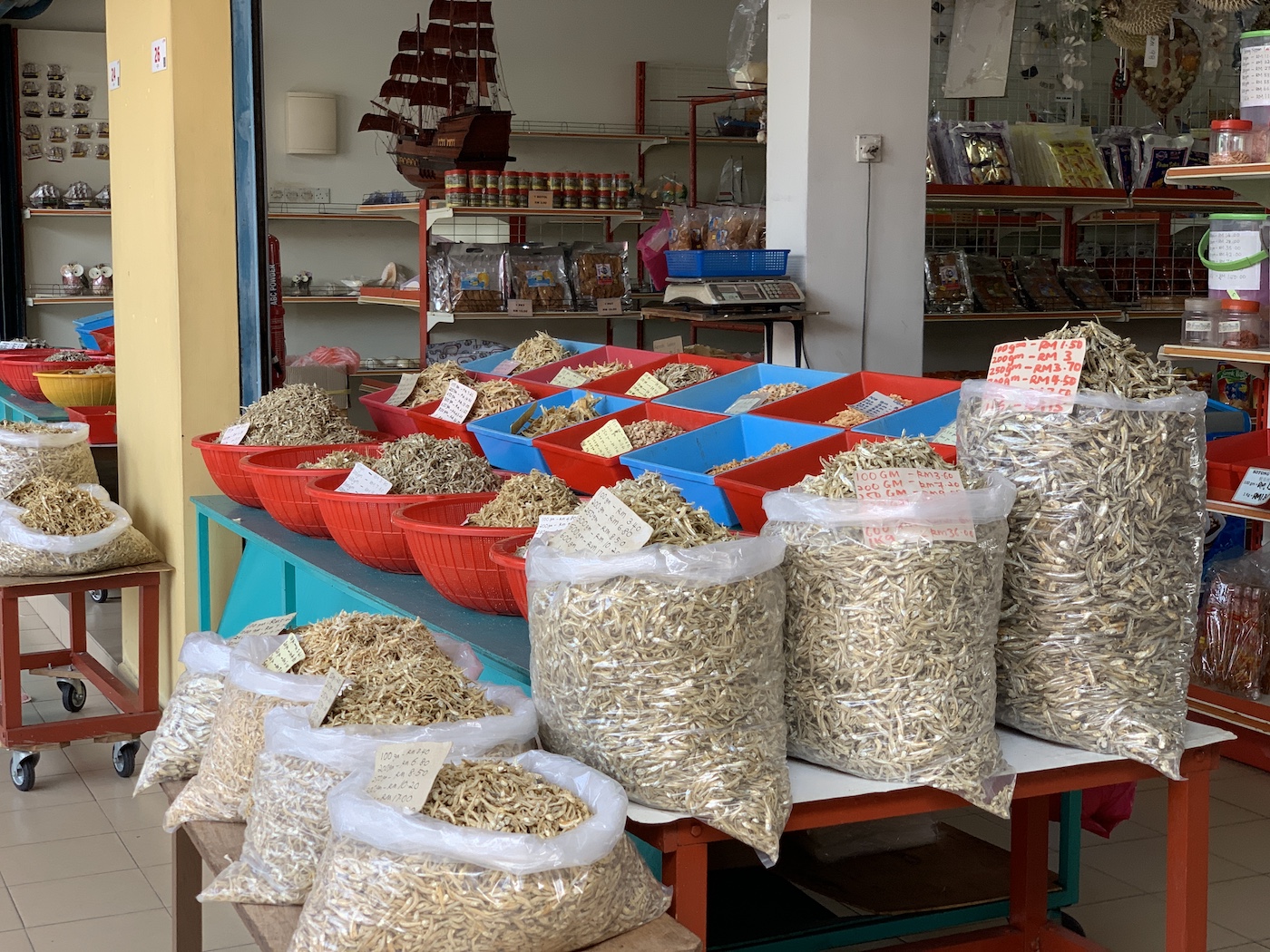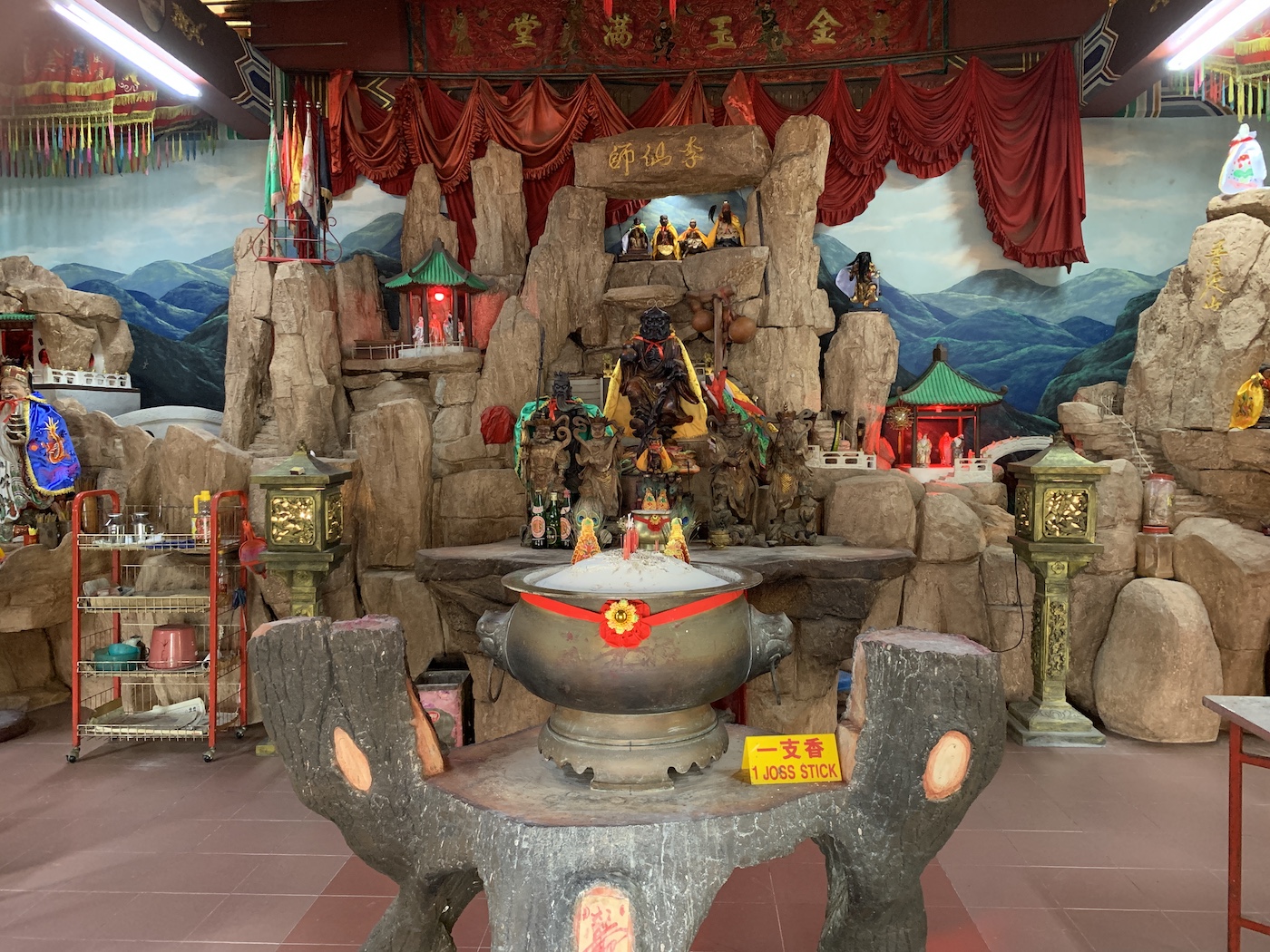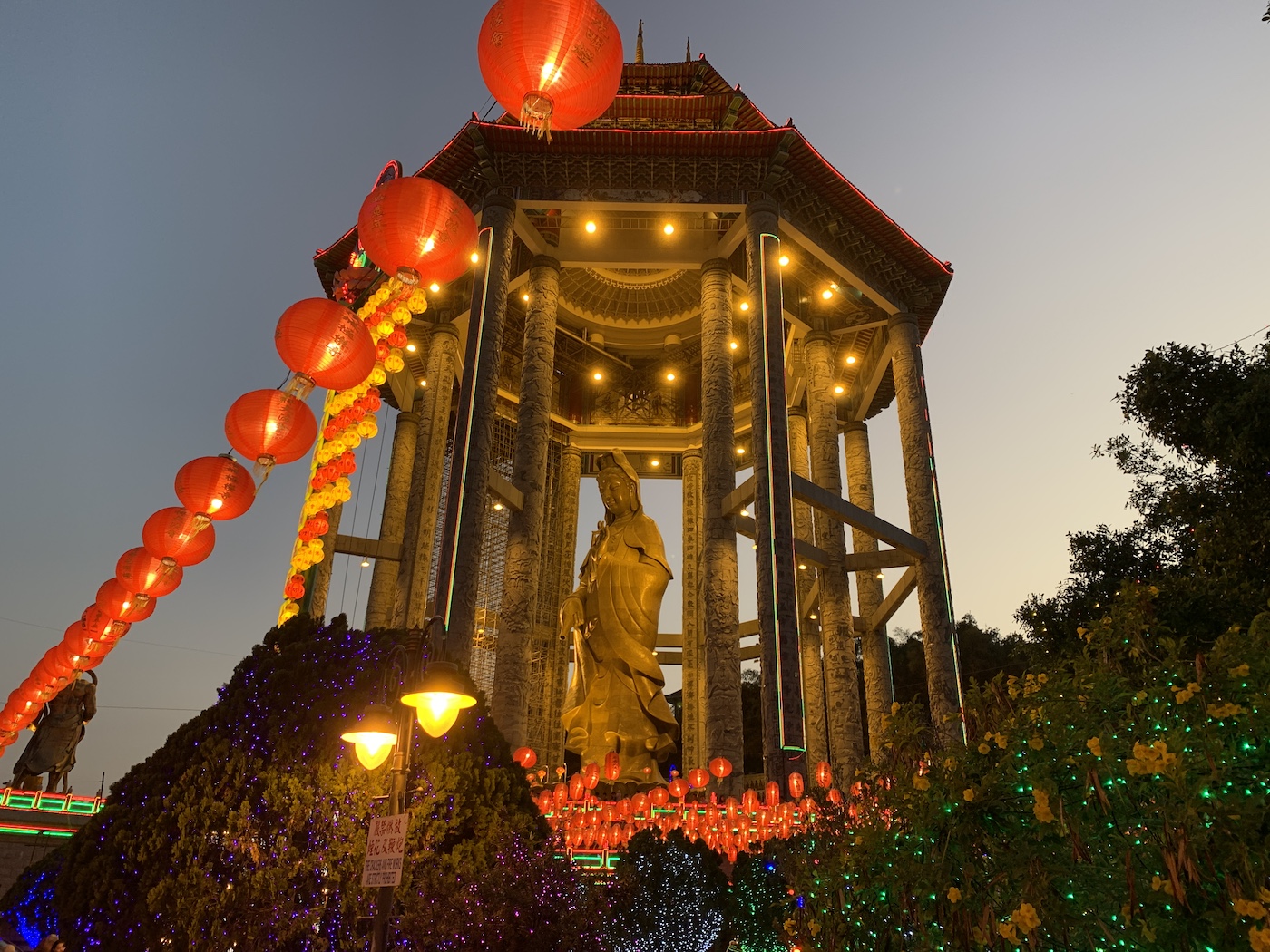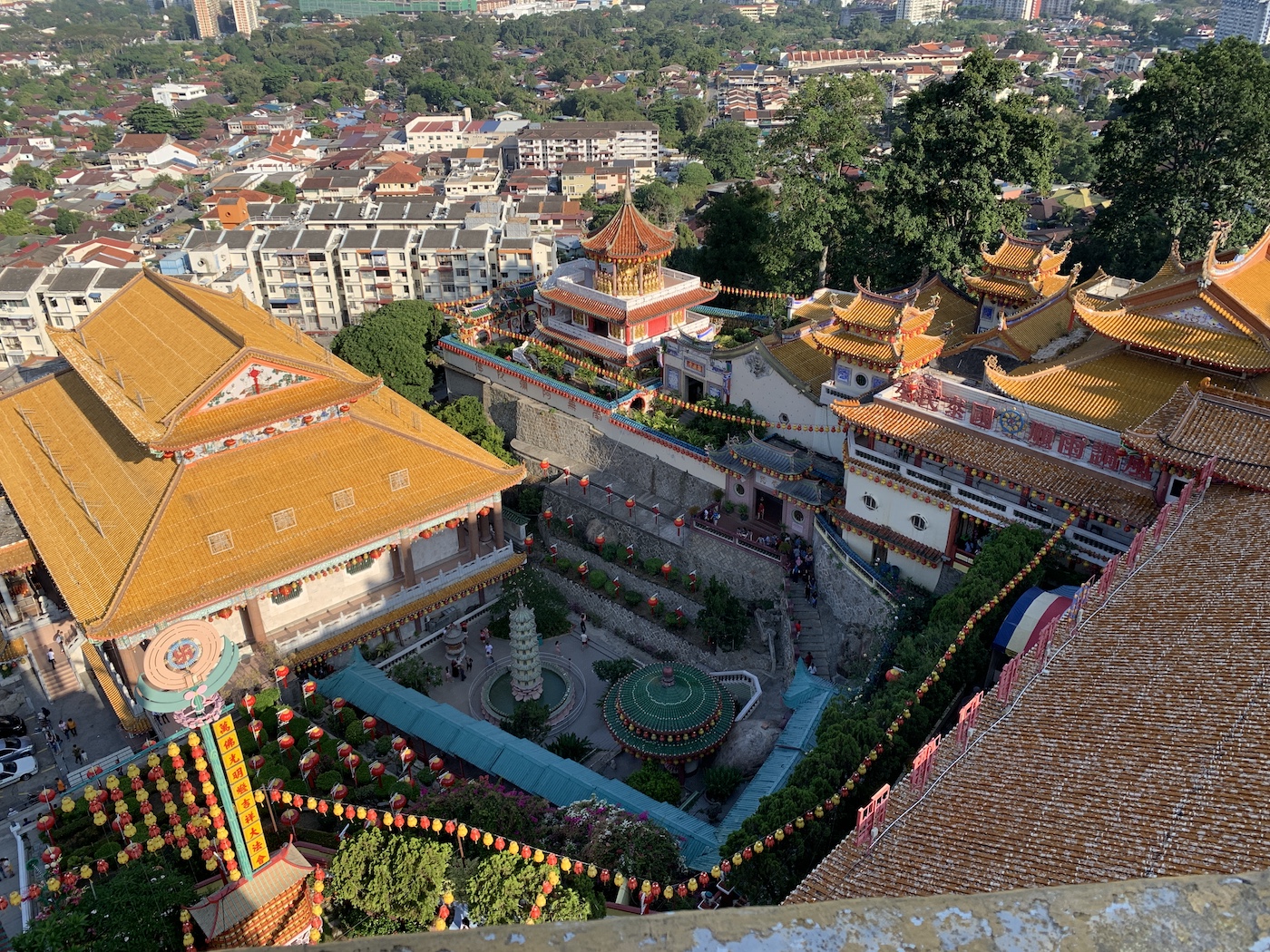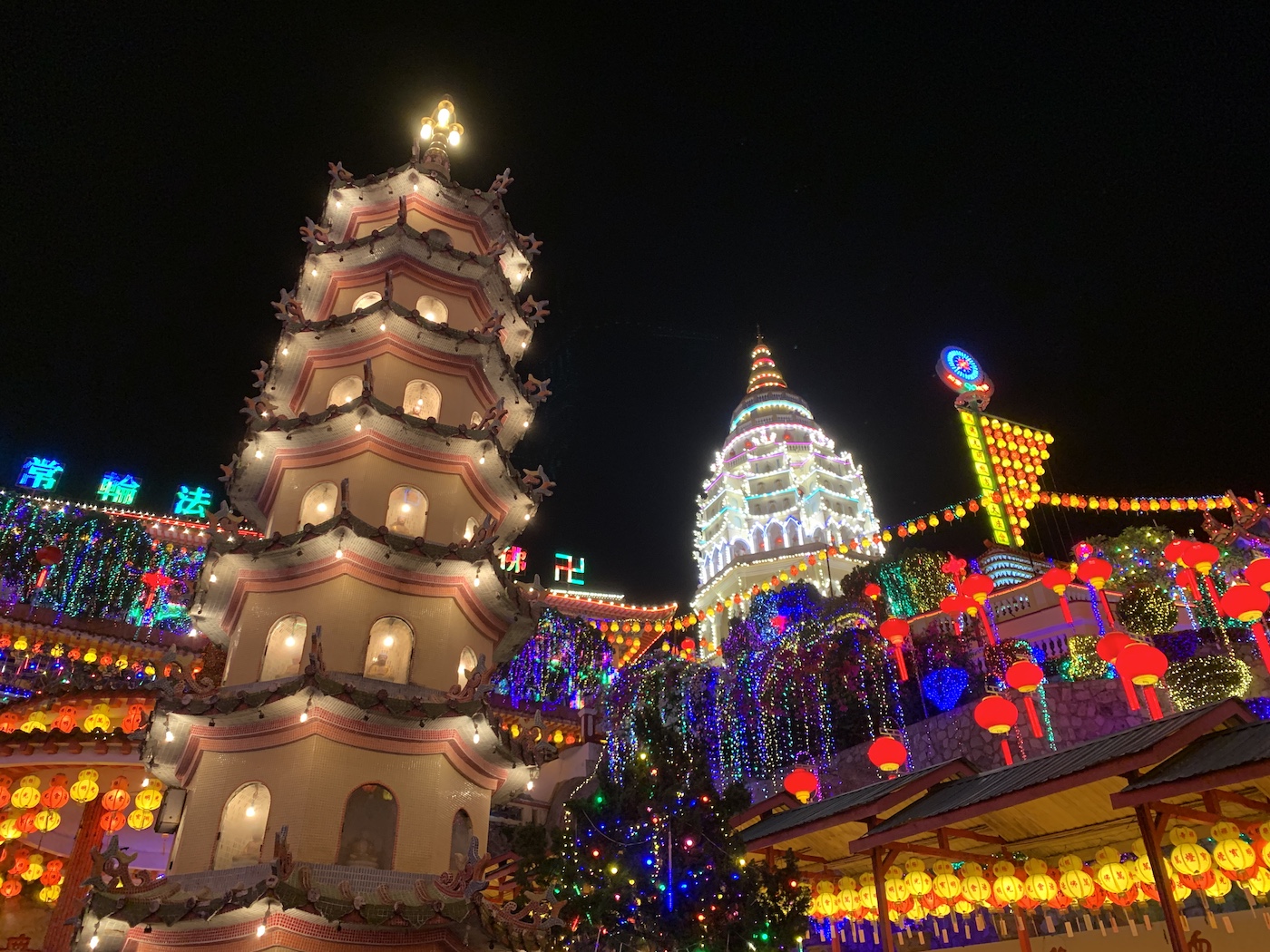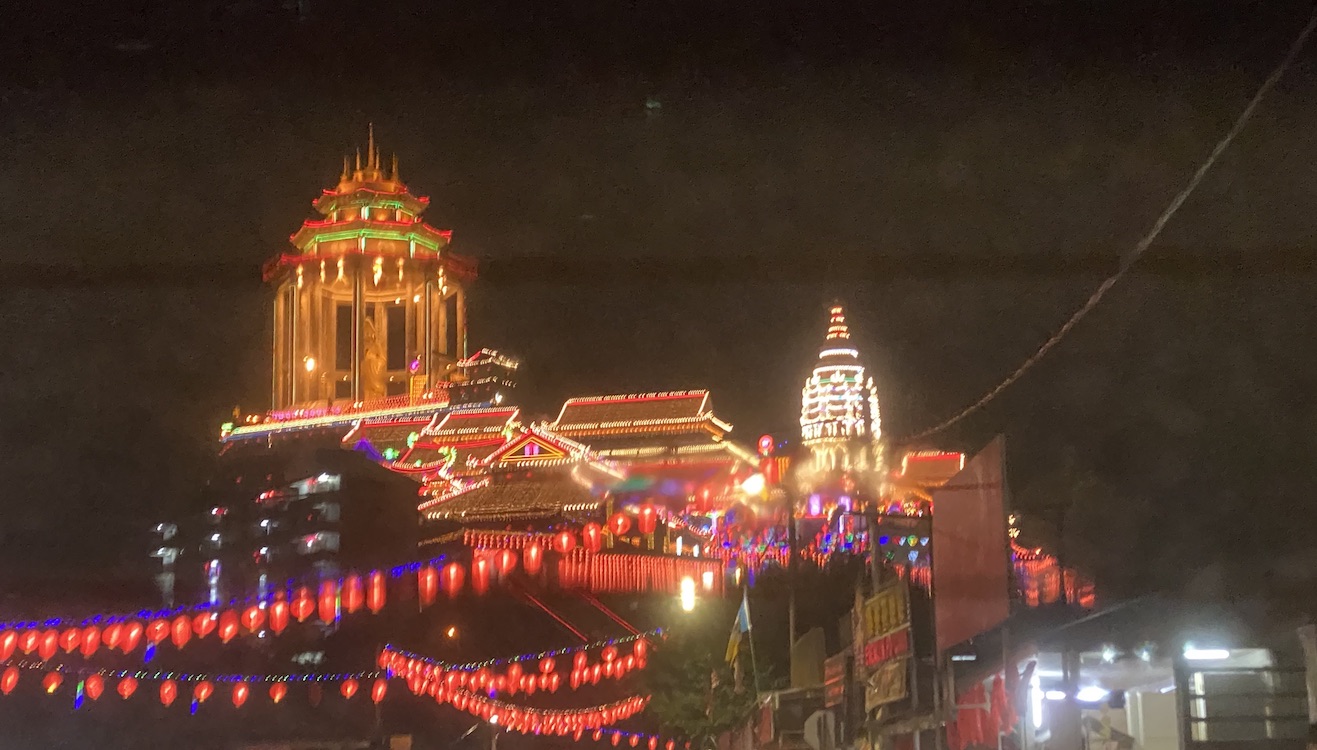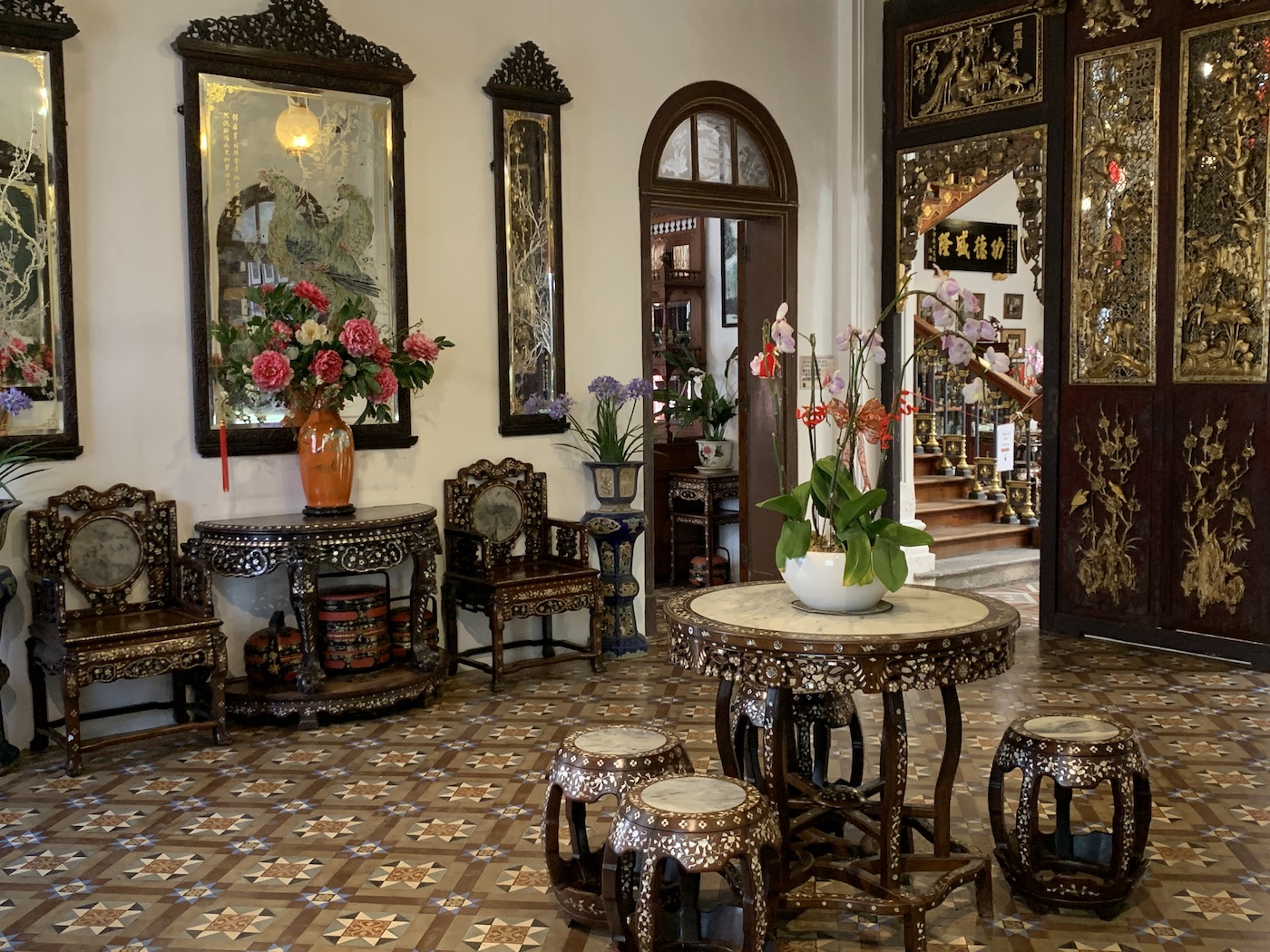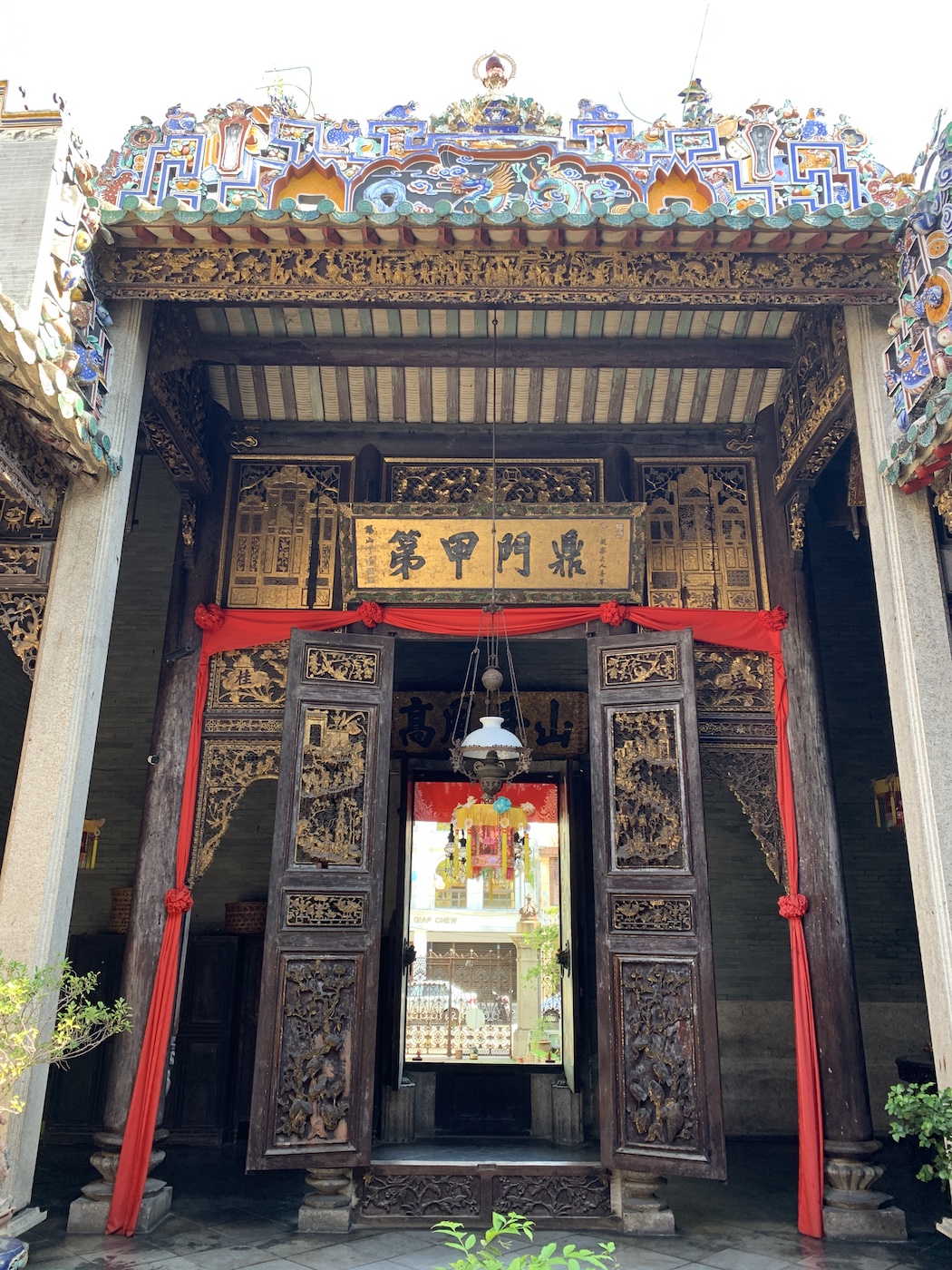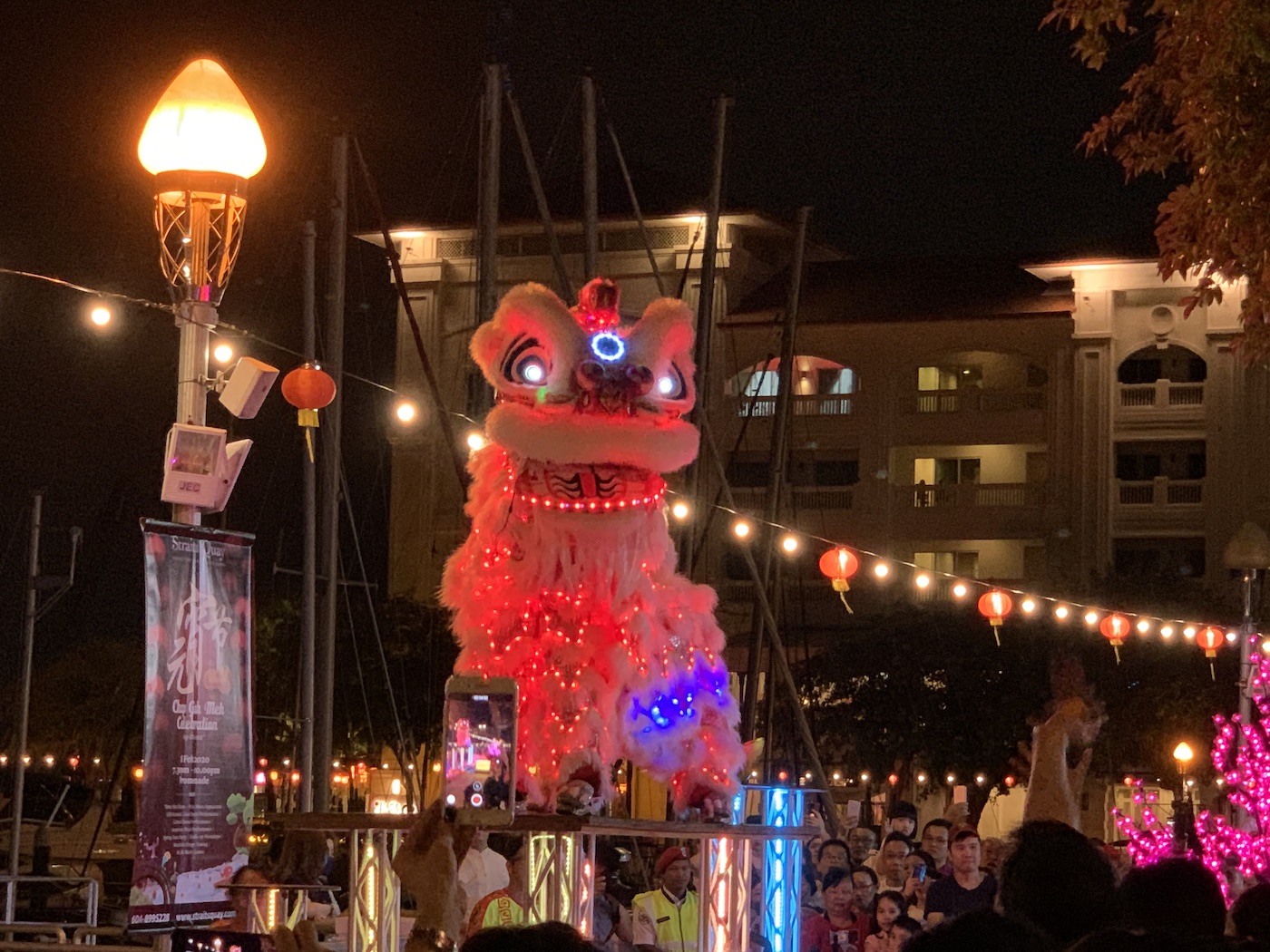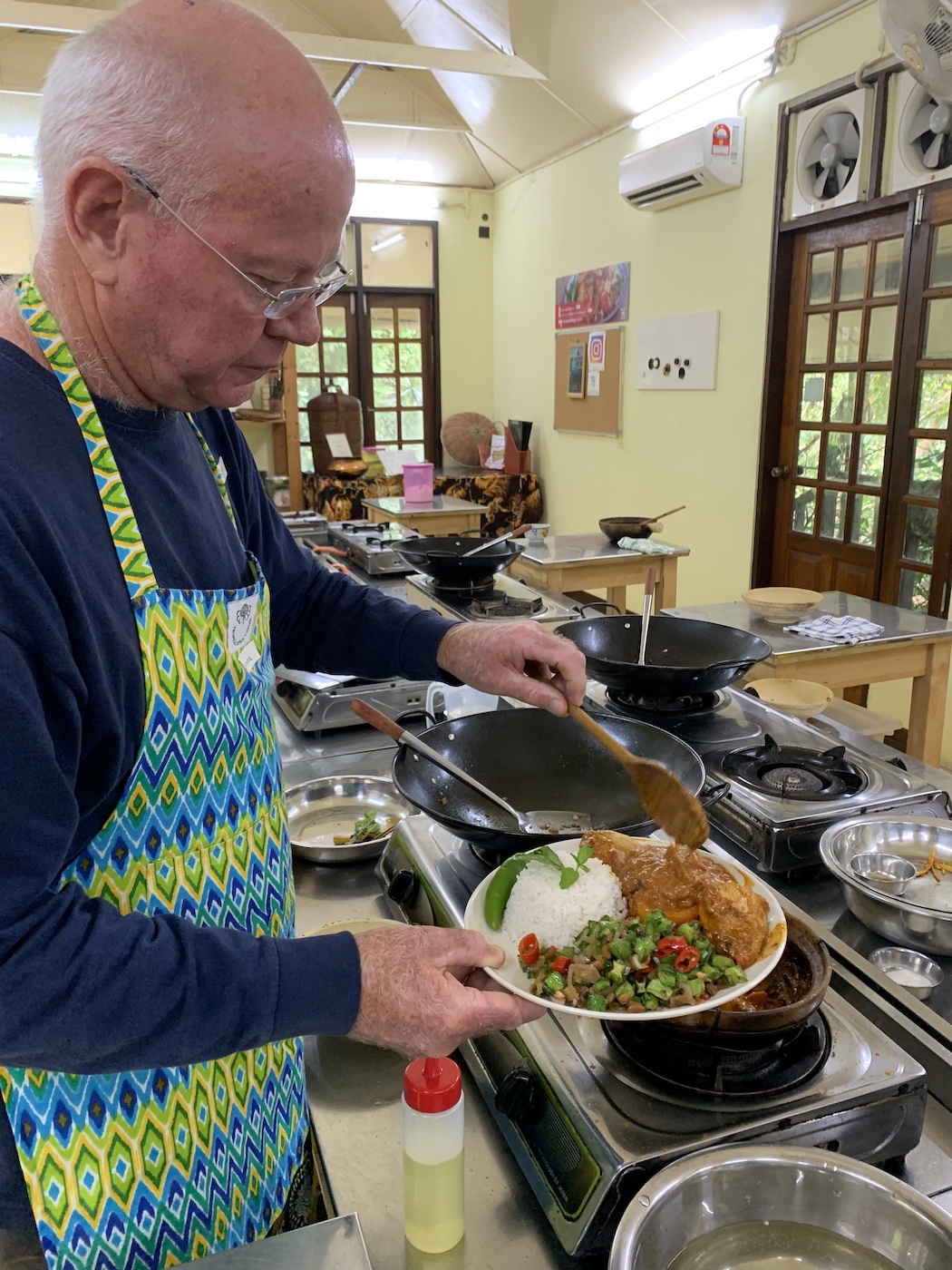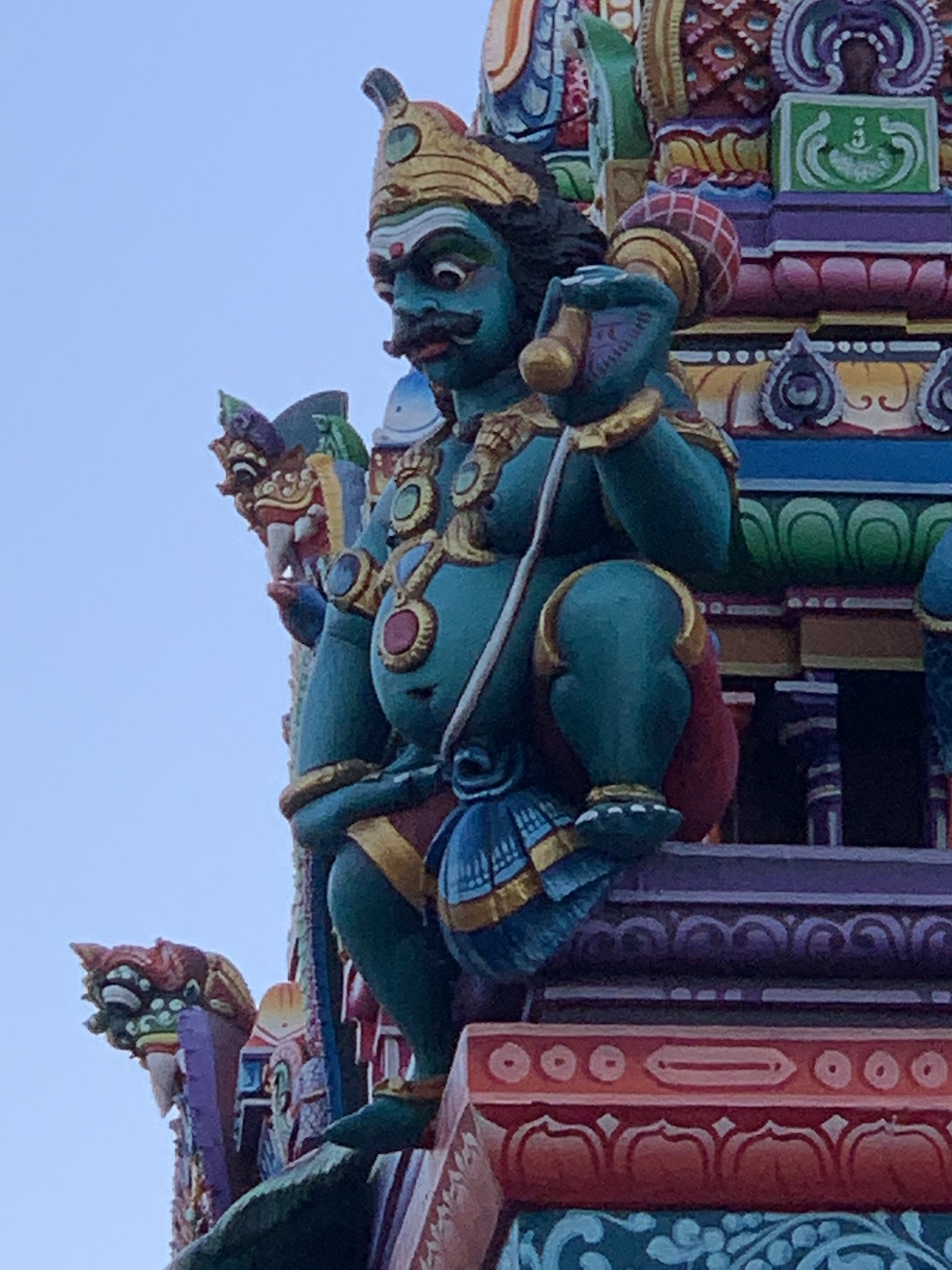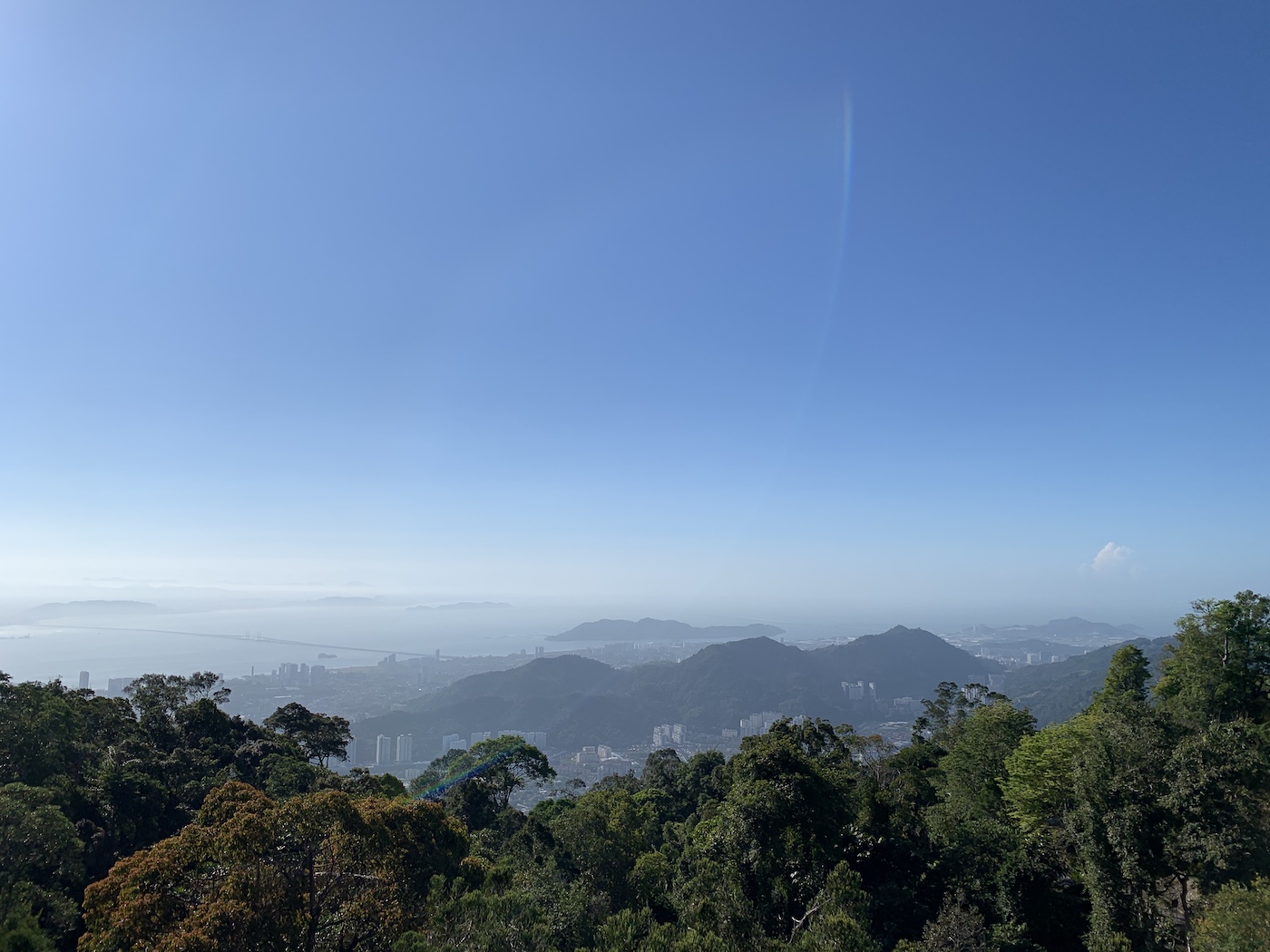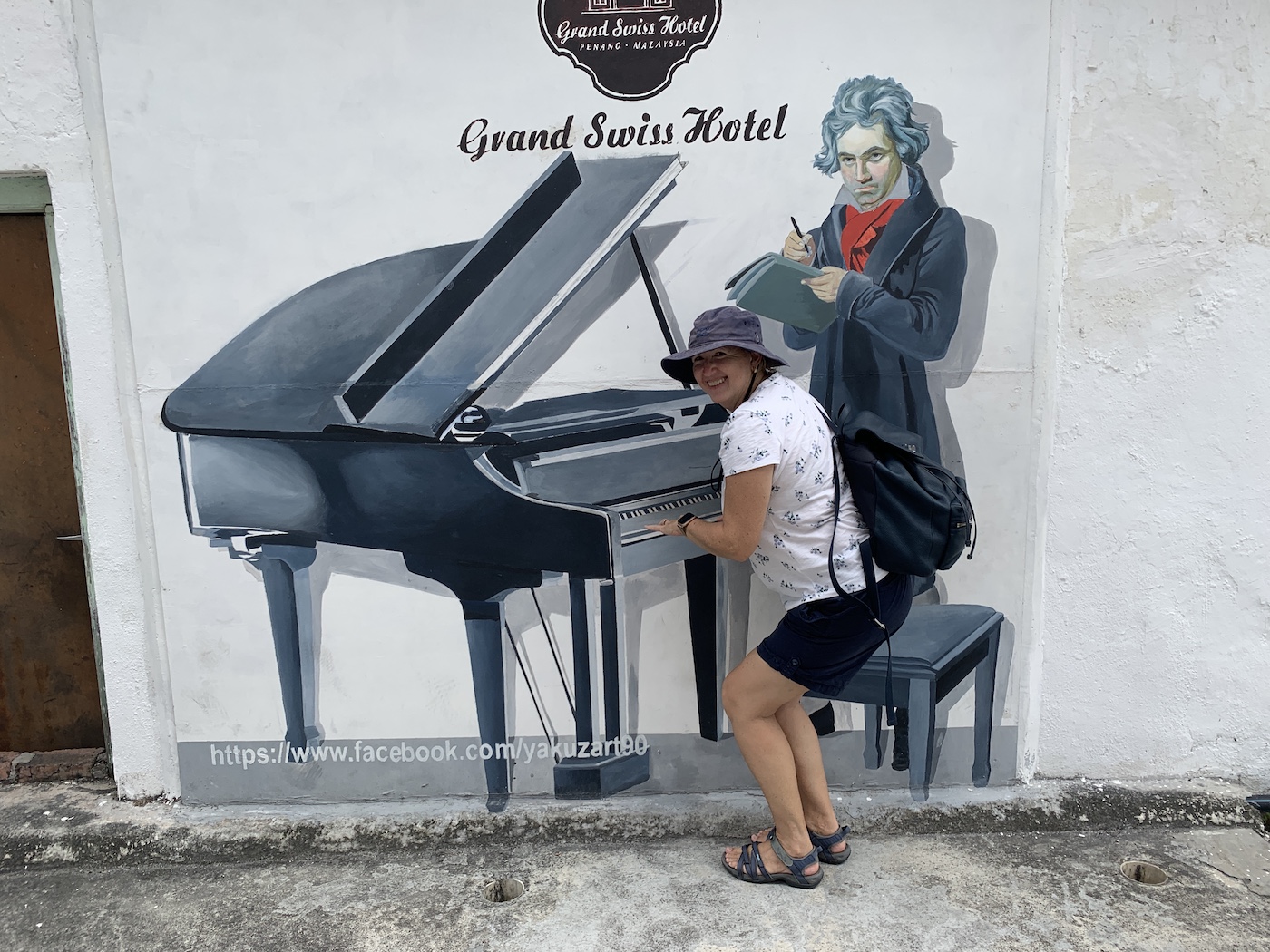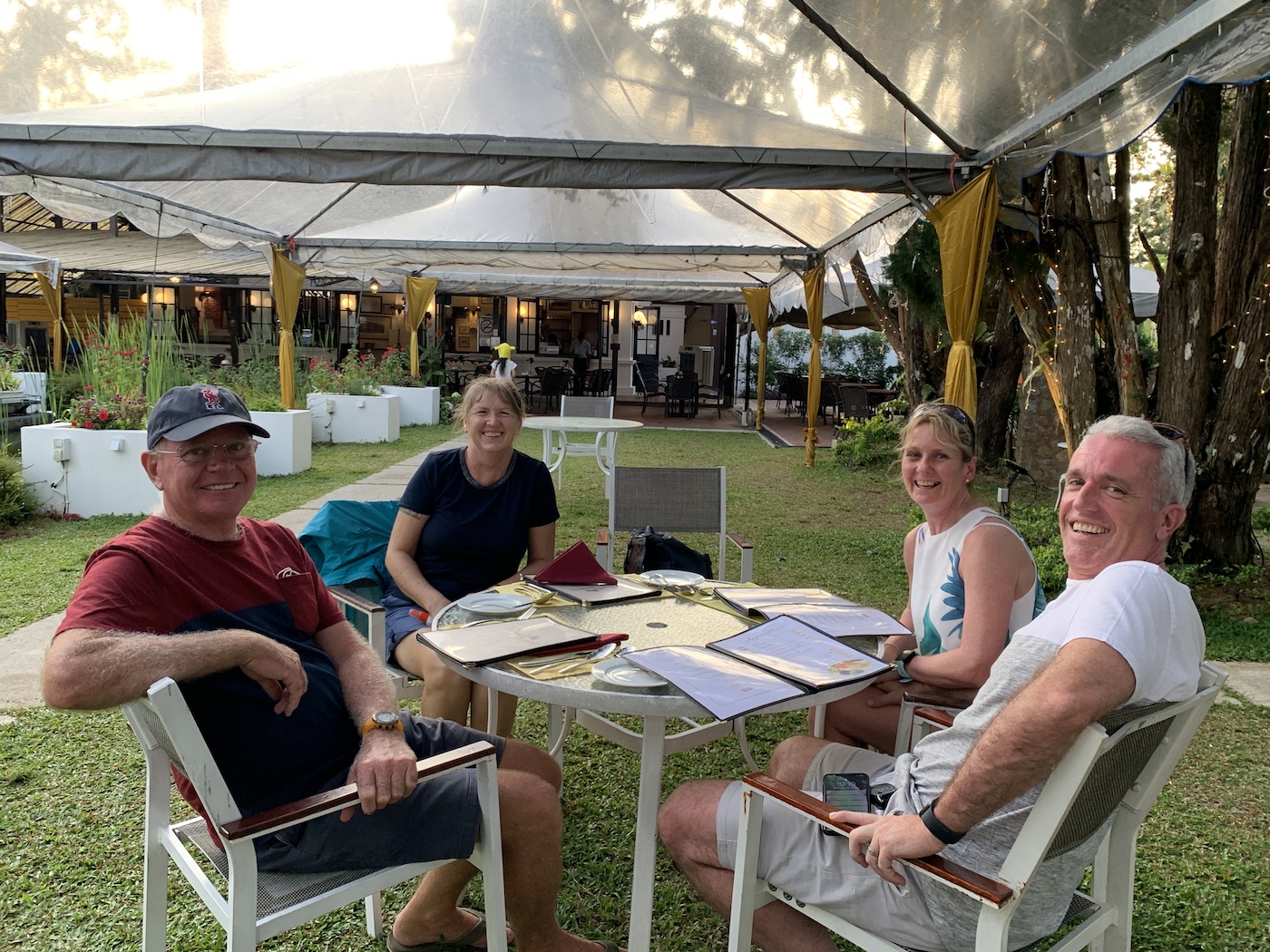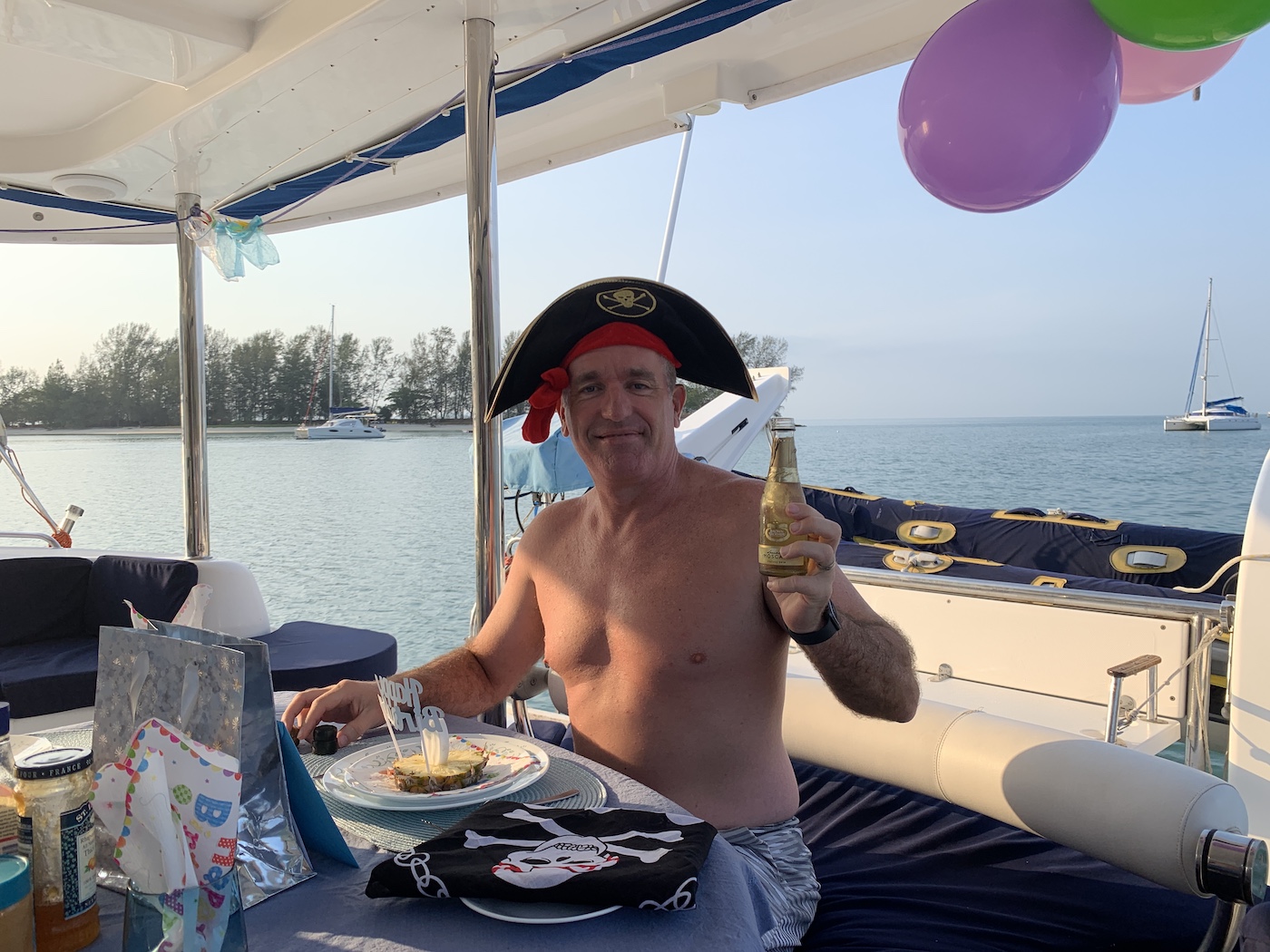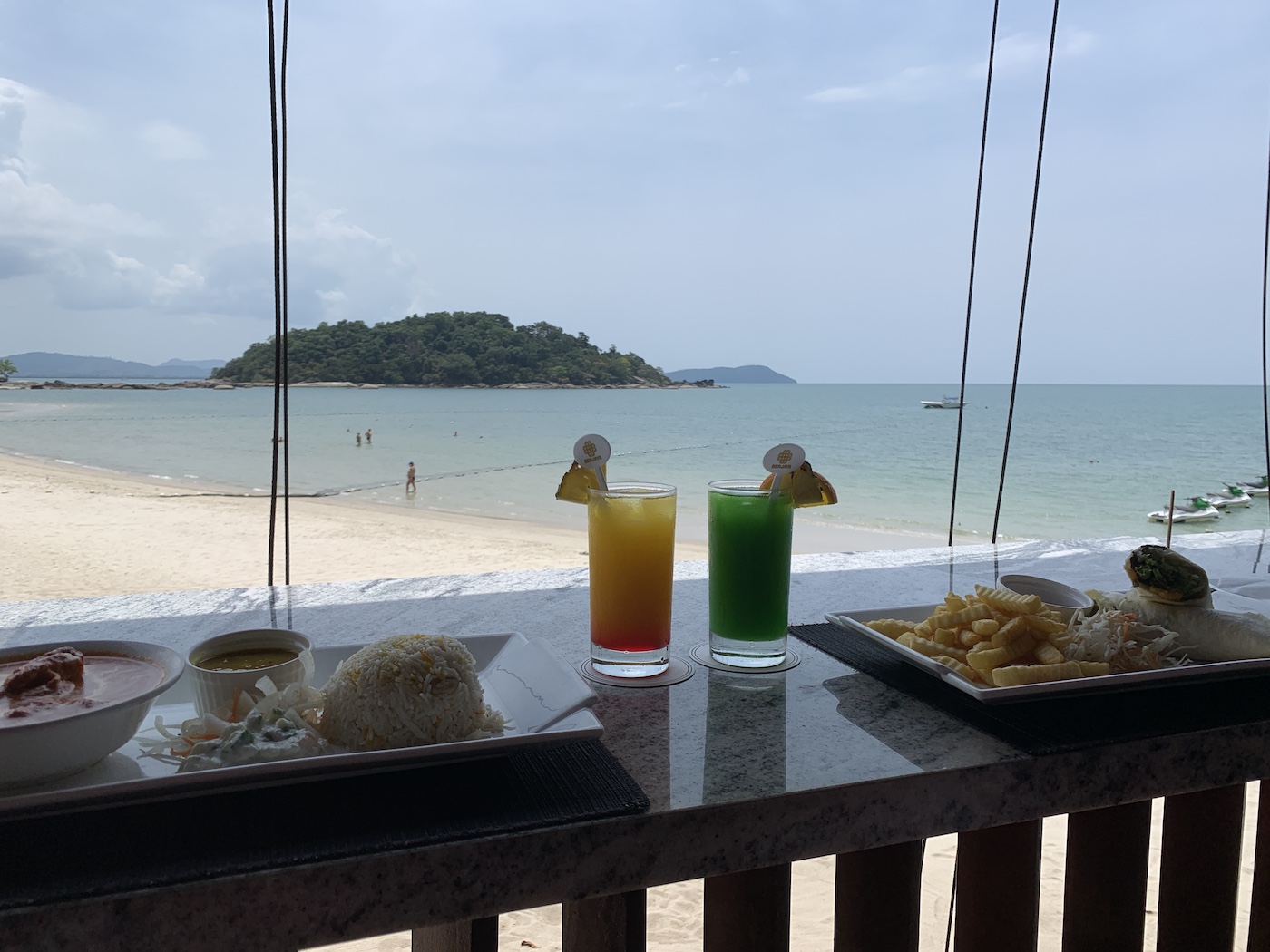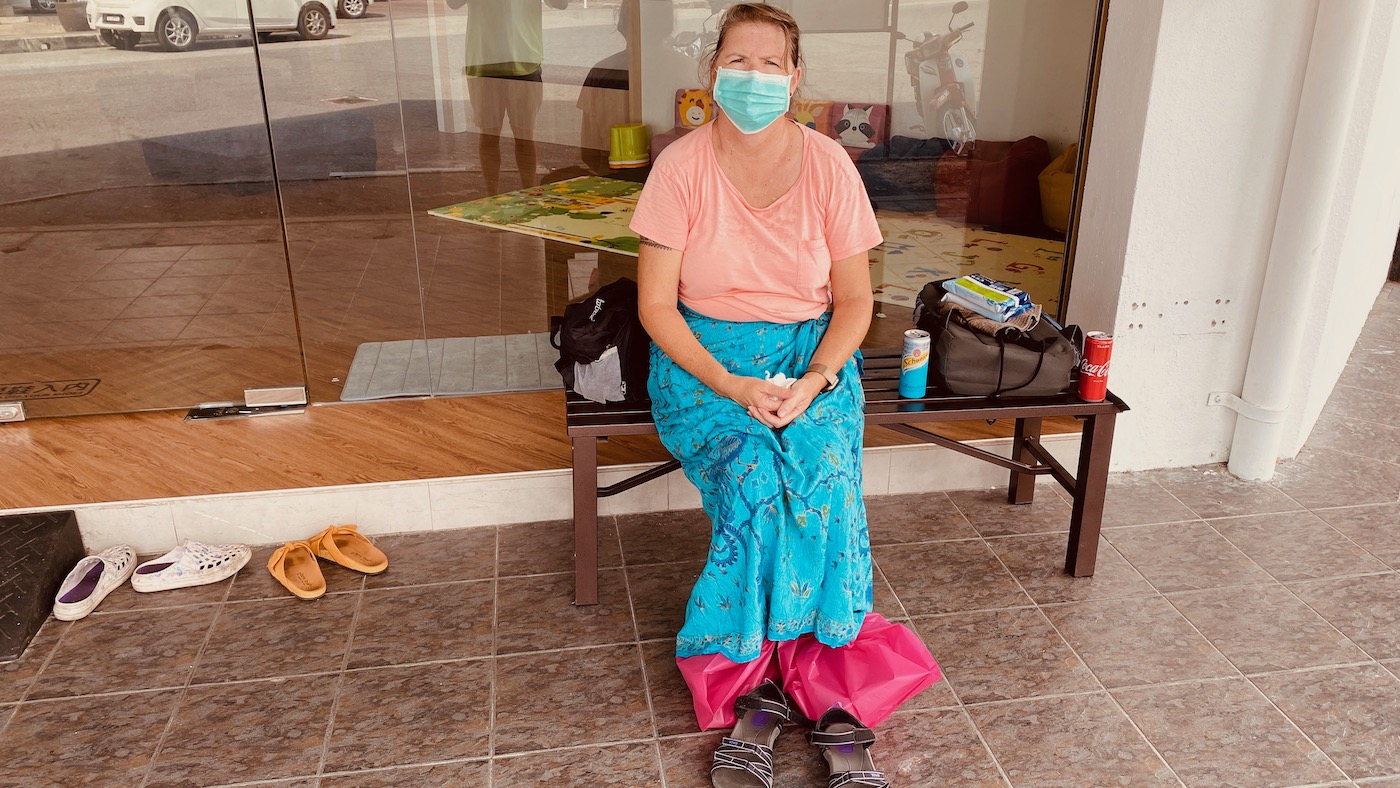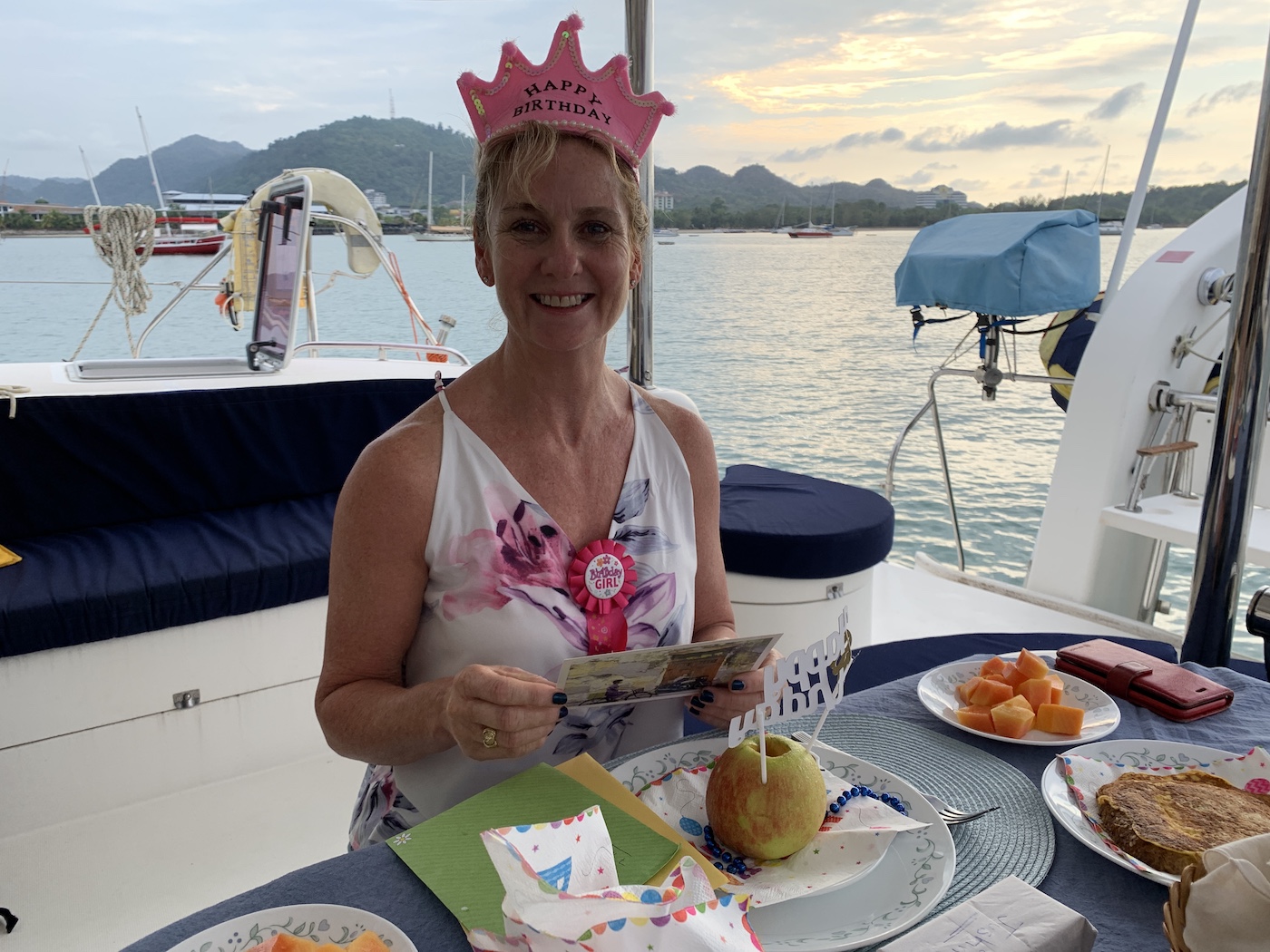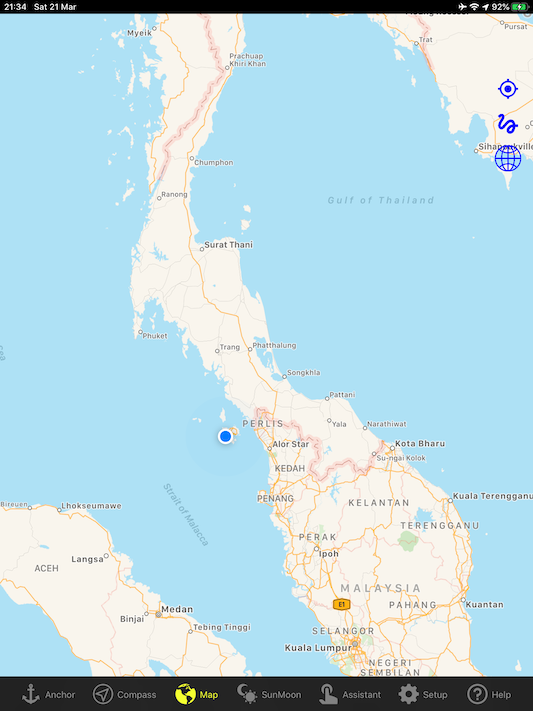After months of transiting the enormously dispersed and most diverse country of Indonesia, with its 17,000 islands and one of the rare remaining destinations in the world where a cruiser can see little to no influence of the modern world, we were exhausted in every which way by the time we reached Malaysia; mentally, physically and emotionally, a culmination of a number of factors.
Firstly, we’d basically been continuously on the move for sixteen weeks since arriving in Debut, our Port of Entry, never mind the weeks it had taken us to reach Thursday Island in Australia from Port Macquarie. With the exception of a few weeks here and there, where we stopped to enjoy the areas of Indonesia that we wanted to see, we hadn’t stopped for more than an overnight anywhere. It had been a very long, arduous sailing season in an extremely difficult and dangerous sailing environment, yet full of the most diverse experiences and encounters along the way, together with the most spectacular sceneries, magnificent snorkelling adventures and fabulous cultural exposures.
Secondly, the deterioration of Elaine’s health having been exposed to a population that was extremely unhealthy, given that most lived in completely unsanitary conditions and most suffered from chest complaints due to the smoke from the fires that burnt continuously. In fact, in all our travels, we had never experienced toilet facilities like those we saw in Indonesia and not a smidgen of soap to be found anywhere. Being forewarned by the Sail2Indonesia rally organisers would have afforded us the opportunity to give the local toilets, the local (coughing) population, the food and the drink, a wide berth. However, while we weren’t the only cruisers to fall victim to this aspect of Indonesia, with the entire fleet ending up with either chest infections, sore throats or food poisoning or, in many cases, all three, but in Elaine’s case, an additional severe UTI (Urinary Tract Infection), coupled with multiple bouts of food poisoning, no matter how careful we tried to be, this all spelt disaster for her autoimmune conditions and sent everything into free fall, making it extremely difficult to get her conditions back under control. This resulted in our decision to change our itinerary and head for Bali as quickly and as safely as possible to obtain medical care. Unfortunately once we reached Bali and received care at the BIMC Hospital in Nusa Dua, a full physical examination and blood test results confirmed our worst fears; Elaine’s inflammatory indicators were the worst ever; in fact, seven times worse. With only a plan of action that would tide us over until we had the opportunity to access the medical services of Singapore, where a full reassessment had definitely become a priority, we set sail for Malaysia.
By Tuesday, 29th October 2019, after clearing out on the Monday evening, we were up with the birds for our early morning departure; full of hope and thankful that we were eventually leaving Indonesia, which couldn’t have come soon enough, especially, since our arrival at Nongsa Marina and Resort, we could see the lights, across the Singapore Strait, beckoning us! Our first hurdle, however, once we were out of the marina, was running the gauntlet across one of the busiest shipping lanes in the world, the Singapore Strait. But Lady Luck was with us and we really only had three cargo ships heading east and six heading west to deal with and all but one passed ahead of us. By 0700 we’d made it across the Strait without a cargo ship hitting us and as we meandered our way between the ships at anchor, we only had two more to deal with that were coming out of the anchorage areas. All in all, it wasn’t as hair-raising an experience as we had envisaged. The only opinion we have on this particular crossing was how useless the VHF radio Channel 16 proved to be, with everyone talking over everyone else as we listened. It was ridiculous!
By 0830 Indonesian time / 0930 Malaysian time, as we’d lost an hour, we were anchored at Tanjung Pengelih, a ferry dock and marina and a one-stop shop for clearing in to Malaysia using the government run CIQ facility which didn’t cost us a penny. Within an hour the very friendly and efficient staff had helped us complete Harbour Master clearance, Immigration and Customs. The strange thing was that there was no Biosecurity at all and no one came out to the yacht; we simply dinghied ashore and all the paperwork was handled in a single complex of offices, with an office we had to visit on each floor.
Once back on Paw Paw we started the long meander up the Johor Strait, which wasn’t much more than a nautical mile or two wide, with Singapore to our port side and Malaysia to our starboard. We passed the Singaporean islands of Tekong and Ubin before seeing the main island. There was, however, a stark contrast between the coastlines of each country; Singapore was mostly lush green vegetation with a barbed wire fence running the full length, interspersed with multiple high-rise buildings and some new development, while Malaysia was very industrial, with a petrochemical plant, a number of cargo terminals, loading and unloading containers and all sorts of cargo from all over the world, including freezer and refrigerated containers, as well as numerous mussel and oyster farms.
As we progressed further along the Strait, we started to see the high-rise buildings of various residential developments in Malaysia and downtown Johor Bahru, known as JB and the capital city of the southernmost Malaysian State, Johor. JB is connected to the island nation of Singapore via “the Causeway” with a CIQ checkpoint on either side, meant to provide easy movement between both countries. However, this was to close down in the months ahead. The Strait was also the location of the Senibong Cove marina, part of a luxury waterfront residential development, carved out of the mouth of the Lunchoo River, one of the five economic zones earmarked by the Malaysian government for infrastructure development and our home for the next few months. The reason we had chosen this particular location was primarily for the shorter distance via “the Causeway” to the hospital and clinic in Singapore for Elaine’s medical care, where we’d obtained appointments with a rheumatologist and a naturopathic physician, respectively, prior to our departure from Bali.
It was rather odd, though, that every ferry we saw as we came down the Strait was Indonesian flagged, but later learnt that there is a 3000-passenger-per-day ferry terminal near the Puteri Harbour Iskandar Marina, on the other side of “the Causeway” and the Tuas Second Link bridge, offering daily fast ferry links to the Indonesian islands of Batam and Bintan, used by migrant labourers working in Malaysia. This too was to close down, unbeknownst to anyone at the time.
Fortunately we had the tidal current with us and by 1400 we were tied up in our marina berth. However, our first impressions were not good, given the very poor assistance we received with our docklines, which definitely left much to be desired and had Roy swearing and cursing as we tried to explain that the lines needed to be cleated off and not just loosely held as Paw Paw veered this way and that. It was very bizarre! Then a cursory view of the surroundings from the helm station portrayed a completely deserted scene. Although there were yachts in the marina, they all seemed unoccupied and all the buildings along the waterfront seemed closed. It was at that point we had a “Bonaire moment”; that exact same feeling we had following our arrival in Bonaire in June 2014 after our friends, who’d crewed for us, had left. A feeling of being totally alone, miles from our loved ones and wondering what the hell we were doing. With that Elaine started to cry. Fortunately, as with Bonaire, things improved exponentially after that and, to this day, Bonaire is still one of our favourite destinations. We’d hoped Singapore and Malaysia held the same appeal, but after what we witnessed in Indonesia, we held our breath, nonetheless!
It wasn’t until we spoke to the security guard afterwards, who had our access card to get on and off the dock, that we subsequently learnt it was a public holiday and that our two dockline helpers were, in fact, the security guard and the gardener, as the marina was actually closed, but the “skeleton staff” had been informed of our arrival. Who knew!
With further help from the security guard, however, we arranged a Grab, Malaysian’s equivalent of Uber. The security guard then proceeded to explain to the driver that we needed to get to an ATM, a mobile telephone store and a supermarket and that the driver would only be paid once we’d drawn a few Malaysian Ringgits. Turned out the driver knew exactly where to take us; a local shopping mall and within an hour we had money, local sim cards, a few groceries to tide us over and we were in another Grab taking us back to the marina. It’s fair to say, though, we were definitely relieved at our first sights of Malaysia outside the marina complex. We were, not only pleasantly surprised to find a clean, civilised, modern city with decent roads and highways, modern homes, beautiful gardens, restaurants, cafés, shops, etc, but the grounds and complex around the marina were also lovely and, by the time we returned to the marina, all the cafés and restaurants were open as well, with people enjoying sundowners or an early dinner at the various upmarket establishments. So, with that, dinner plans to eat onboard changed immediately and, instead, we enjoyed a “we got here drinks and dinner” at one of the restaurants, The Bierhaus. Things were definitely looking up! All in all, we could have been in any modern western country anywhere in the world, which was a far cry from Indonesia and certainly welcomed at this point!
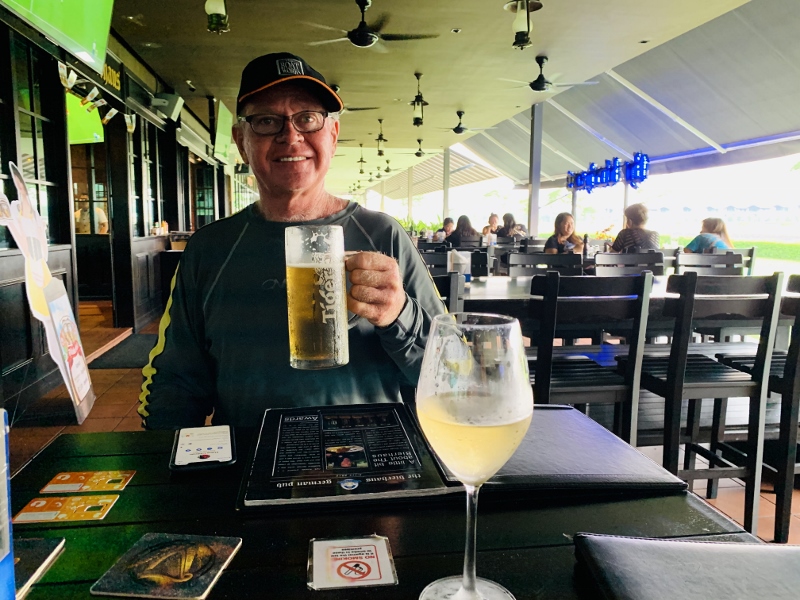
The following day we decided to explore the surroundings of the Senibong Cove marina and the residential development by foot. First stop was the marina office to finalise their paperwork and get the general scoop on the usual services we needed, as well as obtain clarification on the water and electricity supply. Next stop was the Vanilla Bean café for a mid-morning coffee and ended up enjoying a baked delight we weren’t expecting to find; a slice of freshly made cheesecake for Roy and a warm croissant for Elaine. We also met a delightful lady from South Korea, married to an Irishman from Kerry, and their 4-month old baby girl, expatriates living in one of the high-rise apartment complexes for the past year. She was extremely helpful in providing us with information on the better malls, grocery stores, medical facilities, water quality, etc. We’d no sooner returned from our walk when we also met some cruisers off one of the yachts we’d assumed was unoccupied and received more information on the area, particularly on where to source marine supplies. Soon thereafter another yacht arrived. We were delighted to realise that, in this instance, first impressions were definitely not lasting impressions, thank goodness! Our delight was only superseded by a chat to Keenan and the grandsons, who were on their way to practice for their bicycle race, as well as receiving a phone call from the family in Ireland.
With timezone changes and winter approaching in the Northern Hemisphere, the sun was only rising around 0630, so we were enjoying lovely sleep-ins every morning; a nice change from our countless dawn departures as we sailed through Indonesia. However, on Thursday, 31st October 2019, although it was Halloween in Malaysia, there were a number of tasks that needed to be completed. First, we had to source a robust inline water filtering system. Although the marina office staff had informed us that the municipal water supply was potable, further conversations with expatriates living in the residential areas of Senibong Cove indicated otherwise and that they had all installed water filtering systems in their apartments or houses after arriving in Malaysia. We decided it was probably a good idea to take heed. Fortunately, after Roy browsed around the Internet and sent a few emails, we were able to procure a practical, but slightly more expensive contraption, with the help from a gentleman at Intact Water. In fact, the gentleman was so helpful that he also assisted us in sourcing a few other items we needed through his contacts; gotta love the business-minded Malaysian Chinese population here! The bottomline, though, was that it was a small price to pay for safe, clean water and it removed a major headache for us, one we were a little over, after having to jerry can water for the majority of our time in Australia, since we were unable to run our watermaker in the many inland waterways there. Furthermore, we understood that making water further up Peninsula Malaysia could be difficult, given that we would be anchoring in silty river deltas and the Malacca Strait was shallow and silty too, making it unlikely that we would run the watermaker again any time soon. This turned out to be a valid understanding and having this filter, removed the stress of obtaining decent water at all the other marinas we visited over the following months.
It was lunchtime by the time we returned to Paw Paw, so, after dropping off our purchase onboard, we took a stroll to My Liberica café, one of the many establishments in the development, where we enjoyed a delicious lunch; a smoked duck croissant for Roy and a tuna mayonnaise croissant for Elaine, accompanied by a coffee each. Then, since we were both looking like something the cat dragged in and with the hairdressing salon situated right next door to the café, it was time to discard the dishevelled “boat people” appearance. While Roy got his hair cut, Elaine enjoyed a fabulous scalp and neck massage administered by the apprentice as he washed her hair and prepared her for the hairstylist. It never ceases to amaze Elaine how a simple thing like getting a decent haircut can transform one’s feelings; for the total price, for both haircuts, of RM110 / $25USD, we walked out feeling like a million dollars and looked far more respectable than we did when we first walked in!
Back onboard, Roy connected the new water filtering system to our hosepipes to fill the water tanks having measured a TDS (Total Dissolved Solids) reading of 69 on our monitor. Absolutely perfect! Elaine, on the other hand, set about getting us organised and clearing out a few things. That, of course, meant creating the usual obligatory lists; things to buy for the yacht, things to buy for ourselves, yacht tasks and projects that needed to be undertaken over the next few months, various general tasks that need to be done, like getting passports renewed. Needless to say, the lists were endless and neither of us finished what we had set out to do for the day. Instead, we “downed tools” and decided a sundowner was in order and joined the Halloween Party revellers already congregating at the various bars and restaurants.
With a total population of over 30 million, Malaysia, not only occupies part of the Malay Peninsula, it is separated by the South China Sea into two similarly sized regions, Peninsula Malaysia and East Malaysia, where Peninsula Malaysia shares a land and maritime border with Thailand and, besides also being linked to Singapore by the narrow “Causeway” and the Tuas Second Link bridge, it has maritime borders with Vietnam and Indonesia. The Malacca Strait, lying between Sumatra, Indonesia and Peninsula Malaysia, is one of the most important thoroughfares in global commerce, carrying 40% of the world's trade. East Malaysia, on the island of Borneo, shares land and maritime borders with Brunei and Indonesia and a maritime border with the Philippines and Vietnam. This part of Malaysia boasts the highest summit in the country, Mount Kinabalu, located in the Kinabalu National Park as well as the Mulu Caves, the largest cave system in the world, in the Gunung Mulu National Park, both protected as UNESCO World Heritage Sites. Around each of these two halves of Malaysia are numerous islands, some of which we were fortunate to explore after leaving Senibong Cove marina.
Malaysia is also a biodiversity hotspot, estimated to contain 20% of the world's animal species, including the native species of the oriental pied hornbills, the hawksbill sea turtle, the proboscis monkey and the Malaysian tiger. Statistics indicate there are roughly 210 mammal species in the country, over 620 species of birds recorded in Peninsula Malaysia alone, with a high number of endemic bird species also found in East Malaysia, 250 reptile species, including 150 species of snakes and 80 species of lizards, as well as about 150 species of frogs and thousands of insect species. Some of its waters are in the Coral Triangle, with the waters around Sipadan Island being the most biodiverse in the world. Additionally, the Sulu Sea, bordering East Malaysia, has around 600 coral species and 1,200 fish species.
Malaysia has its origins in the Malay kingdoms which, from the 18th century, became subject to the British Empire. Peninsula Malaysia was unified as the Malayan Union in 1946, but was restructured as the Federation of Malaya in 1948 and achieved independence on 31st August 1957. Malaya united with North Borneo, Sarawak and Singapore on 16th September 1963 to become Malaysia. However, in 1965, Singapore was expelled from the federation because of distrust and ideological differences between leaders, often disagreeing on economics, finance and politics. At the time of the expulsion there were also major race riots taking place between the majority Chinese community and the Malay community in Singapore.
Given the history, the government system is closely modelled on the Westminster parliamentary system, with the head of state, an elected monarch, elected every five years and chosen from the hereditary rulers of the nine Malay States, known as the Yang di-Pertuan Agong, while the head of government is the Prime Minister. Today, Malaysia is a multi-ethnic and multi-cultural country, whose economy has traditionally been fuelled by its natural resources, but is expanding in the sectors of science, tourism, commerce and medical tourism. The Malaysian language known as Bahasa, is the official language, while English remains an active second language. Islam is the established religion, but the constitution grants freedom of religion to non-muslims. The capital of the country, Kuala Lumpur, is, not only home to the iconic skyscraper, the 451 metre tall Petronas Twin Towers, but it is Malaysia’s largest city, while Putrajaya is the seat of the federal government. The southernmost point of continental Euroasia, Tanjung Piai, is located in Malaysia as well.
The local climate is equatorial and characterised by two major seasons, the southwest monsoon season, from April to October, and the slightly cooler, less rainy, northeast monsoon season from October to February. While temperatures are moderated by the presence of the surrounding oceans, it has a relatively high humidity. Fortunately, it was slightly cooler at night and the rain showers during the day helped keep the temperatures down as well. However, during the southwest monsoon season, violent storms, known as “Sumatras”, crossed from the island of Sumatra in Indonesia, bringing with them plenty of thunder, lightening, high winds and torrential rain. Although late in the season, we still experienced a few that had us up during the night soon after our arrival in Senibong Cove because of the wind associated with one of these storms and docklines having to be adjusted to prevent Paw Paw from hitting the dock.
The country is also known for its beaches and rainforests, but we thoroughly enjoyed the mix of Malay, Chinese, Indian and European cultural influences, particularly, the food, our first experience of which was our first outing in Johor Bahru. On Friday, 1st November 2019, we grabbed a Grab to take us to the Mid Valley Southkey mall and what a pleasure that turned out to be. Besides the comfort of a very modern, air-conditioned shopping mall, featuring all the well known international brand stores, we also found a Marks & Spencer, one of our favourite British stores, stocked with everything we love, including a host of Christmas delights. The second store we found was a fabulous supermarket, the Village Grocer, stocked with western products from all over the world including France, Spain, South Africa, Australia, New Zealand, United Kingdom, United States, China, Thailand, etc, as well as fruit from Indonesia amongst other countries. Elaine was in her element, though, when she found Galaxy chocolates and Roy didn’t waste any time in getting stuck into his bag of giant marshmallows; it’s always the little things that make the difference! Lunch was thoroughly enjoyed at the Din Tai Fung, a Malaysian Chinese restaurant, where we were absolutely sure we weren’t using the various bowls and cutlery correctly, but it was a delicious meal nonetheless.
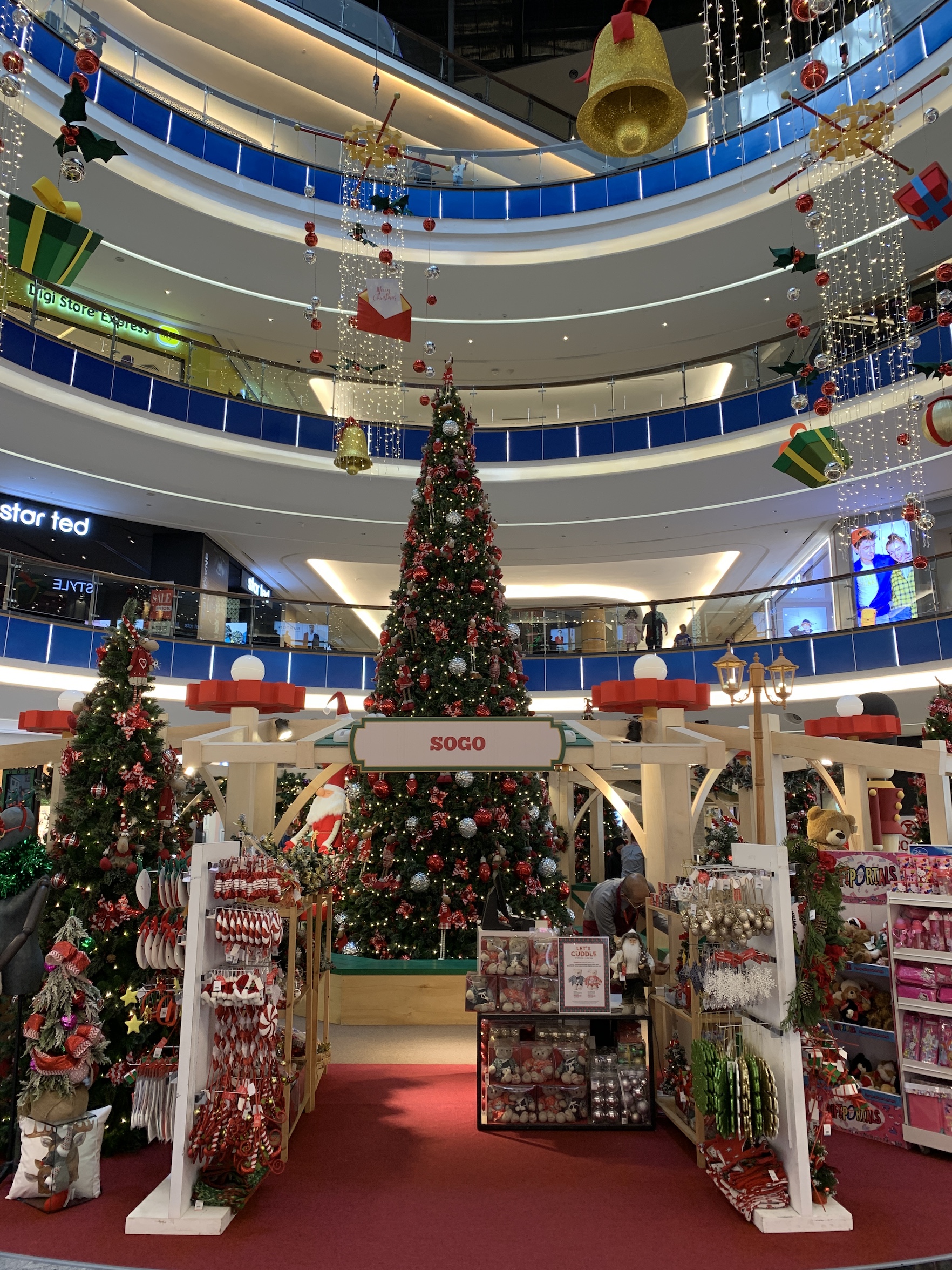
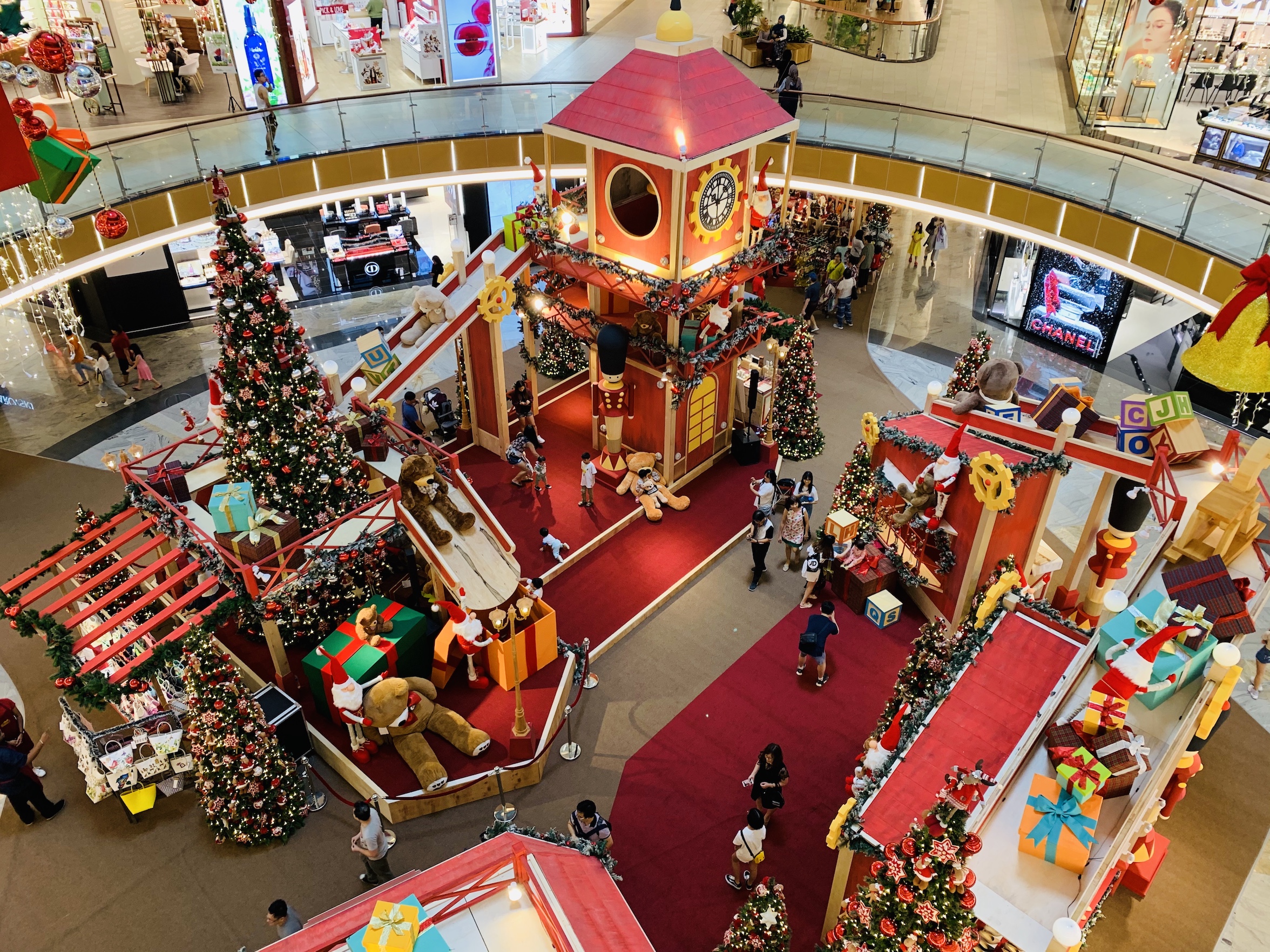
On our return to the marina and chatting to the “Grab” driver, we learnt that the little cars used mostly by this service are 1000cc locally manufactured cars, which accounts for this service being so reasonably priced. In fact, for the convenience of being picked up and dropped off at one’s exact location, minimising the walking, heaven for Elaine, it cost less than 50% of what a bus or light-rail ticket cost us in Australia. Even though the marina had a car we could hire, we simply could not beat this cost and service!
Back on Paw Paw, though, we had to continue with the tasks we’d started the day before and they continued on to the following day as well; scrubbing the decks, cockpit, cockpit cushions and clearing out. We couldn’t believe just how dirty Paw Paw was and we seemed to have accumulated an inordinate amount of paperwork between Australia and Indonesia. Paw Paw was getting lighter with each passing minute.
Of course, the main event on Saturday, 2nd November 2019 was the Rugby World Cup final between the Springboks and England. It’s fair to say we were definitely outnumbered by the English expatriates who turned up to watch the match at The Bierhaus, but that didn’t deter us. Well done Springboks on becoming the new world champions; what a terrific game!
On Sunday, 3rd November 2019, although we enjoyed a lazy Sunday morning, sleeping in until nearly 0900, which is unheard of, we had a rather busy day otherwise. Our sleep-in, however, was a result of staying up late the previous night so that we could sing Happy Birthday to our two little men, Brayden and Carter, who turned three. Needless to say, they were both very excited and looking forward to their birthday present; a day at the Phoenix Zoo. When we called again that morning to see how they’d enjoyed their day, Carter was passed out in his car seat and Brayden was definitely struggling to stay awake to tell us all about it.
After a light breakfast we both got stuck in to our ongoing To Dos; Roy gave the entire cockpit area a detailed clean, while Elaine completed all the documentation required for her upcoming appointments, including completing the detailed questionnaires and collating all her medical records. By then it was lunchtime, so we took a wander along the waterfront back to My Liberica café for another delicious lunch. It’s fair to say this café was fast becoming a favourite and we took the opportunity again to try something new to accompany our smoked duck croissants; iced orange tea for Roy and a pomelo juice for Elaine.
Research later revealed that the pomelo is the largest citrus fruit from the family, Rutaceae. Native to South and SE Asia, it is similar in appearance to a large grapefruit and is one of the original natural citrus species from which cultivated citrus have been hybridised. An entire pomelo is a decent source of protein, providing 4.6 grams, as well as an excellent source of Vitamin C, providing a whopping 620% of the daily recommended need and it provides small amounts of thiamin, riboflavin, niacin, and vitamin B6. It also has an impressive list of health benefits, including its ability to boost the immune system, improve digestion, lower blood pressure, and reduce cramping and is believed to help reduce signs of premature ageing, aid in weight loss and boost oral and dental health. These too became a favourite!
On our return to Paw Paw, we returned a semblance of order to the cockpit since everything had dried, but we’d no sooner finished when we had a visitor from one of the yachts opposite us in the marina; an Australian, living in Vietnam, but had worked in Singapore for many years and leaves his yacht in Senibong Cove marina. He was interested in purchasing a catamaran and asked if he could look around Paw Paw. In exchange we acquired a host of very useful information, including various yacht services, chandleries, duty-free zones, etc, given that he had also sailed on both sides of Peninsula Malaysian. We have to say, everyone we had met since our arrival in Malaysia had been extremely helpful. So refreshing! Afterwards, while Roy prepared dinner, Elaine sorted out and refiled the myriad of paper charts we’d used since leaving Port Macquarie, Australia, especially those from Mackay northwards and dug out the ones we needed for our departure from Senibong Cove marina, which wasn’t to be until early in the new year. With that another hot, sticky day on the equator came to a close, although slightly cooler than what we’d had since our arrival.
By Monday, 4th November 2019, we still had a host of chores to get through; getting the laundry done for Elaine and meeting Mr Chew from Intact Water for Roy, the latter being far more important as it meant we’d have our step-down transformer in a few days so we could run our air-conditioners without running the generator, which we were having to do every evening in order to cool down the interior so we could at least sleep at night. It’s not too often that we’ve had to run our air-conditioners over the years, but in the heat and humidity at the equator, we most definitely needed them and, like every other day since our arrival in Malaysia, it was another hot, sunny and breezy day, which ensured the first load of washing was dry before Elaine could even complete the other loads. Fortunately everything was dry by the time the afternoon thunderstorms arrived on schedule. Although there was a lot of noise as well as lightening with these storms and it meant running around closing hatches and putting our electronic equipment into the oven, they cooled everything down, so we didn’t complain. However, once we had the air-conditioners running off shore power, we at least eliminated the constant opening and closing of hatches.
By this time, though, we were eventually feeling organised again having got a number of our To Dos completed, especially all of the urgent ones and we had updated lists for the remainder. Now it was a case of sitting back and enjoying our explorations of Singapore and the Johor Bahru area of Malaysia, while completing our remaining tasks / yacht projects at our leisure. As a result, the following three days were a mishmash of activities, while trying to stay cool, but becoming more desperate with each passing day while we awaited the manufacturing of our step-down transformer. The transformer was, however, expected to be completed the afternoon of Thursday, 7th November 2019 and ready for pickup the following day.
Of course, as luck would have it, the only reason we were reluctant to run the air-conditioners all day on the generator, while we awaited the arrival of the transformer, was due to our little incident we had in Marina del Ray, Indonesia, where we thought we had a fire onboard, but, after a few frantic moments, discovered our generator’s one lift pump had essentially melted and we didn’t have a spare. As a temporary solution, we were operating the generator, having “robbed Peter to pay Paul”, by removing the lift pump from our watermaker. To add insult to injury the replacement lift pump, which we had ordered a few weeks prior, was sitting in Johor Bahru awaiting customs clearance.
On the Tuesday we decided to visit the nearest Tesco store, but after being very disappointed, we opted to return to the Mid Valley Southkey mall where, not only did we have the pleasure of spending the rest of the morning in an air-conditioned environment, but we also did some early Christmas shopping, as well as get a few everyday cotton clothing items from Marks & Spencer for Elaine, including new blouses, shorts, t-shirts, pyjamas and underwear. We also stopped at the Village Grocer for fresh produce and, as per our first visit, we were completely amazed at the variety of countries supplying this store. The fruit alone that we purchased included a pomelo and a watermelon from Malaysia, sweet plums from Turkey, a pawpaw and a pineapple from Thailand, a few mangoes from Indonesia, a bunch of bananas from the Philippines, a few oranges from Australia and a number of apples from New Zealand and South Africa. Our final stop, on our way out, was to pick up some freshly prepared sushi for lunch.
Then on Wednesday, 6th November 2019, the tone for the day and indeed our stay in Senibong Cove, was set by an early morning phone call from the Social Security office; Roy had to return to the US to present himself with various pieces of original documentation in order for the department to process his claim, sighting that there was a discrepancy on their records that he’d given his place of birth as Saudi Arabia instead of South Africa; pull the other leg, there’s bells on it! We were, however, not expecting this to be a simple process, so the day was spent arranging flights, accommodation, etc. What a pain! It was costing as much to pay for this trip as what he’d receive as his first retiree monthly payment.
Having also wanted to re-gas our freezer, that task had to be set aside, unfortunately. Not because of the other priority of sorting out travel arrangements, but because our spare R34A container had rusted to the point that all the gas had leaked out. Who would have thought! As a result, we had yet one more thing to source. That discovery, however, prompted another activity to be added to our laundry list of To Dos; take a look through all our parts and spares to make sure those are still in working order before Roy left for the US so that he could bring back replacements along with the other items we already knew we needed. The usual packhorse drill whenever one of us returned to the US!
On Thursday, 7th November 2019, after arrangements were made with the marina office manager, Roy was ably assisted by the gardener, who usually spent most of his day scooping out garbage that floated down into the marina from the Johor Strait, but doubled up as a driver on this day to cart Roy around various electrical wholesalers. Once everything was procured, Roy then spent the afternoon connecting all the plugs and cables needed for the connectivity between our shore power leads and the step-down transformer and from the transformer to the electricity supply box on the dock.
Elaine had passed her days reviewing all the notes she’d previously made on possible options for our Indian Ocean crossing, which she’d first made while being incapacitated in New Zealand after tearing the ligaments in her right ankle. Once that was completed, she set about adding to those notes from our latest Indian Ocean cruising guides we’d purchased in Australia together with information we were receiving from other cruisers who had already completed their crossing or who would be starting it in early 2020. Little did we know at the time about what awaited the world in 2020! She also eventually got back to continuing her review of the more immediate need; our cruising guides for Malaysia and, to take a break from all the reading, she removed all the jacklines, barberhaulers and two transom lifelines to wash, dry, service and stow, since we wouldn’t be needing them anytime soon. It was fair to say, though, that, by now, as per our previous landlubber life during the Arizona summers, we were delighted when the sun eventually set, especially when it didn’t the rain to lower the temperatures!
Friday, 8th November 2019, was the day we’d been waiting for; we received the notification that our step-down transformer was ready for collection. With that Roy “downed tools” and headed for Mr Chew’s shop and was pleasantly surprised to find a product that was, not only robust, but had been well manufactured in the relatively short timeframe of a few days. Once back on the dock and, while sweating profusely in the heat and humidity, he made a few modification required to connect our cables directly to the transformer, carried out a few tests to ensure the electricity supply was as expected and then connected our shore power cables. Voila, we had a 110V power supply to run our air-conditioners, at last. What a relief! Of course, as predicted, the Fedex package containing our emergency spares, in particular, the generator lift pump, which would have allowed us to run the air-conditioners off the generator sooner, got delivered that evening, a number of hours after we’d cooled Paw Paw down to a comfortable temperature with shore power, allowing the air-conditioners to then simply cycle. At least Roy had his new glasses, though, and we had some smaller, lighter spare parts we needed for a few other repairs that would avoid some minor inconveniences if left unattended. This would at least tide us over until Roy brought back the rest of our spares on his return from the US.
While Roy had slaved away to create a comfortable living environment for our time at the equator, Elaine updated her medication supply list in preparation for her upcoming appointments, as well as continued her research into things to do while cruising through Malaysia. With the air-conditioners running, we both enjoyed a good night’s sleep in preparation for our early departure the following morning; our first trip to Singapore, a day trip as a trial run before our second and more important visit later in the month. This second visit to Singapore was an event we had anxiously awaited as it was the very reason we had sailed to this part of the world after leaving Bali. It was to become one of a number of trips and the subsequent treatment plan established by the rheumatologist at the Mount Elizabeth Hospital essentially segmented our time in Senibong Cove marina and the Johor Bahru area into fortnightly intervals, with further segmentation by Roy’s visit to the US to sort out his social security payments and to see Keenan, Brooke and the grandchildren, as well as by the Christmas and New Year celebrations, the latter of which we never expected to share in this predominantly muslim country, but the surprise thereof awaited us. Regardless, we used our time wisely and thoroughly enjoyed our time in Singapore and Johor Bahru.
Our days were spent undertaking various yacht activities and projects, combined with a bit of touring, which included trawling all the fabulous malls in Johor Bahru, undertaking some fun outings in both Johor Bahru and Singapore and sampling the local cuisine at the abundance of fabulous restaurants, as well as preparing for and enjoying the “holiday season”.
Besides enjoying morning coffees and a baked delight, an ice-cream, a liquid refreshment or lunch at either My Liberica café or the Vanilla Bean café, dinners were enjoyed on the waterfront of the Senibong Cove marina at the Chinese restaurant, Delicious 8 Seafood or The Bierhaus restaurant or the newly opened Thai restaurant, Changi. With temperatures cooling down significantly most evenings after the afternoon thunderstorms, we topped off many of our days enjoying a sundowner on a patio of our choosing.
Over the weeks following our arrival we noticed a few more yachts occupied and their cruisers milling around, many of whom had arrived back while Roy was away in the US. It was, however, difficult to meet any of them initially. With the intense heat and humidity, everyone, like ourselves, was staying in their air-conditioned quarters and, if they didn’t happen to have one, we assumed they had found the nearest café to sit and pass their day. Roy, however, found the time to be the usual social butterfly, introducing himself and chatting first to one of the cruisers who had recently returned to their yacht. This turned out to be Michele and Midge of Fourstar, which then afforded us the privilege of meeting a few more cruisers through them and provided the opportunity for a number of social outings. Those that Roy didn’t meet on his rounds came over to introduce themselves to him and enjoy a chat, all of which gave us the opportunity to met and socialise with an entirely new group of cruisers. We also had another visit from the Australian off Chiara Stella, who popped over with the sole purpose of giving us information and advise on touring Vietnam and Cambodia, specifically accommodating Elaine’s health situation. It was wonderful to receive the information firsthand and we both very much appreciated the time he took to go over everything with us. We weren’t to know at the time, though, that a visit to these countries would not be in our future; not during 2020 anyway!
As the weeks passed, social events included drinks and lots of laughter in the company of Fourstar and Peter off Shadow at “George’s” bar or drinks onboard Paw Paw or a neighbours yacht or drinks followed by dinner at one of the restaurants. A favourite, however, became the Changi Thai restaurant, where we also enjoyed a farewell dinner with Michele and Midge as they departed for Europe after decommissioning their yacht to sell and we departed for the west coast of the Peninsula Malaysia.
In keeping with the Christmas festivities, a potluck barbecue was also arranged by the marina office, where it was lovely to meet those in the marina we hadn’t met by then and, although hot, fortunately the event wasn’t washed out by rain or another ghastly thunderstorm. In fact, Roy had such a good time enjoying some male company, Elaine left him at the barbecue after most of the other ladies had said their goodnights too.
Our rounds of the malls included multiple visits to our favourite, the Mid Valley Southkey mall, but on the overcast, rainy days we took the opportunity to visit the other malls around Johor Bahru and there were definitely plenty to choose from. Having already visited the City Square mall, we decided, in a moment of madness to join the throngs of people for the opening of the newest mega-mall, Toppen. Similarly to our reaction at visiting the City Square mall, though, we weren’t overly impressed with the Toppen mall either, but we were pleasantly surprised to find an Ikea and took the opportunity to replenish a number of household and kitchenware items that were in desperate need of replacement on Paw Paw.
Regardless of previous disappointments, though, we weren’t giving up. So, the KSL mall was also added to the list, with the primary purpose of visiting the Tesco Hypermarket, given our disappointing visit to the Tesco Extra store a week earlier. A massive mall compared to City Square, we had no idea what: “a very eclectic mix of tenants including lots of Miniso-type barang barang shops” meant. It didn’t take us long, though, to discover exactly what the online description of this mall portrayed. In fact, a better description would certainly have been “enormous indoor bazaar”. There were shops and stalls as far as the eye could see and far too busy and chaotic for us, not to mention, the Tesco being just as disappointing as the previous one. With that our visits to any more Tesco stores was halted and, with only the Paradigm mall left to visit, we concluded that we had actually found the best mall first. Described as an upmarket, high-end mall, Mid Valley Southkey is definitely catering to a different demographic, but still vastly less expensive than Singapore or the US.
So, within minutes of our arrival at the KSL mall, we’d arranged another Grab to return to our favourite one; one that made us feel just a little bit more “at home” and not so far removed from loved ones in a strange country, where we enjoyed all the newly erected Christmas decorations and listened to Christmas music, enjoyed a coffee, browsed around the Japanese department store, Sogo and completed our Christmas goodies shopping at Marks & Spencer (before everything was sold out); cranberry and orange cookies, pistachio and almond cookies, mini Christmas Tree shortbread cookies, milk chocolate brazil nuts, after dinner peppermint creams, mulled fruit infusion teabags to spice up some red wine, cranberry sauce, mince pies (for Roy), matured alcohol-infused Christmas pudding (for Roy), chocolate sponge pudding (for Elaine) and Christmas crackers. All we needed was the turkey and vegetables which we’d planned on getting from the Village Grocer once Roy returned from the US in mid December. It was not going to be a Christmas with loved ones, but it was going to be a traditional Christmas regardless! Who would have thought this would even be possible in a country like Malaysia! There was, however, just one small problem with this early Christmas shopping of delights; Elaine had yet to see the naturopathic physician in Singapore and as things transpired, all these goodies were removed from her new diet. There was, however, one item she was prepared to take a chance with!
On one gloriously sunny morning in mid November 2019, we decided an outing to the Malay Cultural Village would be a more enjoyable way to spend our day rather than staying onboard. Unfortunately, after two separate Grab rides, we couldn’t find the venue as advertised, concluding that Google Maps had the wrong address and decided, instead, to enjoy the Tan Hiok Nee walk through the Heritage District in downtown Johor Bahru, a quaint old gem of the city with trendy historical venues and traditional houses, popular for its ice cream and toast and where locals prefer their food cooked in the traditional manner on open fires and wood-fired ovens.
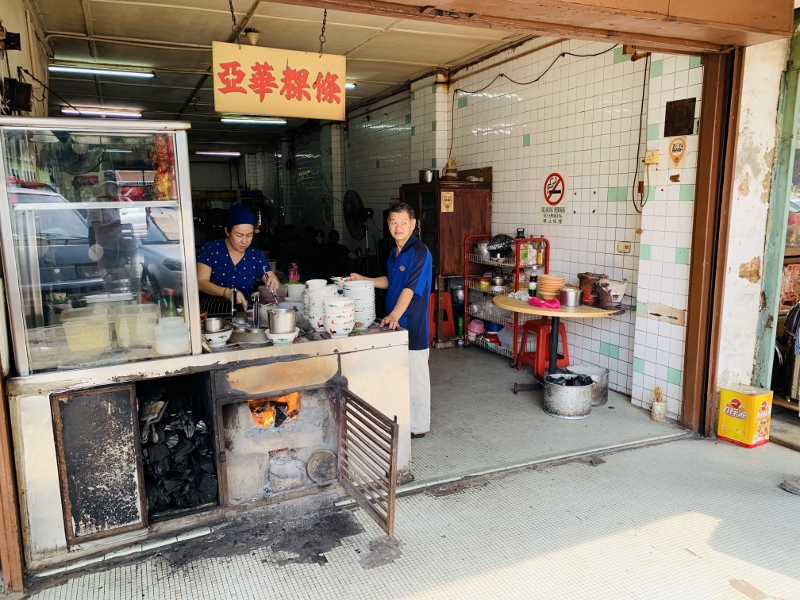
The southern state of Malaysia played a major role in the maritime silk trade during the 14th century and subsequently became a settlement for Malay fishermen and Chinese immigrants. Jalan Tan Hiok Nee is named after a Chinese cloth peddler in the 19th century who grew into an influential figure, creating ties with the royalty and becoming the wealthiest man in Johor.
Our walk started at the Chinese Heritage Museum where the stories and details of the early Chinese immigrants are documented by the association, following which we enjoyed a morning tea at one of the little sidewalk cafés. From there we went in search of the Old Temple Of Johor Bahru to hear the bells, but en route, stumbled across the venue of the Bazaar Karat Night Market and Little India, in particular, the beautiful Arulmigu Rajamariamman Devasthanam, one of the oldest Hindu temples in Johor, over a hundred years old. Originally built in December 1911, the temple was first known as the Mariamman Temple but the word “Raja”, which means “King”, was added in appreciation to the then Sultan of Johor, Sultan Ibrahim who donated an acre of land and RM500 to the founder, Mr. Kootha Perumal Vandayar. It is based on the Dravidian architecture of Southern India, with beautiful Hindu art and carvings on some of the walls, while the main pyramid tower, called the Gopuram, is painted in light pastel tones with the intricately detailed and colourful deities, derived from the Hindu mythology, surrounding each of the five tiers, all of which gleamed under the bright sun. It was simply stunning!
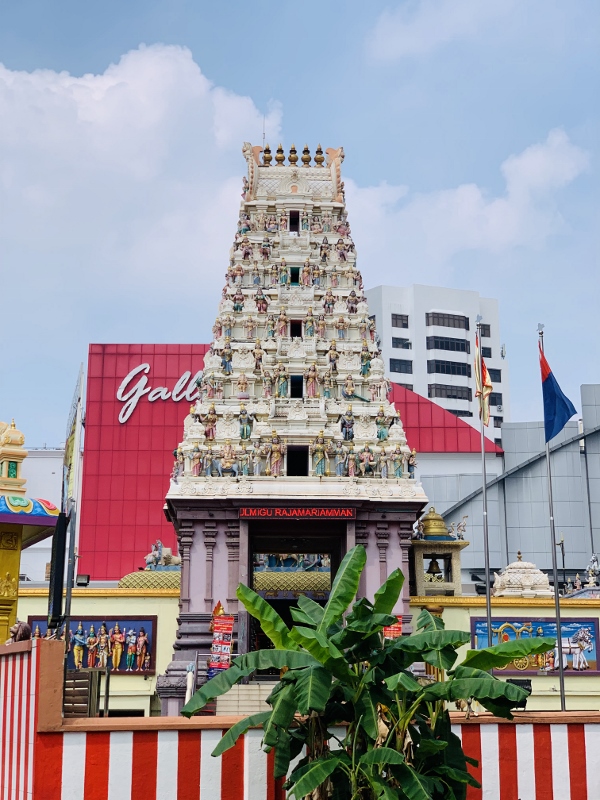
From there our walk took us through a complex web of roads, side streets and corridors until we eventually found the Old Chinese Temple, camouflaged by the modern skyscrapers surrounding it. This temple is one of the oldest structures in the city of Johor Bahru and became the symbol of unity amongst the five Chinese ethnic groups of the Teochew, Hokkien, Cantonese, Hakka and Hainanese people. The temple’s history dates back to between 1870 and 1880 in the 19th century and was founded by the then Head of Ngee Heng Company, led by Tan Hiok Nee. Renovation to the temple completed in December 1995, with much of its cultural design being preserved, including the century old artefacts of the bronze bell, the plaque, the incense burner and the wooden tablet. The main alcove of the temple holds the image of the main deity, Yuan Tian Shang Di, with the other four deities placed to the sides; Hong Xian Da Di, Gan Tian Da Di, Hua Guang Da Di, Zhao Da Yuan Shuai, each worshipped separately by the five ethnic groups. Every year in the first lunar month, the temple organises its annual four day “Chingay”, known as the "Parade of Deities", attracting more than 300,000 people who march around the major streets of the city. We had no idea that, prior to the cultural renewal of the neighbourhood, this side of town was a religious hub and holy gathering place for devotees of different beliefs, including the Gurdwara Sahib which served the Sikh community as well.
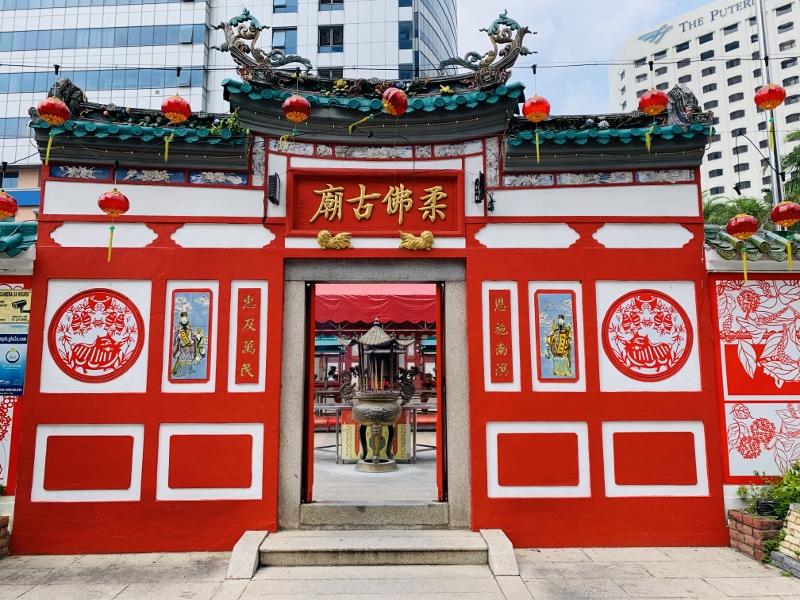
It was a fascinating morning, topped off with views of the magnificent Bangunan Sultan Ibrahim (the Sultan Ibrahim Building) and the former state secretariat building of Johor. Designed by the renowned British architecture firm, Palmer and Turner, the building was constructed between 1936 and 1939 and completed in 1940, following which it was officially opened by the late Sultan Ibrahim of Johor, as the British colonial government attempted to streamline the state's administration. The building's architecture combines colonial and Malay architecture and is a prominent landmark in Johor Bahru, with its Saracenic design and tower, a revival architectural style mostly used by British architects in India in the later 19th century, especially in public and government buildings.
After a morning of unexpected historical treasures, our day of culture was topped off with a home-cooked Chinese “hot pot”, complements of Roy, who was dying to try his hand at cooking some Malaysian Chinese cuisine. Delicious! There were a few more culinary dishes Chez Roy tried his hand at, including a Malaysian Chinese prawn dish, which, of course, was delicious. Unbeknownst to us at the time, it was, however, the last time Elaine could eat prawns!
While we enjoyed our various outings, aside from the usual daily and weekly chores, we also had the gruel of getting through the To Do List associated with the yacht projects and tasks, which was actually a laundry list as long as our arms after several months of constantly being on the go up the eastern coast of Australia and through Indonesia, but not before completing the process of getting Paw Paw’s decks scrubbed and topsides cleaned and polished after four months of caked on Indonesian grime from the soot and streaky stains everywhere from the acid rain, as well as washing both engines. Unfortunately rain interrupted play a few times, but, in most cases, assisted the efforts. Elaine, on the other hand, left the detailed cleaning of Paw Paw’s interior until Roy had departed for the US, given all the other activities that were underway at the time.
There was, of course, also the “annual moaning session”, as Roy struggled through various websites to order all our new parts and spares so that these could be delivered to Keenan’s address ahead of Roy’s arrival in the US. Being an ex-IT professional, not only do the bug-ridden website applications annoy him, but the ridiculous prices and shipping costs have him surfing for hours to find the correct part, at the right price, without being totally ripped off on the shipping costs, where, in some instances, the shipping costs are quadruple that of what the item actually costs to purchase.
Elaine, of course, heard “all about it” as this annual event progressed throughout the day of Sunday, 10th November 2019, and thanked her lucky stars she could pass her time doing less frustrating activities like configuring her new Apple watch purchased in Singapore and enjoying a surprise phone call from Maria and Maurice off Cattiva, who had just arrived at Nongsa Point Marina, Indonesia, after losing their anchor and chain a few days before and whom we’d hoped to see in Singapore.
That said, however, our laundry list of yacht tasks included:
- Installing the new generator lift pump.
- Installing the new raw water pump on the generator. Of course, nothing is ever simple on a yacht and when Roy eventually managed to remove the old pump, he discovered that there was a gear at the end of it which needed to be removed and reinstalled on the new one, needing specialised equipment to do so; a gear puller and a press to assemble the gear on the new pump. Fortunately the marina manager was able to point Roy in the right direction; to an engineering area not far from the marina and Midge off Fourstar offered to drive Roy there. Within an hour they were back with the new pump assembled and ready for installation. Thank goodness! By late that afternoon the generator was up and running again, following which some time was spent cleaning it and the locker, as the broken pump had deposited saltwater everywhere.
- Cleaning out the heat exchanger on the starboard engine.
- Installing the new AC Voltmeter.
- Installing the new shower drain switch in the starboard forward head (aka bathroom).
- Fixing our ever-present leak in the dinghy again, acquired in Martinique years earlier. That task, however, required the dinghy to be prepared which involved removing and stowing all the diesel jerry cans, emptying our spare petrol jerry cans into the main dinghy fuel tank, cleaning and replacing all the dinghy equipment we’d removed in Indonesia so as to prevent the items from being stolen and taking the opportunity to recharge the emergency VHF radio housed in the dinghy.
- Fixing the bow navigation lights.
- Replacing or repairing and cleaning the port aft cabin fan, one of the saloon fans and both cabin fans on the starboard side.
- Repairing the galley stove, especially since one of the smaller burners had hardly produced a flame for some time and the igniter only worked intermittently, both requiring spares which Roy brought back with him from the US, but also because the main, larger burner decided to stop functioning right in the middle of Elaine cooking our Christmas dinner. Fortunately our electric frying pan came to the rescue on that occasion, but, nonetheless, repairs were needed sooner rather than later.
- Replacing the hatch blind and mosquito net in the starboard aft head (aka bathroom). There was just one small problem which developed here too, resulting in a much larger solution being required; the new replacement contraption was a different size and design. After hours of trying to use some of the fittings on the new contraption to try and replace the broken bits on the old one, Roy gave up. Plan C; try repair the old broken bits. With that out came some additional tools and Elaine’s sewing machine. With the mosquito net section repaired, the blind section cleaned and the rollers “unstuck”, the old contraption was as good as new
- Sewing new jacklines for the coach roof and the trampoline area and making new bridle covers, as all of the existing items had simply disintegrated. Fortunately Roy was able to bring back some Sunbrella with him from the US for the covers, so hopefully the new ones will last a lot longer than the ones Elaine made in Port Macquarie, Australia and he also managed to source and bring back the better quality webbing for the jacklines, although they’re bright red. Guess he won’t have trouble seeing them when he has to leave the cockpit while we’re underway.
A few maintenance tasks included topping up the battery water, adding a cleaning agent to the holding tanks, checking the engine oil and saildrive oil on both engines and greasing various bit and bobs around the yacht, including the fridge and freezer door latches, the spray pullout on the galley tap, the windlass and the saloon sliding doors, the latter so light and easy to open now it feels like it did when we first bought Paw Paw new; amazing the things we inadvertently continue to struggle with on a yacht because we’re too focused on sailing and getting to the next destination safely.
With the allure of our cool abode, we definitely didn’t undertaken much in the way of outdoor physical activities, but to take a break from all the chores and yacht projects, Roy enjoyed early morning walks, then accompanied Elaine on occasion for her evening walks. On one particular occasion Elaine, decided to join Roy on his early morning walk, without having had breakfast and without having taken her medication, but, given that the temperatures were cooler at that time of the day, she wanted some exercise, so she gave it a whirl. Unfortunately it wasn’t her best idea, but she enjoyed the meander through the gardens, nonetheless, while leaving Roy to finish his walk. With that, Elaine stuck to her morning gentle stretch exercises in the cockpit versus the foredeck in order to stay out of the sun. Not having a swimming pool or a beach to swim off was definitely a downside to being in this part of Malaysia. We subsequently learnt, though, that there were very few places in Malaysia that actually provided the opportunity to swim.
Other indoor activities included finishing off and uploading our Bali video, following Elaine’s usual critique, which always takes a little longer than planned. We had hoped to complete the overall Indonesian video, but as yet that is still outstanding. We’ll get to it eventually! In a similar vein, Roy spent time helping Elaine get all our photographs, taken since Cooktown, Australia, loaded to her laptop so that she could begin the laborious process of cataloguing them all and getting them uploaded to the gallery. Clearly, we were a little behind on these activities!
Roy also found the time between yacht projects and maintenance to work on the final part of his “mystery” project, However, when the project manager learnt that the developer had been wasting time adding unapproved functionality that had previously been decided it would be omitted, a good scolding was required to put things back on track, ensuring the project was ready to be unwrapped just in time for Christmas!
Elaine also returned to her writing, eventually getting her website articles for Indonesia and Singapore completed, as well as continuing her meditation sessions, but setting aside some fun to enjoy with Brooke and the grandsons while Keenan was at work, was always a treat. On one particular occasion, while Brayden was happy to blow Grandma his usual kisses and tell her all about his “Power Ranger” show he was watching on his iPad, William had plenty to tell and show Grandma too. First off he was delighted to tell Grandma, with a huge smile on his face: “I’m no longer a picky eater”, then showed her his Christmas List which he’d made at school for Santa as well as his handwriting he was practising. Then, on mom’s prompting, he sang his “snowman” song; part of his Christmas concert and making sure Grandma got to see all the actions that accompanied the song. Just the cutest! Brooke had sent us the video of the actual performance ahead of time, but William was delighted, nonetheless, to repeat it all for Grandma. However, it was Carter’s little face and his words: “All I want for Christmas is Grandma!” which, of course, completely melted Elaine’s heart into a puddle. It was, of course, these kinds of moments that made her decision not to return to the US with Roy in December, so much more difficult to bear.
On Tuesday, 12th November, though, we woke to Paw Paw and every other yacht in the marina rocking around and pulling on every dockline in a rather bizarre fashion. A few minutes later we realised what it was; an earthquake that had just occurred at 0741 in Halmahera Island, Indonesia, the largest island in the Maluku Islands and part of the North Maluku province. It was almost on the same latitude as ours at the time, but further east. With a magnitude of 5.9 on the Richter Scale and only 109 Km / 68 miles deep, it wasn’t surprising to have felt the remnants and an aftershock a little while later.
With the exception of our time in Australia, we’d spent an inordinate amount of time in the “Ring of Fire”, a major horseshoe-shaped area in the Pacific Ocean basin, known for its many earthquakes and volcanic eruptions brought about by plate tectonics; the movement and collisions of lithospheric plates and where the western section is more complex as a result of a number of smaller tectonic plates in collision with the Pacific Plate from the Mariana Islands, Bougainville, the Philippines, Tonga and New Zealand. With more than 450 (75%) of the world's active and dormant volcanoes and roughly 90% of the world's earthquakes occurring along this ring, it’s not surprising we were experiencing the aftermath of yet another earthquake. However, unlike Indonesia, where we spent four months sailing past or anchoring off numerous active volcanoes, fortunately, Malaysia only had one, Bombalai, located in northeast Borneo close to the border with Indonesia.
A few days later, on Friday, 15th November 2019, we woke to Paw Paw shaking and vibrating bizarrely again, only to discover there was yet another earthquake. This time 134 Km / 83 miles northwest of Ternate, part of the Moluccas in Indonesia and due east of our location. Measuring 7.4 on the Richter Scale and only 63 Km / 39 miles deep, it was associated with a tsunami warning, which was later cancelled, thankfully.
Setting earthquakes and volcanoes aside, with feeling the effects of her ineffective medications which Elaine was taking prior to seeing the rheumatologist in Singapore, particularly the “foggy brain” aspects and feeling like she was away with the fairies most days, Elaine spent her time either being gofer to Roy as needed, continuing to read our Singapore and Malaysia cruising guides, completing the final online shopping for delivery to the US in preparation for Roy’s trip and catching up with the family and friends. It was, however, Roy’s comment, whether exasperated by Elaine’s lack of proficiency in trying to complete the online shopping, something she rarely does, or having spent his day out in the heat doing yacht chores and projects, that had her in stitches: “Jeez like Elaine, you may as well put a flower in your hair and pom-poms on your slippers”. Regardless, it aptly described the break Elaine was enjoying from all the sailing of the past year.
We weren’t that far removed from reality, though, as news of the fires in Australia, particularly those threatening one of our favourite places and where we enjoyed our break from sailing last year, Port Macquarie, was splashed all over the news. Our thoughts were with all those folks battling the numerous blazes around New South Wales and Queensland, as well as those who had already lost their homes and livelihoods.
By mid November, while Roy undertook his early morning exercise walk, Elaine prepared breakfast using some of our treats we’d bought from Marks & Spencer a few days prior and we then spent the rest of the day pottering around, feeling rather pleased with ourselves that everything seemed under control and that we’d have a fairly relaxed week in the run up to our week in Singapore, our second trip across “the Causeway” and Roy’s return to the US. We’d even hoped to take another day trip to Singapore to meet up with Maria and Maurice off Cattiva, who had just arrived in Singapore.
So, while Elaine decked Paw Paw’s halls to get us in the Christmas mood, although a little early, Roy got the marina office to make copies of all our Malaysian customs and immigration documentation so that we had a copy onboard when Roy took the originals with him to the US; needed for his return flight. Then, all of a sudden there was a strange silence; no air-conditioners running. No power? Thinking the shore power had tripped, further investigation revealed that the plugs on one of our shore power cables had essentially “blown up”. That meant our nice quiet week changed in an instance as we scurried around for new plugs and Roy investigated the possibility of re-wiring our control panel to split the air-conditioners differently, specifically splitting the two we were using to run off separate shore power cables. Oh the joys of a configured yacht in a 220V world.
This also meant that we missed seeing Cattiva by a few days; not the first time, but a tad disappointing, nonetheless, because we really didn’t get to spend much time with any of our cruising friends while in Indonesia and most had by now either left their yachts in Malaysia or Singapore and returned home or were sailing further north to the Langkawi archipelago in northern Malaysia to leave their yachts and return home or were sailing on to Thailand for Christmas and New Year. Such is the nature of our vagabond lifestyle, making it rather lonely at times!
After this slight mishap the following days were spent scurrying around for the bits and bobs needed to make the repairs. Of course, in the world of yachting, this usually becomes the hunt for the proverbial “needle in a haystack” and this occasion was no exception. We decided to start at what we thought would be the most logical place; the Paradigm Mall, which houses a store called HomePro, touted online to be Malaysia’s version of the Home Depot. Having lived in the US for years we were very familiar with the Home Depot stores and decided it would be the perfect place to find two new 32A plugs. Well, you guessed it; HomePro was nothing like a Home Depot. It was, however, the perfect store for home furnishings with a small section for DIY projects. Alas, we didn’t find what we needed, but we didn’t leave empty handed either. We managed to procure a few smaller items like drill bits, contact adhesive, lugs, etc, that Roy thought he would have to bring back with him from the US.
Giving up on our search, but since we were already at an enormous mall, spanning eight floors, we decided to have a wander around and possibly find some new clothes for Roy. While we were successful with t-shirts, new shoes were definitely out of the question; his feet are too big for the largest size stocked in every shoe store we went into; not surprising, though, when you consider the part of the world we were in!
However, our wanderings revealed the largest variety of stores we’d ever seen in a single mall, besides what you’d usually expect to find in the way of department stores, fashion, makeup, jewellery, books, toys, hobbies, gifts, pharmacies, optical care, hairdressers, nail salons, restaurants and cafés, and, in some instances, grocery stores, banks, movies and children’s arcades.
Well, we walked nearly 6 Km /3.7 miles and only explored one half of each floor, discovering large stores catering to a particular need; a store crammed full of the every conceivable artificial flower or plant you could think of, including all the trimmings needed to create a masterpiece; a store filled, floor to ceiling, with racks of soft toys of every type or character you could think of, a store selling clothing embossed with motives of every cartoon action-man character created, furniture stores, fitness centres, a herbal farmers store, wellness and well-being centres, a pet lovers centre, a language centre, spas, beauty academies, massage pallors, lazar and botox centres and to top it all, an ice rink. It is understandable why this mall is the all time favourite for Singaporeans who come across the Tuas Second Link bridge to do their shopping here, apparently at a third of the price of what they’d pay in Singapore and everything you could possibly want is under one roof!
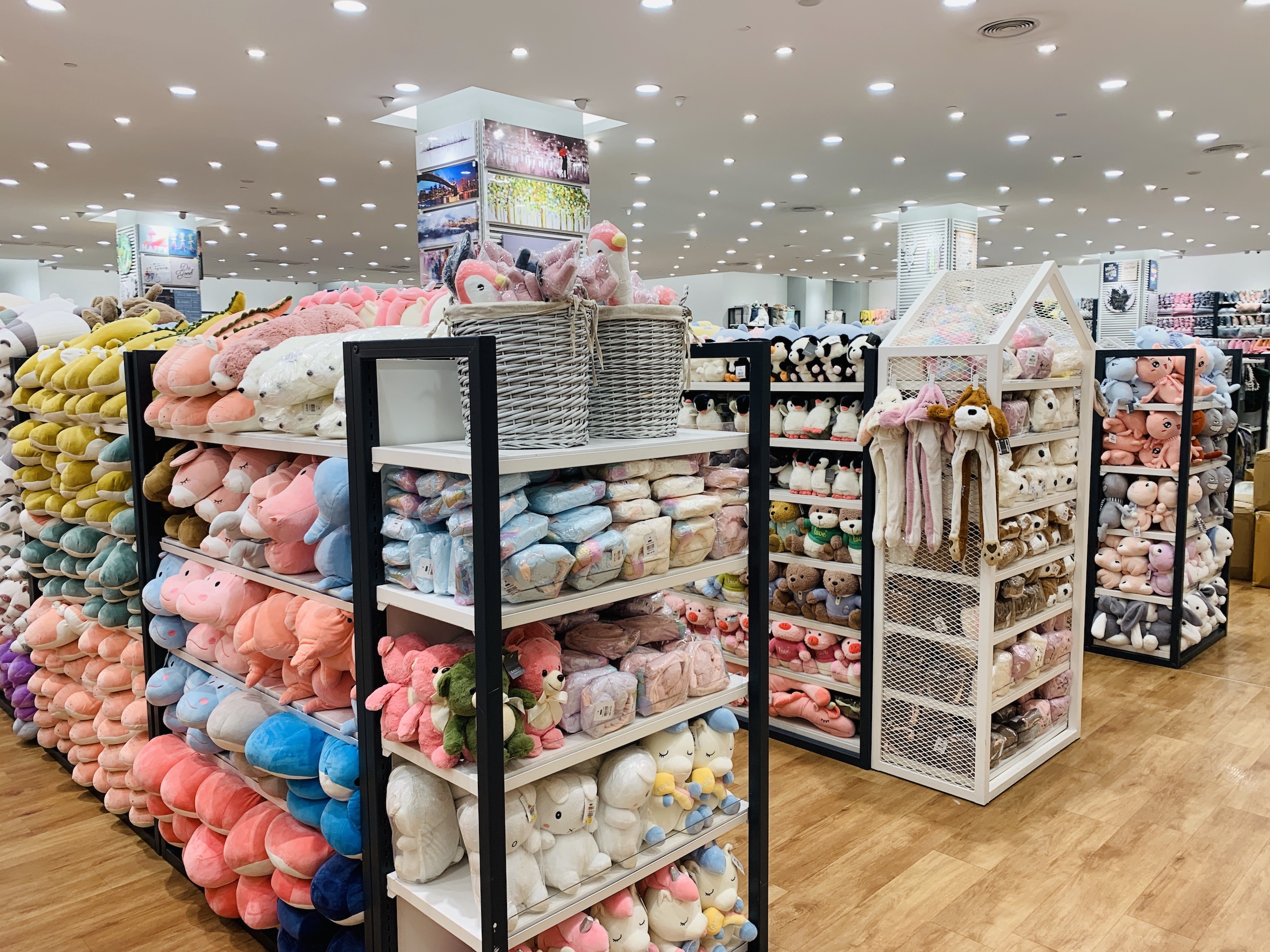
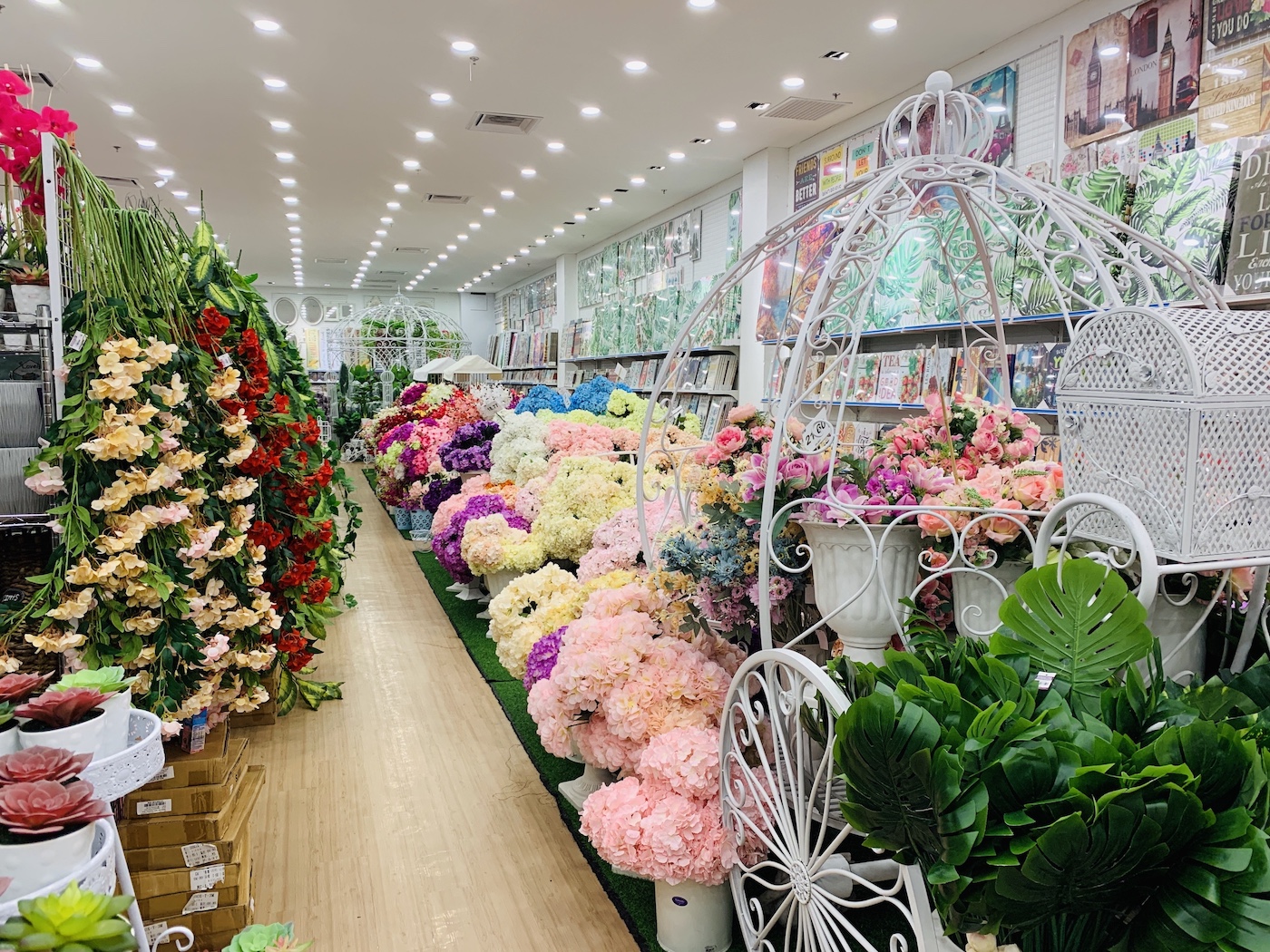
It was during lunch, though, that we giggled about the bizarre nature of our life at times. Here we were, miles from anyone we know, eating some or other Chinese dish that we had no idea what exactly it was, listening to Christmas music in a predominantly muslim country, looking at an upside down Christmas tree and Happy Deepavali decorations. We couldn’t help but acknowledge that there was something rather odd about this!
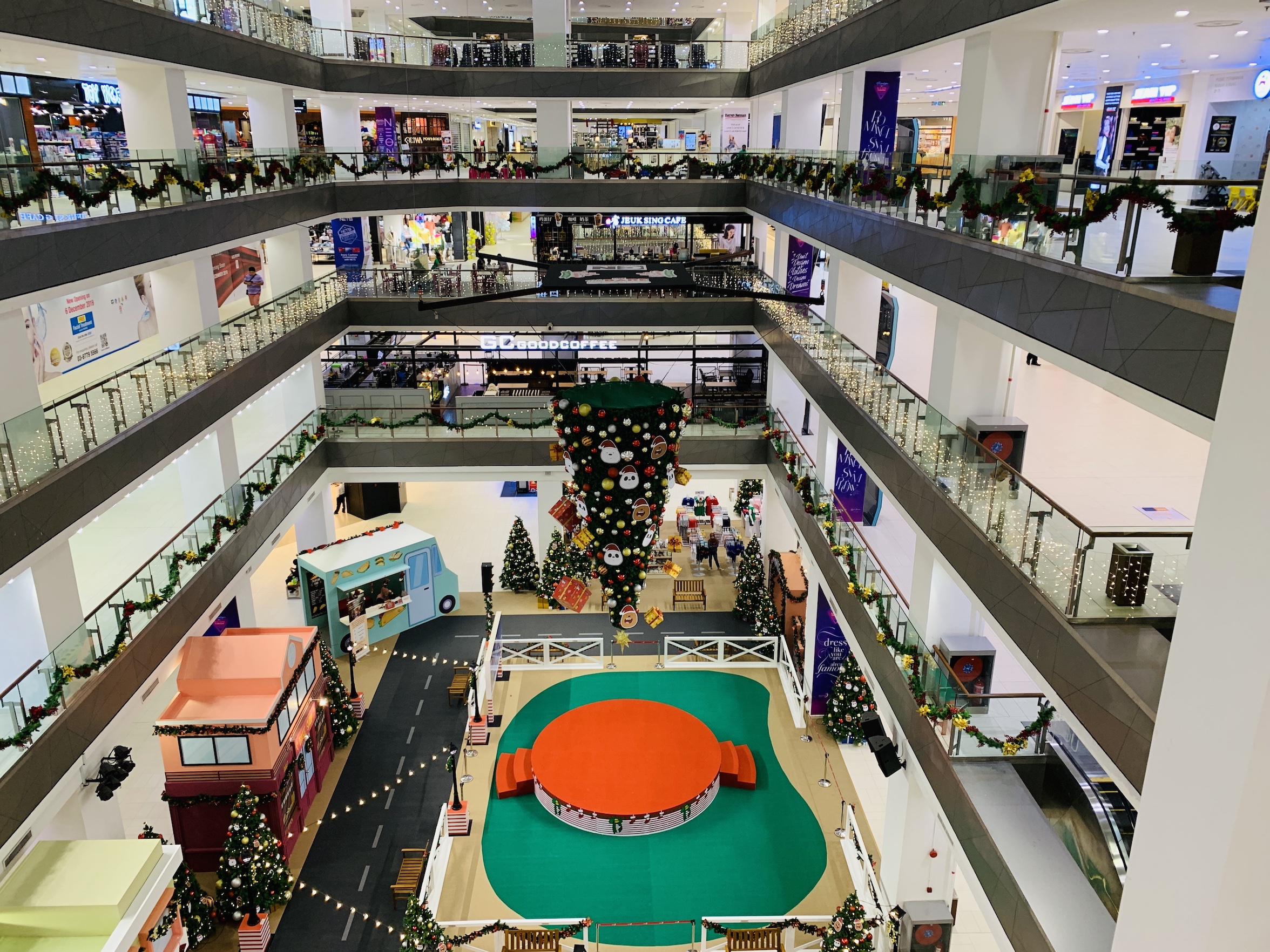
By Wednesday, 20th November 2019, while Elaine got us ready for our second, Roy was still on the hunt for the replacement 32A plugs, but eventually found. Of course, he found it on a day when it hadn’t stopped raining for days and it was definitely not a good idea to be playing with electrical cables and connection, so that was all postponed until everything had dried out. However, Mother Nature had assisted in keeping Paw Paw washed down; always a blessing!
Since we hadn’t seen weather like this before while in Indonesia or Malaysia, further investigations revealed a tropical storm northeast of where we were, heading for northeastern Malaysia. Fortunately, that was petering out and, on Friday, 22nd November 2019, we woke to clear blue, sunny skies with a much cooler temperature. The perfect morning to enjoy breakfast in the cockpit, but, by lunchtime, the rain was back and seemed set to stay.
We also eventually ate the last of our Australian purchased meat, delighted that it had all lasted this long, given that we didn’t eat out much in Indonesia after the numerous bouts of food poisoning we both endured. We also had one remaining block of cheese, surprisingly, all of which could be replenished at the Village Grocer on our return from Singapore. It would be a while, though, before we worked our way through all the long-life milk, fruit juices, tins, jars and staple foods, although, at the time, thinking much of this would just be kept for our Indian Ocean crossing, since expiry dates were well into the future. Little did we know these foods were going to be consumed under entirely different circumstances, but, nonetheless, Paw Paw’s waterline was significantly higher than what it was when we left Thursday Island, Australia, which seemed like a lifetime ago! By now, however, we were also able to enjoy the newly erected Christmas decorations and lights along the waterfront of Senibong Cove. It was starting to look a lot like Christmas!
Following our return from Singapore on Friday, 29th November 2019, while Elaine started the unpacking, Roy headed to the Village Grocer to get a few provisions, primarily because Elaine’s new gluten-free, dairy-free and egg-free diet, prescribed by the naturopathic physician, had to be accommodated. This, of course, meant a complete makeover of our ship’s stores and a rethink of our menu. So, the following day we tackle the task of clearing out the foods Elaine was no longer allowed to eat and a second visit was undertaken to the Village Grocer in search of all the new food she could consume. This ended up being a monumental task, but opened up a whole new world, as every item had to be scrutinised to ensure it satisfied all the requirements, where possible; a very tall order in this modern day and age, placing this diet in a particularly difficult category; more difficult than the vegetarian diet, but not as severe as the vegan diet.
Additionally, having to avoid foods like peanuts and peanut butter, beetroot and beetroot greens, spinach, kale, sweet potatoes, corn and eggplant to mention but a few, was bad enough, but asking an Irishmen and a chocoholic to give up potatoes and cocoa powder was simply brutal! Elaine was now down to just one vice, but fortunately the most important one, according to Roy!
We couldn’t have picked a better area of the world, though, to undertake this major lifestyle change. As someone once wrote: “Exploring Southeast Asia is like exploring a land of endless wonders and everlasting magic. The region is shaped by geological forces of nature and is dotted with ruins of ancient civilisations. It is a melting pot of cultures and fusion of different cuisines and it boasts a vast variety of weird and wonderful exotic fruits, thanks to the graciousness of Mother Nature.”
Besides the ordinary and tropical fruits, the exotic fruits, many of which we’d neither heard of nor ever tasted before included the dragon fruit, shaped and coloured like a dragon, is a white fruit, spotted with black seeds and tastes quite bland, but is juicy and very good for the digestive system apparently; durian, the king of fruits in SE Asia, recognised for its pungent odour and can be smelt everywhere; rambutan, also called the “hairy fruit” in Malaysia, has a milky, transparent inside with a white pit which is soft and delicious; the giant fruit, “khanoon” or jackfruit, is the largest fruit produced in Thailand, often weighing 20–30 Kg, similar to durian, but larger and without the sharp spines on the skin. With a hard green skin on the outside, the fruit is cut open to reveal multiple sections, each of which contains a waxy, yellow textured flesh covering a large seed and is delicious, so, into the shopping trolley that went; mangosteens, which we first discovered in Bali, with its fragrant, hard purple exterior and its soft, white, sweet and tangy inside; and “santol”, known as the “sour apple” or “cotton fruit”, is a sweet and sour fruit usually eaten like a sweet and is used in various curries. Fortunately the only fruits Elaine had to give up were oranges and grapefruits, but pomelo is a delicious substitute and there were clearly, based on the list above, plenty of new ones to explore.
Then the gluten-free noodles, pastas and crackers ranged from the usual rice-based products to pumpkin, quinoa, buckwheat and every other variety of vegetable you could think of. Even something simple like shredded coconut came in various varieties of dried or moist, not to mention every type of eatable seed and the non-dairy nut- or soy-based milks, sweetened or unsweetened, combined with coconut or not; the variety was endless and it was clear; Elaine was not going to starve, although some creativity was required, including eating fruit pastilles or baking her own gluten-free, egg-free, dairy-free muffins and biscuits as a replacement for chocolates. Needless to say, Roy was along for the ride whether he liked it or not, just as soon as he’d eaten our supply of dairy and gluten-based products still onboard. That said, though, certain products that wouldn’t require separate meals to be prepared would, no doubt, remain on the shopping list for Roy to enjoy, like French pastries, biscuits, chocolates, oranges, corn on the cob which he loves on a barbecue, milk or yoghurt for his cereals and eggs. Elaine would just have to enjoy our cooked breakfasts without an egg and our freshly baked Irish soda bread would definitely required a major dollop of creativity! With Elaine feeling, not only like someone had “moved her cheese”, but rather like someone had moved her entire universe, we wrapped up a rather atypical and somewhat perplexing day doing something slightly more familiar and customary; watching a movie, the 2010 musical, Burlesque, with Cher and Christina Aguilera.
By 4th December 2019, we’d completed everything that needed to be accomplished for Roy’s departure to the US and an hour spent with the family in Arizona on a video call had everyone very excited at the prospect of seeing Grandpa, but understood why Grandma wasn’t coming too. Learning that Grandpa was, not only staying for a night, but staying for several, definitely got plenty of smiles. Elaine’s preclusion from this trip, however, turned out to be something she would regret for a very long time, as avoiding travel during the flu season turned out to be the least of our worries!
The last minute activities included filling the water tanks so Elaine didn’t have to risk climbing down the ladder in the starboard forepeak cabin, switching out the gas bottles, cleaning both of our shower sumps and filters and washing Roy’s head (aka Bathroom); one less cleaning task for Elaine to do while Roy was away. We’d no sooner got everything done when Keenan called for a chat, given that Brooke was away in Colorado and all the kids were in bed. But, since it was almost time for Roy to depart, arrangements were made for Elaine to call back as soon as she’d said her goodbyes to Roy before he jumped in his Grab that would take him to the CIQ for his bus ride across “the Causeway” to Singapore. Elaine then spent another hour or so chatting to Keenan, a rare treat indeed, since he wasn’t at work and didn’t have anyone at home to interrupt him. We’d no sooner hung up when Roy started texting to say he’d made it through immigration and was at the airport hunting around for his hotel. A phone call followed as he “showed” Elaine around his very pink, very small Yotel “room” and around the Singapore Changi Airport, which looked fabulous; the latter that is.
Elaine then spent the rest of her afternoon tidying up and clearing out a few things. Although she’d being doing this since our arrival in Senibong Cove marina, there were a few items that had been set aside until the results of all her tests and a confirmation of her diagnosis. With that, out went the high heel shoes she’ll never wear again, along with her tennis shoes and various other exercise apparatus, as gentle stretching is all that was required moving forward and tennis was definitely out of the question. She did, however, keep the cloths she’d grown out of due to the weight gain associated with the corticosteroids, since she’d already started to lose weight with the new dietary requirements regardless of the corticosteroids; definitely an unexpected bonus!
Satisfied that she’d done enough for one day, she then wrapped a few Christmas presents and had barely placed them under the tree when Michele from Fourstar popped over for a visit and to finalise our yoga / stretching schedule. Cooking dinner for herself, though, was the challenge of the day, but the chicken curry didn’t turn out too badly at all. The stodgy rice, however, left much to be desired!
After “saying” goodnight to Roy as he retired for the night in preparation for his early morning flight, Elaine, in her infinite wisdom decided to, not only watch one episode of season one of The Crown, but got so engrossed, she watched three; a very bad idea, as it was well past midnight before she turned off the lights.
Of course, not surprisingly, Elaine had hoped for a “slower” day the following day, but that was not to be. She was, in fact, busier than ever. First up was a phone call to her friend, Olga, which we’d arranged a week or so prior to accommodate the awkward time zone difference with the east coast of the US, but we hadn’t planned on chatting for more than an hour and a half, which was lovely as we had so much to catch up on. While that was going on, both Roy and Keenan were texting Elaine and she’d no sooner put the phone down when another phone call with Keenan took place, swiftly followed by a long chat to Brooke, who had just arrived back in Arizona, while Elaine munched on her late morning breakfast. It was well past noon before the phone calls were done, or so Elaine thought. She’d no sooner completed some paperwork and administrative tasks that had piled up, and eaten a late lunch, when she received a surprise phone call from her mom in Ireland. Although it was another good “chin-wag”, Elaine really needed to clear her head by then and enjoyed a lovely evening walk. And here she was thinking she’d be all on her own, missing Roy, feeling heart sore at not being able to see Keenan, Brooke and the grandchildren, but taking advantage of having a quiet, relaxing week to just potter around and do whatever she wanted to do or not, as the case may be. Well, thus far, it had been quite the opposite; she hadn’t had a minute to feel lonely. In fact, she hadn’t been busier; it was hectic, but she was very appreciative of all the “company” nonetheless.
On Thursday, 5th December, Elaine woke to the news that Roy had arrived safely in Phoenix and Keenan, having met Roy at Sky Harbour airport, was driving them both home. Needless to say, once home, the grandsons were delighted to see Grandpa, not to mention their excitement over the “We Love Singapore” t-shirts and especially the jelly tots he’d brought with him. Unfortunately Capri was still at school, but it wasn’t long before she too joined the celebrations. Elaine, on the other hand, had a quieter morning, although the excitement in the Cadman Jr. household was still very evident when she video called a little later on. It was clear, though, that Roy needed his bed, having had very little sleep on the flight, although he’d had an upgraded seat. Guess we’ve just gotten too used to taking our entire home and all the home comforts with us when we travel.
It wasn’t long after Elaine had said goodnight to everyone, when Michele arrived for our morning exercise session; yoga for her, gentle stretching for Elaine. Having also already done her meditation for the day, once Michele left, it was time for Elaine to get stuck into the next chore on her list; detailed cleaning of Paw Paw’s interior; something she wasn’t looking forward to doing, but was going to be a whole lot easier without Roy following behind her making a mess, as most women on a yacht can appreciate. Given that this is always quite an undertaking, she did a little bit at a time and took a break to enjoy a quick chat to her sister in Ireland.
After dinner and inspired by a recent video call to friends, Justine and Paul, in the wee hours of their morning, following Justine’s party while she waited on Paul returning from London that night, Elaine decided to have a party all on her own too, minus the expired bottle of Baileys and Justine’s “air mic” (a broomstick or hairbrush or whatever she could get her hands on), but danced, nonetheless, to our favourites; Bob Seger, Bon Jovi and Bryan Adams like we spent many a night doing together in our younger days. This was repeated a few nights later, but, primarily to get into the Christmas spirit by dancing to a few favourite Christmas songs, including “Rocking Around the Christmas Tree”, “Feliz Navidad”, “Jingle Bell Rock” and “Grandma Got Run Over By a Reindeer” as well as to a few classics by artists she hasn’t listen to in so long; Duffy, Enrique Iglesias, Eurythmics, Fleetwood Mac to name but a few. When the Cats Away!
Besides cleaning and fun exercise routines with Michele, but not before the latter was preceded by a good “chin-wag” first, Elaine occupied herself with meditation sessions, sewing the new patches / mementos onto her “dog bed”, adding an extra one for Australia, given how long we actually stayed there, as well as an extra one for Indonesia; for Bali, since Bali felt like a completely different country, one we absolutely loved and because it was the only Indonesian island that we visited twice. Cleaning activities were interrupted by phone calls from family and friends, all a lovely distraction and included another pre-arranged video call, this time from Agnes and Bas off TiSento, who were still in the Netherlands, but getting ready to return to their yacht in March 2020, again, plans made without anyone realising what lay ahead. Given that we said our goodbyes to them in Southport in April 2019, it was fabulous to catch up. It was also lovely to receive a dinner invite from Fourstar, specifically catering to Elaine’s new dietary requirements, which was very thoughtful of Michele and Midge indeed and very much appreciated. Besides the delicious meal, it was a great evening of fun and laughter as stories were shared in true cruising fashion. It was, however, Elaine’s evening walks along a pathway which meandered along the river bank, through the beautifully maintained gardens of the Senibong Cove estate and along the marina boardwalk that wrapped up her days on a good note. Views out to the west, while walking back, revealed the Johor Strait and Singapore, not to mention the Christmas decorations around the marina, restaurants, bars and cafés; a constant reminder that ‘tis the season, even in the heat, but relaxing walks nonetheless!
Roy, on the other hand, had spent his first day back in Arizona with Keenan getting all our errands done, including the most important one of all; presenting himself to the Social Security office and arranging his payouts, making him officially retired, not unemployed! It’s hard to believe, though, that Elaine was now officially married to a “retiree / pensioner”! The good news was that this meant Roy could relax and enjoy his last few days with the family, albeit a whirlwind trip. He managed to squeeze in a few evening outings to watch the grandsons race their bicycles. Unfortunately mayhem followed one particular racing event as neither twin finished in the top three places and, therefore, didn’t receive a medal, which triggered floods of tears, as it was the first time Carter had failed to receive one. William, however, walked away with a medal for his second place. Grandpa getting up to no good with the grandsons, however, seemed to provide the most entertainment, especially teaching the twins to call themselves by the other’s name. Christmas festivities included accompanying the family to the drive-through Christmas Lights show, but unfortunately there was no Santa this time; a little bizarre and very disappointing as everyone had gotten dressed up for the annual photograph with Santa. Roy even bought a Christmas shirt especially for the occasion. Nevertheless, he also got to go on an unexpected “manly outing” with Keenan and Brooke’s father, Bill; hunting. Not really Roy’s cup of tea, preferring to have enjoyed a round of golf with Keenan instead, but it was a surprise for Roy and Keenan, arranged by Brooke and her dad. In the end, time together with the family was precious regardless of the activity and something Elaine would’ve given anything for!
Although she’d started out well, in Roy’s absence, dinner, as always, was the challenge for Elaine, since it involved a number of activities she never does; cooking, but more importantly, remembering first to take something out of the freezer to defrost to then cook. As a result, there were post-it notes everywhere by now, after having to eat an instant carrot and lentil soup soon after Roy’s departure. Fortunately it was a healthier version in a “bag” from Australia buried in our emergency supplies, but met all her dietary requirements. Her freshly made chicken and vegetable soup, however, was far tastier and she definitely impressed herself.
On an entirely different note, though, we’ve never cared very much for spending time in a marina, preferring, instead, to be at anchor or, during our off-sailing seasons, at least on a mooring ball. On occasion these mooring balls have been associated with a marina and other than a few months in Bonaire during our first hurricane season, when we fitted out Paw Paw for bluewater sailing, Senibong Cove was the first time we were spending our off season in a marina berth and a whole new experience had unfolded.
At anchor or on a mooring ball we were away from the hubbub, we had our privacy and we were constantly keeping an eye on the weather. Anything involving shore or land visits required a dinghy ride and somewhere to beach it or tie it up, including any provisioning needed and accessing laundry services or getting propane tanks filled or disposing of our rubbish. If we couldn’t run the watermaker because of poor quality seawater, we had to ferry jerry cans or move Paw Paw to a fuel dock to fill the water tanks. In many cases we bounced, danced and rocked around due to weather and sea state or due to the wake of a variety of motor crafts and their inconsiderate operators. We always accepted these aspects as normal and to be expected as part of the sailing lifestyle in a floating village.
However, life in a marina berth was more akin to life in a floating apartment complex. Other cruisers were a short walk away and would pop over for a chat or a visit. No dinghy rides were required for anything; everything was a short walk away, whether accessing the dustbins or dropping off propane tanks at the marina office, even accessing transportation to stores. In this case, at Senibong Cove marina, the restaurants, bars and cafés were literally on our doorstep; we looked at them every day and saw their patrons coming and going. We watched the employees set up for the day and clear up for the night. There was a constant, yet distant, clutter and chatter. At this time of the year we looked out at twinkle lights and Christmas decorations and heard Christmas music being played at the various establishments. One could sit and people-watch all day long if one chose, including watching fellow cruisers going about their daily business on their own yachts; washing them, maintaining them, repairing them, running errands, hauling laundry bags or grocery bags to and from their yachts, enjoying company that had popped over, filling their water tanks conveniently from the dockside tap, savouring the constant electricity supply without having to move the boom up and down the traveller to expose the solar panels to maximise the amount of sunlight or listening to the wind generator spinning and creating a racket or running the generator to top up the house batteries. Add the marina staff to the mix who were getting through their work day; fishing out rubbish from the water that had floated in on the high tide, reading the water and electricity meters, undertaking repairs, maintaining the gardens. Then, being a weekend, watching the various wedding parties with the beautiful brides and handsome grooms, all dressed in their finest and celebrating the joyous occasion or the visitors taking photographs with the yachts as the backdrop. It was a constant hive of activity and, while we’ve enjoyed more privacy on a mooring ball or at anchor and we don’t have to smell everyone’s cooking or feel like we’re in a glass bubble with everyone peering in at us, it was definitely far more entertaining and easier in many ways. Oh, and we’d hardly looked at the weather! Paw Paw sat calmly, tugging gently on her docklines tied to the dock and it was easy to forget we were actually on a yacht. It truly was giving us a break from the sailing lifestyle without having to spend time away from Paw Paw. Although it was more expensive than being at anchor or on a mooring ball, we were getting to enjoy all the conveniences of landlubber life, while still enjoying our floating home. It almost felt like the best of both worlds and made it understandable why many cruisers “swallow the hook”, but find an affordable marina they like and continue to live onboard. It reminded us of the 90 year old lady and the 92 year old gentleman we met in Salinas, Puerto Rico, while playing Mexican train dominoes with Babbie and Ronnie off Campechano one Sunday afternoon, who were very annoyed and upset that they had recently had to move off their yacht that was at anchor in the bay and move into a house on land. At the time we thought that them staying on their yacht until this ripe old age was remarkable, but it now also seemed perfectly fathomable!
However, there would be a few specific requirements we would be looking for, some negotiable, but others not. For us, location and weather go hand in hand and are paramount. A wish-list would include the marina being in a secure, politically stable, well-maintained and “clean” country, preferably English speaking, with good, affordable healthcare facilities and access to an international airport; devoid of cyclones / hurricanes / typhoons or whatever you choose to call them, as we’d rather not be anywhere near one or have to move Paw Paw to avoid one; somewhere not too hot and not too cold nor too humid; enough rain to keep the decks clean and wash everything down, but no thunderstorms and lightening, where we would permanently be moving electronic equipment in and out of the oven; a degree of wind to keep the temperatures moderate and for the times when we’d like to sail and anchor off a nearby island for a day or two to enjoy sleeping under the palm trees, enjoying a swim or a snorkel in turquoise clear waters or a walk on a powdery white sandy beach.
A secure marina, with the setting, facilities and services to include a reasonable walking distance to bars, restaurants, cafés, spas, hairdressers, convenience store, etc or, better still, all situated on the boardwalk of the marina and easy access to public transportation. For marina residents only, a resort-style swimming pool area and, besides the usual propane tank filling service and rubbish disposal facilities, have access to a reasonably priced onsite laundry service, collected at and returned to the yacht and, for the “do-it-yourselfers”, a large, decent self-service laundromat facility with industrial strength washing machines and dryers for blankets, pillows, mats, etc, in addition to one’s usual laundry. A decent marina-wide wifi service and a comfortable lounge and self-service business office to print and copy paperwork or drop-off and retrieve post in a secure manner. Access to a courtesy car, available “free of charge” (aka included in the monthly marina fees) on a self-service reservation system, accommodating various time-slots, although tightly controlled electronically to negate the “car hogs”.
With regard to berthing facilities, besides the standard dockside water and electricity supply, how about fuel and pump-out facilities too, so we could use our own heads instead of having a communal bathroom facility and we wouldn’t have to move the yacht to obtain diesel.
Entertainment facilities to include a covered, but open-air dining / barbecue area, where events can be arranged by the cruisers, a games area where board games, cards or Mexican train dominoes can be enjoyed and a shaded grassy area or covered wooden deck area, where physical exercise classes can be offered like yoga, Tai Chi, etc.
Last, but by no means least, a suitable haulout facility for monohulls and catamarans alike, either part of the marina or nearby, with a well equipped chandlery and various other services a cruiser needs to maintain and repair their yacht.
In essence, a marina facility which is a combination of the best of everything we’ve seen and experienced thus far during our sailing adventures. Nothing like wanting your cake and eating it! Utopia? Wishful thinking? We’ve lost our minds? We’re smoking something? Perhaps, but maybe such a paradise exists for cruisers like ourselves wanting the best of both worlds when we’re through with bluewater sailing and looking for an easier sailing lifestyle in our sunset years and before physical constraints force us to land. Maybe it was a Christmas wish, but one simply never knows who’d be reading this and sees an ideal business opportunity; a retirement floating apartment complex to washed up cruisers!
On a more down to earth note, though, by Tuesday 10th December 2019, Roy had started his long journey back to Paw Paw via Los Angeles, where he picked up his international flight to Singapore via Japan. That morning, while Roy was on his flight to Japan, Elaine enjoyed a fun time with the family in Arizona. A last minute decision to fill the void after Grandpa had left resulted in Santa arriving early at the Cadman Jr. household, much to the surprise and delight of the grandchildren. It was a wonderful distraction for them, especially since William was the first to realise Grandpa wasn’t there and woke up wanting to know where Grandpa was. It appeared the goodbye kisses and hugs in conjunction with the goodnight kisses had not resonated with them that Grandpa wouldn’t be there when they woke up the next morning. Nonetheless, they were all very excited to show Grandma all the gifts Santa had left for them. Unfortunately Keenan’s schedule had him leaving for work the following day and flying over Christmas all the way to New Year; the price him and the family were paying so that Keenan could be home while Roy visited. There’s always the piper to pay, but the impromptu event also afforded Keenan to have a Christmas with the children at least.
Elaine then spent the rest of her day sitting with her feet up enjoying a few movies and getting packed for her trip to Singapore, where she was meeting Roy and seeing the specialist again; the former in light of the third straight day of absolutely pouring rain. Good job she decided to do the laundry a few days earlier. A perusal of the weather forecast didn’t shed any light on the reason for all the rain, but further research revealed this to be quite normal, with the highest average rainfall in the Johor Bahru region occurring in December. Guess it was the rainy season!
On our return to Paw Paw on 13th December 2019, after getting everything unpacked and stowed, Elaine enjoyed a phone call to her brother in South Africa, following which we braved the weather and enjoyed a delicious meal at the Changi Thai restaurant. Roy getting to sleep in his own bed, however, was all he wanted after a number of very hectic days and lots of very long flights.
As every cruiser knows, any trip back to visit family always involves the “packhorse” look on return, with yacht parts and spares comprising most of the luggage and Roy’s trip to the US was no exception. It was definitely an early Christmas for Paw Paw and at least we could now get some pesky repairs completed. It was also an “Apple” Christmas for Elaine; yes, she’d eventually moved to the dark side, but, while she knew what the presents were, she had no idea what they looked like, as they were wrapped and placed under the tree. Roy did, however, spend time getting the various devices configured so that everything would be ready for immediate use on Christmas morning.
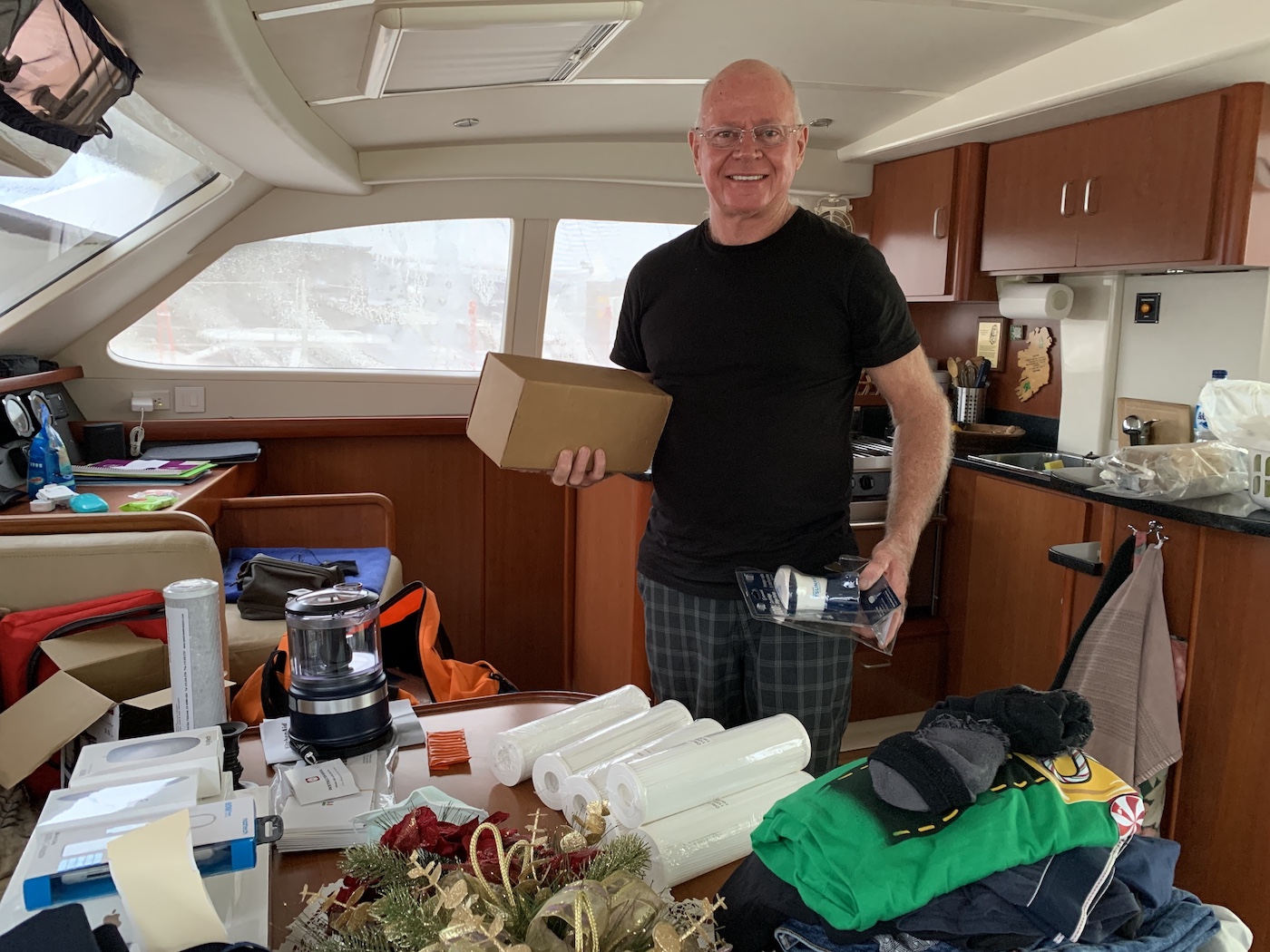
Other items included in the luggage were all the flags needed in preparation for our Indian Ocean crossing, including a few we weren’t sure we’d even use as we had yet to finalise our exact route. So, to be sure, to be sure, we just purchased flags for every country en route that would, at least, get us across to the African continent once we left Thailand.
It was our “Grab” rides to and from the Mid Valley Southkey mall the following day to purchase some much needed groceries, that were very interesting indeed. On the way there we were fascinated to hear the regular music broadcasts on one of the local radio stations, which the driver was listening to, being interjected with English lessons taught between songs. In essence, the presenters were the participants who had to choose the correct English phrase amongst a number of incorrectly stated ones. It was brilliant really and a very effective way to educate the listeners. On the way back, we had a lady driver for the first time, who was very excited to hear about our vagabond lifestyle and where we’d sailed from. We can honestly say she topped the list of questions asked and enthusiasm displayed of anyone we’d met during our sailing adventures, so much so that she was still asking questions right up to the moment she dropped us off at the marina. A very sweet lady!
Our trip to the Village Grocer was the second one since Elaine’s new dietary prescription and, while we knew what brands to buy this time around, which fortunately precluded us from having to read every package to determine the ingredients first, the challenge, however, was remembering where in the store the products were actually located, taking up far more time than we had hoped. Our efforts were richly rewarded, though, when we received a voucher, based on the amount of money we’d spent, which we were then able to redeem for a surprise Christmas present; another one Elaine was yet to see and for under the tree. Heaven alone knew what Roy was going to be opening on Christmas morning. After raining all through the night, though, but clearing briefly, we’d barely made it back onboard with the groceries when the heavens opened up again and it didn’t stop, except for a very brief interlude in the late afternoon, delighting the guests of yet another wedding at Senibong Cove. It was difficult, however, to determine the associated cultural aspect of this particular wedding, especially when it commenced with a precession along the boardwalk lead by drummers, with possibly the bride, but definitely the bridesmaids, following behind. At least they all stayed dry for the duration!
By Wednesday, 18th December 2019, it felt like we were starting to get into a bit of a routine, but we weren’t altogether sure if that was a good thing or not. We did, however, try something a little different; we grabbed a ”Grab” and headed to the Aeon shopping centre a short distance from the marina. We had it on good authority from Fourstar that there was a health store close to the shopping centre, as well as a more reasonably priced supermarket, compared to the Village Grocer. They were correct on both counts and both venues were worth the visit. At the health store we were able to purchase an assortment of gluten-free flours as well as some flaxseed products and, at the grocery store, we found a much wider variety of fruits and vegetables at a lower price, which definitely reduced our weekly grocery bill, given that a large portion of our purchase was fresh produce. Based on the number of other caucasians we saw in the supermarket purchasing just fresh produce, it seemed we were a little late in discovery this option. Unfortunately, however, there was little else we could find in the store that Elaine could eat, although they had a fabulous organic foods section; one of the best we’d seen anywhere. Sadly, though, organic does not mean gluten-free nor egg-free, nor corn-free for that matter. Roy, of course, couldn’t resist the pastry store, as usual, and had absolutely no in munching delicious baked delights in front of Elaine, knowing perfectly well she couldn’t have any. It didn’t help matters that it was the baking that had become the ultimate challenge, as many products like gluten-free and egg-free bread or biscuits were simply unavailable to purchase. This resulted in her first attempts at baking a banana loaf and almond biscuits, although very tasty, were, nonetheless, not what she had hoped for. Baking was definitely going to require a bit more research and experimenting.
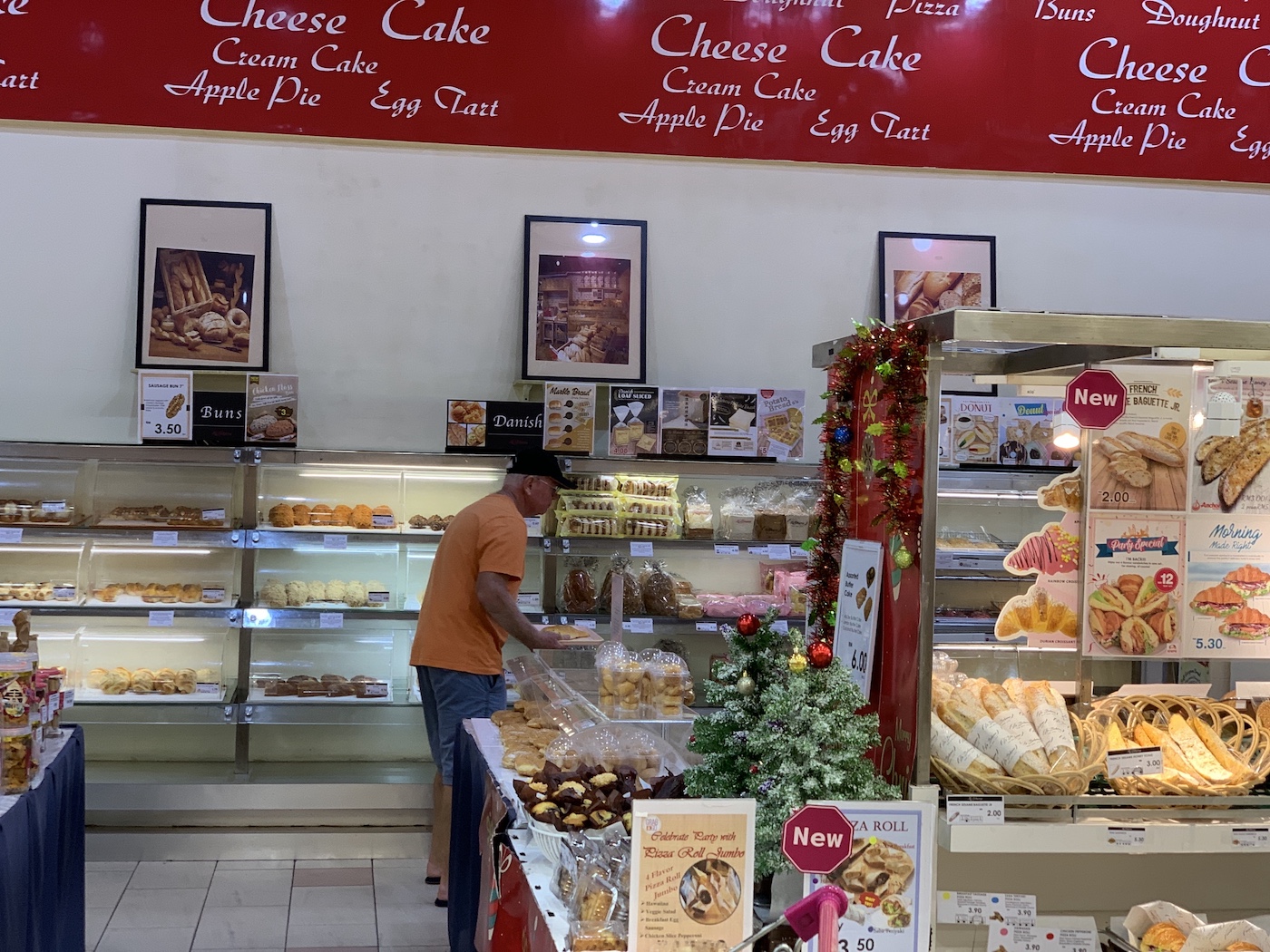
So, a few days later Elaine got down to her research, specifically for the baking aspects, but also for the various complementary treatments that had been suggested by the naturopathic physician, both requiring a much better understanding before commitments were made or ingredients purchased. This all consumed volumes of time, with research into osteopathic treatments, in particular, Craniosacral Therapy (CST), followed by hours of researching gluten-free cooking and baking options. The slight twist in all of this was that, not only was Elaine’s diet gluten-free, dairy-free and egg-free, but she was also not allowed peanuts, nor potato and corn, amongst a few other vegetables, which ruled out potato starch and corn starch, both used extensively in gluten-free baking and in a host of gluten-free products. Additionally research had been required to find suitable substitutes for milk and eggs in baking. As a result, while we were not only having to eyeball every ingredient on all the gluten-free labelled products, we were having to find substitutes for a minimum of three different ingredients in most baking recipes.
While the research was extensive, it was most certainly interesting and very educational. For instance, while looking for arrowroot powder we came across a well known brand labelled “Arrowroot“, but on reading the ingredients, it was actually Tapioca flour, both perfectly fine for gluten-free cooking and baking, but entirely different flours, used for entirely different reasons in a recipe and sourced from entirely different plants. Additionally we learnt that store purchased baking powder is “filled” with corn or potato starch. This made for a very frustrating hunt through the supermarkets and definitely highlighted the ignorance we’d had about food, in particular, false labelling of products by companies. It also meant finding the “base” ingredients for baking and purchasing those instead, which could then be combined later as needed.
As a result, our galley started to feel like an experimental laboratory after Elaine decided to put all her research to good use and bake some “Irish Soda Bread”. Usually this is a simple undertaking with just three ingredients required; self-raising flour, buttermilk and salt. Well, the equivalent gluten-free for the former included a mixture of brown rice flour, tapioca flour and, instead of potato starch, arrowroot powder, since Elaine wasn’t allowed potato, with the self-raising element comprising a mixture of cream of tartar and bicarbonate of soda (aka gluten-free baking powder without the corn starch ingredient, since Elaine isn’t allowed corn) and then flaxseed powder to replace the gluten needed for binding. Next, the dairy-free substitution for the buttermilk was a mixture of almond milk and apple cider vinegar, left to stand for about ten minutes. The only original ingredient was the salt and by this stage we realised we weren’t actually making Irish Soda Bread! Regardless, though, whatever we called the resultant bread, it wasn’t too bad and, at least, was edible with a reasonably good texture. The accompanying bacon helped make for a half decent breakfast. However a second attempt, which never materialised, was to include the use of oatmeal or almond flour and reduce the quantity of arrowroot powder to improve the texture, as well as adding an extra dash of the gluten-free baking powder to improve the rising aspects and, finally, a larger heap of salt to improve the taste. Guess we never discovered a suitable replacement for our favourite and easiest way to make bread. The idea was abandoned! On the upside, after all her research of gluten-free / vegan baking, at least, Elaine understood the science behind it all by now and had purchased all the correct ingredients resulting in a very successful batch of vegan fruit muffins.
In between all of this research, Elaine also worked out our detailed sailing itinerary for the first few months of the new year, given the number of logistics involved, with tides and currents to transit the Malacca Strait, doctor’s appointments and access to airports to return to Singapore, Justine and Paul arriving in February in Penang, Brooke and the grandchildren arriving in March in the Langkawi archipelago and meeting Elaine’s sister, Deborah, and friends off Nina (Lynda and Steve) in April in Thailand, we definitely needed a plan, including researching and adding waypoints on the chartplotter of various suitable anchorages along the way to avoid any overnight sails. All of which, of course, must have had the devil himself in fits of laughter as he cracked his cunning plan for the world!
On Saturday, 21st December 2019, we were also pleasantly surprised to see all the Christmas festivities around Senibong Cove marina and delighted to hear a choir singing Christmas carols along with Santa handing our treats to old and young alike, all of which we enjoyed while having an after-dinner drink on the patio of My Liberica café. Even the staff of the marine police force arrived in droves to enjoy the festivities. So, while we enjoyed a very unexpected cheerful Christmas in Senibong Cove marina, we wished all our family and friends around the world a very Merry Christmas and a Happy New Year and hoped that 2020 would bring them everything their heart desires, but, mostly, that they would all enjoy good health. This message was conveyed along with Season’s greetings to all our blog readers around the world. In sending out these wishes, though, we had absolutely no idea at the time what awaited the world and that these wishes were to become a pipe-dream!
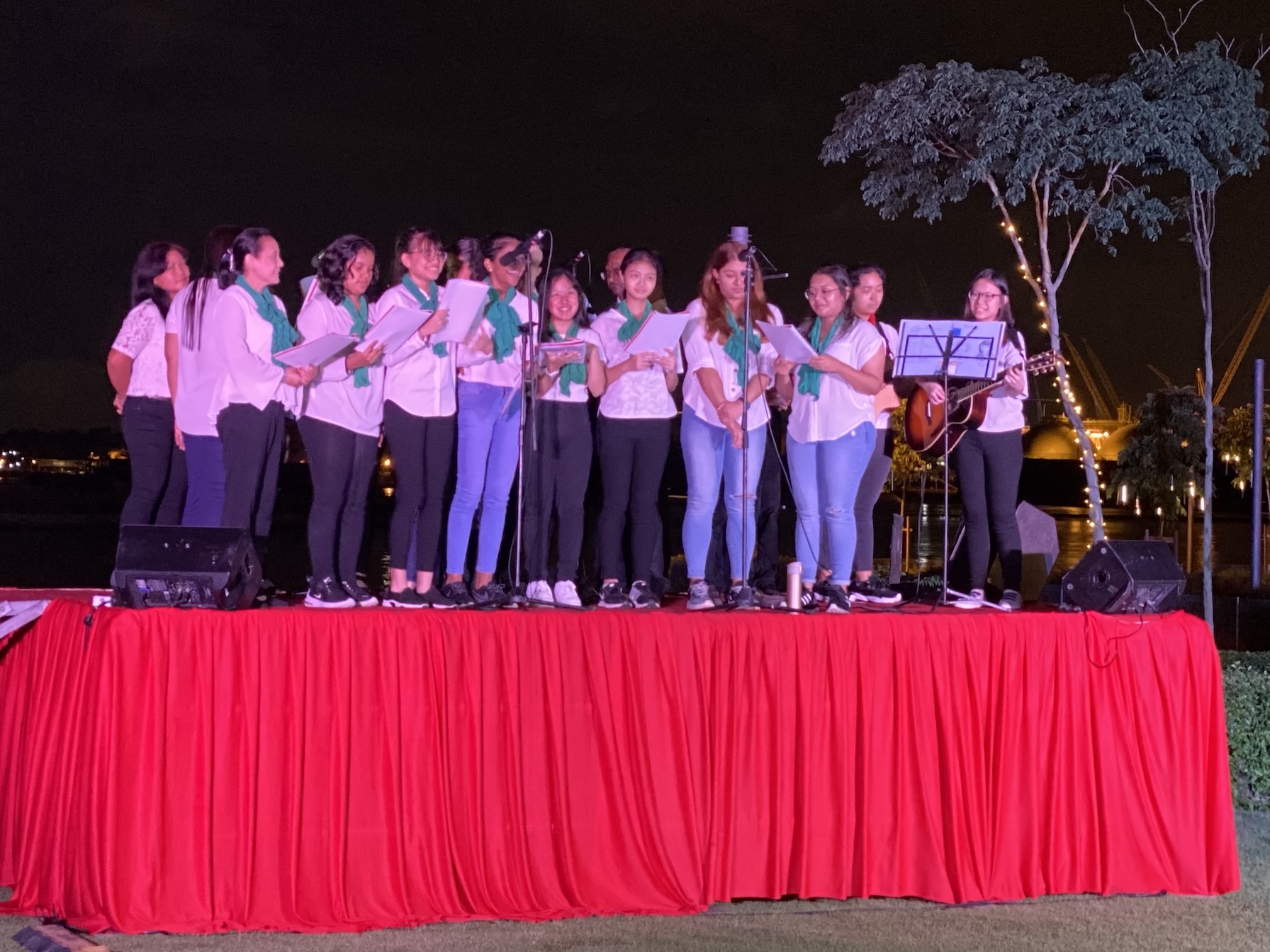
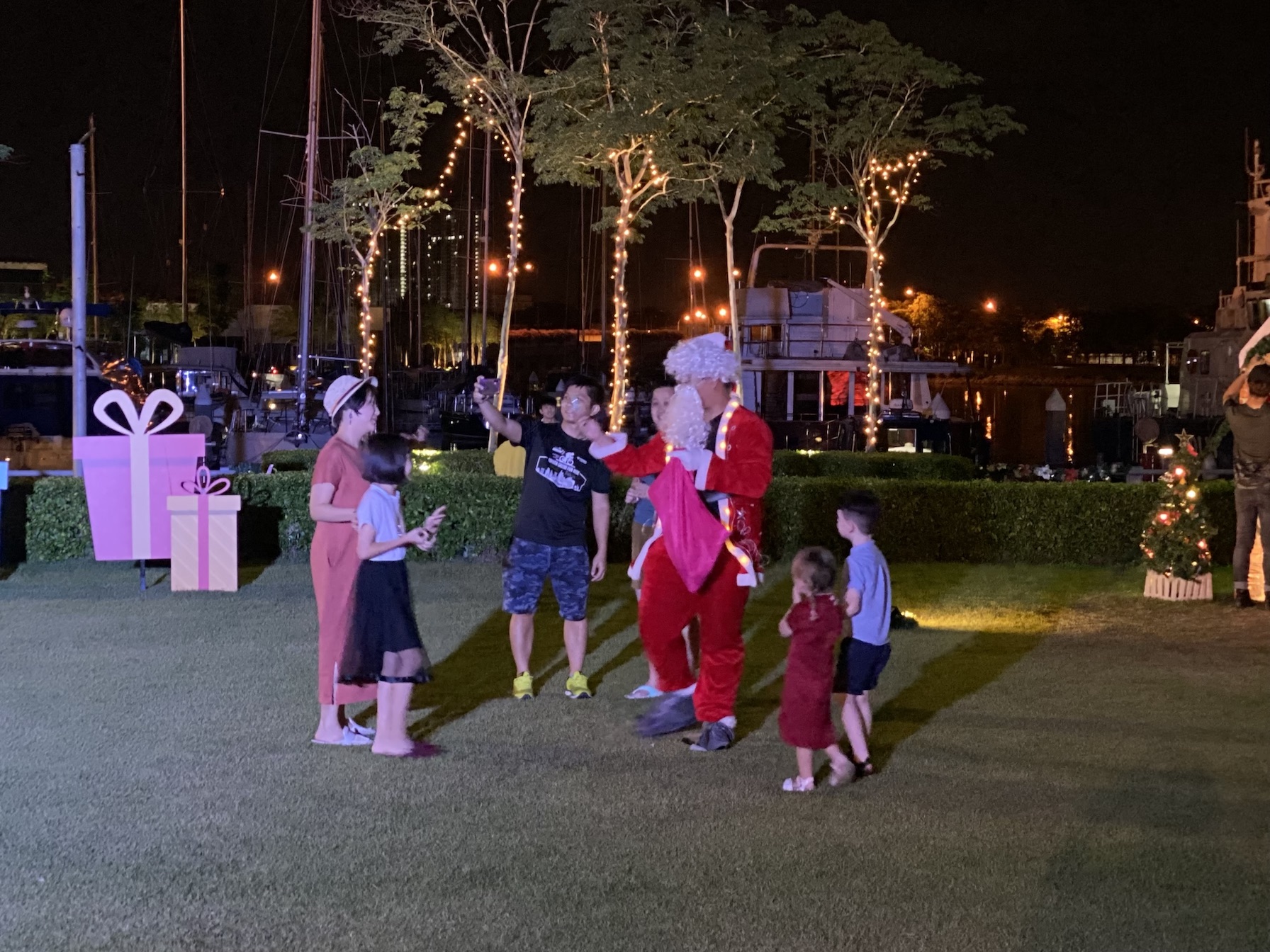
By Christmas Eve, preparations were in full swing for our Christmas Brunch and Dinner with Elaine preparing all the fresh herbs she needed for our gluten-free, dairy-free, egg-free meals, including roasting the chestnuts, chopping the roasted hazelnuts, making the drizzle for the Lemon Dressed Carrots, making the base spread for our starter and assembling the Bacon Wrapped Smokies to accompany the main course. We did, however, take a break and a short walk to My Liberica café. While, Roy had a coffee, unfortunately they don’t offer any specialty milks and Elaine’s favourite Pomelo juice was temporarily off the menu, so she settled for something else she’d never tasted before; an iced red longan tea. This new diet was definitely forcing her to break her paradigms and this turned out to be another excellent choice.
Research revealed that Dimocarpus Longan, commonly known as the longan and called “Mata Kucing”, meaning “the cat’s eyes” in the Malay language, belongs to the soapberry family with its black, round and shiny seed. It is dried and used in Chinese desserts and is one of the better-known tropical members of the soapberry family, to which the lychee and rambatan fruits also belong. The fruit of the longan is similar to that of the lychee, but less aromatic in taste. It is native to Southern Asia and is commonly found in traditional Eastern folk medicines. In Cantonese the word longan means “dragon eye”. Apart from being eaten fresh and raw, longan fruit is also often used in Asian soups, snacks, desserts, and sweet-and-sour foods, either fresh or dried, and sometimes preserved and canned in syrup. Combined with red dates, it is served as a tea. Besides being thoroughly delicious, it is an essential anti-oxidant, rich in Vitamins A and C and in minerals like iron, phosphorus, magnesium and potassium.
The day was topped off with drinks at the Sky Bar with a number of the other cruisers in the marina, followed by phone calls to the family in Ireland, setting the table, stuffing the stockings and enjoying Elaine’s baked fruit muffins with a cup of mulled fruit infused tea. Senibong Cove was, however, pumping with a live band playing, a fireworks display and Santa doing the rounds again, while the restaurants and bars heaved with patrons. We were a little concerned when the music increased in volume, but fortunately it wasn’t for long.
On Christmas morning, Elaine would still have been sleeping if it wasn’t for her alarm going off. When she surfaced, she found Santa’s Little Helper patiently waiting to open our gifts. So, with another nice cup of mulled fruit infused tea, a vegan fruit muffin for Elaine and a mince pie for Roy, we set about enjoying our gift-opening routine. Afterwards Elaine got our Christmas Brunch cooked; Balsamic Roast Vine Tomatoes, Thyme Roast Portobello Mushrooms, White Wine Roast Sausages, plus an egg for Roy.
Our starter of Dill Salmon Tartare was enjoyed early in the afternoon and by then it was time to get the Turkey Legs in the oven and complete the cooking for the Christmas main course; Thyme Roasted Potatoes for Roy, Lemon Dressed Carrots, Baby Broccoli with a Hazelnut Butter (Substituted) Sauce, a Pear and Chestnut Stuffing and the Bacon Wrapped Smokies, accompanied by Cranberry Sauce, Gravy and one of our favourite South African wines, Backsberg Sauvignon Blanc. Another lesson learnt, though; don’t use Arrowroot Powder as a gravy thickener. Although it tasted fine, it was gooey. We’ll try Almond or Tapioca flour next time!
Afters included Dark Chocolate Mints, Chocolate Covered Brazil Nuts, Shortbread Biscuits, a traditional Christmas pudding for Roy and a completely decadent hot chocolate molten sponge cake for Elaine, accompanied by all the warnings of things she wasn’t supposed to eat, but, hey, it was Christmas! That, with the couple of Chocolate Covered Brazil Nuts and the single Dark Chocolate Mint which she dared to eat, along with the small glass of wine, she was convinced that her blood test results the following day, during our next trip to Singapore, would be a disaster! As things transpired, Elaine didn’t have to await the results of any blood tests, after her somewhat uncomfortable morning the following day, she was definitely suffering the effects of breaking her dietary requirements, the corker, of course, being her decadent hot molten chocolate sponge dessert; guess the proof of whether or not the new diet was having an overall positive effect on her well-being, was definitely in the pudding!
Regardless, we wrapped up our Christmas eating bonanza with an evening walk along the Lunchoo riverfront and through the gardens and lakes of the Senibong Cove residential estate, as well as “chats” to various family members in South Africa. All in all it was a lovely day and a successful gluten-free, dairy-free, egg-free, etc-free, cooking day for Elaine. Although she freely admits she can’t cook, but has always enjoyed baking, Elaine has also always cooked Christmas dinner for loved ones and loves it; in many ways it’s simple a treat for and a thank you to Roy for his year of cooking for her! Roll on the New Year celebrations, although we had absolutely no idea what those would entail.
Although it was Boxing Day and a Public Holiday in many parts of the world, we were up before the birds the following day to make our way back to Singapore for Elaine’s next appointments. This was a pivotal point in determining whether or not Elaine’s new medications were actually working and that her internal organs were coping. It would be an understatement to describe Elaine’s reaction as overjoyed and filled with gratitude when her rheumatologist broke the news that she had indeed received her Christmas miracle, with her inflammatory indicators being within one point of normal; the first time in years. Her physical examination also indicated she was pain-free in every joint examined with the exception of a very slight tenderness in her right wrist, the joint that has consistently provided the physical manifestations of her overall inflammatory readings.
Needless to say, the rheumatologist was also delighted with the results and our fabulous dinner outing at the Michelin Guide recommended Tian Tian Fishermen’s Pier Seafood restaurant on the riverfront with Jenny and Charlie off Lady was the perfect way to celebrate, accompanied by Singapore Chilli Crab, Black Pepper Crab and Singapore Slings. Elaine, however, decided it was wiser to stick to her dietary requirements, enjoying a different Singaporean dish to everyone else, but she did take a small sip of Roy’s Singapore Sling. The views of the nearby Fullerton Building, the Marina Bay Sands Luxury Hotel in the distance and the beautifully decorated river boats made up for any deprivation Elaine might have felt. Having to say our goodbyes to Jenny and Charlie at the end of such a joyous day, though, was upsetting as they prepared to have Lady shipped and return to the US. It did, however, bring home just how fortunate we were in being able to continue our sailing adventures. With that, we headed back to Paw Paw to enjoy New Year, extremely grateful that we could begin the preparations for our departure from Senibong Cove marina.
The following day, considering the complete lack of enthusiasm or inclination on both our parts to do any more cleaning on Paw Paw, Roy outsourced the next round of cleaning of her exterior to a couple of crew members off two of the other yachts in the marina. This effort included the decks, helm station, cockpit, topsides, propellers, saildrives, depth sensor and the waterline. Fortunately the latter and the hulls were surprisingly clean, with only a few barnacles on the hulls. Considering the length of our stay in the marina this was quite remarkable. It was definitely money well spent, though, and freed up our time for other activities, primarily the preparations required for our imminent departure. We did, however, give the crew a little extra money, given the great job they’d done and, as things transpired, we also learnt that one of the men was actually from Indonesia and was returning home to visit his family. Luckily, we still had quite a bit of Indonesian currency left over from our visit, which we were happy to part with, especially giving it to someone who greatly appreciated the unexpected gift.
Before leaving the Johor Bahru area, though, Roy took advantage of the medical facilities and spent Monday, 30th December 2019, having his “Executive Health Screening” done at the Gleneagles Hospital. It was well after 1700 before he returned to Paw Paw, but generally in good health, as one physically challenged individual onboard is more than enough! He had to make some dietary changes, though, and increase his exercising, so, it seemed, we were in the same boat after all. He was, however, very impressed with both the facility and the thoroughness of the entire medical examination, which included a diagnostic examination, a blood and urine profile, a cardiac screening, including a resting and stressed test ECG, a radiology examination, which included a chest x-ray and an ultrasound of all his internal organs and a hearing examination. The only thing they didn’t check were his eyes and he received all the results on the same day. The astonishing aspect was that this only cost the equivalent of $300USD. It never ceases to flabbergast us as we travel around the world just how deplorable the US medical industry is, ripping off people who are in need or, like Elaine, who cannot get coverage because she just happened to get ill. The absurdity is astounding, not to mention the exorbitant costs people are being charged for inferior care in many instances, when places like New Caledonia, Australia, Bali, Singapore and Malaysia can offer superior care in modern, hygienic facilities at a fraction of the price.
By Tuesday, 31st December 2019, we’d enjoyed a fabulous run up to both Christmas and New Year while enjoying both Johor Bahru and Singapore. The Christmas decorations and festivities were beautiful and very unexpected, but we had absolutely no idea what New Year’s Eve would hold. Our day started with breakfast in the cockpit for a change, given that it was a beautiful, unusually cool, morning. With only our final pre-sail checklist activities to complete, we spent our last days visiting our favourite mall, Mid Valley Southkey, enjoying lunch at one of our favourite restaurants, Din Tai Fung, doing our provisioning for our departure and purchasing a new vacuum cleaner, as our very expensive Dyson decided to stop working, again! After replacing various parts, including two new battery packs at considerable additional expense, it was tossed in the bin. Our “el cheapo” model will probably last for years now! We also spent a while trying to find a cover for Elaine’s new iPad, as well as purchase some vitamins that we were short on and face masks for Elaine, but, somehow, that bag never made it back to Paw Paw. We have absolutely no idea where we left it or could have lost it; it’ll remain another mystery of 2019, a year we were both happy to put behind us! We, of course, weren’t to know that 2020 would be far worse in many respects.
We also learnt from our Grab driver that New Year’s Day is, in fact, not a public holiday in Johor province, although it is elsewhere in Malaysia. In Johor, schools reopen for the year and all government departments operate as usual. The private sector, however, usually takes the day off. That raised two matters; one, the marina manager told us he’d probably be working and we, therefore, didn’t have to settle our outstanding bill until the following day, although we had visited the marina office to pay him prior to leaving for the mall and, two, we had no idea what festivities, if any, would take place in Senibong Cove for the New Year’s Eve celebrations, especially when we noticed all the Christmas decorations had been removed and new decorations were being erected all around the estate in preparation for the Chinese New Year in January instead.
We arrived back at the marina just before 1700 to find the marina manager pacing up and down waiting for us; he’d been notified that he would have the day off after all and, therefore, needed our final payment. We’d arrived back in the nick of time prior to the office closing. We’d barely settled our account and got all our purchases back onboard when Elaine’s folks called from Ireland to wish us a Happy New Year, swiftly followed by a call from Justine and Paul to do the same as well as confirm the dates for their visit. By the time we’d finished chatting and had stowed everything afterwards, it was dark and we hadn’t noticed all the festivities on the boardwalk; a band, a DJ, people everywhere; the party had come to us and we definitely weren’t getting any sleep any time soon! It was, however, the most unusual New Year’s Eve ever; we listened to Chinese music all night and, although we didn’t understand a word, we definitely knew when the countdown to midnight was taking place with people all around us shouting in unison, followed by a lovely fireworks display. We had prime seats on Paw Paw for the entire event, with centre stage just metres from Paw Paw’s port side and the fireworks launched from the far banks of the Lunchoo River to her starboard. And, with that, we blasted out Auld Lang Syne and enjoyed a dance, followed by chats to loved ones around the world as the clocks chimed midnight for them.
By Thursday, 2nd January 2020, we were up with the birds and, at first light, we had cast off the dock; Paw Paw had left Senibong Cove marina, eventually! It was a strange feeling to be on the move again, having enjoyed the peace and tranquility of the marina and the surroundings of the Senibong Cove estate for quite some time. As expected, though, when a yacht sits idle for a while, there were some glitches to contend with. In particular, the port engine decided to run hot for no apparent reason, but rectified itself soon thereafter. We think a plastic bag may have been the culprit. Also, the chartplotter and autopilot decided to misbehave for a spell, but after rebooting all the instruments, that issue settled back to normal as well. Fortunately the dinghy started first time and by 1100 we were anchored for the night at Tanjung Pengelih and heading ashore to complete the Port Clearance process.
Retracing our “paws” as we headed back down the Johor Strait, it was hard not to acknowledge that so much had changed in our lives from when we first made our way along this route. Besides having satisfied our curiosity after exploring and thoroughly enjoying Singapore and Johor Bahru, in many ways it felt like we’d hobbled into Senibong Cove marina, with Elaine’s health heading in the wrong direction and both of us needing a break from the months of sailing, yet hopeful that the doctors in Singapore could work a miracle. On this day, it felt like we strutted out, albeit that our universe had shifted, it was in a positive direction and we were looking forward to all the new adventures that lay ahead. It felt like the first step in continuing the second half of our circumnavigation, which we thought had come to a grinding halt, although, a few months later it did, but for reasons no one foresaw. On this day, though, it didn’t matter that we’d picked the windiest day in two months to set sail and that we bounced around in the chop and current at anchor. We were out in the fresh air, doing what we loved most!
We’d completed the officialdom and we were back onboard just after midday; just in time for lunch. Then, after Roy had cleaned and stowed the fenders and docklines and prepared the mainsail for hoisting the following day, an afternoon nap was required to take the edge off our early morning start.
After a very comfortable night, surprisingly, considering the wind and chop we had, we were up with the birds again, to weigh anchor and set sail for our trek around Singapore. We’d originally decided to head to Kukup, but changed our minds, given the awkward distances that presented for the more popular anchorages along the west coast of Peninsula Malaysia. Instead we settled for an anchorage back in the Johor Strait, but on the western end. We would have only been a few nautical miles from where we’d left Senibong Cove marina, but “the Causeway” bridge prevented us from simply motoring west along the Strait. We had the additional issue that we had to do our Port Clearance in Tanjung Pengelih, since we’d cleared into Malaysia there. There was no getting around the fact that we had to sail all the way around Singapore. It was a case of “pay now or pay later”, which we accepted when we left Nongsa Point marina in Indonesia and settled on a marina on the eastern side of the Johor Strait vs one on the western side. This compromise, however, allowed us to get back and forth to Singapore across “the Causeway” with ease and reduced our commute to and from the hospital. Regardless, we had to pay the price, but it wasn’t a hefty ransom considering the fabulous sail we had, enjoying a SOG (Speed Over Ground) of anything from 6 Kts to 10 Kts depending on the wind speed and direction.
We had two hiccups to deal with, though. Firstly, the anchor swivel failed to swivel due to the thick clay we’d anchored in, which meant the anchor shank couldn’t come up on the roller, adding about 15 minutes to our departure time to rectify the matter. Secondly, encountering the Singapore Coast Guard en route. It’s not often Paw Paw gets an escort, but that’s exactly what happened after Roy decided to place our route within millimetres of Singapore waters, knowing perfectly well he was pushing the boundaries in more ways than one; and he wonders where Keenan gets it from. Anyway, after a VHF radio exchange, we were instructed to follow the patrol boat and escorted towards the shipping lane. When we were about half a nautical mile from our original planned route and heading in a direction neither of us was prepared to go, Elaine informed the coast guard that we would not be proceeding any further in the direction they were taking us, that we were turning to starboard and continuing on our way outside the shipping lane and out of harms way of the cargo ships. Needless to say, the personnel didn’t put up much of an argument; we were in international waters after all. In fact, we’d been in international waters the whole time and there really was no need for us to be forced to alter course, but Roy had pushed the envelope being so close to the boundary. Bidding them farewell and thanking them for their assistance, we continued on our way. With the speeds we enjoyed, it wasn’t even midday by the time we reached our waypoint to re-enter the Johor Strait on the western side and calculated that we could make Piesang Island instead, our anchorage planned for the following night.
While the sailing was brilliant, it was a minefield getting through the hundreds of cargo ships anchored everywhere and avoiding the numerous ships in the shipping lane, not to mention one particular ship whose captain decided to enter the shipping lane from our starboard side, cutting straight across our bow, although he easily could have passed astern of us, since we were in the shipping lane, under sail, exceeding his speed by a few knots and he had to actually change course to cross our bow, but, instead, forced us to let out the sails to slow down after ignoring our VHF radio calls; all perfectly legal as a yacht has no rights in the shipping lane, but not very gentlemanly. However, to then decide to try and cut across our bow again and from astern of us, as we’d subsequently overtaken the cargo ship, was definitely not acceptable and a few stern words from Elaine on the VHF radio had him rethinking his actions and proceeding with the sensible option of passing astern.
By 1600 we’d dropped the anchor having completed 60NM and dodged ship after ship. It was the barge we passed that caused us the most hassle though; a fly infestation. The flies literally flew off the barge in droves thinking they could make Paw Paw their new home. After closing the saloon doors and killing hundreds inside, we were still killing hundreds more outside by the time we anchored. What a mess to clean up, but we didn’t rest until we’d killed every last one. We can’t even imagine what the state of that barge must have been to have that many flies onboard. Just disgusting! We were, however, delighted to find a calm, peaceful anchorage with no fishing nets or pods to deal with and enjoyed a relaxing evening before heading to bed.
After a peaceful night and a good rest, we were up at daybreak again to head out at sunrise. Unlike the previous day, we hardly had any wind on Saturday, 4th January 2020, but the little we did have, was pretty much on the nose. We were, however, still able to motor-sail, we had flat seas and the tidal current was with us. That meant the engines just had to tick over to give us a reasonably good SOG of between 5.7 and 6.3 Kts, making for a nice donder up the coast just on the edge of the shipping lane with cargo ships, fishing boats and tugs towing barges, for company; the stark difference, however, was that everything was rather orderly compared to the previous day and noticeably all these vessels, including the fishing boats and tugs, actually had AISs (Automatic Identification Systems), unlike Indonesia.
While we’d hope to have good winds to get us all the way to Palau Besar, we settled for our previously planned intermediary stop, Tanjung Tohor, but we were anchored so far out that we couldn’t see a damn thing other than the shoreline in the distance. It reminded us of one of the anchorages, Shelbourne Bay in Australia. Regardless, though, it was calm, quiet and peaceful, for which we were extremely grateful. We enjoyed another good night’s sleep, surprisingly, considering it was an open roadstead, but it turned out to be an excellent intermediary stop. The big question of the day, though, was more along the lines of: “He loves me, he loves me not; did we get wind or did we not?”
Well, we got a lot more than we expected and, by the morning of Sunday, 5th January 2020, we were reefed down on a perfect close reach, enjoying speeds of 8 to 10 Kts in reasonably flat seas with the exception of the chop. But, as quickly as the wind started, it suddenly stopped. It was as if we’d crossed some imaginary line, where the seas were all churned up with the stronger winds behind the line and completely calm in front of the line, with little to no wind. Most bizarre! That meant we motored the last hour, but, although we had one or two fishing nets to detour around, we had enjoyed another unexpected fabulous sail, nonetheless. However, by the time we reached our chosen anchorage off Besar Island at around noon, the winds and chop had reappeared, offering no protection on the east side of the island and the southwest side, while protected, seemed to have very odd depths on an undulating bottom of ridges and troughs with uncharted rocks sticking out, as well as a rather large, derelict building ashore. Further research revealed the history of this island and an explanation of the building.
It is considered to be one of the strangest islands in the Malacca Strait and is considered to be a very spiritual place for the Indian muslims (“Mamak”), with a favourite place on the island known to local spiritual pilgrims. In a past role it was also the resting place for sailors between China and Europe. However, in 1997, the authorities labeled spiritual practices on the island as “deviant”, tearing down many of the buildings and erecting a luxury hotel and golf course, causing an uproar in the Indian muslim community. Once the hotel was completed, it was mysteriously abandoned and has remained vacant and decaying since.
But, back to the present; Plan B; head to Malacca or Upeh Island. En route we discovered that the latter and its resort were under construction, so Malacca it was; a calm, protected anchorage with good holding; all we needed for a night, but had an added bonus of a very modern skyline and a beautiful mosque on the waterfront. That, of course, meant it wasn’t long before we heard the “calls-to-prayer”, the first time since leaving Indonesia, but that was a small price to pay for a good anchorage and a good night’s sleep!
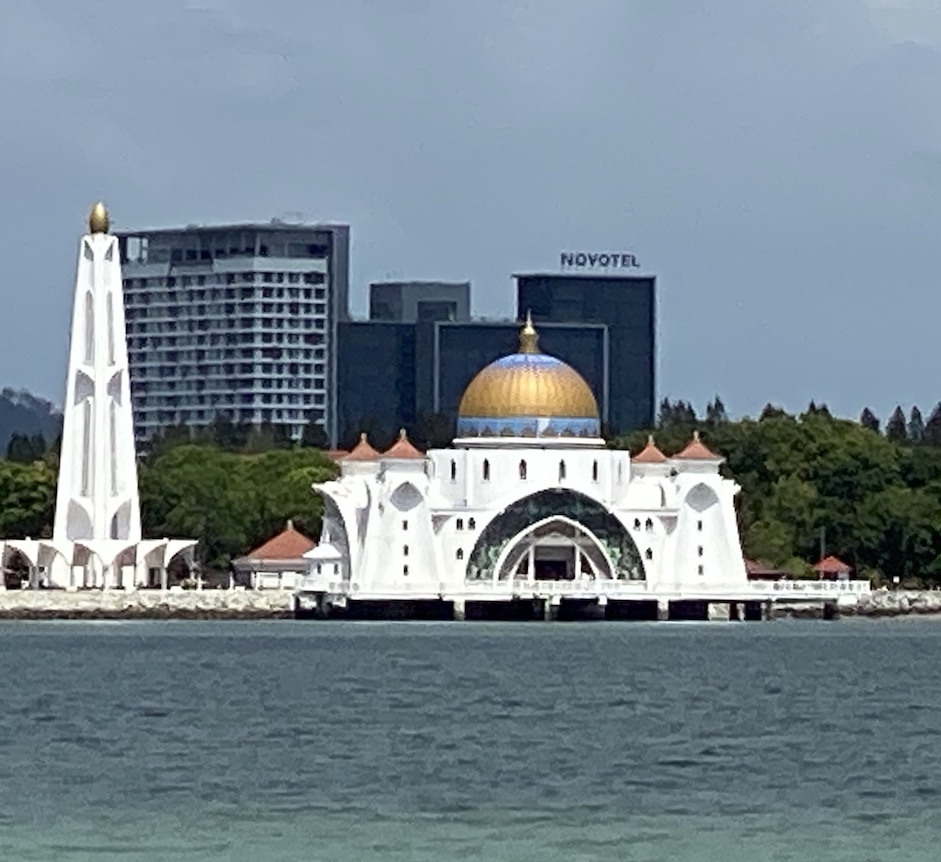
We were up early again on Monday, 6th January 2020, to continue north, having had yet another good night’s sleep in a calm anchorage. Thus far, Malaysia had proven to have far better anchorages than Indonesia, thank goodness, as we were both dreading leaving Senibong Cove marina with the possibility of bouncing around in unfit anchorages and being exhausted from a lack of sleep as a result. It seemed our fears were definitely unfounded. Instead, we’d had good anchorages and had thoroughly appreciated being back out in nature, enjoying the fresh air, the beautiful sunrises and sunsets, the magnificent starry nights and the turquoise waters, sparkling in the sunlight. We definitely missed these aspects of our sailing lifestyle while bound by a marina.
Sailing up the west coast of the Peninsula Malaysia, we were, however, struck by how flat the landscape was, as well as being fairly unpopulated compared to the Johor Bahru area. Given that Malaysia actually only has an estimated population of 32.7 million and, given the size of the country, would explain the density thereof. Also, it appears what we had observed from the sea were the coastal plains surrounding the peninsula which reaches widths of 50 kilometres / 31 miles along the nearly 1,931 Km / 1,200 miles long coastline, while the mountain range, the Titiwangsa Mountains, are further inland, dividing the peninsula between its east and west coasts, rising to a peak elevation of 2,183 metres / 7,162ft at Mount Korbu. We were also impressed by the resorts and miles of beaches we observed on this leg of our journey as we approached Port Dickson and, in particular, Admiral Marina and Leisure Club, where we remained for the next week or so. At this point, though, it became abundantly clear that our adventures in Malaysia were to be further segmented, primarily since we were moving from one marina to the next, given that this area of Malaysia was not really a cruising destination. It was more a case of moving to different areas along the west coast to then tour by land. There were a few exceptions to this, but not many.
Getting Paw Paw into Admiral marina, though, was definitely a tight squeeze, but by 1230, she was tied up securely, starboard to, making it far easier to use the stern steps rather than the stepladder we’d had to use for the previous few months to get on and off while in Senibong Cove marina. It was a delightful surprise to then spot Tuija and Ingvar off Hakuna Matata walking down the dock as we were enjoying lunch in the cockpit. Needless to say, after completing our paperwork at the marina office, a good “chin-wag” ensued, followed by Happy Hour at the Leisure Club bar that evening. It was lovely to see them again, albeit briefly, as they were continuing north the following morning. In between all the stories and laughter, Elaine managed a quick phone call to her sister to wish her a very Happy Birthday.
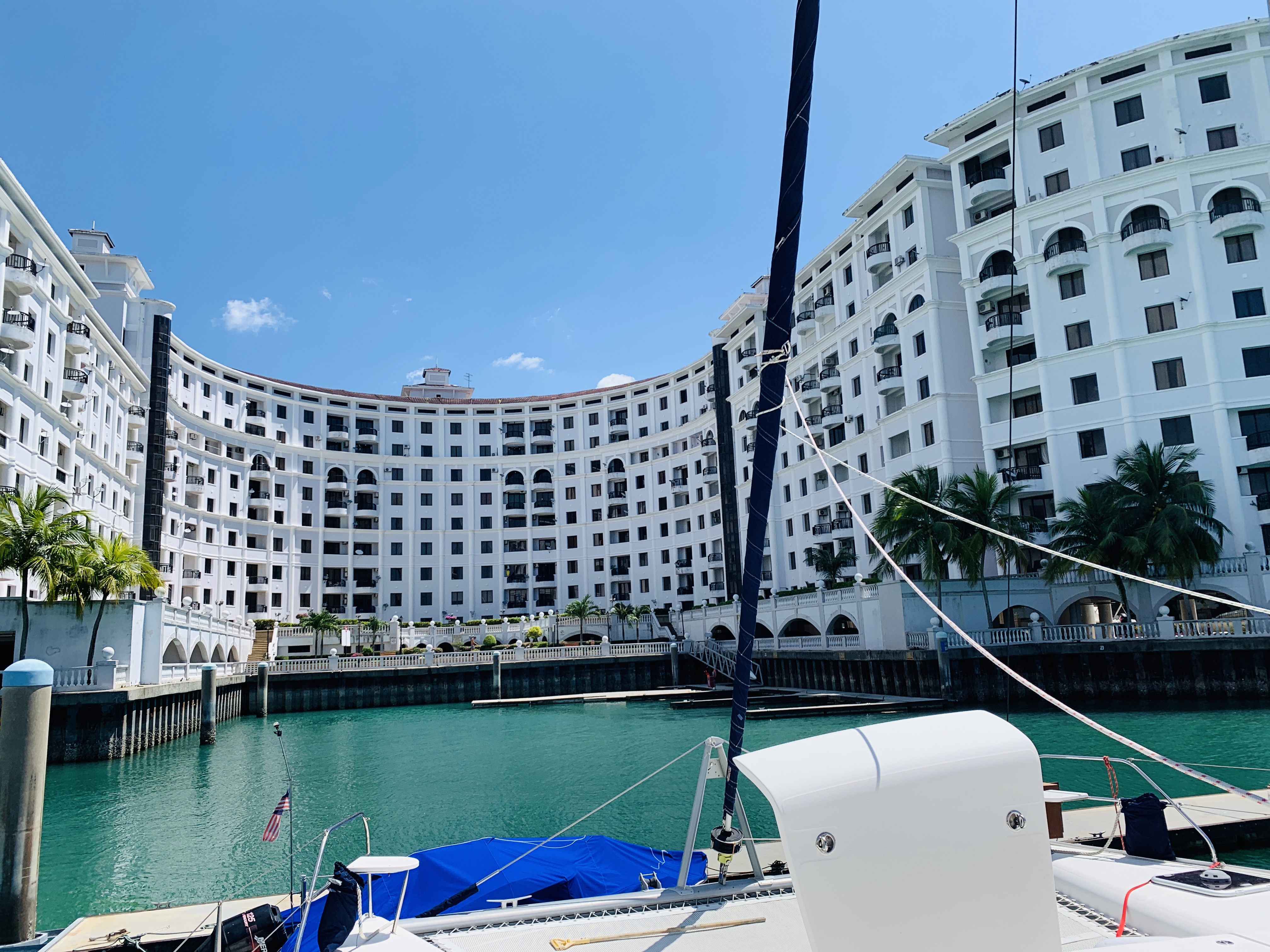
Arriving in Admiral marina was something we were both looking forward to, as it meant we could explore further afield, but not before Roy spent some time repairing the leak, again, in our one water tank. This persistent leak usually manifests itself at the most inconvenient times, but, on this occasion, it was perfect timing; we were in a marina, the tank was almost empty from our consumption and Roy, not only had time to fix it properly, but there was time to let the repairs cure properly, since we were leaving Paw Paw in the marina while we were off to enjoy a few days of land travel and sightseeing.
After the Grab collected us on the morning of Wednesday, 8th January 2020, and after approximately an hours drive, interrupted only by a small herd of cows which brought the traffic to a grinding halt while they crossed the road, we arrived at our home away from home for the next few days, the Ramada Plaza by Wyndham Hotel, just on the outskirts of the historic UNESCO World Heritage District of Malacca (Melaka) City. It was, however, difficult not to notice the lush vegetation, the colourful houses with pretty gardens and the miles and miles of palm groves for farming palm oil on our journey into Malacca. While farmers can expect two harvests per month from the palm trees once the trees reach four years of age and then bare fruit for twenty years thereafter, we learnt from our driver that farming durian had become far more lucrative these days.
Once settled in our hotel room, we enjoyed a fabulous buffet lunch at the Zest restaurant, tasting many delicious traditional Malay dishes for the first time. To work off our lunch, we decided to pick an area to explore and since we were close to the Malacca River, we settled on a stroll along the banks, over a little bridge and into the historical traditional Malay village, Kampung Morten, named after Frederick Joseph Morten, a colonial British administrator who assisted with the resettlement of the villagers to this area in the 1920s. In 1989 the area was declared a heritage village under Malacca's Preservation and Conservation Enactment.
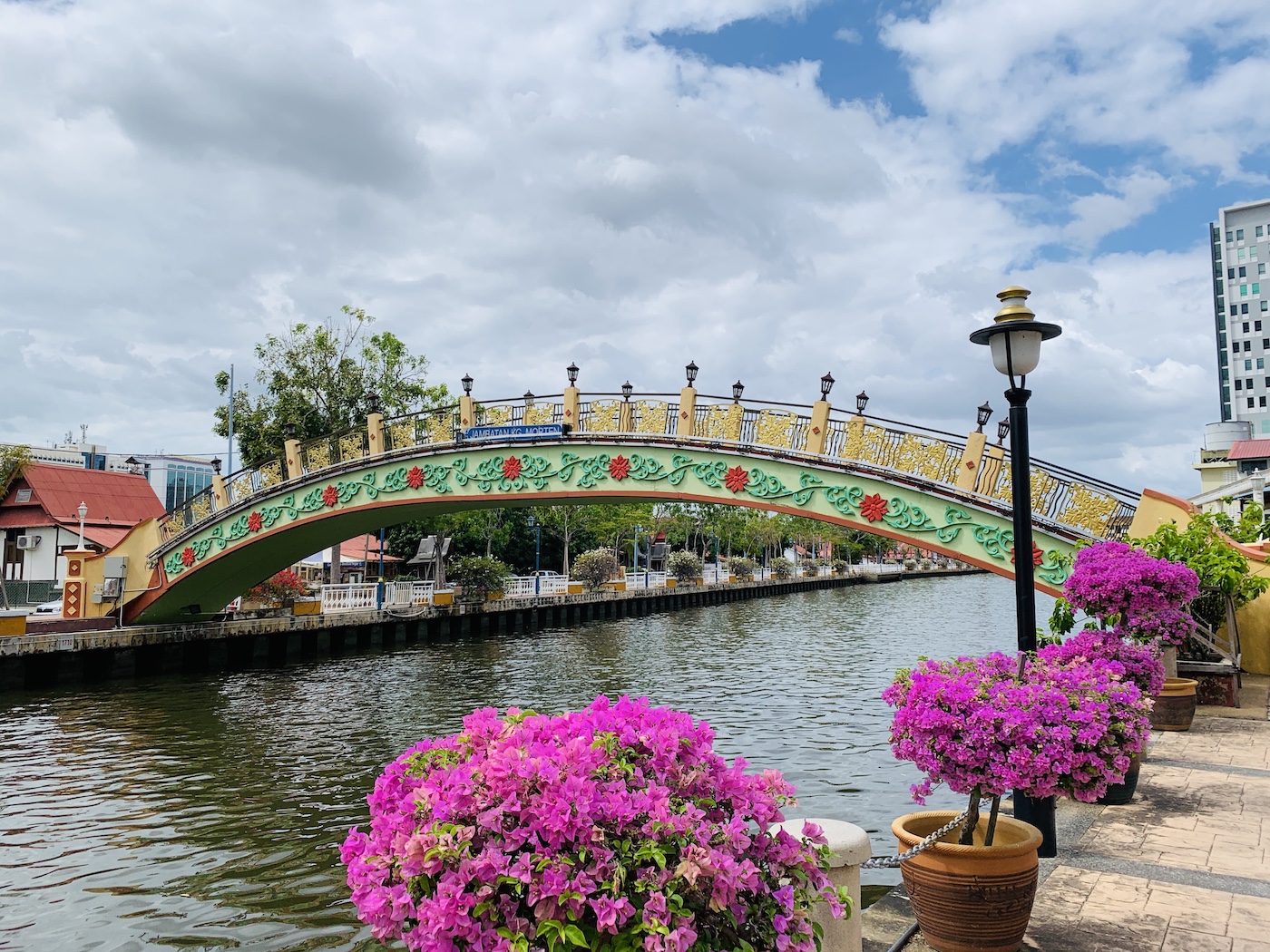
While the village comprises more than 100 traditional Malay houses, our purpose was to visit Villa Sentosa in particular, known as “The Malay Living Museum” and it didn’t take us long to find out why. The little 80 year old gentleman, a retired veterinarian, who greeted us, was the youngest of twelve children who was born in the house and lived there his entire life. The house originally belonged to his parents, but various family members had lived in the house with him over the 97 years of its existence.
We were able to see a chart reflecting the genealogy of the family, see photographs of all the family members, including his deceased parents, various awards given to his father, a Supreme Court Justice, including one from King George V, a set of mini Qurans, various books, including an old Cambridge dictionary as opposed to the Oxford dictionary in use today, the mixing bowl and hand mixer his mother used for baking, including the baking moulds used to shape biscuits, the old irons used for ironing and paintings created from old vinyl records.
The entrance to the home was referred to as the “breezeway”, primarily used for ventilation and from there we were shown the family gathering room, the dining room, the guest bedroom area, used by any family member who visits the home, the bridal lounge which includes a special seating area for the bride and groom and the bridal bedroom; the latter rooms a formal area where all the family weddings take place, including the earlier arranged marriages, although these have been discontinued in Malaysia for nearly fifty years now. We learnt that his parents hosted the King and Queen of Malaysia in these same two rooms and that the bridal bedroom was also a gathering place for the bride and groom as well as a few close family members after the wedding ceremony to help break the ice for the couple who may have met for the first time on their wedding day.
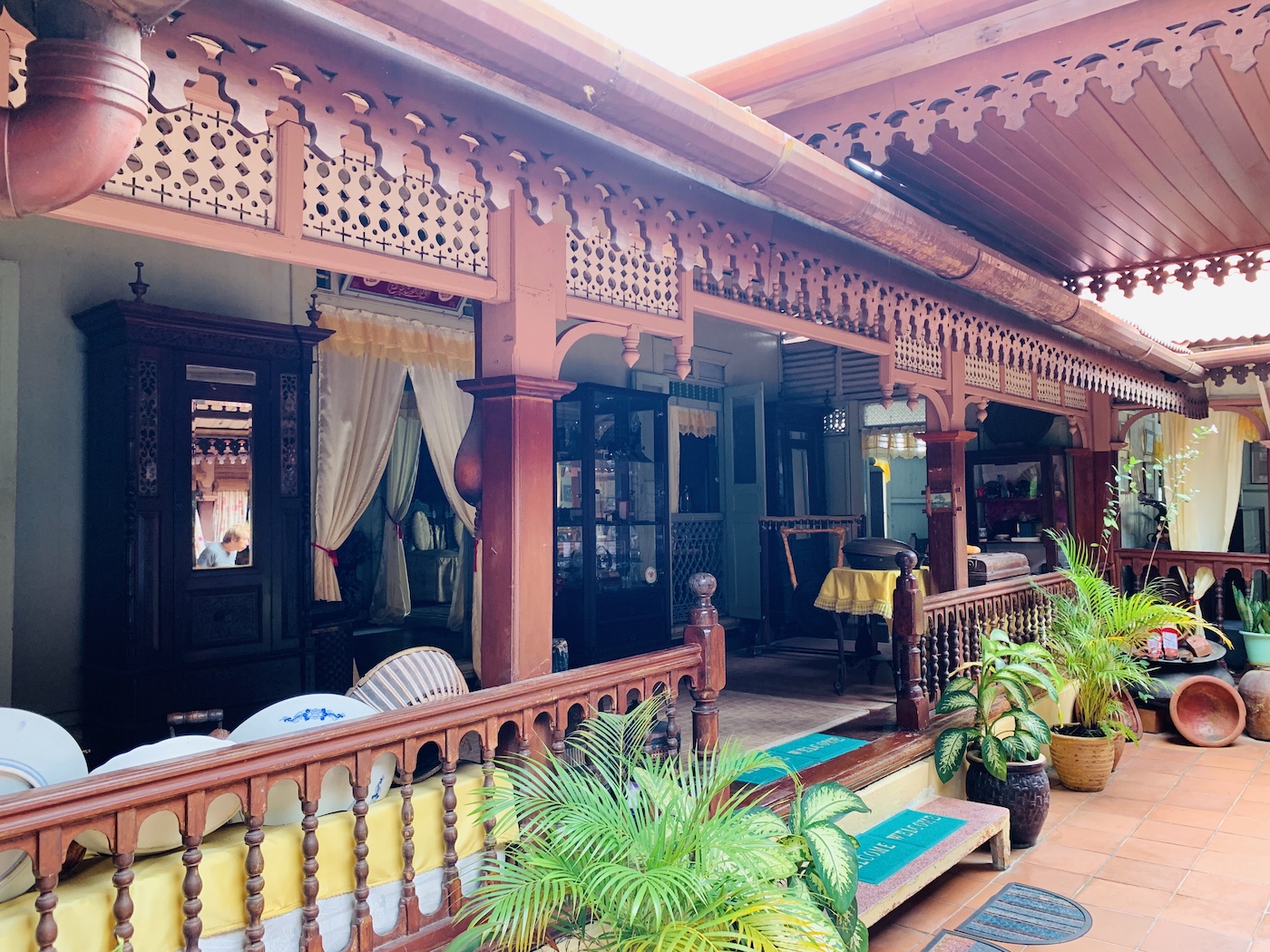
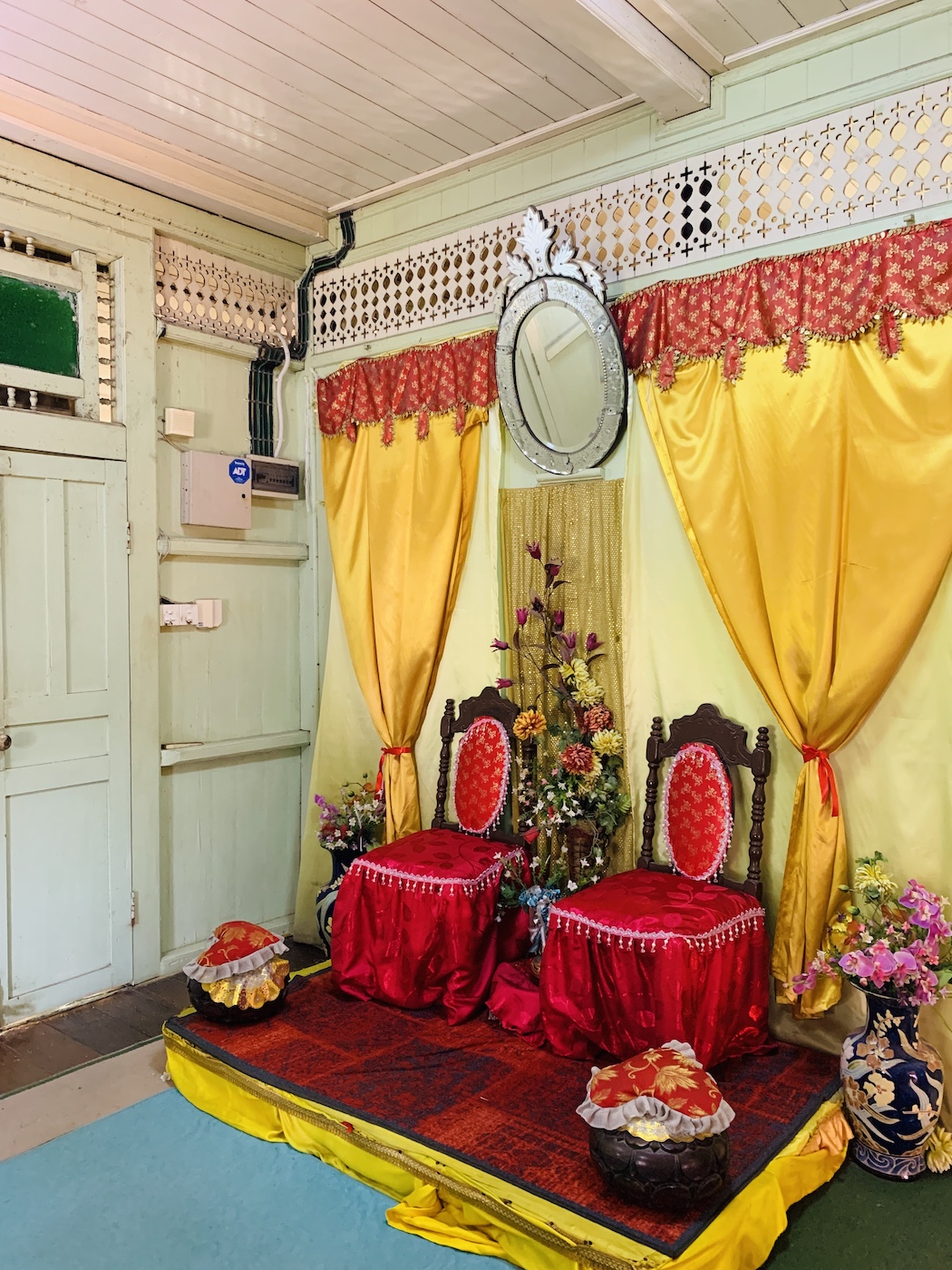
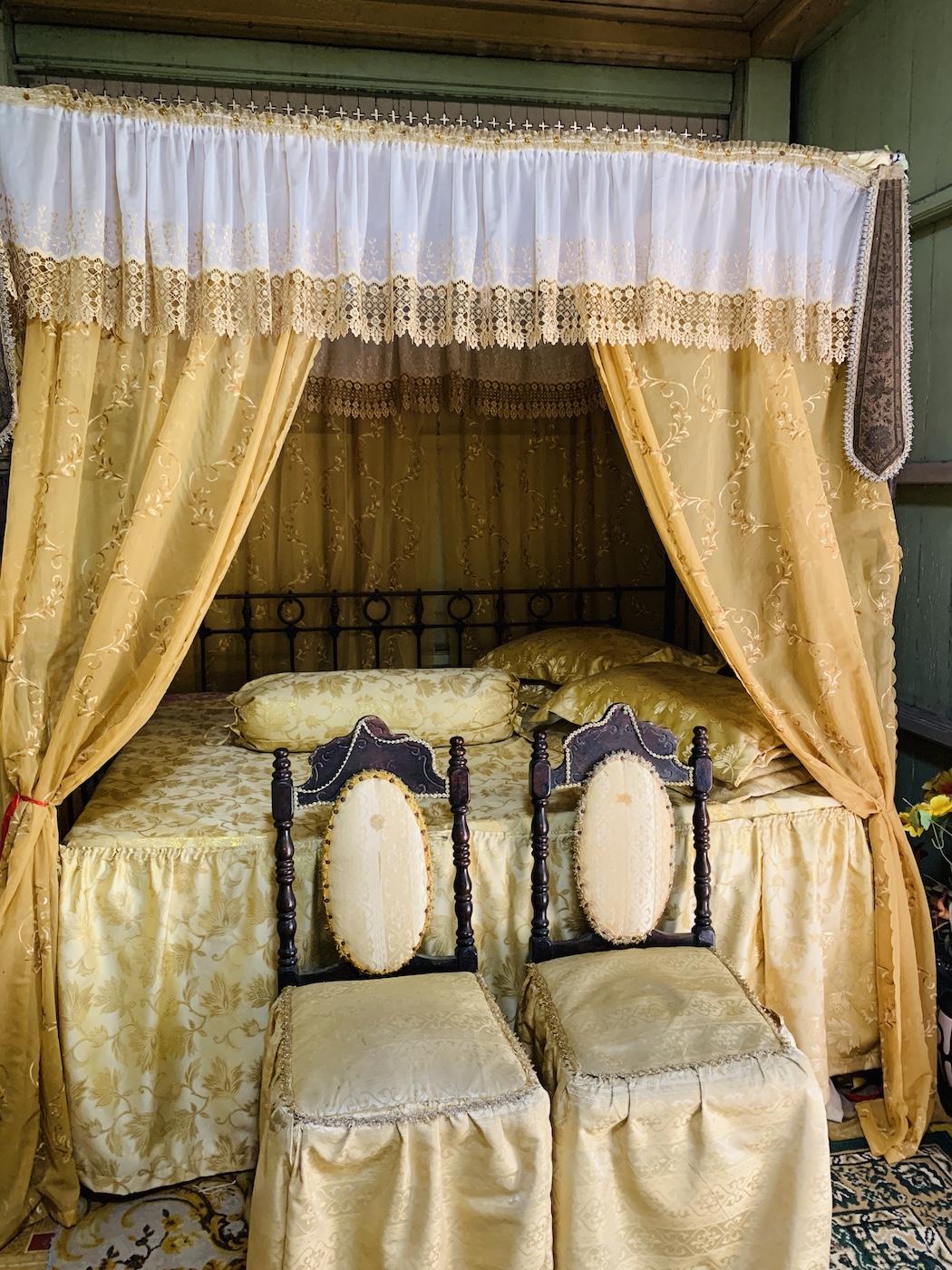
The family gong, used for various forms of communications is also believed to be lucky when stuck three times on certain days of the year after a secret wish is made. In fact, those fortunate enough to have this opportunity have always had their wish granted and many have returned to the house, up to three years later, to inform the family that their wish had in fact been granted. Today was such a day and Elaine jumped at the opportunity to make her wish and strike the gong!
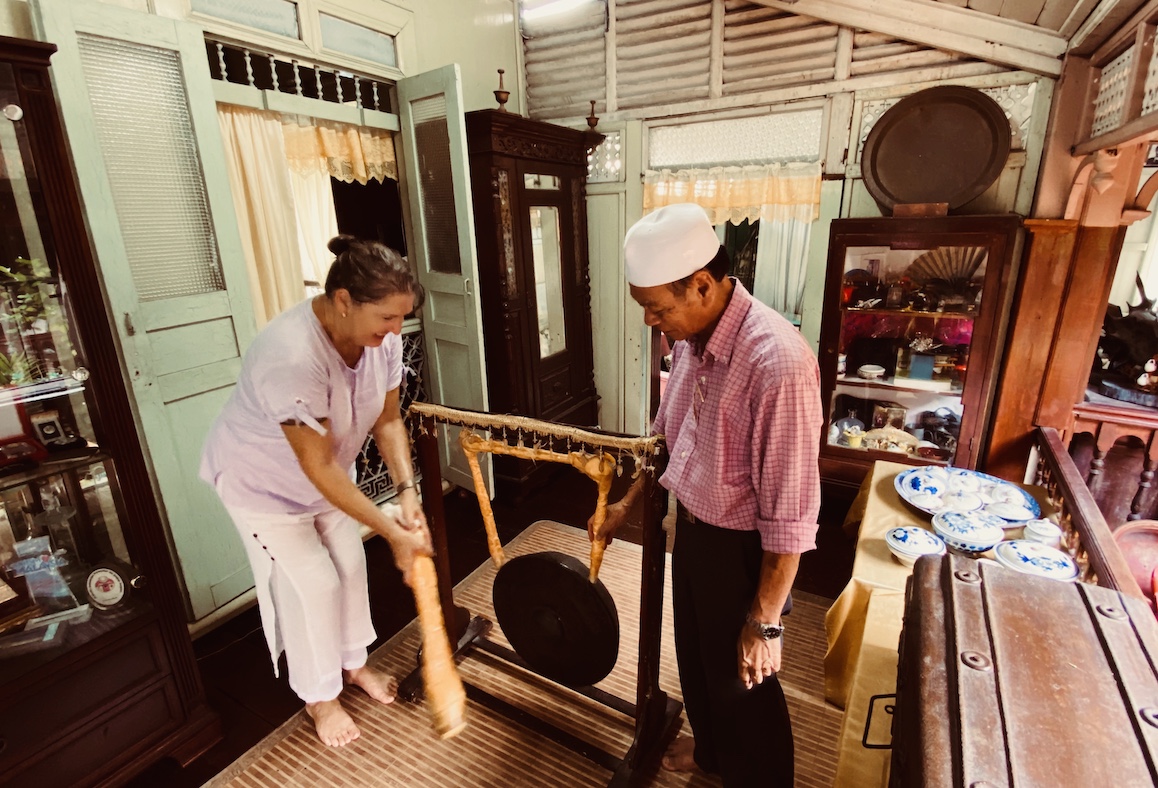
It was a fascinating afternoon and a wonderful way to spend our first afternoon in Malacca, especially since we had the opportunity to sit and chat with our host and other visitors in the sun lounge for quite some time after we’d enjoyed the tour of the home. For us, we can verify the saying: ”If you haven’t visited Malacca, then you haven’t visited Malaysia and if you haven’t been to Villa Sentosa, then you haven’t been to Malacca”!
En route to Kampung Morten we stumbled upon the Poh Onn Kong Temple, built in AD 1781 during the Ching Dynasty. It is one of the oldest Chinese temples in Malacca which has over 200 years of history. We learnt that the temple has the propagation of the two Doctrinal Systems, Taoism and Buddhism and the main deity to which it is consecrated is San Ping Cho's-su-kong (Guang Ji Master), a buddhist Zen-monk of the Tang Dynasty. Besides San Ping Cho'-su-kong, the temple is also a religious centre consecrated to deities Zhong Tan Yuan Shuai, Ma Zhu, Black and White Impermanence, Xiao Zi Ye, Gan Tian Da, Zhu Fu Wang Ye and Jun Ma Ye.
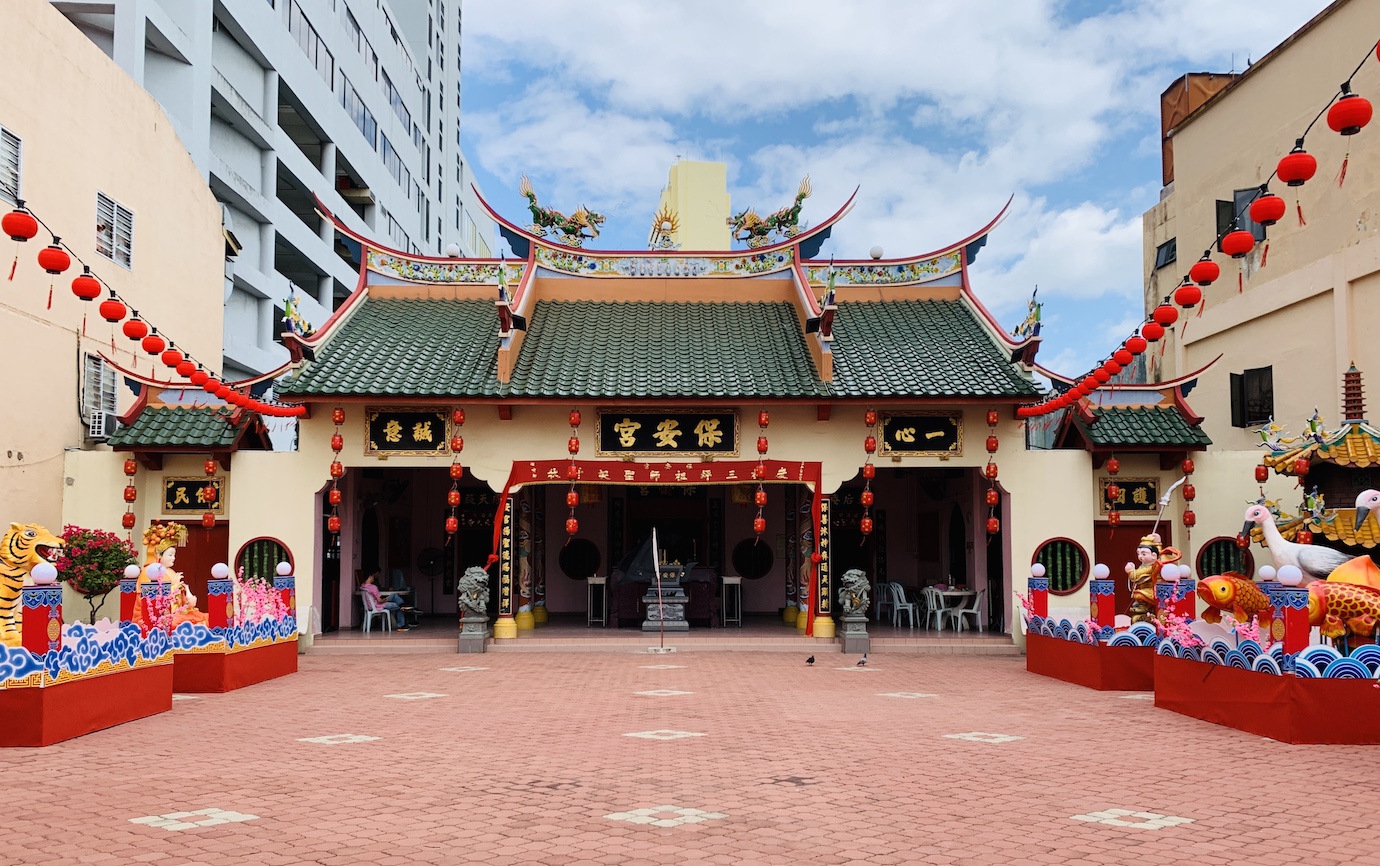
It was rather late by the time we returned to our hotel, but we were delighted we’d had some time to explore Malacca on the first day of our arrival, definitely tantalising our taste buds for the rest of our stay.
It’s fair to say, although it was Roy’s birthday the following day, we both had a fabulous day, full of surprises and wonderful explorations. Our day started with Roy opening his gifts, followed by a buffet breakfast in the hotel, which was really a complete waste of money paying for Elaine, since there was very little she could eat from the buffet other than the fresh fruit and a cup of tea. Fortunately she had come prepared this time, so her granola from “home”, packed with added fruits and nuts, accompanied by her almond milk, saved the day. With that, we were ready for our day of explorations, which started with a Grab ride to the far end of the route we wanted to walk and would then bring us back towards the hotel as we progressed.
First stop was Kota A’ Famosa, meaning “The Famous”, the ruins of the Portuguese fortress, dating back to the 1500s and where we found the Porta de Santiago, the small gate house and the only remains of the fortress. It is amongst the oldest surviving European architectural remains in SE Asia. With the arrival of a Portuguese fleet in 1511, under the command of Afonsa de Albuquerque, whose forces attacked and defeated the armies of the Malacca Sultanate, Albuquerque had the fortress built, believing that Malacca would become an important port, linking Portugal to the Spice Route in China. A very accurate assessment as history proved!
Extensions were added to the fortress around 1586, but it changed hands in 1641 when the Dutch drove the Portuguese out of Malacca. The Dutch renovated the gate in 1670, which explains the logo "ANNO 1670" inscribed on the arch of the gate and the logo of the Dutch East India Company on it as well, but it changed hands again in the late 18th century when the Dutch handed it over to the British to prevent it from falling into the hands of the French. Unfortunately the English then ordered its destruction in 1806. The fort was almost totally demolished but for the timely intervention of Sir Stamford Raffles, the founder of modern Singapore, who was sent on sick leave from Penang to Malacca in 1807. This intervention also included the reservation of the Stadthuys (City Hall) and its church and jail, another stop on our tour, but first we visited the nearby St Paul’s Church, the Melaka Sultanate Palace Museum and the Heritage Gallery before enjoying a coffee at Starbucks, part of the Dataran Pahlawan Melaka megamall. Who would have thought that the only place where Elaine could get a decaffeinated coffee with a non-dairy milk, outside of the western malls in Johor Bahru, was in a Starbucks and this trend continued for the rest of our stay in Malaysia.
St Paul’s Church, originally built in 1521, known then as the “Nossa Senhora da Annunciada” (Our Lady of the Annunciation), is the oldest church building in Malaysia and SE Asia. The original structure was a simple chapel built by a Portuguese “fidalgo” (nobleman), Duarte Coelho, in gratitude of surviving a storm in the South China Sea.
The chapel was deeded to the Society of Jesus in 1548 by the Bishop of Goa, the title deeds of which were received by St Francis Xavier. The chapel was then renamed “Igreja de Madre de Deus” (Church of the Mother of God) and extended in 1556 and 1590 with the addition of a second floor and a belfry tower, respectively. A burial vault was opened in 1592, housing the remains of many people of distinction of the time. St Francis Xavier used the chapel and a subsequent school attached to the church, St Paul’s College, as his base for his missionary journeys to China and Japan before his death in 1552, following which his body was temporarily buried at the church before it was finally shipped to Goa. An open grave in the church still exists today marking the place of Xavier's burial.
With the conquest of Malacca by the Dutch in 1641, the church was reconsecrated and became known as the “Bovenkerk” (High Church). With the completion of the new “Bovenkerk”, known today as Christ Church of Malacca, which was completed in 1753 and regarded as the oldest remaining Dutch historical building in the Orient, the old church was then deconsecrated and the structure modified and strengthened as part of the fortifications of Malacca. The nave of the church was then used as a churchyard. Unfortunately when the British occupied Malacca in 1824, the church was used as a powder magazine and was allowed to deteriorate further.
However, various efforts to preserve the records of monuments such as the tombstones found in St. Paul's Church have been underway since 1905. In 1924 the old Portuguese burial vault was partially uncovered and further excavation was done in 1930 during which time the tombstones that were scattered around the church were affixed to the walls. In 1952, a statue of St. Francis Xavier was erected in front of the ruins of the church in commemoration of the 400th anniversary of his sojourn in Malacca.
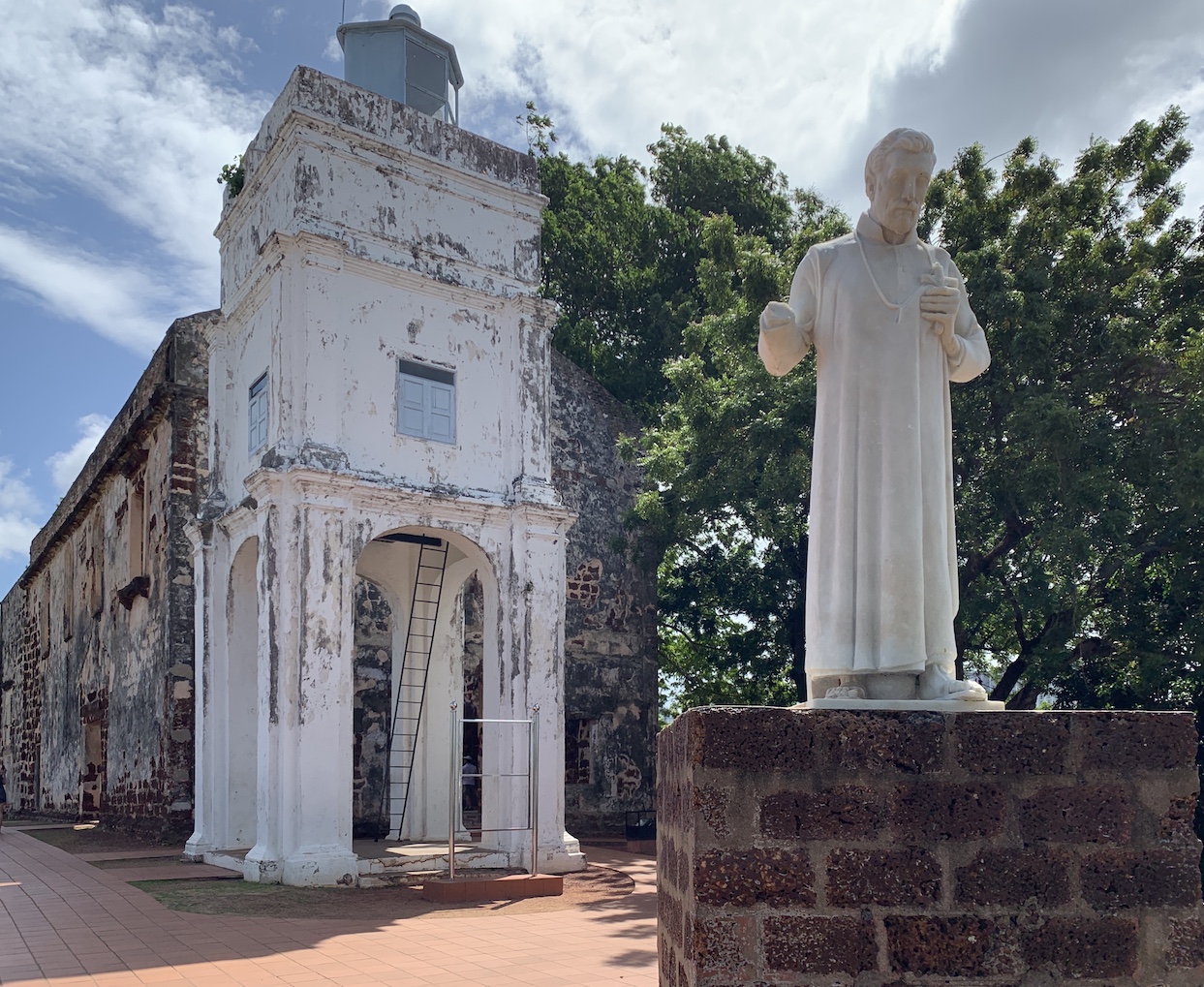
Reenergised by our coffee and having found our bearings, we set off again, walking purposefully towards our next set of attractions, when we suddenly heard: “Paw Paw, Paw Paw, Paw Paw”. Looking around to see where the sound was coming from, we spotted Jenny and Charlie off Lady waving profusely from the opposite side of the street. They’d left Lady in Singapore and were visiting Malacca with their friends Maggie and Don; what are the chances! As we repeatedly comment about these situation, we couldn’t have planned this encounter if we’d tried. Needless to say, after introductions, a good “chin-wag” ensued under umbrellas, as the afternoon shower passed over us.
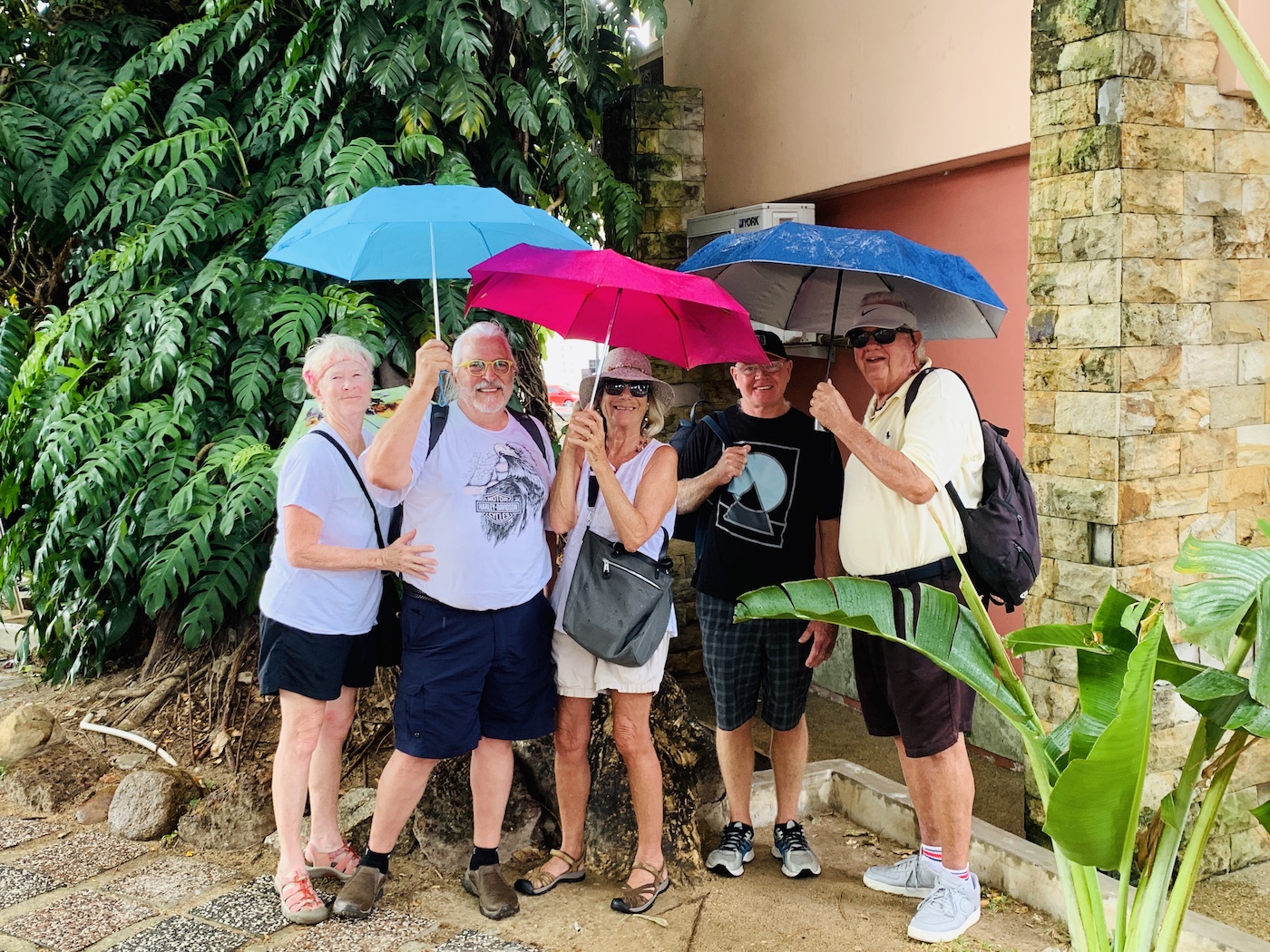
Having said our goodbyes to the crew of Lady for the umpteenth time and thinking this was definitely the final goodbye, we set off again in search of the Windmill Dutch Square, the Christ Church of Malacca, the Stadthuys, Queen Victoria's Fountain and the Malacca Clock Tower, all situated in an area of Malacca known as the Red Square and built by the Dutch in 1650 as the office of the Dutch Governor and Deputy Governor, with the exception of the fountain, of course, which was built by the British in 1901.
From there we strolled through Little India, but stopped at the Church of St. Francis Xavier on the way, built in 1849 by a French priest, Father Farvé, with the finishing touches of the building completed in 1856 and the present-day presbytery built in 1874, before returning to our hotel, exhausted from a fabulous day of sightseeing and happy to enjoy an early night.
It wasn’t long after we’d got back to the hotel room when the doorbell rang. To Roy’s surprise, and Elaine’s, when he answered the door, he was presented with a “Happy Birthday” slice of cake. It was such an unexpected event, that Roy was convinced Elaine had organised it, but she definitely could not take any credit; it was, in fact, an impromptu gesture from Hotel Management. So very thoughtful!
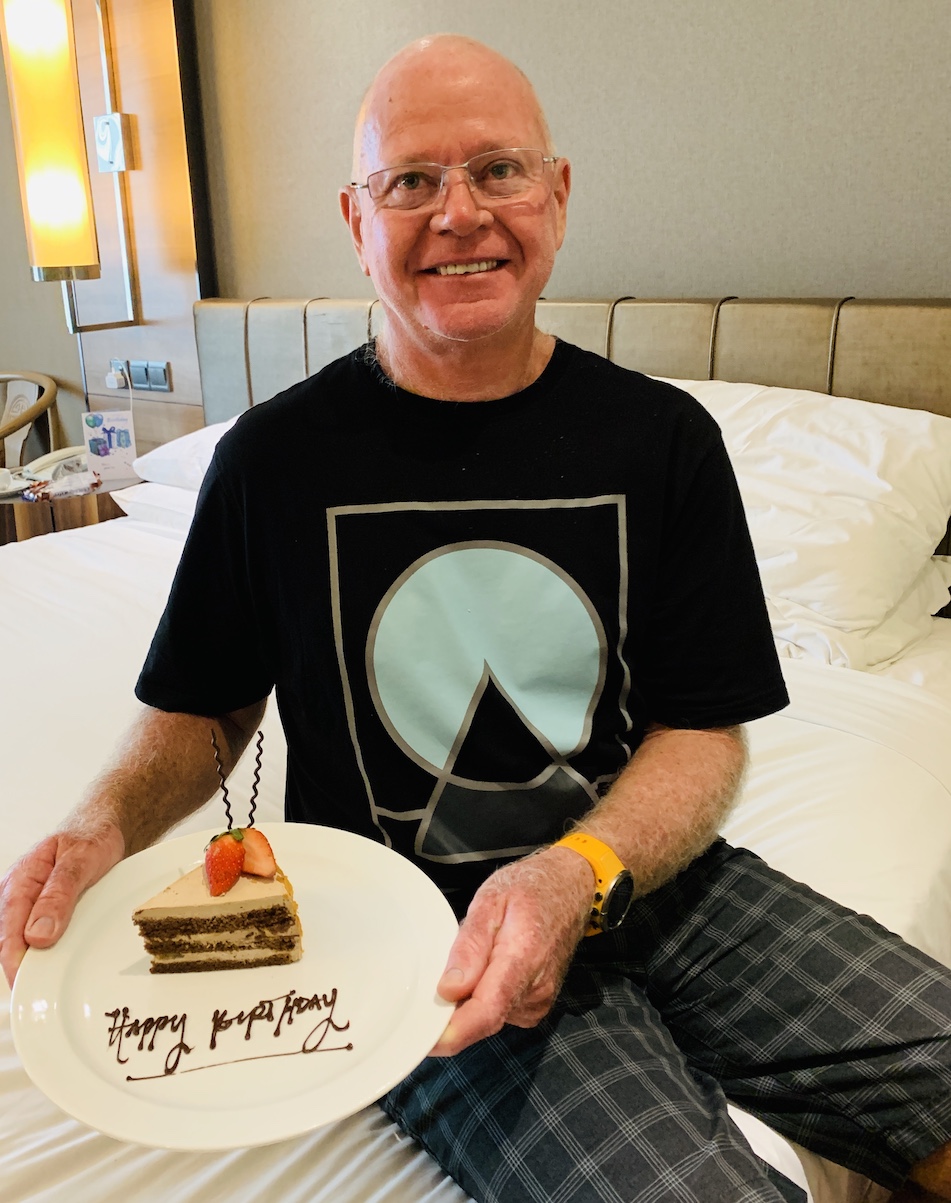
The next surprise was a message from the crew off Lady, inviting us to join them for dinner at the Wild Coriander restaurant. Unbeknownst to them that it was Roy’s birthday, it was, nonetheless, another unexpected gesture and a wonderful way to top off a fabulous day in Malacca over a delicious dinner in the company of friends!
Given the breakfast situation the previous morning, we decided that a more practical and less expensive option was to order room service. That way Elaine could at least supplement her gluten-free, dairy-free “granola” breakfast from “home” with most of what constituted the continental breakfast offered on the room service menu; freshly squeezed fruit juice, fresh fruit and a decaffeinated coffee or a choice of tea, instead of paying for a full buffet that she couldn’t eat. Roy enjoyed her toast along with his choices of the continental breakfast which included French pastries. And, with that, we set off on foot to continue our explorations of Malacca. Inadvertently it became a day of mansions and places of worship, notably our walk down “Harmony Street”, a reference by the locals to three consecutive streets in Malacca that are lined by mosques and temples of various demonisations.
Our first stop was The Majestic Malacca to savour the grandeur of this former mansion, although we were somewhat disappointed by its interior. The origins of this hotel began in 1929 when it was built as a private mansion for a tycoon named Leong Long Man. No expense was spared with imported Victorian tiles, stained glass windows and expensive furniture and fittings that were all incorporated into his home. Unfortunately he fell ill and died in 1931, just two years after moving in. His son, entrusted with the family estates, squandered his inheritance and eventually sold the mansion to a businessman named Lim Heng Fang in 1955, who preserved the building and converted it into The Majestic Hotel.
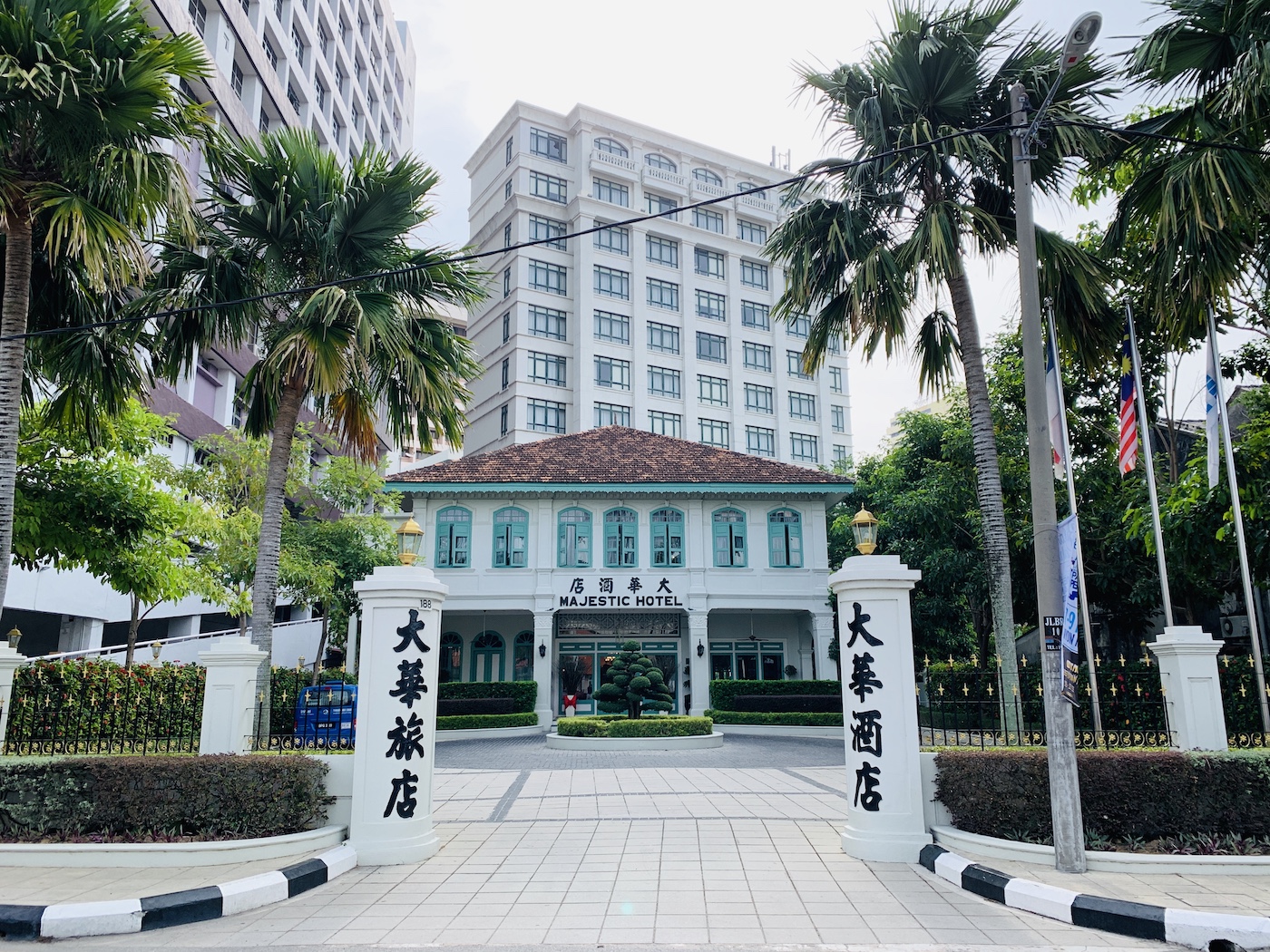
Very popular amongst the elite in the late 1950s and 1960s, it also played host to the first Prime Minister of Malaysia when he announced independence from the British in 1957. However, before its doors closed in July 2000, the hotel had taken a turn for the worst, operating as a guesthouse with a dilapidated air. A subsequent public outcry to have the mansion restored to its former glory and the acknowledgment that it formed an integral part of Malacca's rich heritage, the property was acquired by a hotel company. Sparing no expense, the historic building was fully restored and reopened as The Majestic Malacca in January 2008.
From there, a short walk took us to St. Peter's Church, but with a security guard standing outside that wouldn’t permit us to take in Elaine’s handbag, which resembles a very posh “rug-sack”, Roy waited outside, while Elaine enjoyed the tranquility and beauty of the interior.
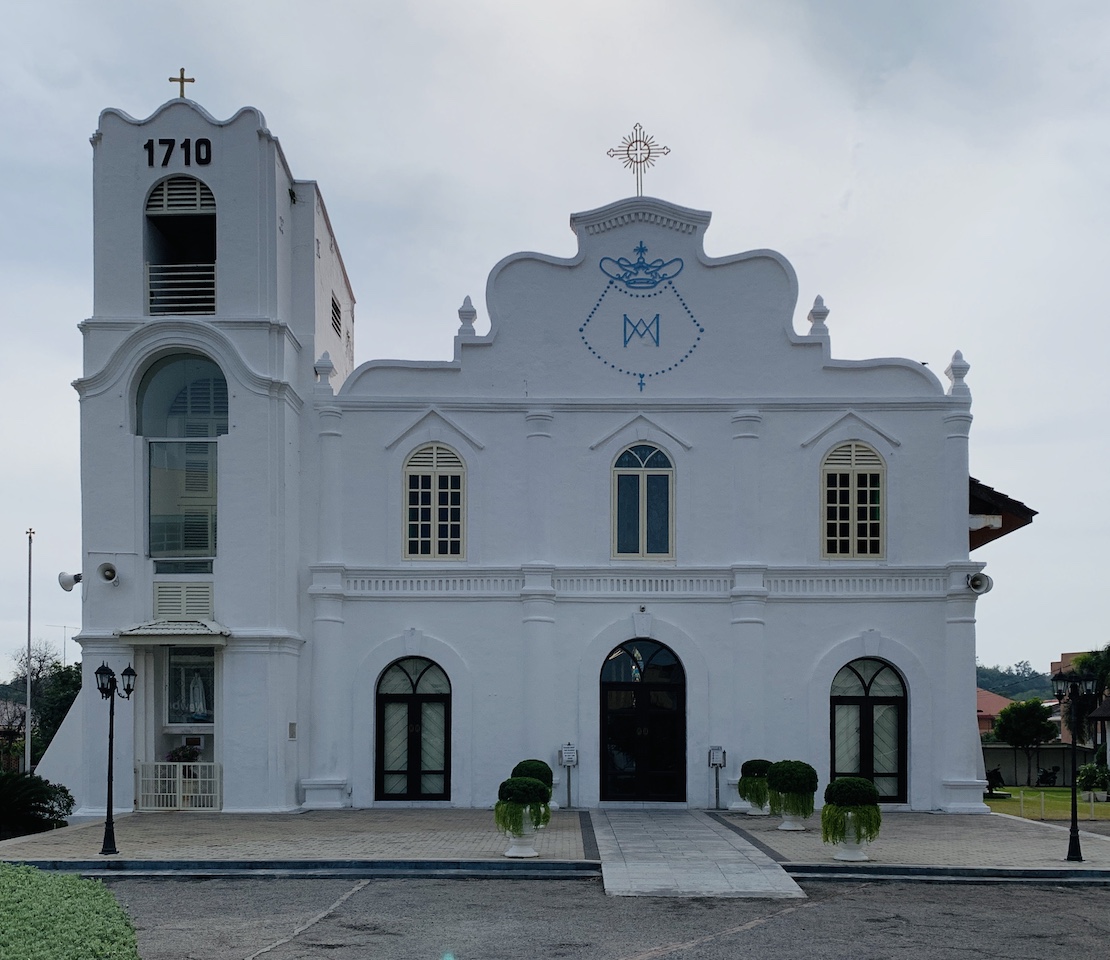
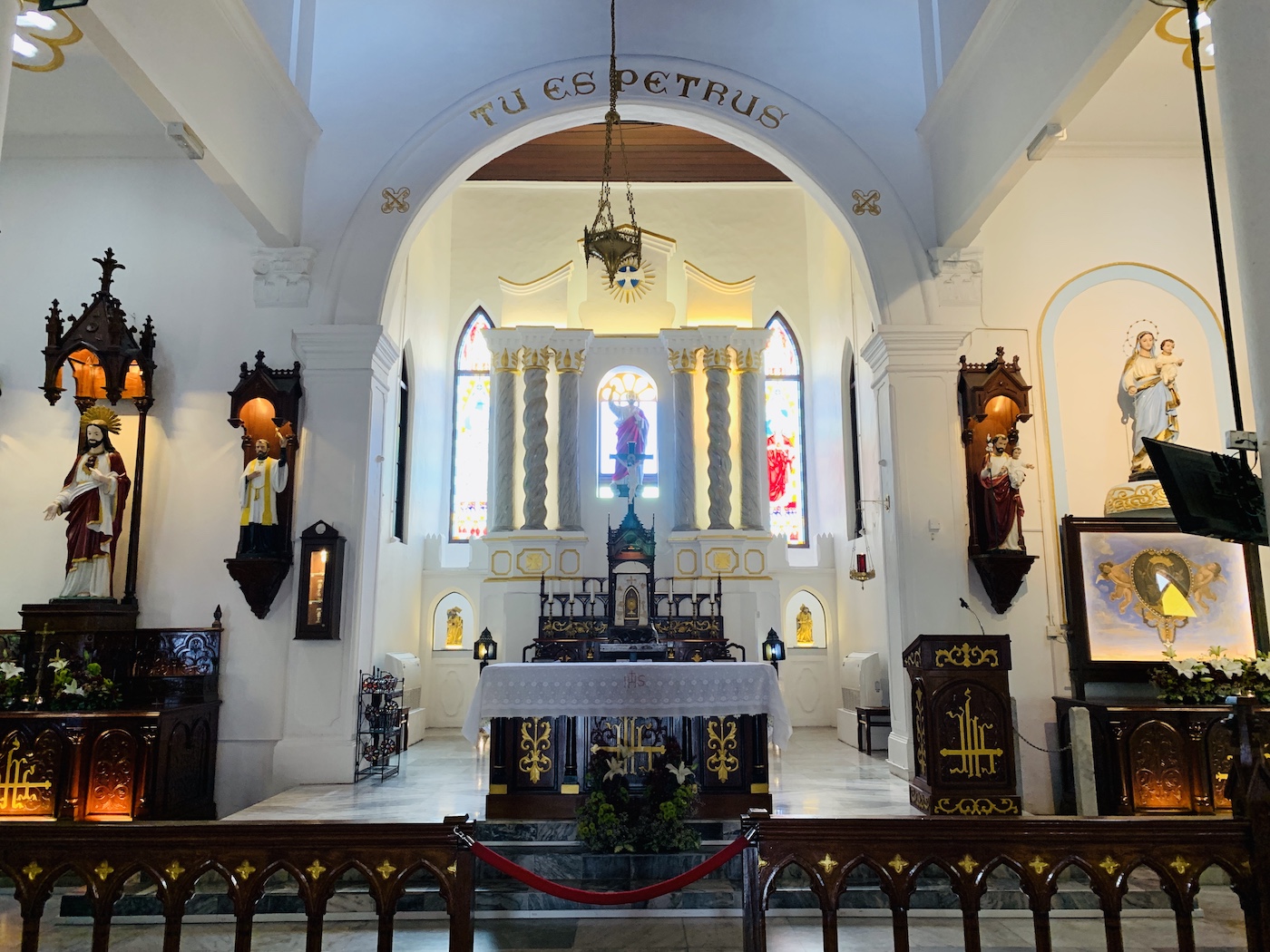
When the Portuguese occupation of Malacca fell to the Dutch in 1641, a period of persecutions of the Catholics followed. Churches were destroyed and Catholics were not permitted to have their own cemeteries or even pray in their own homes. Priests were also forbidden from administering mass. The war of the Spanish Succession resulted in an alliance being formed between the Portuguese and the Dutch in 1703. This resulted in the Dutch adopting a softer stance towards the Portuguese Catholics. After years of persecution, a piece of land was donated by a Dutch convert and the St. Peter's Church was built in 1710. One of its bells, cast in Goa in 1608, was salvaged from an older church the Dutch had burnt down. The church remains fully operational to this day and is the oldest functioning Roman Catholic Church in Malaysia.
From there we returned to our hotel to get a Grab to the top end of “Harmony Street”, in particular, to the Kampung Hulu Mosque, the oldest mosque in Malacca and among the oldest in the country. It was originally built around the year 1720-1728, which included the minaret, ablution pool and the entrance arch. In 1892 it underwent renovation, but it definitely doesn’t resemble the typical mosque architecture of today, with the dominant dome. Research revealed that the design is a cross between local Malacca Malay, Sumateran and Sini, with the minaret resembling a pagoda in the style of "Balai Nobat Melayu”.
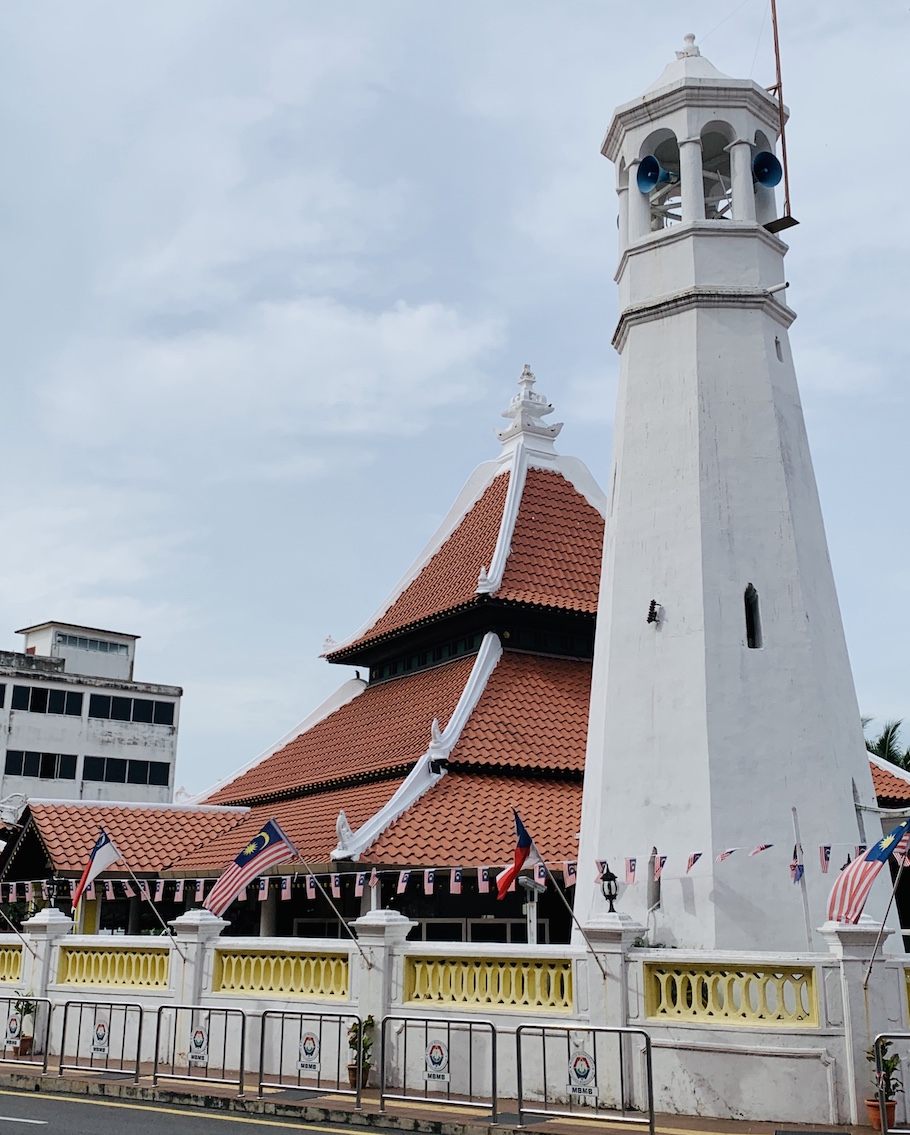
From there, our walk took us to the Xiang Lin Si Temple, a double-storey temple following the Buddhist branch of Mahayana Buddhism. For us it was a sanctuary to stop and rest, away from the madding crowd and the heat.
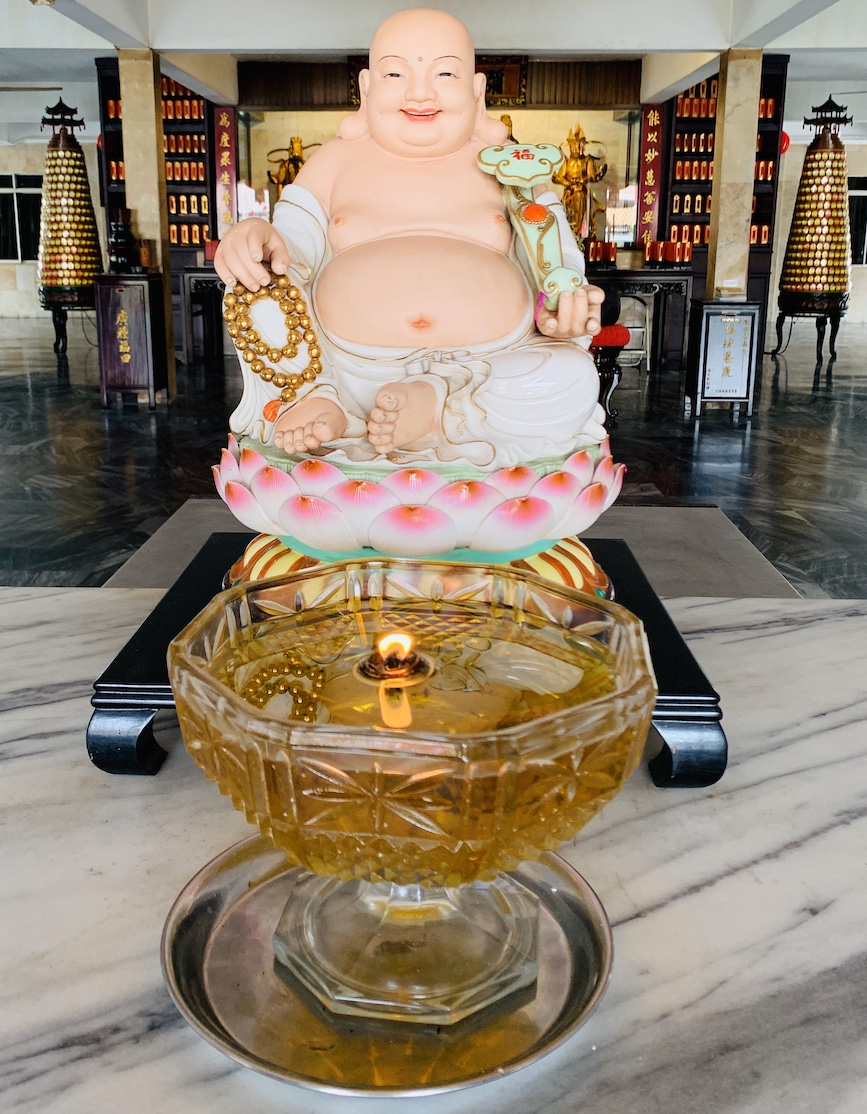
Next up was Cheng Hoon Teng Temple, also called the “Temple of Green Cloud”. It is a Chinese temple practising the three Doctrinal Systems of Buddhism, Confucianism and Taoism and is the oldest functioning temple in the country. It was founded during the Dutch occupancy by the “Kapitan Cina”, Tay Kie Ki (aka Tay Hong Yong) in 1645. The post of “Kapitan Cina” was a government position that existed in colonial Indonesia, Malaysia and Singapore and came with varying degrees of power; from near-sovereign authority with legal, political and military powers to an honorary title for a community leader.
Various additions and modifications took place to the temple over the following years, including additional structures erected in 1673 under the leadership of Kapitan Li Wei King (aka Koon Chang), with all the carved woodwork imported from China, in 1704 the construction of the main hall took place under Kapitan Chan Ki Lock, in 1801 the temple structure was renovated under the lead of Kapitan Chua Su Cheong (aka Tok Ping), father of Choa Chong Long, the first Kapitan of Singapore and in 2003 it was awarded a UNESCO award for outstanding architectural restoration.
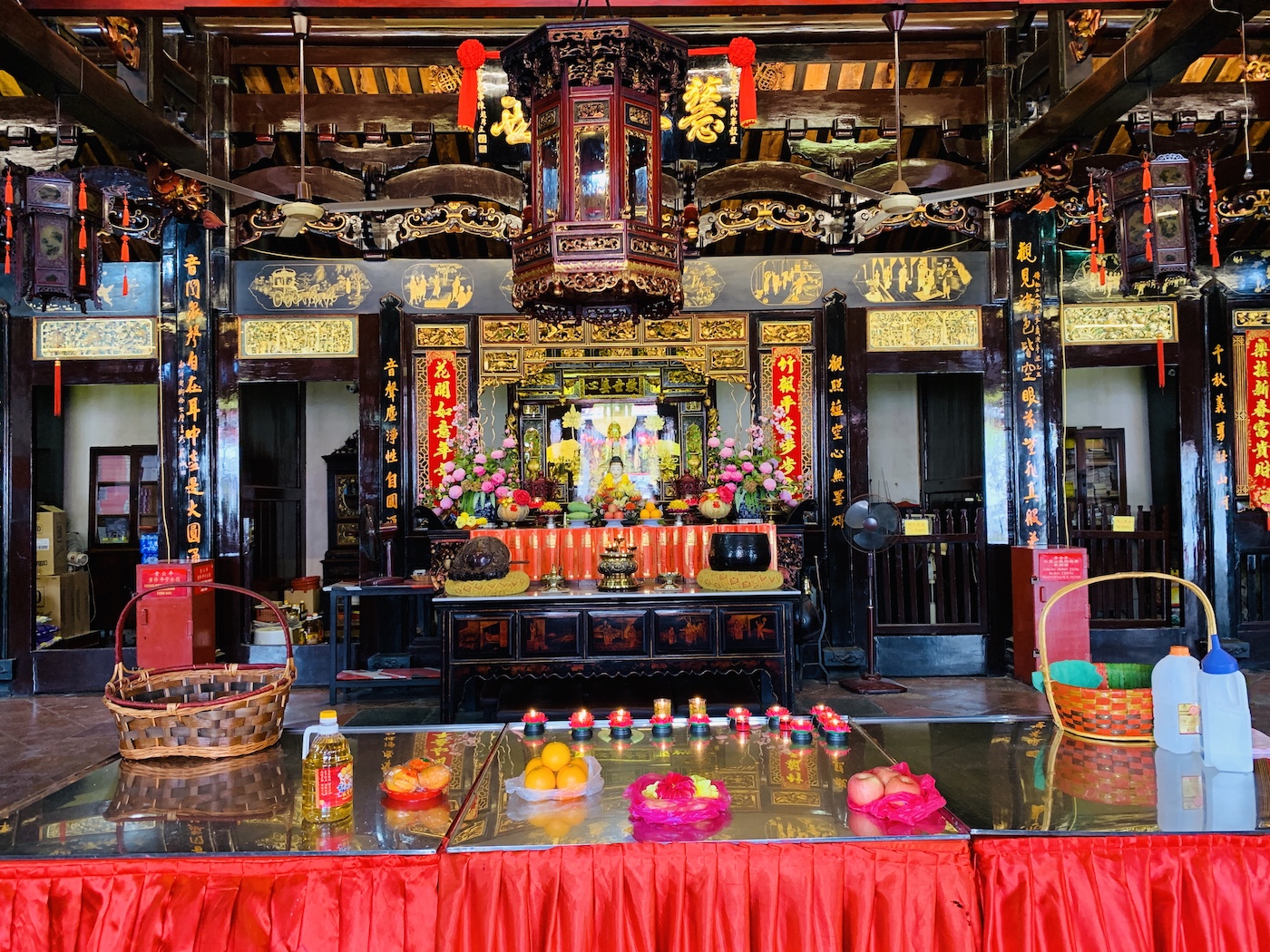
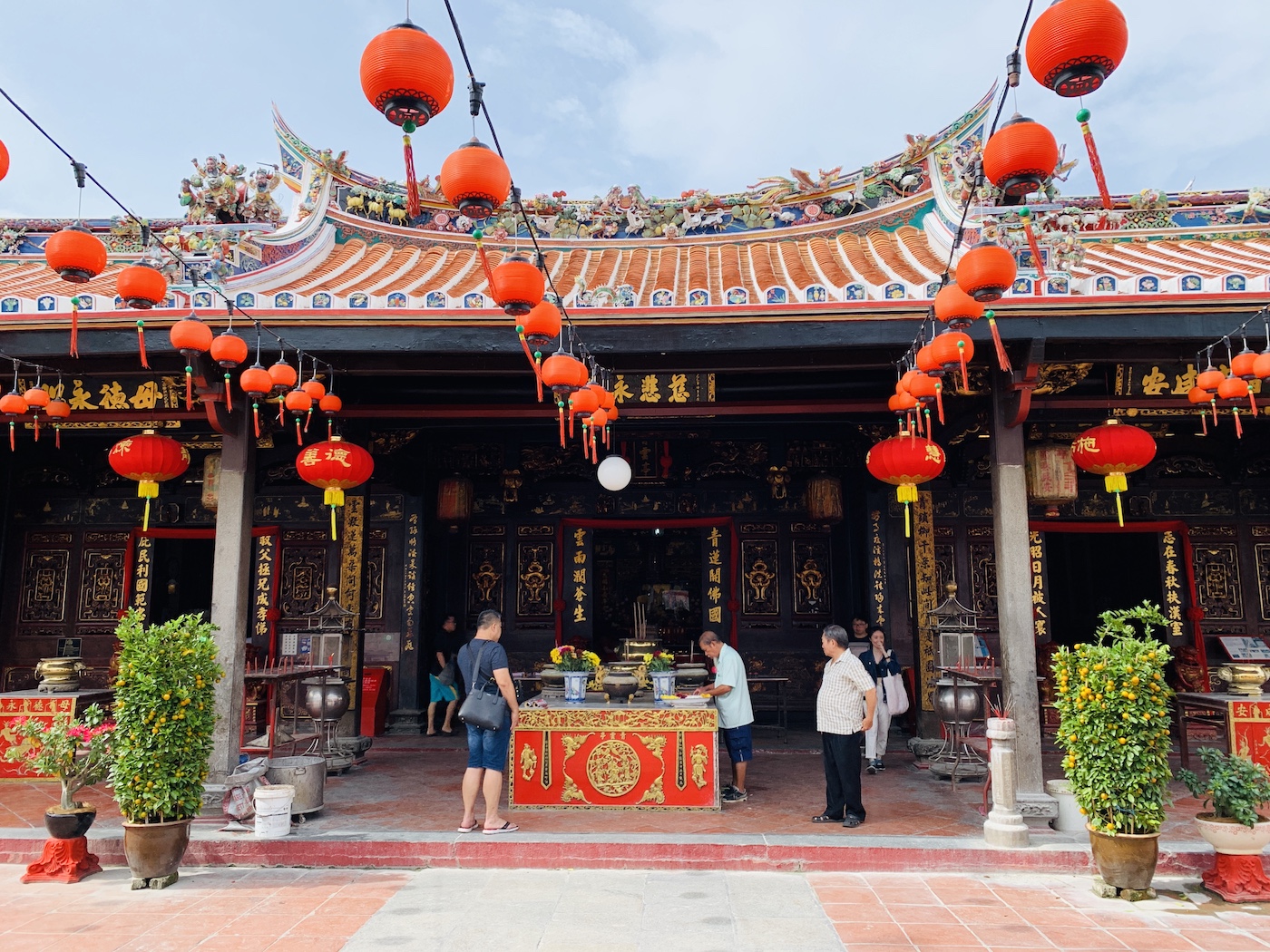
Our wanderings further along the street took us to the Kampong Kling Mosque and finally to the Sri Poyatha Moorthi Temple before we explored Jonker Street and Heeren Street.
The original structure of Kampung Kling Mosque was built by Indian muslim traders in 1748 as a wooden building, but later rebuilt in brick in 1872 and named after the area where the traders lived. It is one of the traditional mosques in Malacca, which still retains its original architectural design, a cross between Sumatran, Hindu, Chinese, Malacca Malay and has a blend of English and Portuguese glazed tiles, Corinthian columns with symmetrical arches in the main prayer hall, a Victorian chandelier, a wooden pulpit with Hindu and Chinese-style carvings and Moorish cast iron lamp-posts in the place of ablution for pre-prayer cleansing.
The Sri Poyatha Moorthi Temple is the oldest Hindu temple in Malaysia and one of the oldest functioning ones in SE Asia. It is one of the few existing “Chitty” temples in the country, built by Thavinayagar Chitty, the leader of the Chitty people, in 1781 after the Dutch colonial government gave him a plot of land. The temple is dedicated to Ganesha, the elephant deity.
Jonker Street was a dramatic change to what we’d seen thus far in Malacca, full of various stores bursting with wares of anything you can imagine; cloths, furniture, souvenirs as well as food stalls selling all sorts of strange delicacies. Before wandering along the street we visited the San Shu Gong store, where we were surprised to find such a variety of healthy snacks as well as ambassadors for a variety of causes, dressed in their finest for a television interview, much to Roy’s delight.
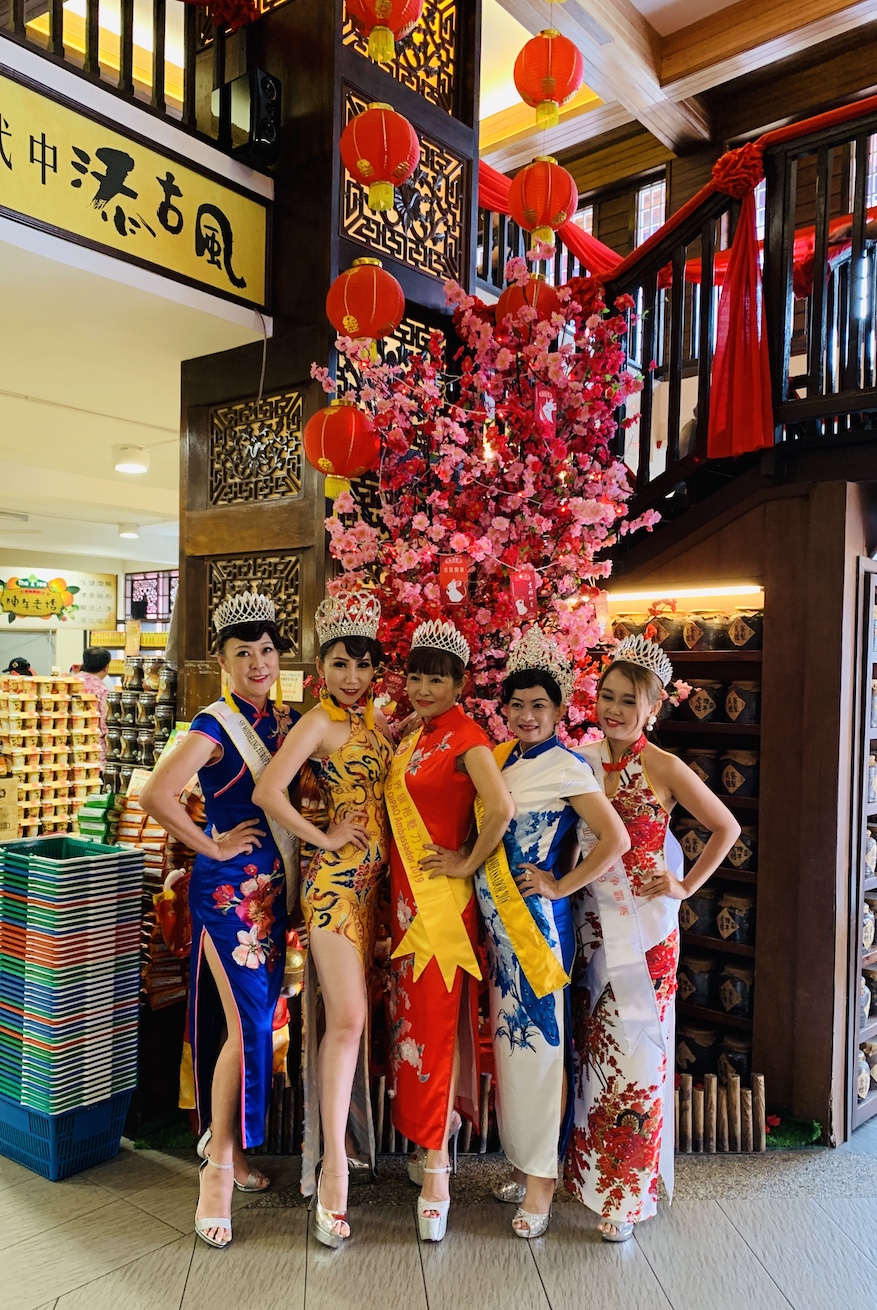
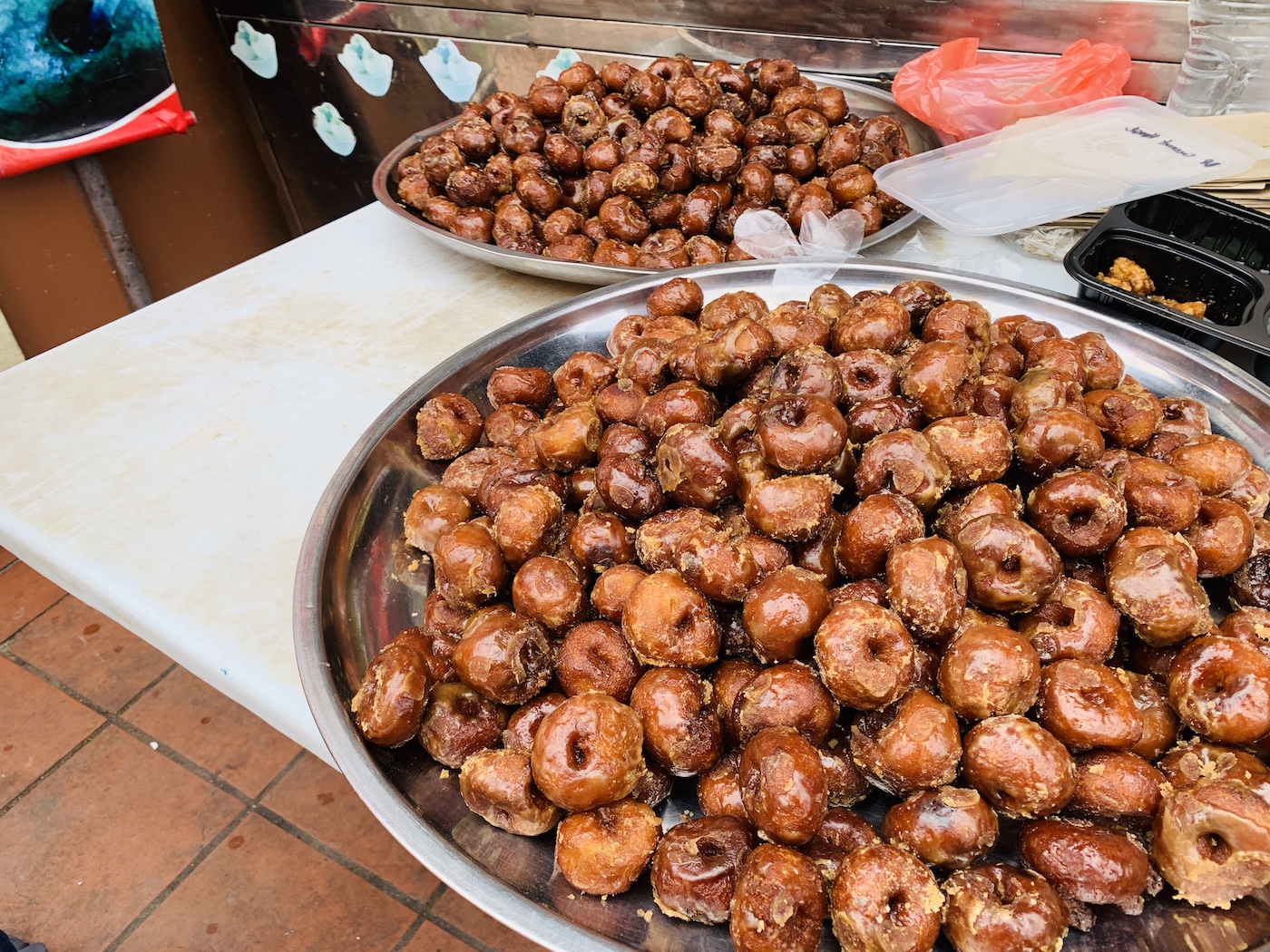
From there we stopped for lunch at the Stolen Cup café, following which our stroll took us up Jonker Street and back down Heeren Street, where we enjoyed the last of the historical attractions we wanted to see; the Chee Ancestral Mansion and the Baba & Nyonya Heritage Museum. The latter was a complete contrast to the lifestyle depicted by Villa Sentosa, the traditional Malay home. The opulence and wealth of the Chan family was clearly evident from the moment we entered the Grand Reception Hall with its silk embroideries lining the north and south walls, where the centrepiece of the latter depicts a Phoenix or “Feng Huang”, the second of the four supernatural creatures in Chinese symbolism and the former portraying the “Three Abundances” of blessings (the bats), good fortunes (the deer) and longevity (the cranes).
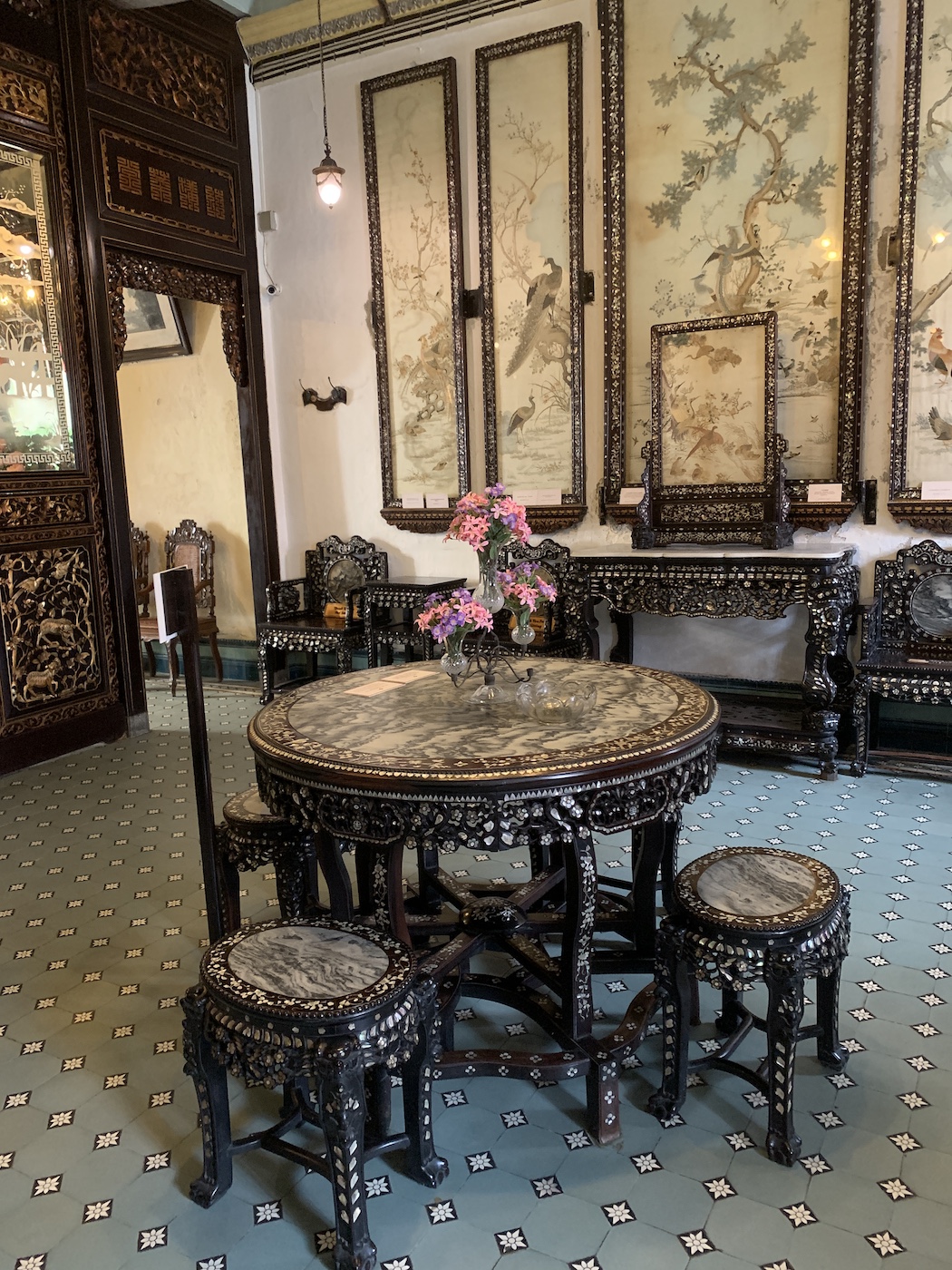
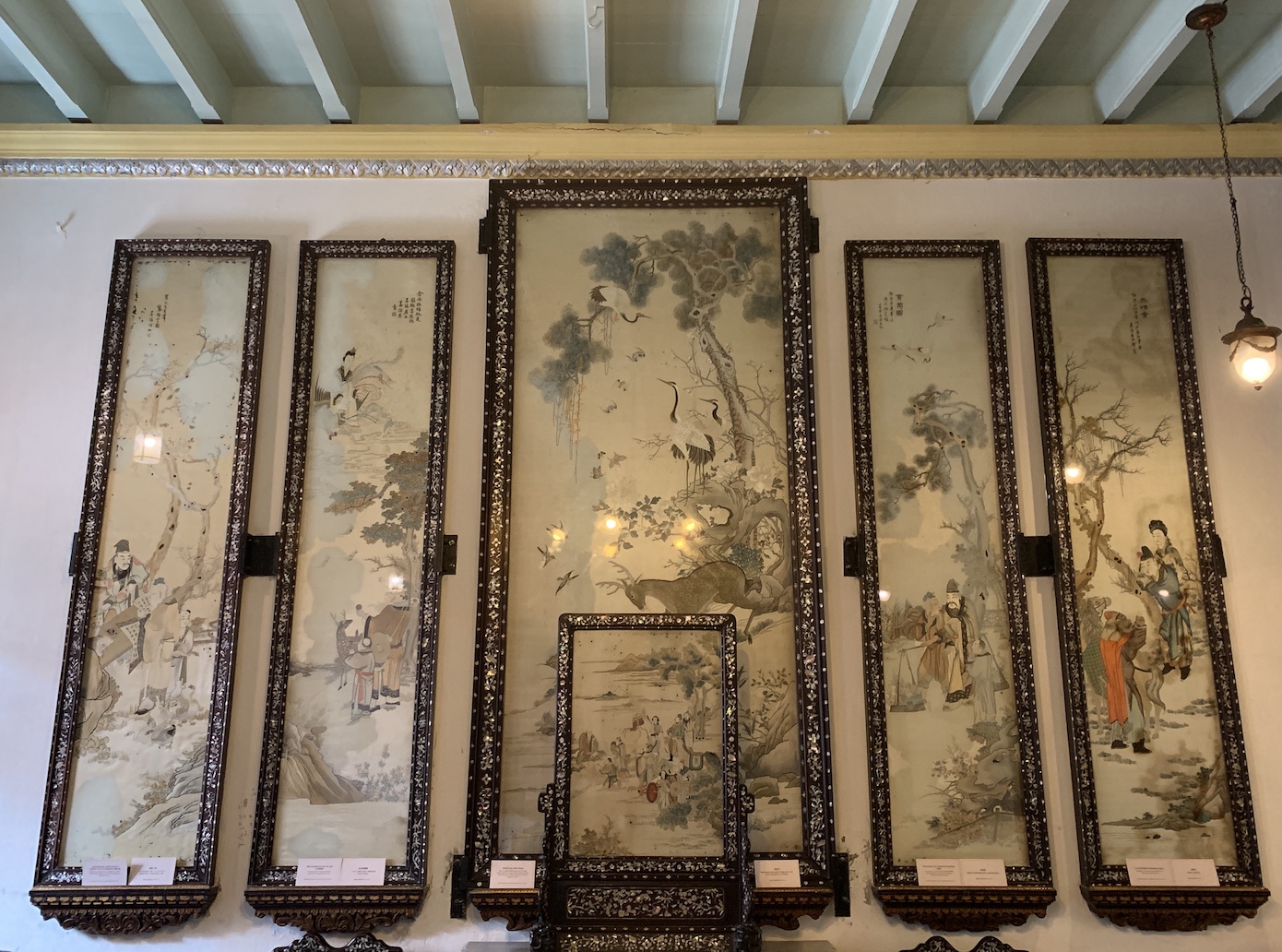
This grandeur continued through to the courtyard or “air-well”, onto the dining room where the colourful “Pinggang Mangkok Shanghai” porcelain, brought out on special occasions, was on display and upstairs to the Wedding Chamber, previously the master bedroom of Cheng Siew and Jee Geok Neo and later Seng Kee and Joo Suan. In the birthday and funeral showcase room we learnt the significance of the colour blue that became synonymous with the Peranakan funerals. It was the folding cover of the staircase, used for security, that caught our attention, though, as well as the beautiful antiques situated throughout the dwelling and the kitchen appliances, including the steamer, ice-cream maker, the ice-box and the string hoppers maker. It was a fascinating glimpse into the wealthy Chan family and their ancestors and a wonderful way to end our tour of this UNESCO World Heritage City, a most eclectic mix of cultures, cuisines, architectures, lifestyles and history.
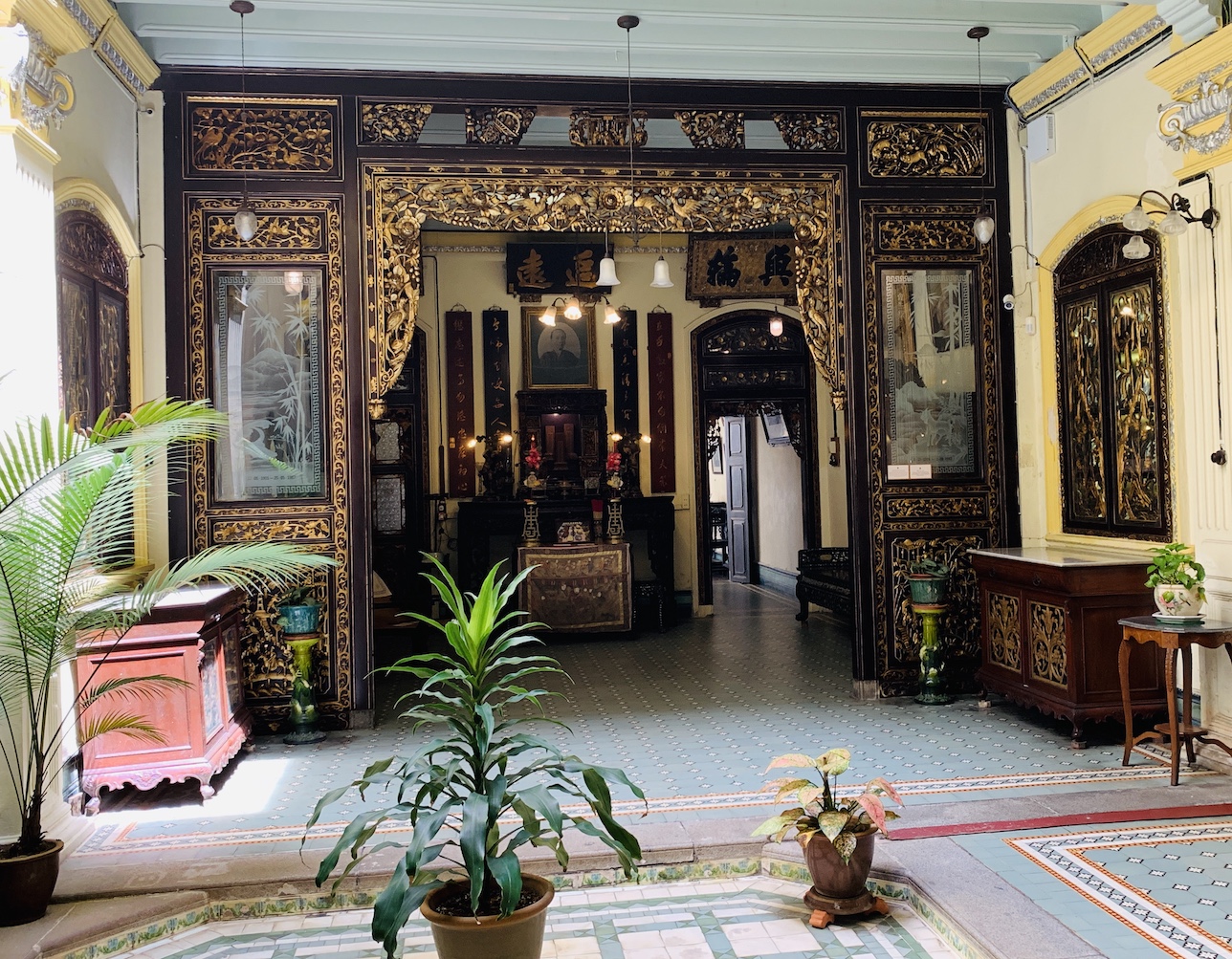
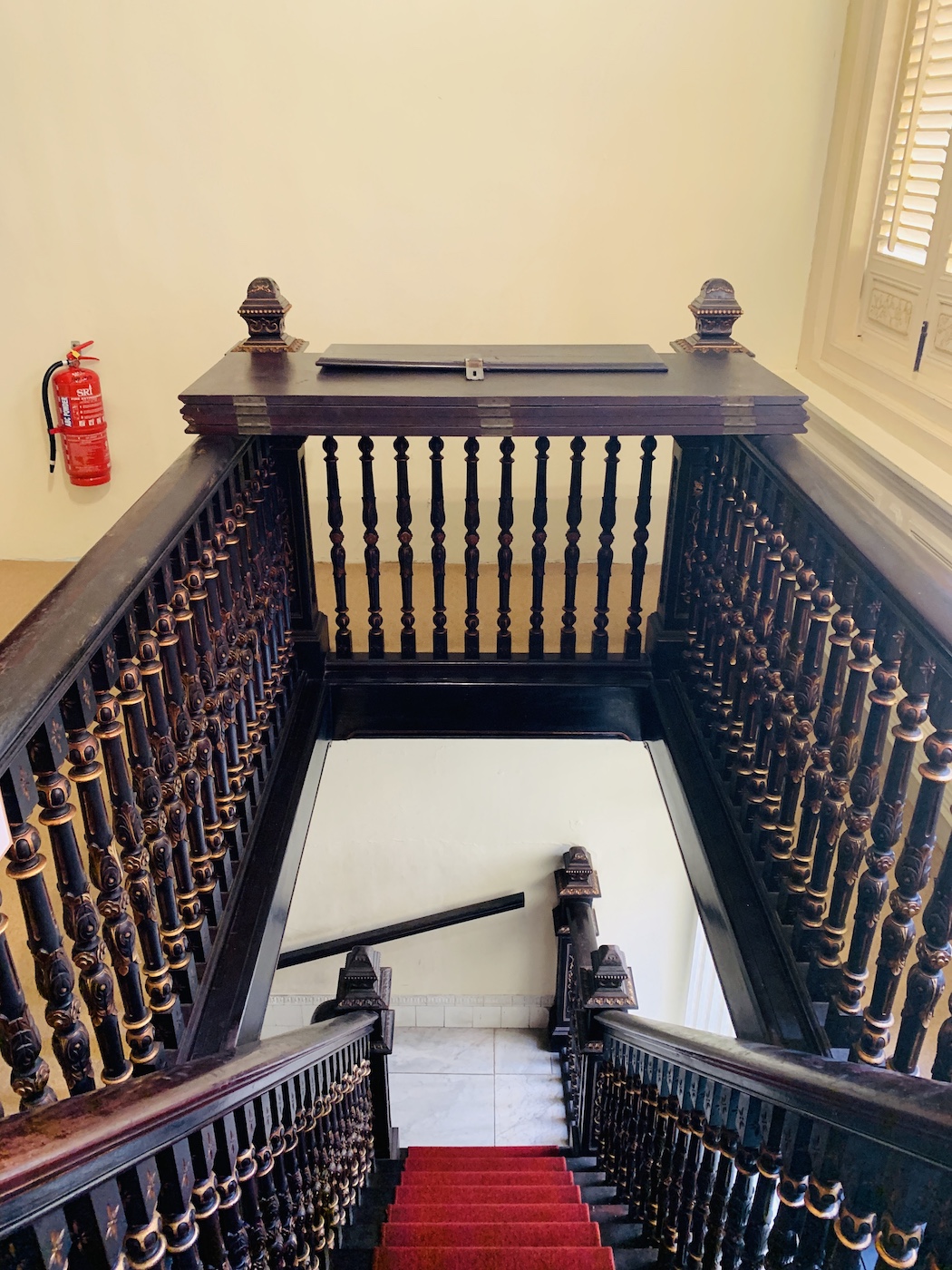
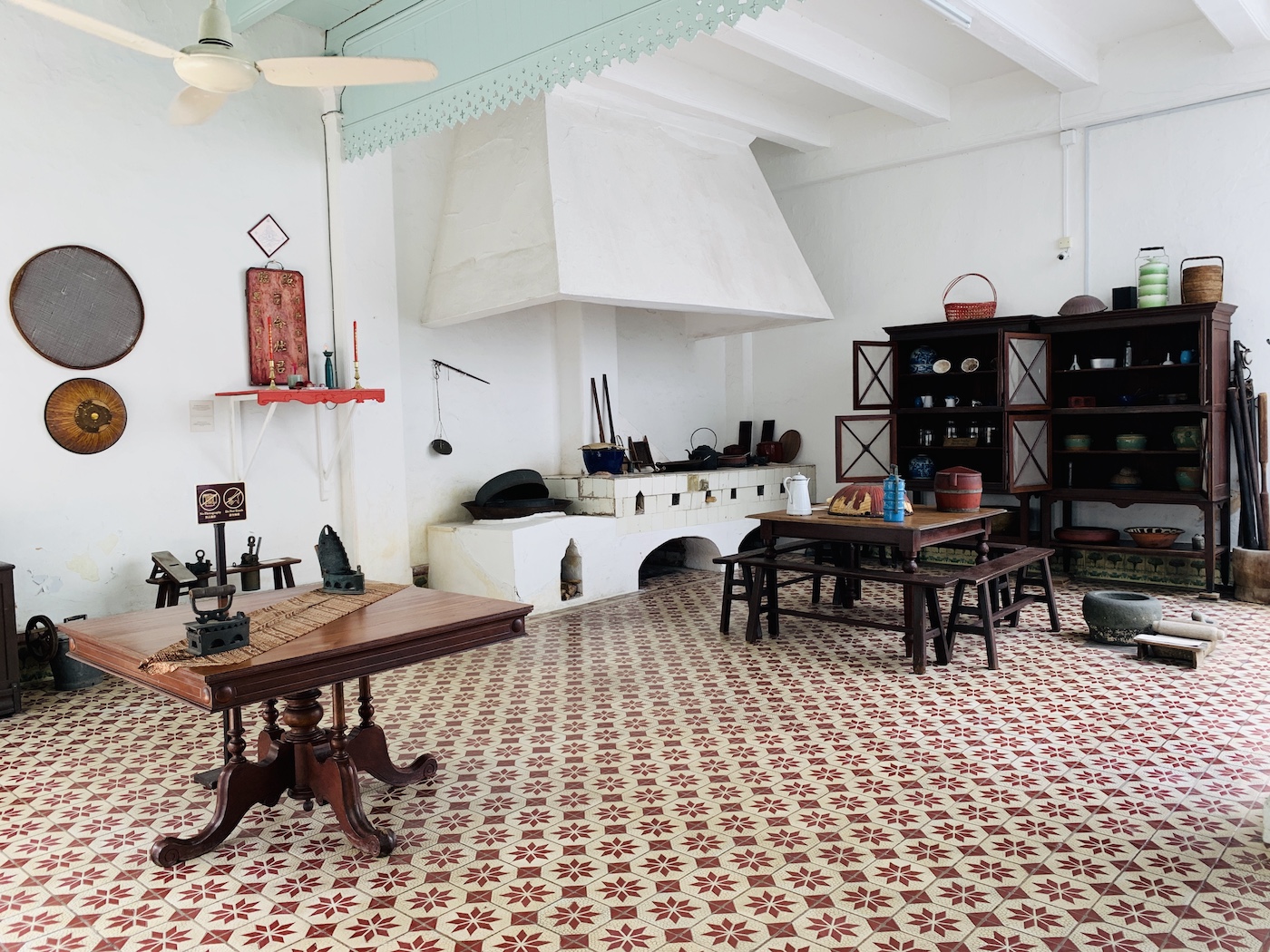
For us, however, it was time to return to reality; back to the hotel to get a Grab to the nearest grocery store to do our provisioning. The AEON turned out to be a very well stocked store, better than others we’d frequented, with a large selection of fresh produce at a fraction of the price we paid in Johor Bahru. We topped off our day with another delicious dinner, this time at the Bulldog restaurant just metres from our hotel’s entrance, a recommendation from the crew off Lady who had dined at this restaurant just a few nights prior, none of us knowing we were in such close proximity to each other at the time. It’s a strange ol’ world!
In a blink of an eye, after another room service breakfast, we were back onboard Paw Paw and pleasantly surprised to find the crew off Element back from their travels too. The remainder of our day, though, was spent getting our provisions stowed, getting unpacked and getting organised for our departure. That rolled over into the following day; getting the laundry done, filling the water tanks, filling the diesel tanks and Roy jumping in the water to inspect Paw Paw’s bottom and undertake some cleaning of the propellers, saildrives, throughhulls and waterline.
Over the next two days we continued our journey northwards having left Admiral marina at sunrise on Monday, 13th January 2020. Due to our early start, we unfortunately had the tidal current against us initially, but by mid-morning it turned and, under full sails with 8 Kts of wind out of the west, we were able to dial back the engines. By midday we were flying along at 9 Kts, all thanks to Mother Nature and the spring tides producing a tidal current of around 2.5 Kts to 3 Kts; we were enjoying another fabulous magic carpet ride.
Getting into our anchorage that afternoon, though, was a tad tricky considering it was low tide by the time we reached the entrance of Selat Lumut and there was a fishing net straight across the deepest water. Just typical! So, a gingerly crawl around the net got us over the bar and by 1500 we were set for the night; anchored off Palau Indah. We had originally planned on anchoring off Palau Pinto, but, with the strength of the tidal currents, we decided it would be a more comfortable night tucked up Selat Lumut rather than Selat Che Mat Zin. Other than a chat to Keenan and the entertainment of watching the fishermen partake in drift net fishing, something we hadn’t seen before, dinner and a movie sealed the day.
This trend of current and wind continued, except we didn’t set the alarm, deciding to rather weigh anchor a little later on the morning of Tuesday, 14th January 2020, and catch the top of the high tide so as to take full advantage of the ebbing tide.
Mixing it up with numerous cargo ships that morning was not the best start to the day, though, as we progressed up Selat Klang Selatan towards Port Klang and then on to Selat Klang Utara on the northern side of the port. We had hoped that our timing of the ebb tide would allow us to ride the associated tidal current sooner than the previous day, but that didn’t happen until around mid-morning again. Clearly the overrun was a lot longer than we expected and it didn’t help that one particular fishermen had placed his net all the way across the shipping lane at the junction of Selat Klang Selatan and Selat Klang Utara. He clearly knew the cargo ship schedules, but forced us to make another detour. Regardless, though, we reached our intended anchorage off Angsa Lighthouse much sooner than we expected. With seven hours of daylight remaining and the current definitely with us by then, we decided to continue on with the plan of anchoring somewhere south of the Bernam River.
By 1730 we had dropped the anchor off Sungai Besar, but with the strange contouring of the seabed, we were almost 1NM off the shoreline and only in 10ft of water on the rising tide. We were hopeful, nonetheless, that our calculations were correct on the tidal range and that we would had enough water below the keel at low tide, but this was as close as we dared to venture. None of this mattered in the end, however.
After being nicely settled for an hour, we were informed by a couple of fisherman that we couldn’t anchor where we were as all the fishing nets were drifting towards us. With sunset only an hour away, we were informed we had to move to the next bay some 7NM away, but that was the least of our worries; it was the millions of fishing nets that were already set that were the nightmare we had to navigate through. Zigzagging this way and that, we eventually made it through the maze as daylight faded and we dropped the anchor again. Exhausted from our day, it was dinner and bed, but not before we lit Paw Paw up like a Christmas Tree; flashing light on the helm station roof, deck light on and cockpit light on, given that we were still anchored a mile off the coastline. It seemed our day ended the way it started; mayhem! After that nightmare, at least our efforts were rewarded with a reasonably comfortable night’s sleep, considering it was an open roadstead and we had shaved off a day of our passage to Pangkor Island.
As we approached the islands of Pangkor and Laut Pangkor on Wednesday, 15th January 2020, we were reminded of Belitung in Indonesia with the similar limestone rock formations, but the beauty of the scenery was somewhat spoilt by the power station and cargo terminal used to supply this facility with coal, both located on the mainland and to the east of the island group. We also had a few more fishing nets to avoid, although nothing like the previous evening and we had another “bum-lifting” entrance to the anchorage just off the Pangkor marina, with less than 2ft under the keel, as we crossed the deepest part of the bar at low tide. We did, however, find the deeper “hole” where cruisers before us have ventured and by 1430 we were anchored for a quick overnight pitstop, primarily to satisfy our curiosity on the haulout facilities here and to consider some land travel to the Cameron Highlands. After making enquiries and considering our options on the latter, we decided to forego this particular adventure for the foreseeable future, but our visit to the marina office did yield two loaves of gluten-free bread; definitely an unexpected find.
Tired from our long days of sailing, we returned to Paw Paw for a quiet evening and an early night; a barbecue and a movie was all we could muster. The highlight of the day, though, was being able to video call the family in Arizona while we were sailing miles off the coastline. In fact, we’d had better reception than where we’d anchored.
After we both enjoyed a great night’s sleep, once the ferries had stopped running and we didn’t have to endure their wakes and coming ridiculously and totally unnecessarily close to Paw Paw, given that we were the only yacht in a wide open anchorage, we were woken up by the first ferry of the day, but discovered two more yachts had arrived overnight. Regardless, that was our cue to weigh anchor and leave mainland Malaysia for Laut Pangkor Island and the west side of Pangkor Island.
By the time we dropped anchor off Bogak Beach it was close to 0830 and we were delighted to find a lovely long stretch of beach, lush scenery and a holiday vibe with numerous “resorts” (aka hotels) scattered along the waterfront. The decision on what to do for the day swiftly followed breakfast, with a general consensus that we both wanted off the yacht to stretch our legs. That decision was swiftly followed by the decision to visit the 17th century ruins of the Dutch Fortress and from there take a walk to the Fu Lin Kong Temple, based on the distances provided by Google Maps. It was the very helpful receptionist at the Vikri Beach Resort who arranged a taxi for us, but by the time we reached the ruins we realised we wouldn’t be walking anywhere; the distances were miles out. It was then that our taxi driver, Sam, jumped to the rescue and for the bargain price of RM75 / $18USD offered us a tour of the island and, with that, a wonderful unexpected day of adventures unfolded.
As our tour progressed it became abundantly clear that we were experiencing rural Malaysia for the first time; there were very few cars or motorcycles on the roads, no traffic lights, no fast food chains, no malls or supermarkets, no restaurants, bars and cafés, etc. There were, however, plenty of “eating facilities”, scattered across the small villages we drove through, naturally segregated by ethnic group; Malay, Chinese, Indian. That translated to the location of the various places of worship we visited and the size of the homes, etc. However, although there was nothing that could remotely be described as affluent, opulent or prosperous by material standards regarding daily life on Pangkor Island, everyone we met was very friendly, helpful and humble; content with their way of life and it was obvious that our “tour guide” was very proud of his island, informing us that people here have a “slow pace” of life, there’s no crime and one never has to lock ones doors at night.
Given that we were already at the Dutch Fort, it was agreed that our tour would commence there. Known as Fort Dindingh, built by the Dutch in 1670 and named after the Dinding River on the mainland, the fort was used for storage and protection of tin supplies from the Sultanate of Perak, but was destroyed in 1690 by the Malays who were discontented with the methods used by the Dutch to obtain minerals in the area. It was then rebuilt by the Dutch in 1743, and a force of 60 soldiers were placed to guard the fort until 1748, after which it was disbanded and abandoned. In 1976, after some reconstruction was undertaken of the ruins, they were gazetted as an ancient monument and historical site under the Antiquities Act of 1976.
Our next stop was definitely the highlight of the day. Seeing the floating mosque, Masjid Al-Badr Seribu Selawat, as we approached Pangkor the previous day was one thing, but being allowed to enter it was an entirely different matter altogether. Having to wear the full robes, including the headdress for Elaine, was worth every minute we enjoyed. It was the first time either of us had the privilege of entering a mosque and we couldn’t have picked a more beautiful one for the experience. We were told ahead of time that parts of the Quran are inscribed on the walls, but we had no idea what to expect; it was stunning!
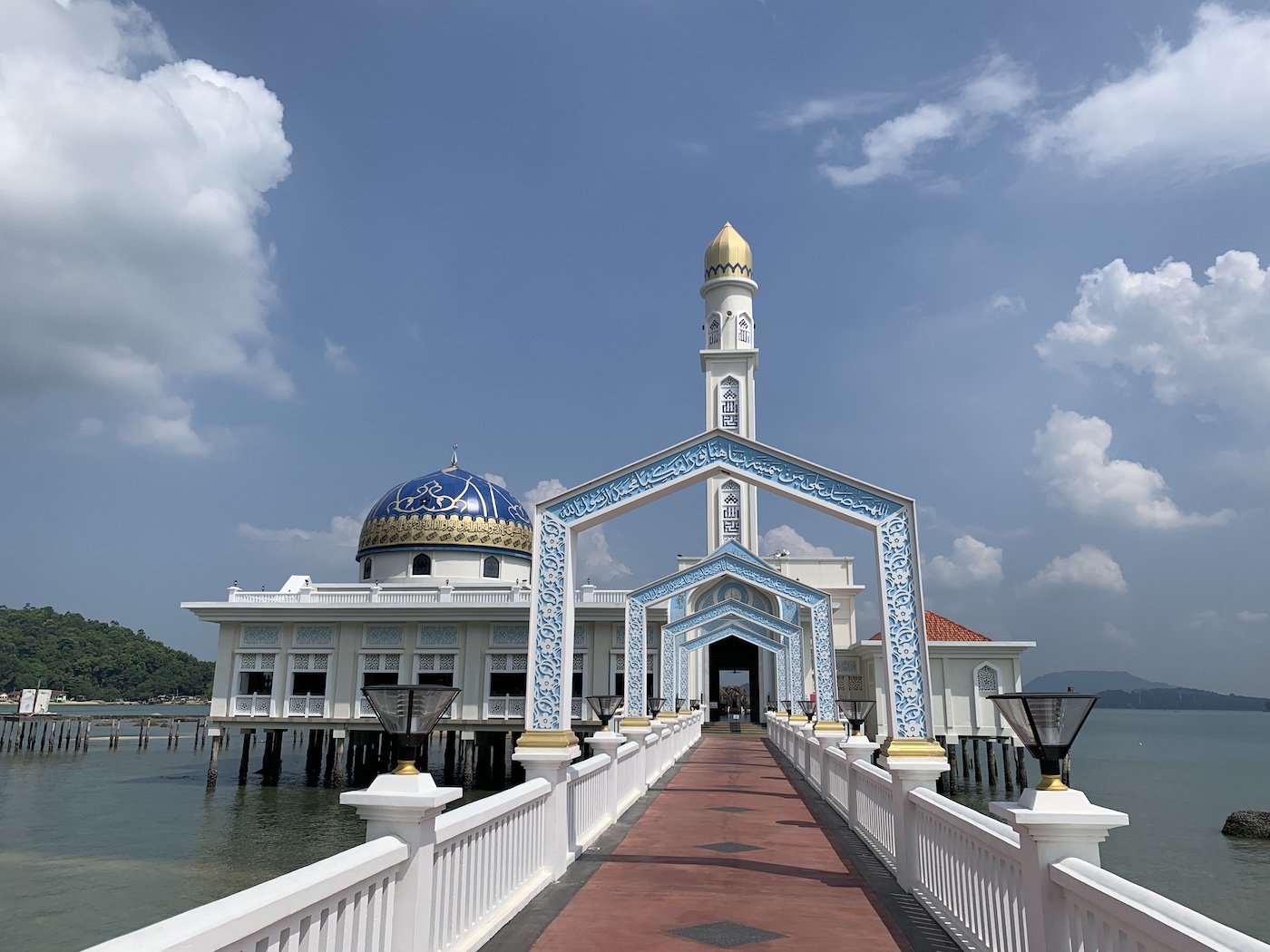
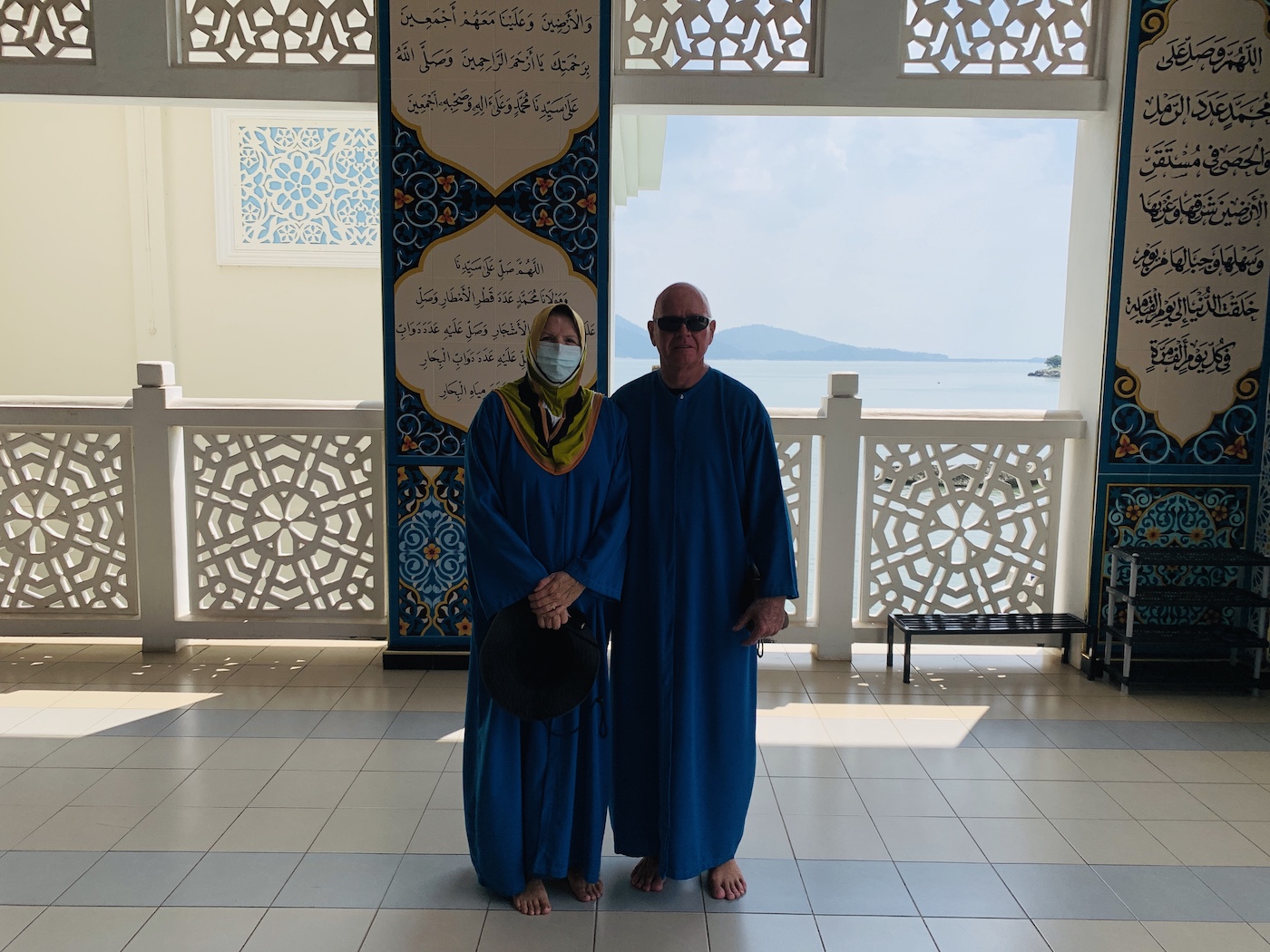
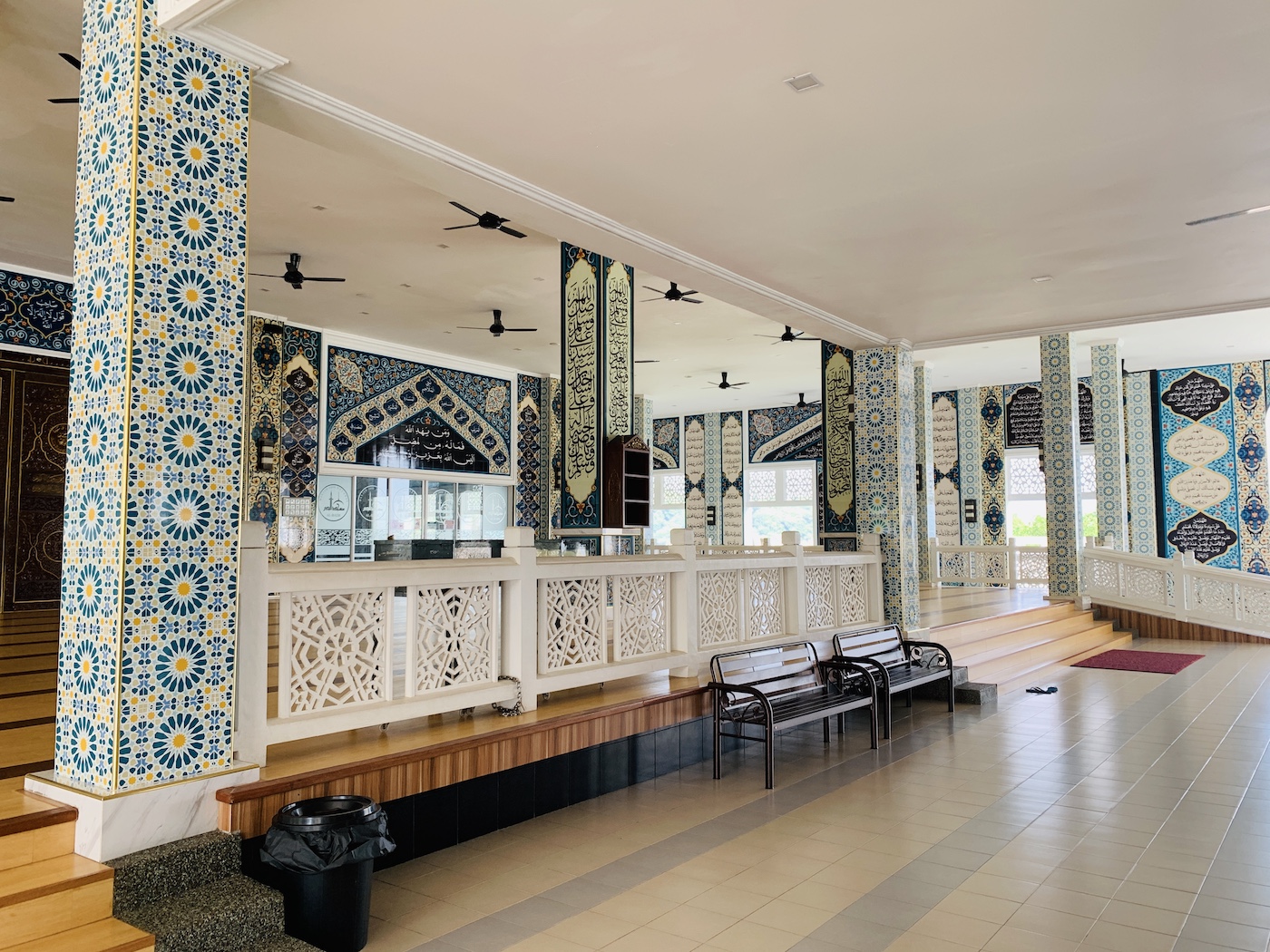
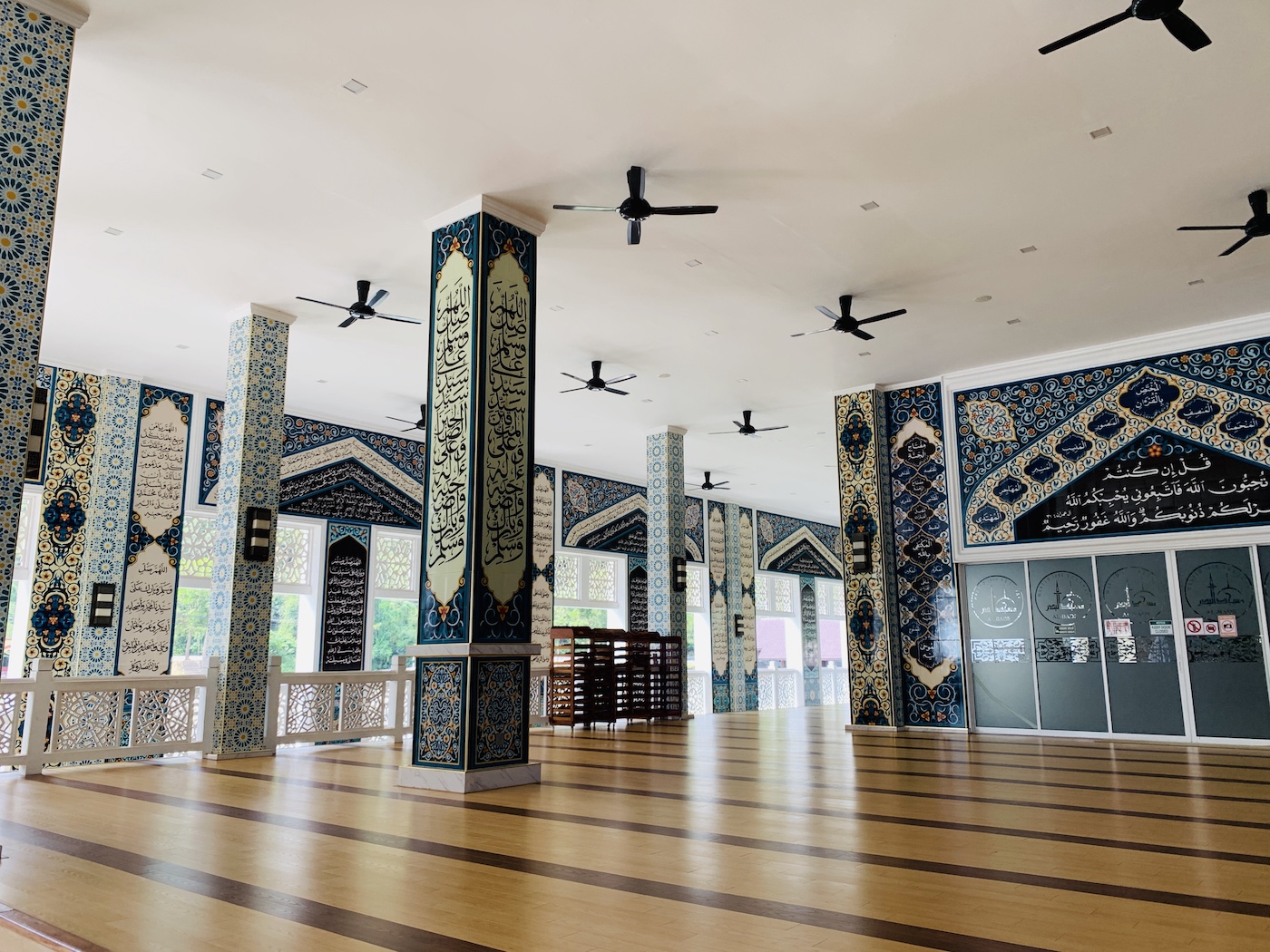
Further research revealed that the mosque was completed in October 2016, built at a cost of RM11.7 million and taking just over two and a half years. The opening was officiated by the 35th Sultan of Perak, HRH Sultan Nazrin Muizzuddin Shah in June 2017. Apparently it was the dream project of Dr. Zambry Abdul Kadir, the 11th Menteri Besar of Perak, who was born on Pangkor Island. In Malaysia, the term “Menteri Besar” signifies the head of government, one for each of the nine states that have hereditary rulers. For the four states without a monarch, the title “Chief Minister” is used.
Other distinctive features of the mosque included the unique Perakian architecture, with aspects of Turkish and Middle Eastern influences, but particularly the floral motifs which were inspired by the art of “Tekat Benang Emas”, the Gold Thread Embroidery craft that is a cultural heritage unique to Kuala Kangsar in the Perak State. This craft is a glistening artistic representation of the Malay identity and sought after for its beauty and elegance. Once woven into the clothes and household accessories of royalty, gold threads are woven by hand onto velvet pieces to form spectacular floral motifs. Although its history is traced back to the 15th century, this traditional embroidery art is slowly fading with the passage of time, but there are still a few cottage industries who continue the practice. In any event, our experience of seeing the interior of this beautiful and elegant mosque was unique in its own right and we were grateful to have had the opportunity.
Our next stop was another historical monument, Batu Bersurat, referred to in English as the Sacred Rock, Inscribed Rock or Tiger Rock and bares inscription believed to be graffiti made by Dutch soldiers who were based at the fort during the years 1743 to 1748. The date 1743 is carved five times into the rock together with the VOC symbol of the Dutch East India Company (Vereenigde Oostindische Compagnie), as well as the letter A, believed to represent the Amsterdam Chamber of that company. Various legends and myths surround one of the other symbols; that of a tiger carry a baby in its mouth, believed to represent events surrounding the disappearance of a baby or son of a Dutch officer based at the fort. Others, however, believe it to be a representation of a lion, carrying a quiver of arrows and a sword, signifying the Dutch coat-of-arms that was in use at the time.
Our next few stops were more of a fishy nature; all about anchovies to be precise. First we learnt that once the anchovies are caught they are cooked onboard the fishing boats immediately to capture the flavour, following which they are brought ashore to be dried in areas that resembled the size of football fields, then sorted and packaged at the local fish factory. The fishing boats, costing around RM2 million to build on the east shores of Pangkor Island, all hand crafted from teak and taking roughly six months to construct, are primarily Myanmar and Thailand crewed and flagged, since the younger Malaysian population prefer “office jobs” according to our guide. A single catch of anchovies fetches a price of RM100,000.
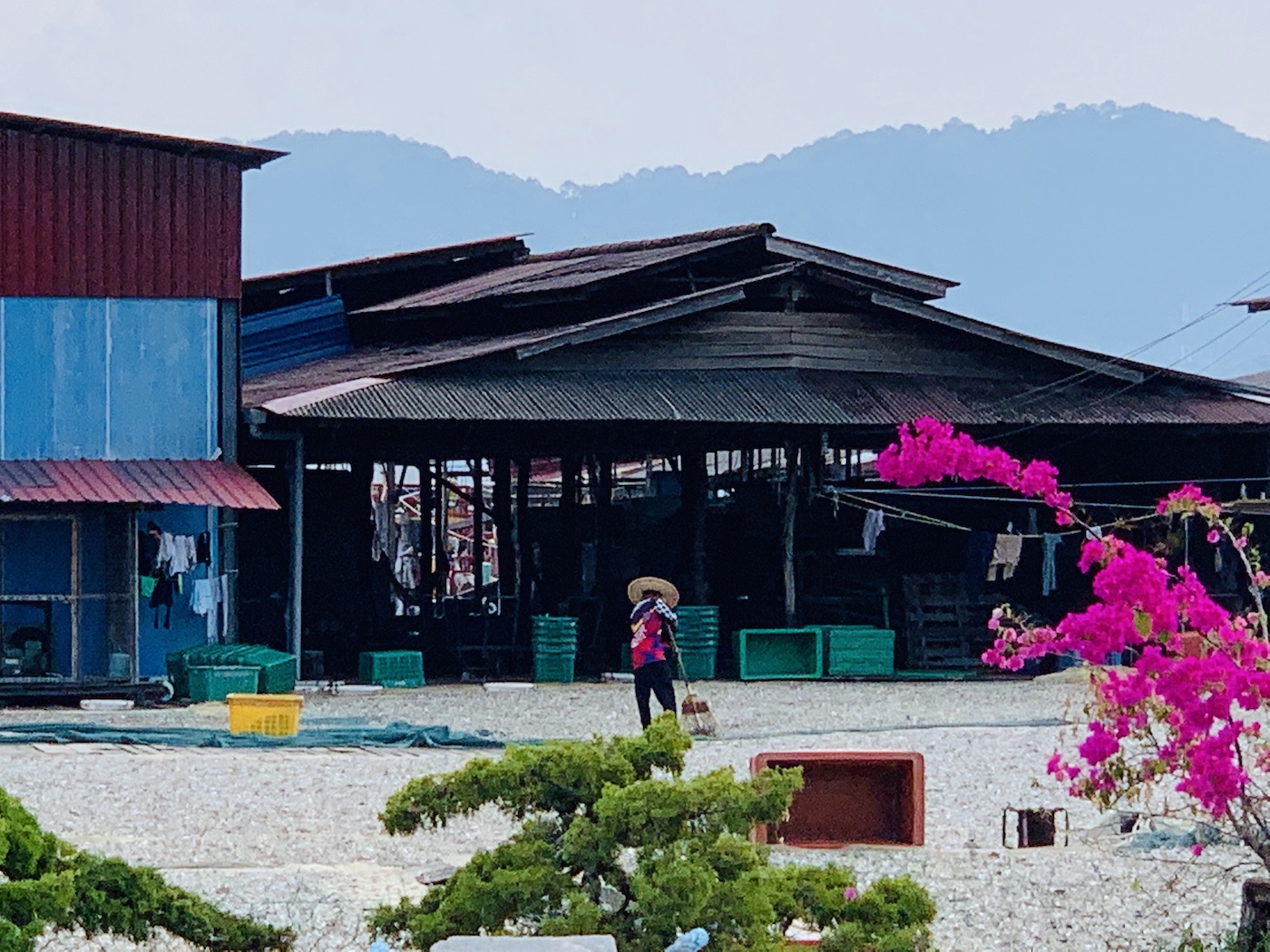
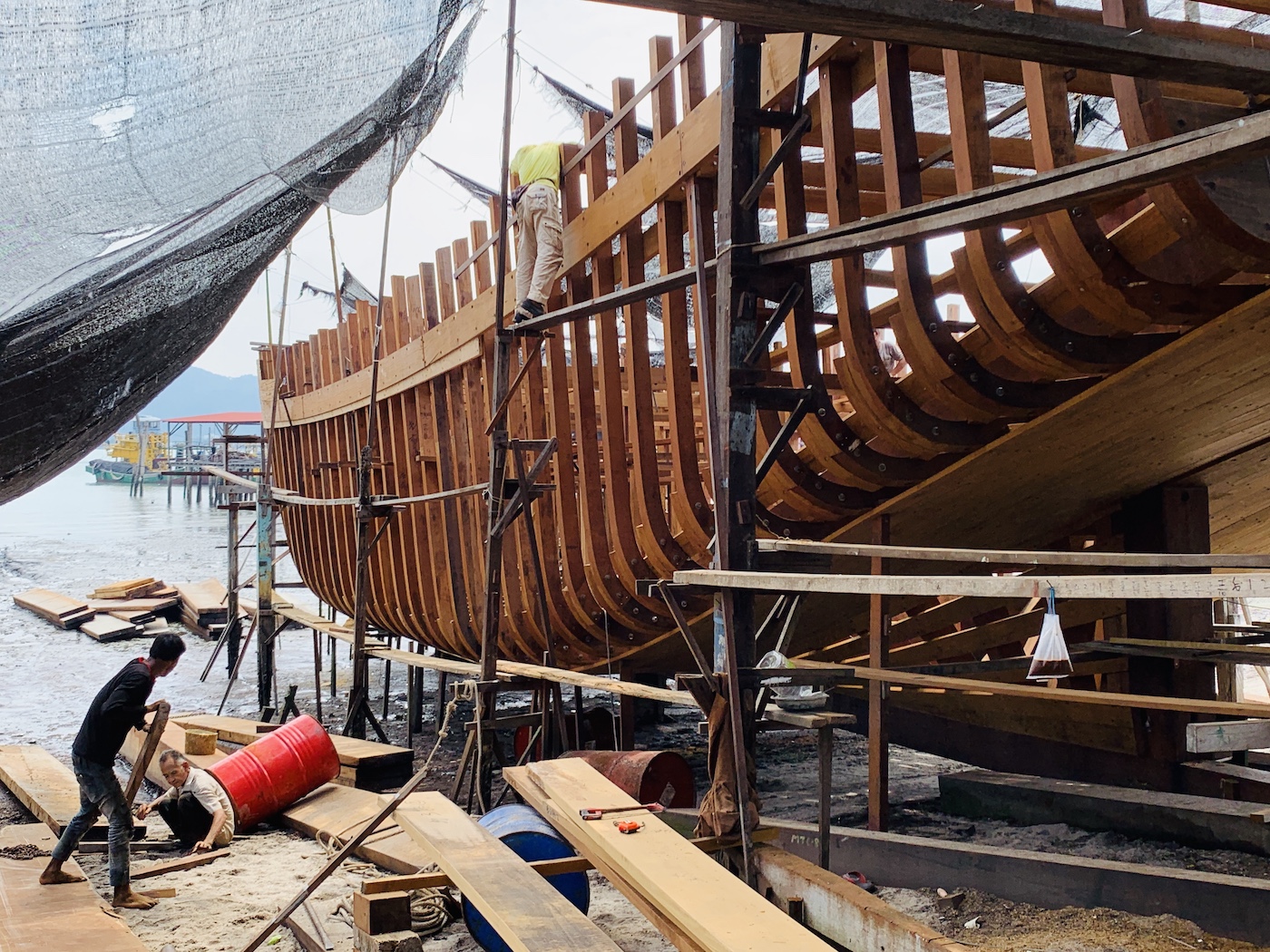
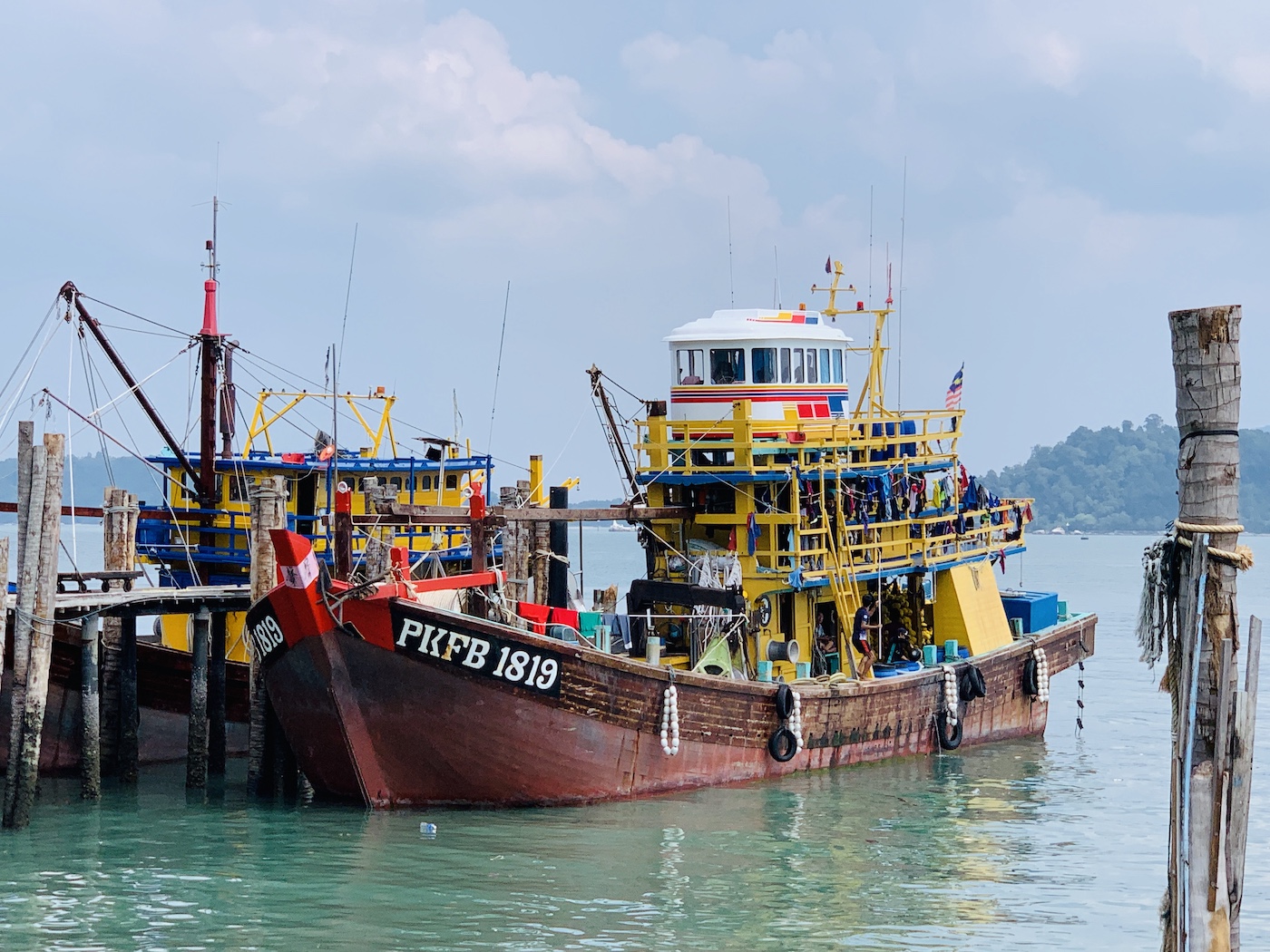
Situated adjacent to the boat-building site, we stopped by the Hindu temple, Sri Pathirakaliamman, built by fisherman some 150 years ago as a shrine to the goddess, Kaliamman, to protect them from the turbulent, unpredictable, deadly waves of the sea and to offer thanks of a good catch. In the early days, during “Amavasai” (New Moon) and “Pournami” (Full Moon) the seawater used to lap up to the blessed feet of the granite statue of Kaliamman, positioned beneath a neem tree. The temple also houses the ferocious form of Shakti, considered an unpolished diamond and deeply protective of her adoring devotees. Like a mother who constantly looks after her children, she looks after the welfare of the Pangkor Island residents, guiding, protecting and nurturing them. The most distinctive aspect of this temple is that it faces both the sea and east which blesses devotees with the energy of the sun, as well providing the opportunity to bathe in the sea to remove any negative energy.
Our last historic destination was the Chinese temple, Fu Lin Kong, the largest Taoist temple on the island, built over a hundred years ago at the foot of Pangkor Hill in the village of Sungai Pinang Besar, a Chinese “Kampung Cina” (Settlement). It is decorated with large rocks and stones and, in addition to the beautiful arch which welcomes visitors, it has a majestic temple wall and a miniature replica of the Great Wall of China in the garden to the rear of the large temple hall. Inside the temple were also Buddhist statues and on the roof one can see the twelve signs of the Chinese zodiac.
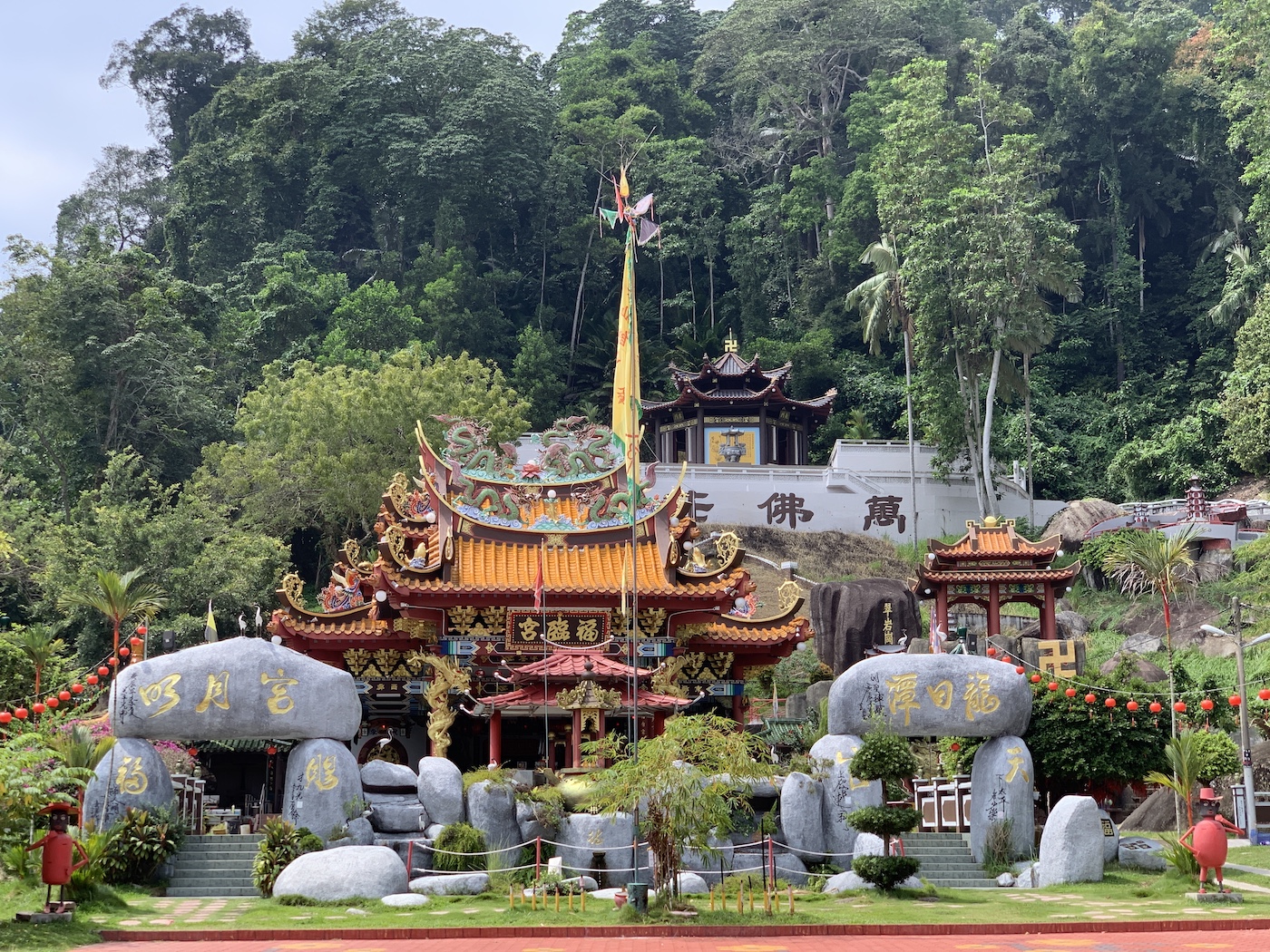
From there we made our way to our final stop, the beautiful Coral Beach, but not before we experienced the lush tropical forests of the somewhat mountainous interior, all protected from deforestation and reminded us a lot of Dominica Island in the Caribbean. En route it was very encouraging to pass the rubbish processing plant and to learn most of the garbage is recycled or used to produce compost.
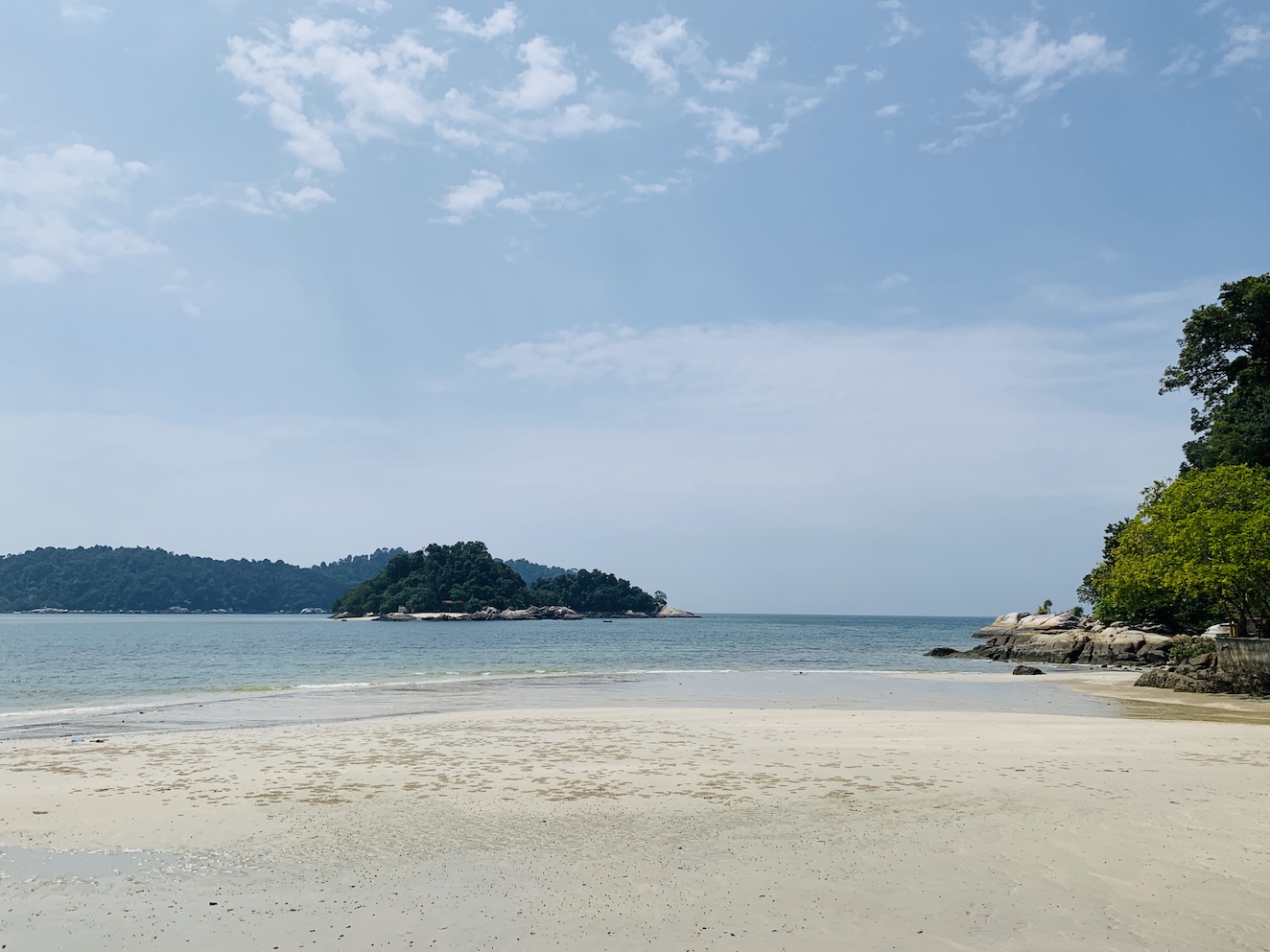
By the time we said our goodbyes to Sam, providing him with a hefty tip for his enthusiasm and willingness, we returned to Paw Paw and all we managed to muster was a lazy late afternoon in the cockpit, enjoying the cool breeze, the turquoise waters gently lapping against Paw Paw’s hulls and the chirping of the birds. It was the perfect way to top off another very interesting and informative day in Malaysia.
On the run up to Elaine’s birthday we woke to beautiful sunny days with cool morning breezes keeping the temperatures down. While we enjoyed breakfast in the cockpit on one of the mornings, it was lovely to hear the laughter of school children coming from shore as they partook in their morning exercise; a walk along the waterfront pathway and then returning along the beach, some having the energy and enthusiasm to run. Then while Elaine spent the rest of her day knee deep in medical insurance matters, Roy took an exercise walk along the waterfront to explore the little shopping area and visit the grocery store.
By early evening it was time to have a shower and get ready for our dinghy ride across the bay to visit the Laut Pangkor Island Resort, having been informed it was cruiser-friendly. We were both really looking forward to a nice sundowner as well as making reservations for a spa day and dinner to celebrate Elaine’s birthday. Well, unfortunately, the information we’d been given and had read was incorrect; the resort is definitely not cruiser-friendly. Although disappointing, we have had the opportunity to visit far nicer and more welcoming resorts around the world during our travels and all was not lost; we simply returned to Paw Paw and enjoyed sundowners on the foredeck as we watched the sun set. Then while Roy cooked up another storm in the galley, Elaine lay on the trampoline and watched the eagles soaring high overhead.
Further research revealed that there is a healthy population of several raptor (aka Birds of Prey) species on Pangkor Island, including the brahminy kite, formerly known as the red-backed sea eagle in Australia, white-bellied sea eagles, also known as the white-breasted sea eagle, which is a large diurnal bird of prey and the crested serpent eagle, apart from the gregarious oriental pied hornbill, also known as the sunda pied hornbill or the Malaysian pied hornbill, which are widespread on the island, together with the great hornbills, also known as the concave-casqued hornbill, great Indian hornbill or great pied hornbill, which is one of the larger members of the hornbill family and due to its impressive size and colour, it is important in many tribal cultures and rituals. Unfortunately we hadn’t seen any of the latter, but, over the previous two days we’d seen both the beautiful brahminy kite and the white-bellied sea eagles.
That certainly made up for our rather disappointing snorkel on Saturday, 18th January 2020, off Giam Island, which was more akin to swimming in green tea. However, as with all these experiences, we got the opportunity to meet a very friendly local businessman and his daughter as a result, who were overseeing a number of their guests from the four “home-stays” he owns around Pangkor Island and we enjoyed a walk along the beautiful Coral Beach, something we were unable to do on our tour a few days earlier due to time constraints. Back onboard, Roy cooked up another storm in the galley, trying yet another new recipe; this one involving chicken, coconut cream, lemons, onions, mushrooms, tomatoes and a curry paste, all baked together in the oven. Delicious!
We did, however, discover an unwanted gift when Roy snorkelled Paw Paw’s bottom to be sure everything was in order. Apparently we must have hooked a fishing night during our nightmare on the Tuesday night as we zigzagged through numerous fishing nets to find an alternative anchorage for the night. The resultant lump of net and rope that he cut away from the port propeller was testimony to the fact unfortunately. All in all, though it had been a good few days of just chillin’ and hanging out, as well as catching up with Elaine’s folks in Ireland.
Elaine’s birthday started with a phone call from Keenan, who was on an overnight in Philadelphia, followed by a breakfast of freshly baked oatmeal crumpets, accompanied by bacon; our last packet. We definitely hoped we’d find some more soon! The crumpets weren’t too bad at all, considering it was Elaine’s first attempt at making them, although the recipe did require the usual substitutions for egg, milk and baking powder. After she opened her birthday gifts, we spent the rest of our day lazying around onboard, although Roy did spend some time giving Elaine a crash course on the use of her new Apple Macbook Air, which, in turn, allowed her to start cataloguing all our recent photographs using her new technology, but not without some challenges and limitations of the Apple environment for folks like us who aren’t permanently connected to a high speed broadband service.
However, by late afternoon we were ready to dinghy around to Coral Beach for Elaine’s birthday dinner at Nipah Deli. Once we grabbed a beach table in the shade, we settled down to enjoy our refreshments; a Thai coconut for Elaine and a few cold beers for Roy, followed by a delicious dinner of calamari for starters and a main of squid in a garlic and oyster sauce for Roy and chicken in a “kam heong” sauce for Elaine. Spotting the beautiful oriental pied hornbills for the first time, though, was definitely a fabulous surprise.
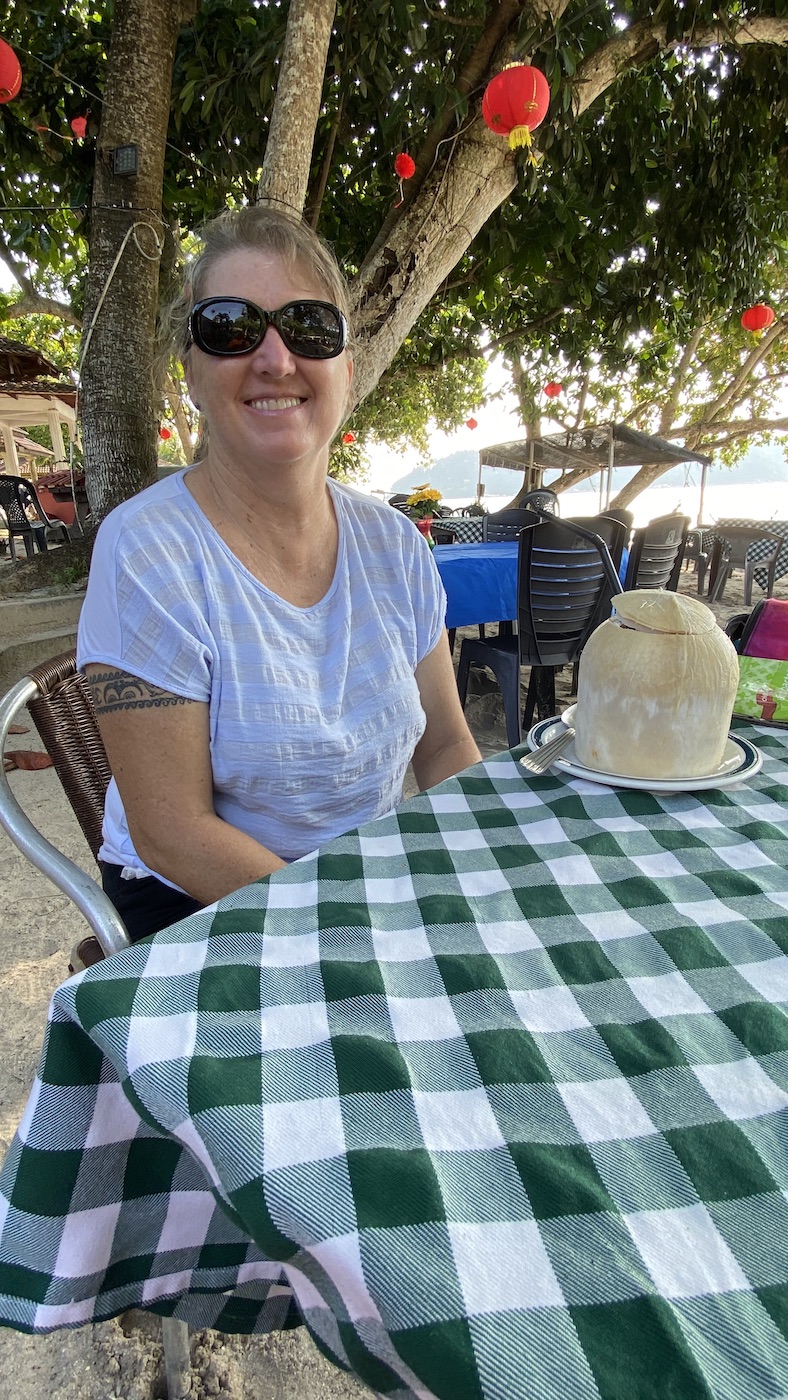
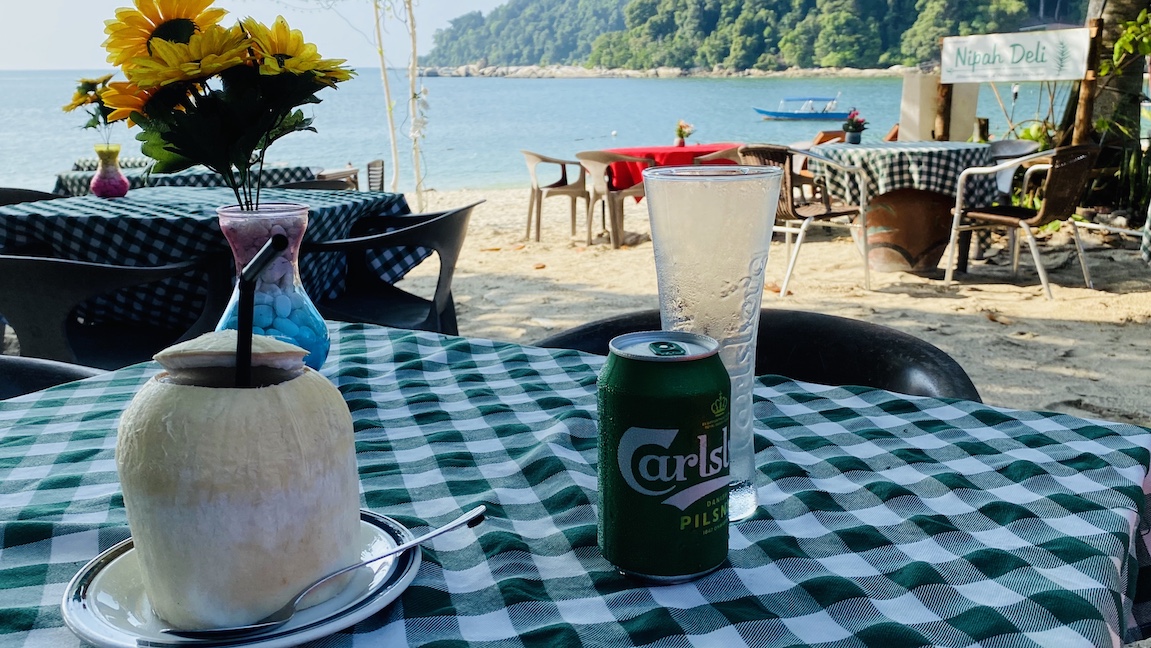
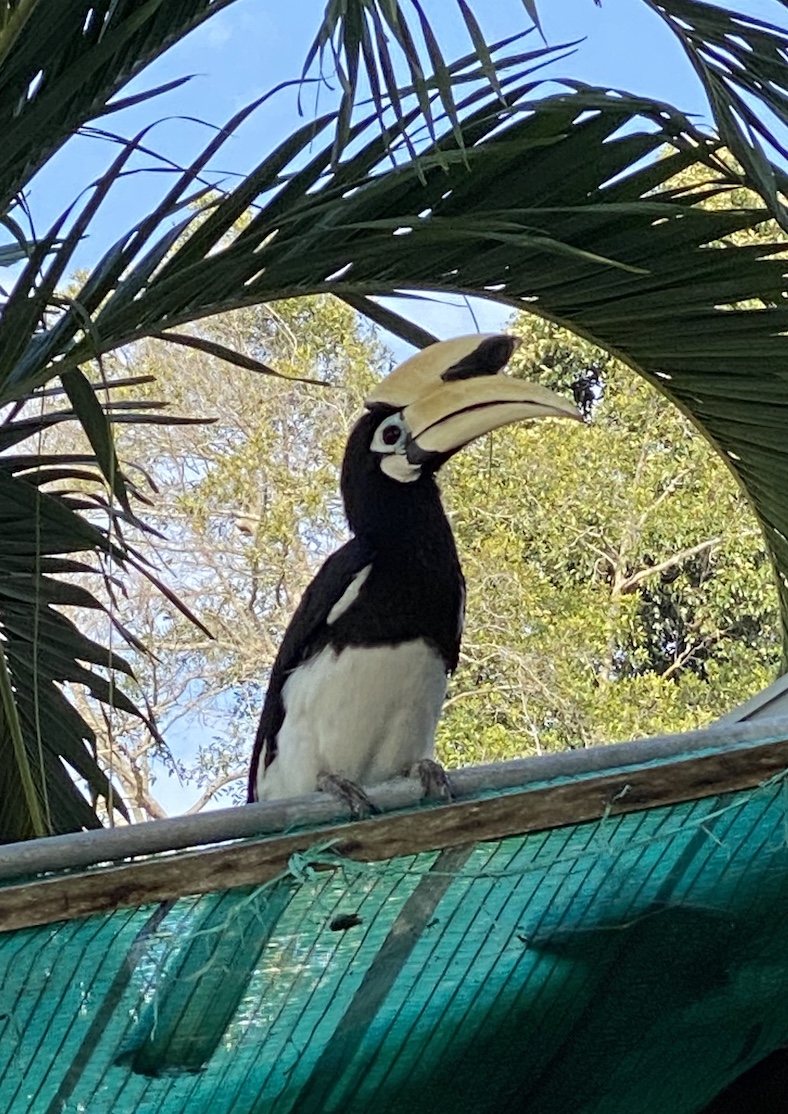
A lovely long walk along Coral Beach helped work off our meal, following which we enjoyed a slow sunset dinghy ride back to Paw Paw. Phone calls and messages from family and friends around the world were received as we watched the sun slip below the horizon from the foredeck trampoline, in a cool evening breeze, as they woke to the start of their day and ours came to a close. It was a lovely day, in a beautiful setting, under glorious sunny skies and, best of all, Elaine was pain free. Can’t ask for a better birthday than that!
On Monday 20th January 2020, aside from Roy enjoying his long walk along the waterfront and Elaine doing her gentle stretch exercises on board, neither of us worked up much energy for the day and, considering the heat, that was probably a good thing, but, at least, Elaine continued the cataloguing of our photographs and completed our pre-sail checklist in preparation for our departure, while Roy enhanced our Email Responder which returns Tropical weather, in preparation for our Indian Ocean crossing and to share with a number of cruisers who were doing the crossing this year.
Elaine’s exercise routine was interrupted somewhat, though, by a large group of high school students who spent the best part of their morning canoeing up and down the bay, using Paw Paw as a marker and definitely coming close enough to invade our privacy, including hanging off the transom steps. That meant they saw Elaine doing her exercises with exposed shoulders, elbows and knees and Roy walking around in his underwear. Guess that’s what happens when you enter someone’s home unannounced!
With the heat of the day, the inevitable thunderstorms arrived overnight making for an unpleasant night’s rest with everything closed up down below and made for a very dull morning as we weighed anchor at sunrise on Tuesday, 21st January 2020, albeit already 0730 in the day. The rather late sunrises made for a much later start than our usual 0530 / 0600 departures, but with fishing boats and nets to contend with everywhere, it was definitely more prudent to wait for daylight and this sail was no exception. Fortunately we didn’t have far to go to our overnight anchorage at Talang Island, but we were significantly slowed down by the amount of weaving we had to do to get around the numerous fishing boats and nets.
To our surprise, though, the little island was very picturesque, but there were plenty of fishing boats for company, along with the accompanying flies, the latter of which seem to squeeze through any open hole to get inside, even with our mosquito nets closed everywhere and it didn’t help that one boat decided to anchor right off our stern. As a result having an afternoon nap was completely impossible; we’d no sooner kill one fly, when another materialised, to disturb our rest. Note to self: purchase a fly squatter at the very next opportunity as the spray seemed totally ineffective. As Roy said: “these flies are wearing helmets!”
Since neither of us were able to nap between the flies and the heat, Elaine decided to bake another batch of biscuits; this time oatmeal and cranberries, albeit a slightly modified recipe again. With that another day came to a close; pleased to be on the move again and looking forward to exploring another area of Malaysia.
As the sun peaked over the mountains behind us after departing our overnight anchorage off Talang Island, four storm cells built in front of us. Fortunately all the cells moved west and to our port side. We also managed to find a nice “corridor”, free of fishing boats and nets, giving us a clear run all the way to Penang Island, with the exception of all the garbage we encountered.
Having sailed nearly 3000NM since our arrival in Debut, Indonesia, it was staggering the amount of garbage we had seen in the water and on the beaches since then. On Wednesday, 22nd January 2020 alone we encountered cooler boxes, shoes, flip-flops, balls, plastic buckets, cups, bottles, knives, forks, spoons, plates and bags, polystyrene cups, fast-food containers, ropes, fenders, clothing, disposable nappies / diapers and bits of homemade rafts. It was incredible what humans were doing to this beautiful planet of ours! Mother Nature, however, was about to put up a fight which humans were definitely no match for!
That said, we had a relatively slow sail, with a slighter current that was with us most of the way. We were 15NM off Penang Island, though, when the wind eventually kicked in and we were able to motor-sail. Given our arrival time and tired after a long, slow day, we opted to anchor off Rimau Island, but with the rockin’ and rollin’ that ensued shortly thereafter, we weighed anchor and continued on to our chosen anchorage for the night. After passing under the “2nd Penang Bridge” and gingerly making our way between Penang Island and Jerejak Island, we dropped the hook at around 1830 just off the Jerejak Island Resort. With an hour of daylight remaining, we enjoyed a sundowner and a beautiful sunset. We knew, however, we were back in a metropolitan area with planes flying overhead, rush hour traffic congestion on the nearby motorway and high-rise buildings as far as the eye could see. Regardless, we were just thankful to have found a calm anchorage for the night.
The following morning Elaine woke up at around 0330 to the sound of voices near Paw Paw. While creeping up the companion way to investigate what the noise was, she accidentally woke up Roy, but it was a good thing she did. We’d both no sooner made it to the saloon, when we noticed a fishing boat heading straight for our starboard hull. Hurtling out of the saloon doors, we discovered two fishermen who’d somehow got their boat’s engine and propeller tangled in their own fishing net. Fortunately they were able to fend themselves off Paw Paw’s hull, apologising profusely when they spotted us both peering over our lifelines at them, but it didn’t take them long thereafter to get untangled and be on their way, dragging their drift net behind them. However, at this point, we were both wide awake. Then Roy spotted another net drifting towards us which he managed to divert with our boat hook. By this stage sunrise couldn’t come soon enough, but, before that occurred, the tide had changed and the net that had drifted passed us earlier was now on its way back towards Paw Paw. A mad scramble and a few minutes later we were weighing anchor and on the move for another day and another bridge; this time the “1st Penang Bridge”, but it was a little trickier to pass beneath this one as there were numerous cables dangling down and we definitely didn’t want to get the rigging hooked on that.
Having successfully cleared the bridge and all its hazards, we had a slow motor up the channel with the tidal current against us and we missed a phone call from Maria and Maurice off Cattiva due to the poor data connectivity. We thought it was a little odd, though, to be getting a call from them, as the last we’d heard they were heading to Thailand. Regardless, by 1030 Paw Paw was snug in her berth at the Straits Quay marina; home for the next month or so, only to discover Enchantress (Susan and David) in the berth next to us and the two yachts we’d seen anchored outside the entrance awaiting the high tide to enter the marina were, in fact, Endorphin (Izzie and Colin) and Hecla of Uist (Jon). We thought they were all in Thailand too.
Although exhausted from our early morning encounters, we headed to the marina office to complete the necessary paperwork, then took a walk around the complex of restaurants, cafés and stores to stretch our legs and get our bearings, before enjoying a very tasty lunch at the Real Food restaurant. We were both definitely in need of our afternoon nap, though, by the time we returned to Paw Paw and it was early evening when we both woke up, having slept like babies for a few hours.
Well rested, our day only improved; sundowners at the Irish pub, Healy Mac’s and our return phone call to Maria and Maurice revealed the fact that they were not in Thailand after all, but in a hotel in Penang, having left Cattiva in the Langkawi archipelago; what a wonderful surprise! Needless to say, a good “chin-wag” ensued and arrangements were made to see each other the following day.
So, after catching up with the family in Arizona the following morning, the next order of the day was to complete the officialdom process which involved two separate Grab rides; one to the Harbour Master and another to Customs and Immigration, since they were in completely different areas of Georgetown. With that out of the way, we enjoyed a short walk to the hotel where Maria and Maurice we’re staying. Having said goodbye to them months ago in Belitung, Indonesia and having missed them in Singapore by just a day, it was lovely to see them again under the most unexpected circumstances. Our morning of catching up continued over a fabulous lunch at China House and well into the late afternoon. It was early evening by the time we said our goodbyes.
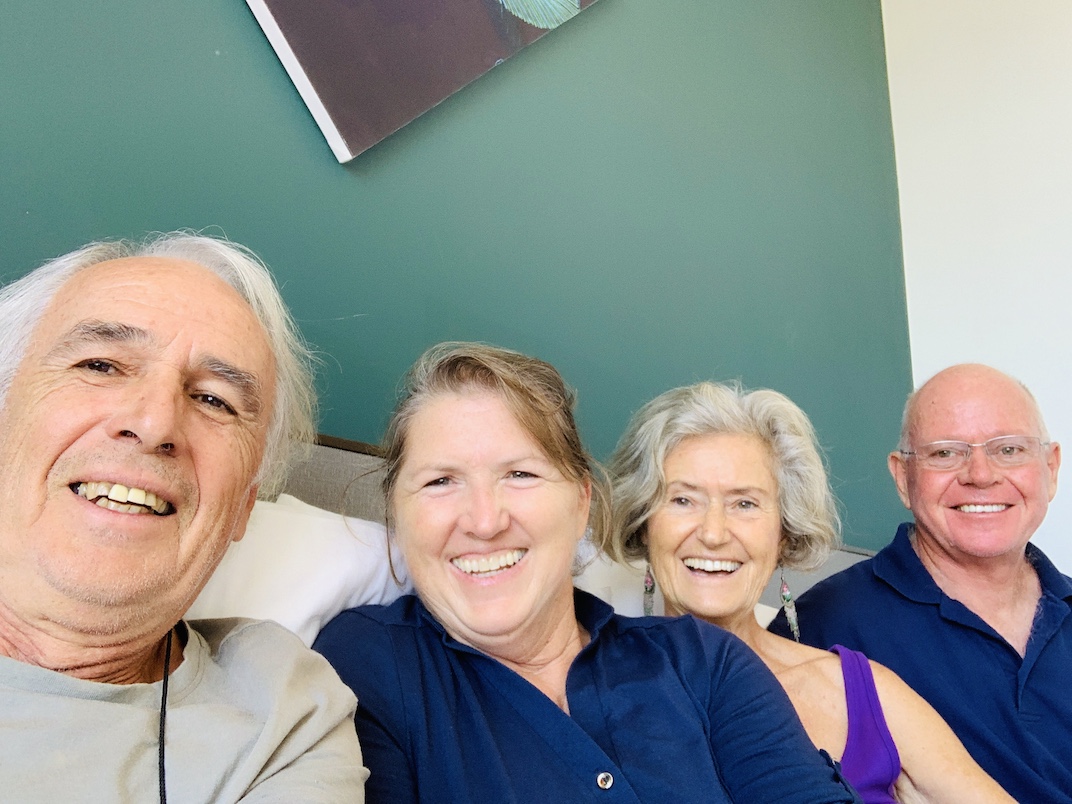
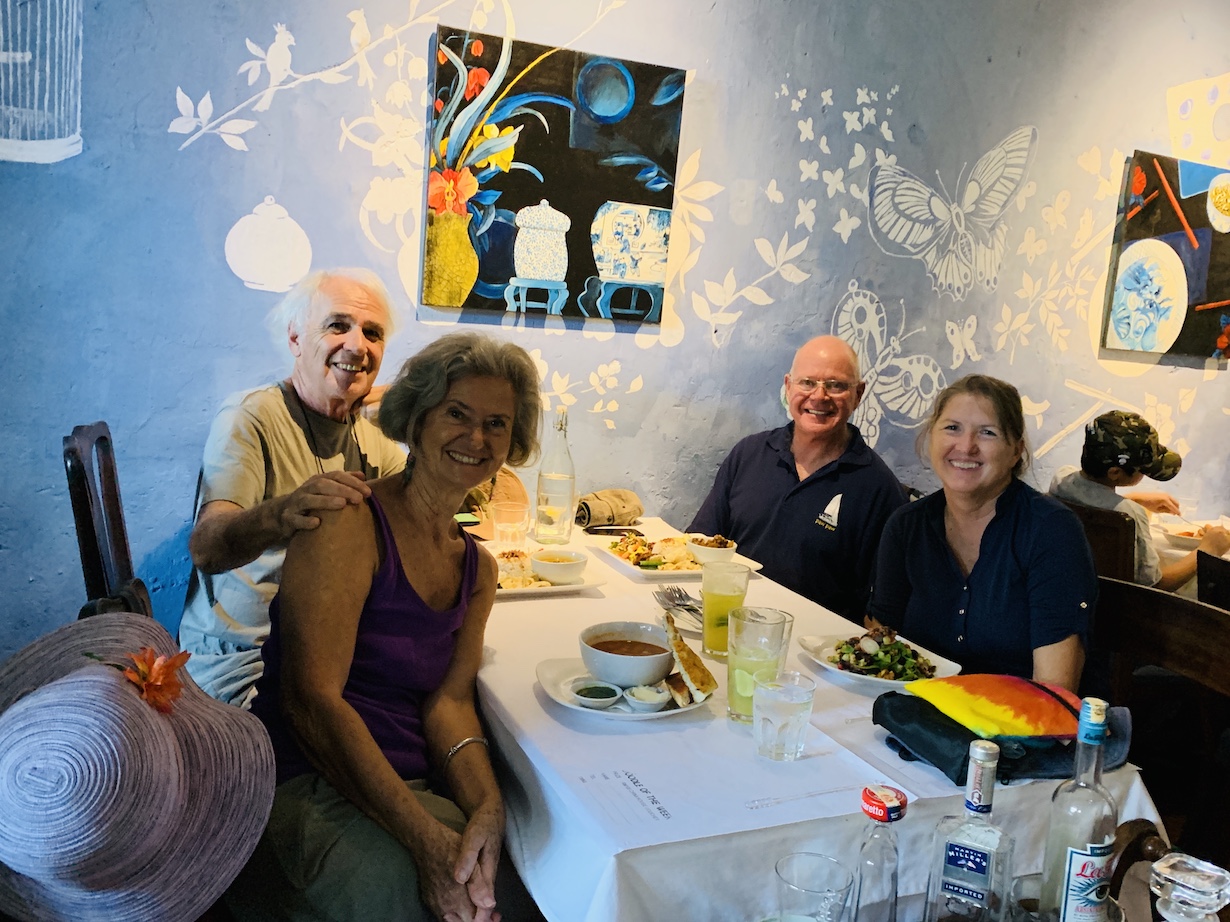
En route back to Paw Paw, we stopped in to get a few groceries to tide us over the weekend, then enjoyed a lovely long walk along the promenade, along a beach and through a local village. We were amazed to see the number of women and children playing on the beach, or so we thought; turns out they were all digging for clams in the sand and had bowls full by the time we arrived. Fascinating! A light dinner and a quick chat to Izzie and Colin sealed a wonderful two days of surprises and friendships enjoyed.
With arrangements made to meet Cattiva later in the day on Saturday, 25th January 2020, we set about getting some chores completed. While Roy stowed the mainsail and sheets as well as filled our water tanks, Elaine cleaned Paw Paw’s interior. Afterwards we enjoyed a rather late “Full English Breakfast” at Healy Mac’s, but it was a rather interesting version, where the baked beans were actually kidney beans, which Elaine couldn’t eat and Roy definitely didn’t want to eat. We performed our usual swapping of food, though, which made for a tasty meal nonetheless; Roy got Elaine’s eggs and toast, although he only ate the white of the eggs and Elaine got some additional mushrooms and an extra piece of pork sausage. We’d no sooner finished our meal when we got word that Maria and Maurice were on their way to our rendezvous, but Elaine still had a little time to research the Clock Tower we’d seen in Georgetown the previous day. Standing 60ft tall, it was built in 1897 to commemorate the diamond jubilee of Queen Victoria and is so named. It was certainly a feature we couldn’t miss and stands as a reminder of Malaysia’s colonial past.
Our first stop for the day, however, was the Penang Botanical Gardens which, unfortunately, was a huge disappointment and bore no resemblance to all the brochures and advertisements we’d seen, but the monkeys were cute. So, onwards to our next stop which made up for the disappointment of the gardens and completely had us all in awe of what we were looking at, the Kek Lok Si Temple. It too bore no resemblance to the brochures we’d seen, but nothing could possibly capture the magnitude and magnificence of this site. Seeing it from a distance as we approached, one couldn’t miss the enormity of the complex, but the best was yet to come.
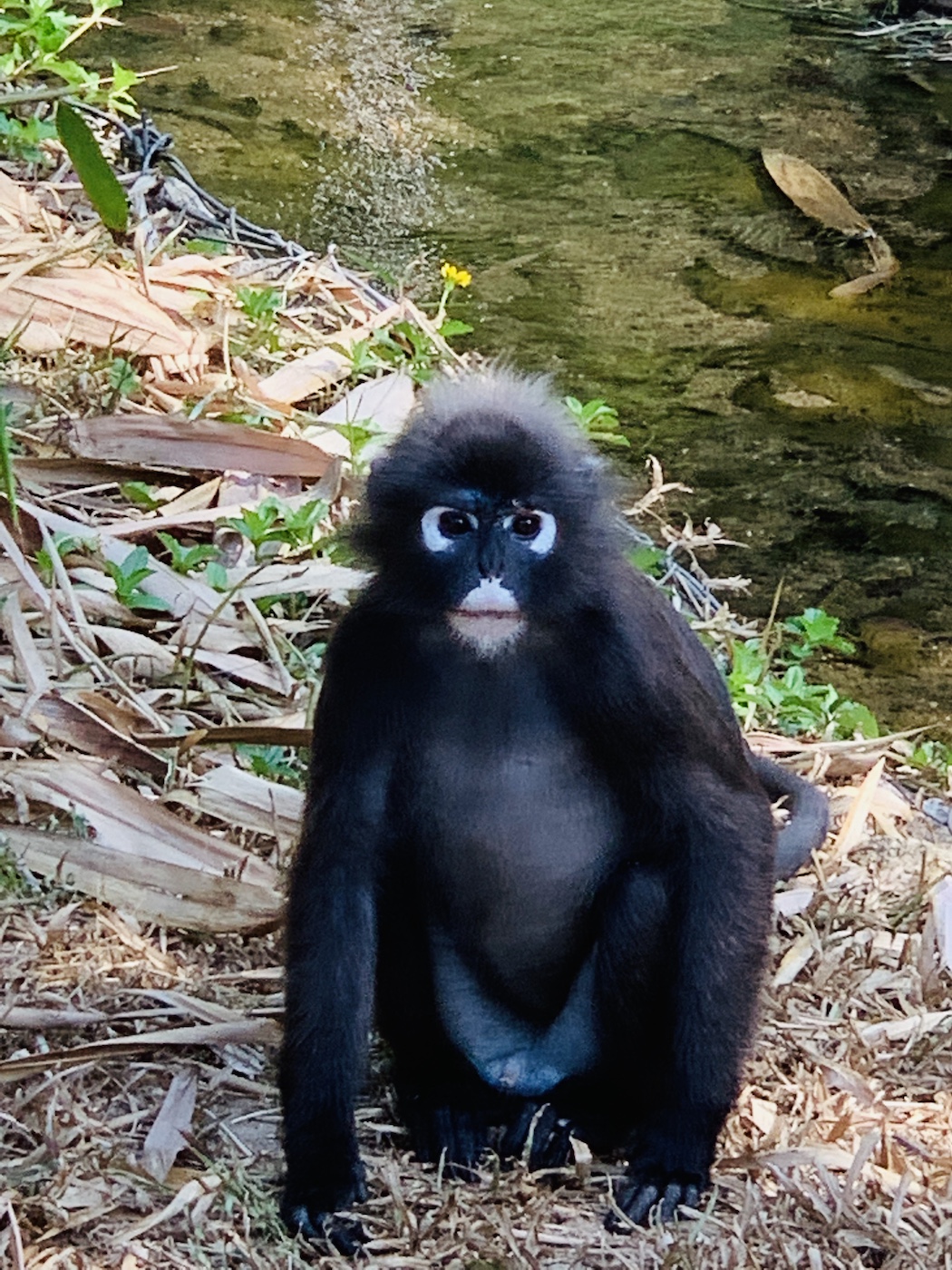
Situated in the hills of Ayer Itam, it is the largest Buddhist temple in Malaysia and research revealed that it is also an important pilgrimage centre for Buddhists from Hong Kong, the Philippines, Singapore and other countries of SE Asia, but to visit it on the first day of the Chinese New Year, the year of “ the rat”, was very special indeed.
The entire complex of temples was built over the period from 1890 to 1930 and features include the striking seven-storey “Pagoda of Rama VI”, also known as the “Pagoda of Ban Po Thar" (the “Pagoda of Ten Thousand Buddhas”, with its 10,000 alabaster and bronze statues of Buddha), as well as the 36.5 metres / 120ft tall bronze statue of Kuan Yin / Guanyin, the Goddess of Mercy, which had us gasping when we first saw it.
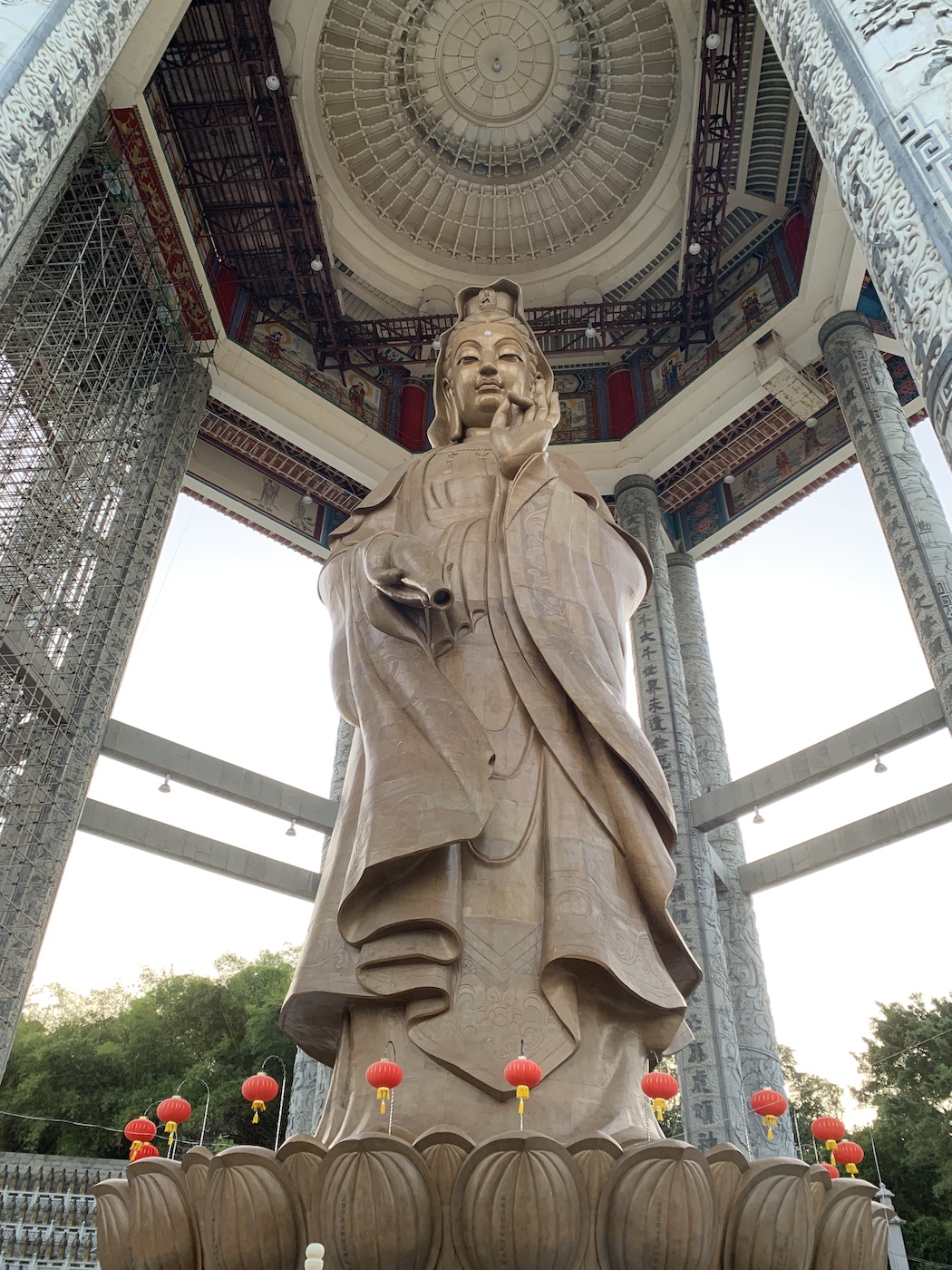
The spiritual location, facing the sea, and the inspiration of the temple, were the works of Beow Lean, first Abbot of the temple, establishing it as a branch of the Buddhist Vatican in Drum Mountain, Foochow in the Hokkien province of China. The financing was sponsored by five leading Chinese businessmen of Penang known as the "Hakka tycoons"; Cheong Fatt Tze, his cousin Chang Yu Nan, Chea Choon Seng, Tye Kee Yoon, and Chung Keng Kooi. Not surprising then, various structures and artefacts were dedicated to these benefactors.
The temple blends both Mahayana and Theravada Buddhism, as well as traditional Chinese rituals in the architecture and artwork as well as in the daily activities of the worshippers. The main hall, which was completed first, houses a shrine to Kuan Yin / Guanyin, the Buddhist bodhisattva associated with mercy / compassion, together with many other female goddesses, including the Queen of Heaven, the Goddess of the Earth and Goddess of Childbirth, believed to represent a miniature version of Potalaka Island in the China Sea, where there is a large shrine dedicated to Kuan Yin / Guanyin. People started to compare the shrine here to the Amitabha Buddha’s “Sukhāvatī” or the “Western Paradise” and started calling it the "Kek Lok Si" / "Jile Si". There are numerous other shrine chambers, with wood and stone carvings, candles set in attractive suspended lamps and stately statues, all gilded, of the Buddhas, Bodhisattvas, saintly Lohans (the original followers of Gautama Buddha who have followed the “Noble Eightfold Path” and attained the four stages of enlightenment), guardian spirits, and Heavenly Kings of Pure Land Buddhism. It was absolutely unbelievable!
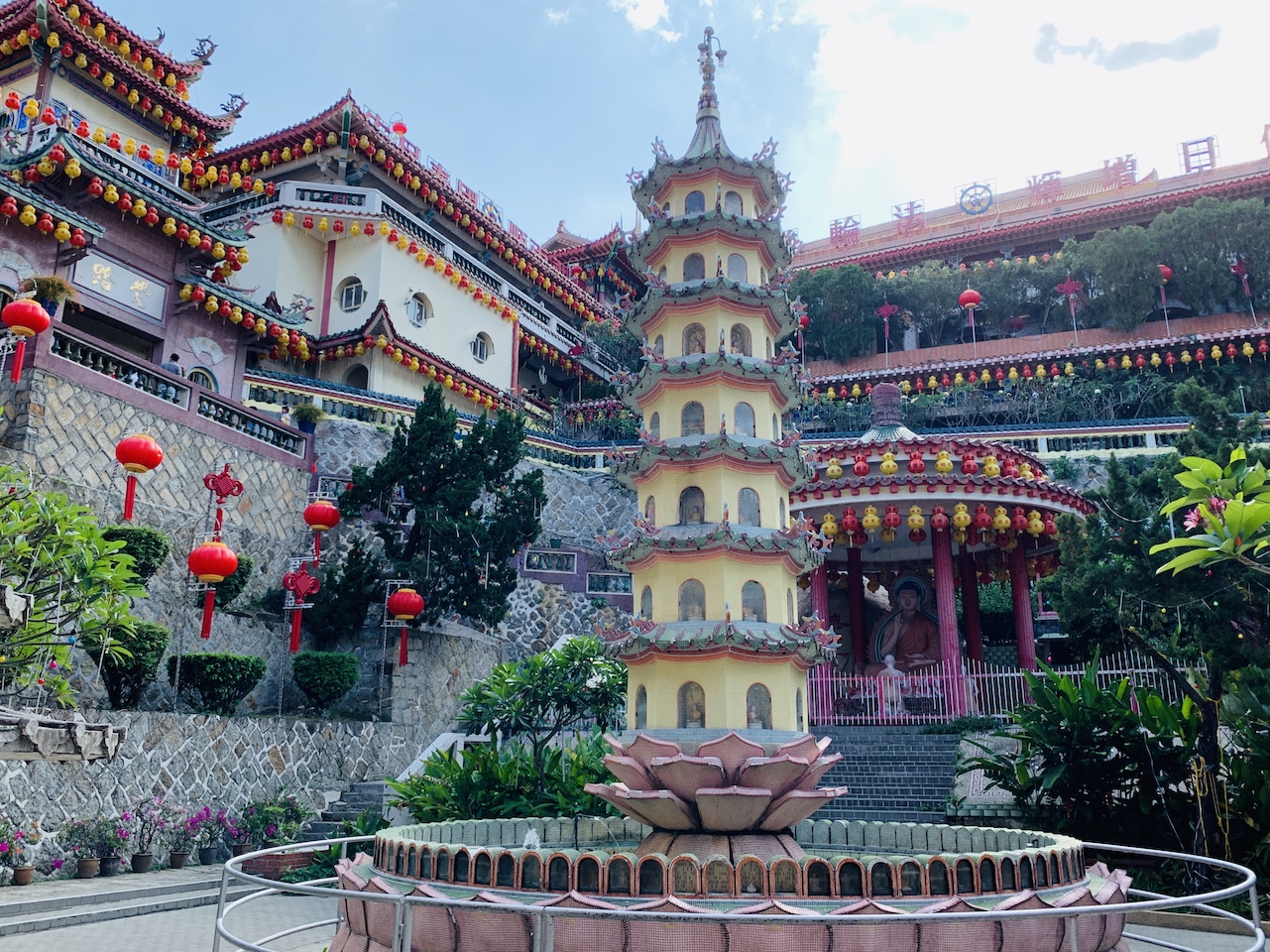
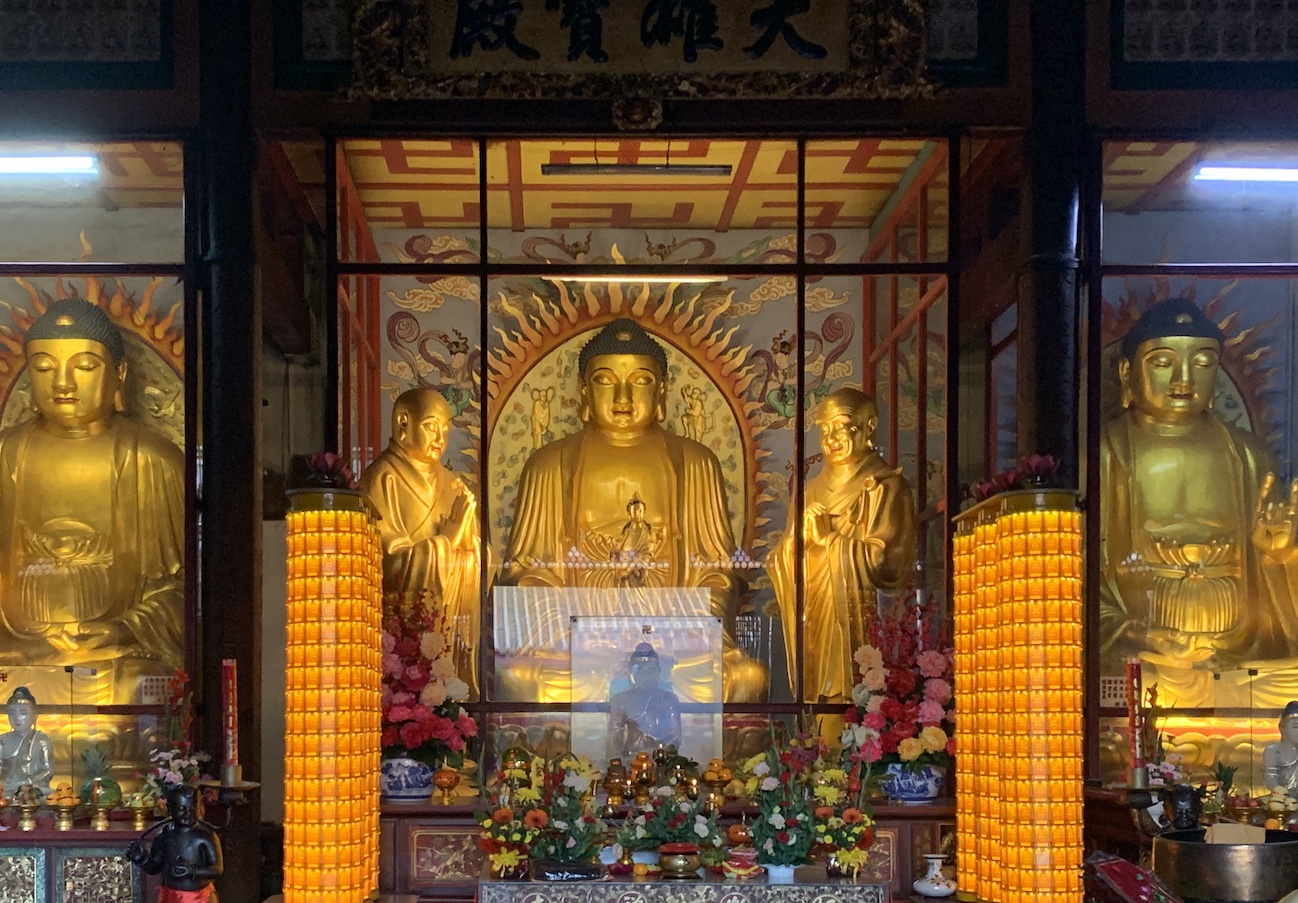
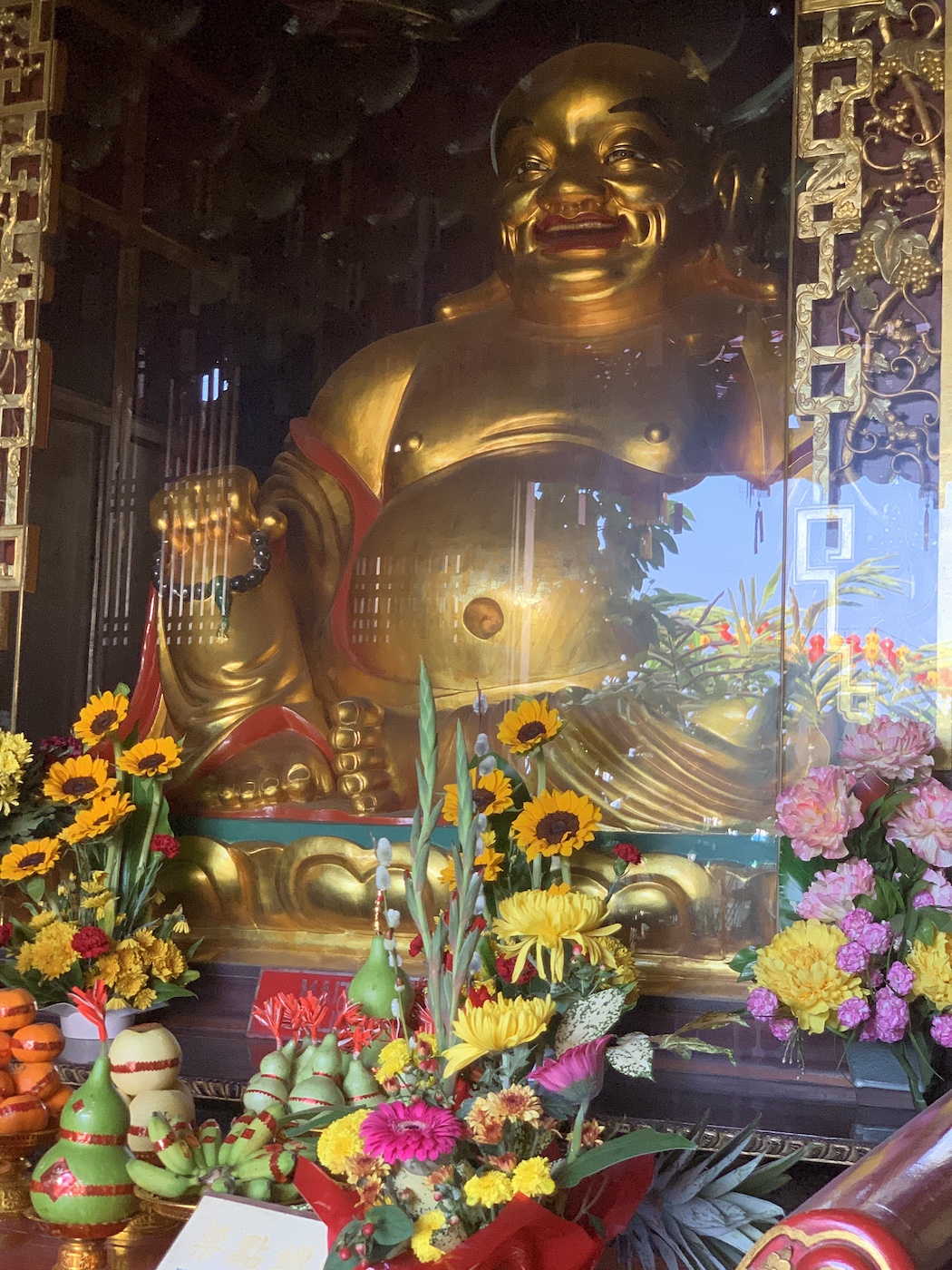
We also climbed to the top of the seven-storey main pagoda, standing on the side of the mountain at 30 metres / 98ft high. Completed in 1930, it combines a Chinese octagonal base with a middle tier of Thai design and a Burmese crown / spiral dome; reflecting the ethnic and religious diversity in Malaysia. King Rama VI of Thailand laid the foundation for the pagoda and it is, therefore, referred to as the “Pagoda of Rama VI“. At the base of the pagoda is a large hydraulically operated bell, which can be tolled by worshippers or visitors alike for a donation.
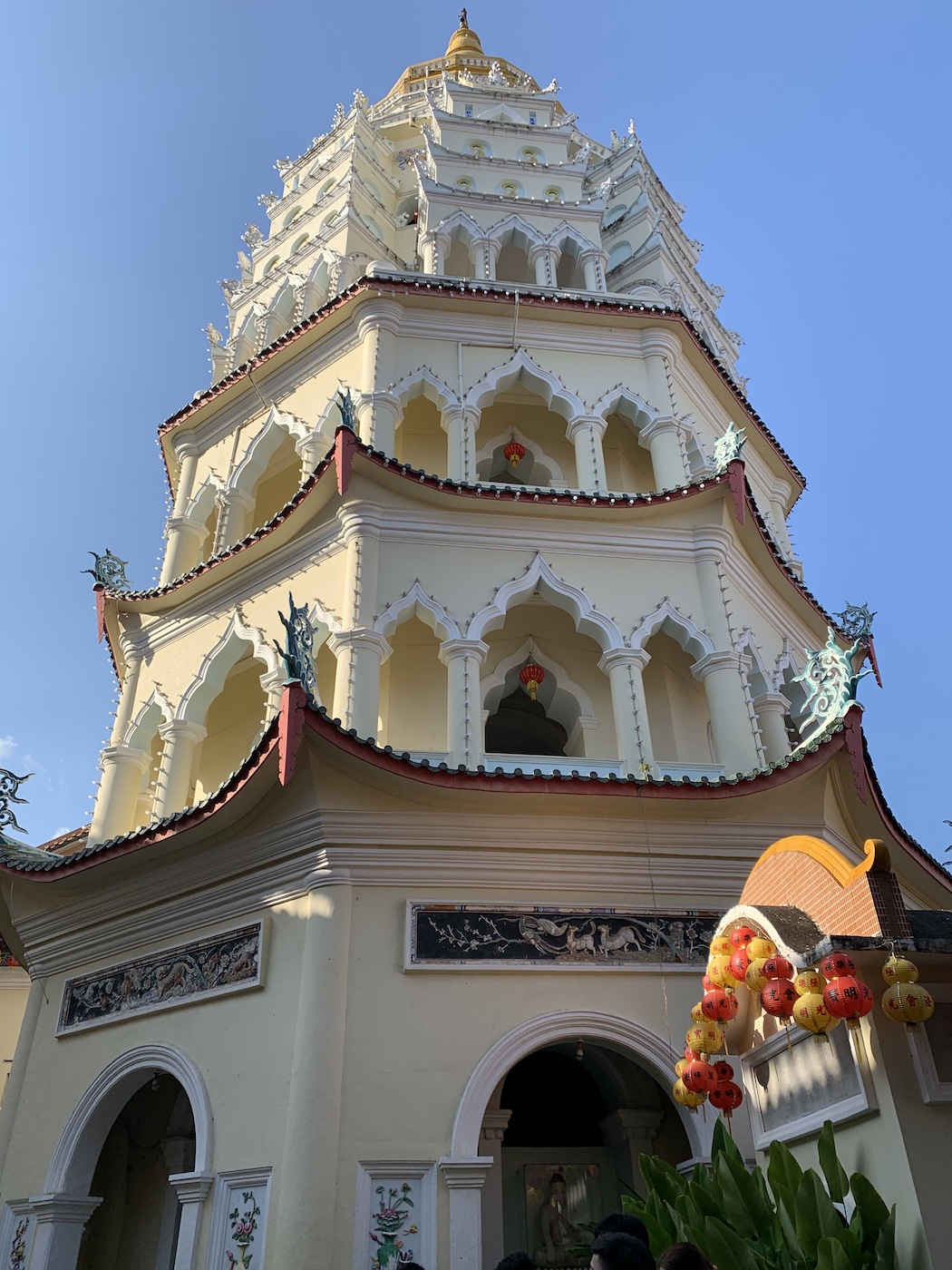
In 2002 the magnificent 36.5 metres / 120ft tall bronze statue, the tallest statue in the world of Kuan Yin / Guanyin, Goddess of Mercy, was completed. It is located high on the hillside above the pagoda and is complemented with a 61 metres / 200ft, three-tiered roof pavilion with 16 bronze columns supporting it. This shrine, which is accessed via a cable car, also has 10,000 statues of Buddha, as well as statues of the 12 Zodiac Animals Signs of the Chinese Calendar.
The temple complex is a focal point of festivals of the Chinese community in Penang and we were fortunate enough to visit it during the Chinese New Year celebrations. We arrived early enough to enjoy the beauty without the crowds, but, by the time the thousands of lights and lanterns, the latter representing donations offered by devotees, were turned on as the sun set, the complex was heaving with worshippers, tourists, local residents and priests giving services. We got to witness the diversity of the ethnic origins of the devotees as they worshipped the deities by burning incense or by making a cash offering or offering prayers at the tower of “Sacred Books” in the upper part of the complex or in the extensive gardens around the complex or simply by bowing and clapping to make one's presence known to the deity. We were a little perturbed, however, by the paraphernalia sold along the winding steps and in the “gift” shops, but later learnt that the religious items catered to the offerings made by the worshippers.
Apparently another festival at the temple features the long march undertaken by hundreds of monks from Thailand to the temple, once or twice a year, signifying its importance as a pilgrimage centre.
While our words do not do it justice, hopefully our photographs will, including the one we took through the rear window of our Grab as we headed home. It truly was a sight to behold and a day of awe and splendour which had us regaling for hours afterwards; a memorable experience indeed, in the company of friends!
After our astonishing outing to the Kek Lok Si Temple, given the miles we walked and the number of stairs we climbed, we welcomed a few days of rest onboard, but we did get to enjoy dinner with Cattiva at The Shed restaurant at Straits Quay before saying our goodbyes until the next time our paths crossed. It was, nonetheless, a wonderful surprise to be able to spend time with them over the preceding days and we wished them safe sailing as they headed back to Cattiva and on to Thailand. Again, at this point, though, we were clueless of what fate had in store for us all.
Our run of surprises wasn’t over, though. On Monday 27th January 2020, after enjoying a barbecue in the cockpit, given that the temperature had cooled down significantly, we had a surprise visit from Kristal (Sharon and Teoh), cruisers we met on the World ARC and hadn’t seen since Tahiti 2016. We’d seen their yacht, Kristal, a few berths down from Paw Paw after our arrival in the marina, but had no idea her owners had a second home in Straits Quay.
Sharon and Teoh were in Penang from Kuala Lumpur for the Chinese New Year long weekend and had been out to dinner, then decided to check on the yacht, but were completely surprised to spot Paw Paw on the dock. Not knowing if we were still the owners, they decided to rap on the hull anyway. Needless to say, we were just as surprised to see them. After inviting them onboard, the inevitable “filling in the missing years” ensued. It was lovely to catch up after all this time and in the most unlikely place. With that another day of inconceivable surprises came to a close!
Similar to Senibong Cove marina, because we were going to be in Penang for a slightly longer period of time than we would normally spend in a marina, our days included a number of regular activities, but, in between that, we enjoyed the tourist attractions on offer, many very unexpected, as we had no idea the Chinese New Year festivities involved celebrations of such magnitude.
These activities, besides the usual chores required, included Roy’s exercise walks which continued in earnest, sometimes combining them with a grocery trip, walking either to Cold Storage or Tescos, depending on what we needed in the way of provisioning as well as trying to find anything in the way of hand sanitisers, while masks were nowhere to be found by now. He also dealt with various other technology matters like formatting backup disks for compatibility with the Apple environment, while Elaine caught up with her correspondence, various administrative tasks, finalising all the appointments needed for our other annual medical and dental checkups which were due and which we had specifically left for Penang, given the affordable high quality of medical services here, finalising our itinerary for the remaining tourist attractions we wanted to enjoy during the rest of our stay in Penang, repairing our flags and cataloguing and uploading our latest photographs, an undertaking which took a little longer with her learning curve on the Apple Macbook Air, although she loved the simplicity of her new process nonetheless. Other activities included making our cockpit fridge look a lot more presentable, given that the outer surfaces had rusted and we hadn’t been able to find a replacement thus far. Our thanks to Fourstar who gave us some faux marble decor covering before we left Senibong Cove marina, which was put to good use.
Unexpectedly, we also got to spend time with many of our cruising friends, as well as meet a few more. The latter included Topspot (Diane and Kelvin), who were on the Indonesian rally with us, but, like most of the other yachts, we were all “ships in the night” and kept missing each other. We’d spotted Topspot a few berths down from us when we first arrived, but no one was onboard initially. We also met Michael off Henrietta, who was our new berth neighbour and a Dutch couple, Astrid and Ben, whom Roy first met when he offered them our second security gate card so that they could get on and off the dock, given that the marina office was closed at the time of their arrival and who then assisted us with our Thailand visa application before heading north to the Langkawi archipelago and Thailand.
We enjoyed brief visits from Endorphin (Izzie and Colin) as they too headed to the Langkawi archipelago and on to Thailand, as well as from Sky Blue Eyes (Julie and Karl), who were returning to Singapore to await their shipping date back to the US, but we missed seeing Tibby off Satori Two, although Rusty popped over a few times for a chat.
On return from one of our outings, we were pleasantly surprised to find Entice (Karen and Greg and their friends, Petra and Brian) in the marina and Talulah Ruby III (Andy and Paul) anchored out. With that, arrangements were made to meet for dinner at Healy Mac’s Irish Pub and Restaurant and what a great night we all had catching up, since last seeing everyone in Bali, Indonesia, September 2019. They did, however, bring some much needed rain with them. The associated wind, though, was the strongest we’ve had in months, which had us scrambling to get all the sunscreens in the cockpit stowed, as well as secure our step ladder, which had taken a tumble. Thank goodness we have it tethered to Paw Paw, as getting on and off her would have been rather interesting if we’d lost that.
A few more nights of good food, fun and laughter ensued including sundowners on Entice, which was subsequently moved to the patio of The Shed restaurant and another dinner at Healy Mac’s Irish Pub and Restaurant before it was time to say our goodbyes to them, as Entice headed north to Thailand and Talulah Ruby III headed back south. We weren’t to know at the time that seeing these cruising friends again would not be on the cards, but friends we hadn’t expected to see again at all, were the ones we did see and, in fact, spent months together, tethered to land indefinitely.
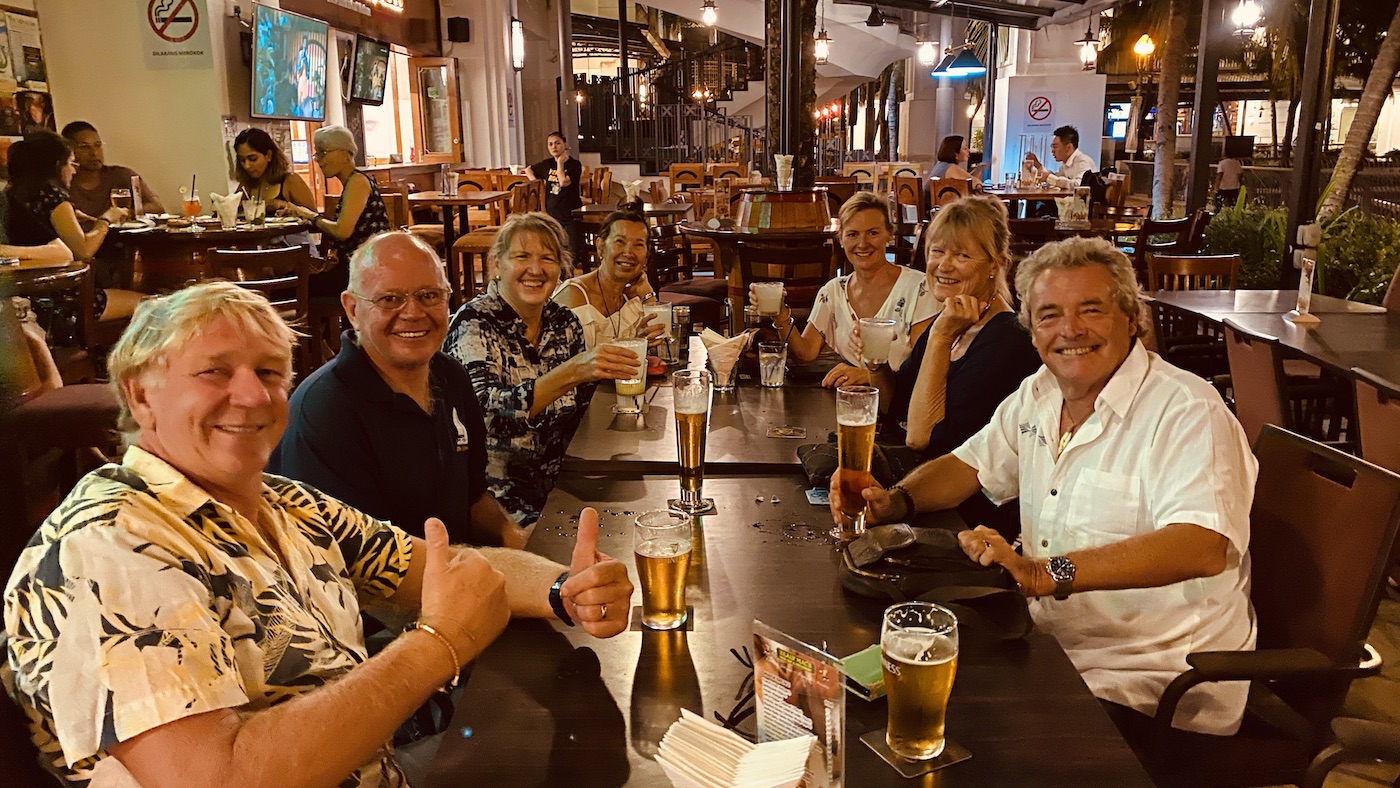
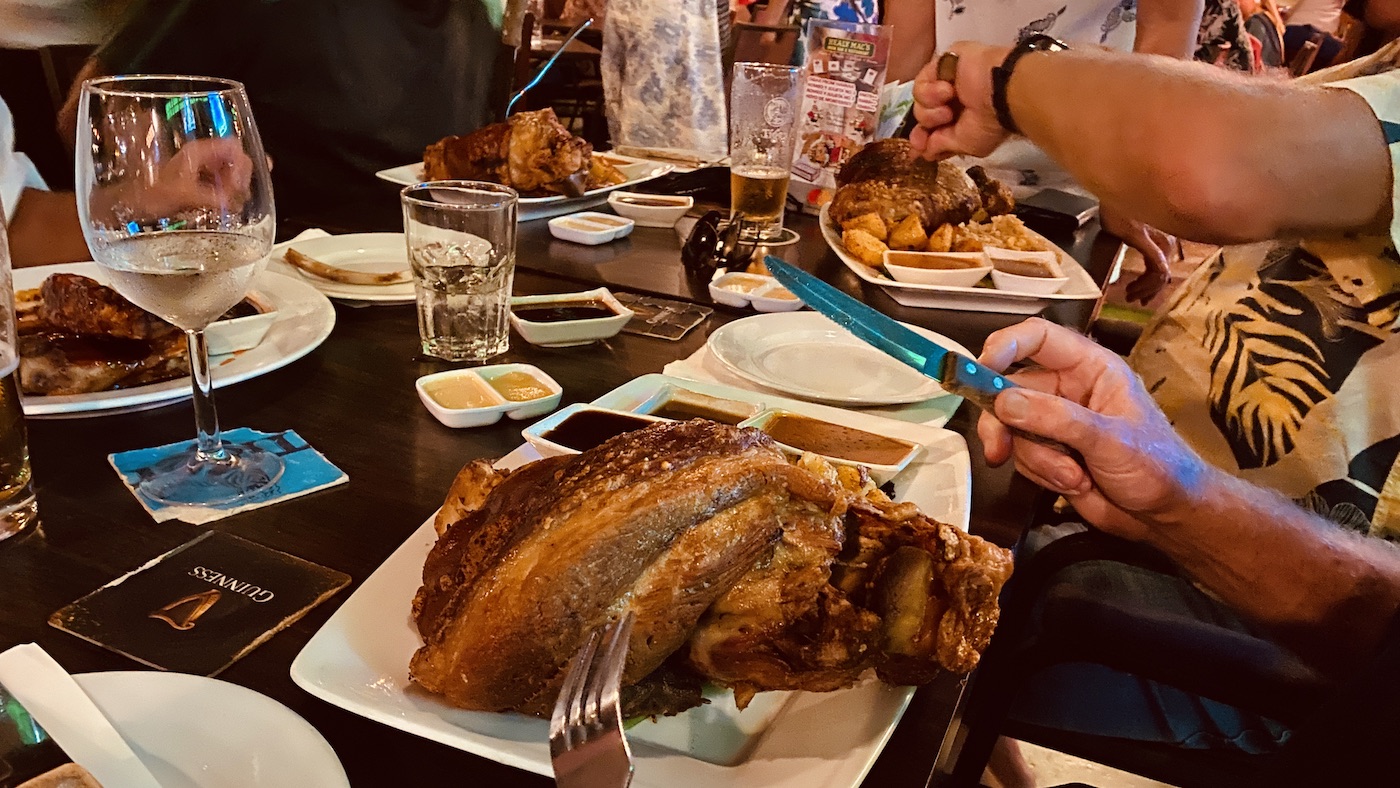
Time was also spent baking and experimenting with new dishes that met Elaine’s dietary requirements, including “bone broth”; prescribed by the naturopathic physician to help maintain Elaine’s calcium levels, given the dairy-free element of her diet. While we’ve always enjoyed a homemade chicken soup, we had no idea that the bones were so full of goodness. No wonder the older generation always swore by a good chicken soup, bones and all, to hasten the recovery from an illness! A new batch of muffins, experimenting somewhat on the recipe produced delicious results that were much lighter than previous attempts; Elaine was delighted at her creativity and that she was getting the hang of gluten-free, dairy-free, egg-free baking. No easy feat, given all the substitutions needed! Her first attempt, however, at making mayonnaise did not have the outcome she expected. In fact, it was a complete flop; we believe due to the sunflower oil and the method prescribed. Fortunately an alternative recipe was far more successful, with a little improvisation by adding some of the ingredients from the first recipe. Other galley duties including chopping up the dried fruit for our breakfast granola, which is accompanied by nuts and various seeds as well as baking a banana loaf. Anyone knowing Elaine in a “past life” would swear she’s been possessed! She does have a good giggle from time to time, though, at all this domestication of her “new” life. It’s that or starve! There’s no greater motivator!
Some baking efforts, however, had Roy joining in, especially when it came to making gluten-free bread. Fortunately our efforts on our first attempt were rewarded with a very tasty crusty loaf. Roy was definitely getting into the whole gluten-free baking malarkey when he tried his hand at making buckwheat pancakes for breakfast, accompanied by fresh pineapple, but instead of yoghurt, we had coconut cream, which turned out to be a very tasty meal actually.
Evening walks were enjoyed along the waterfront, in both directions from the marina, which revealed the interesting land reclamation project that was underway, but it was the enormous houses and townhouse complexes that caught our eye; very modern and posh! In lieu of a Grab ride on some days, our walks always produced a photographic opportunity; including this one of a truck drivers seat.
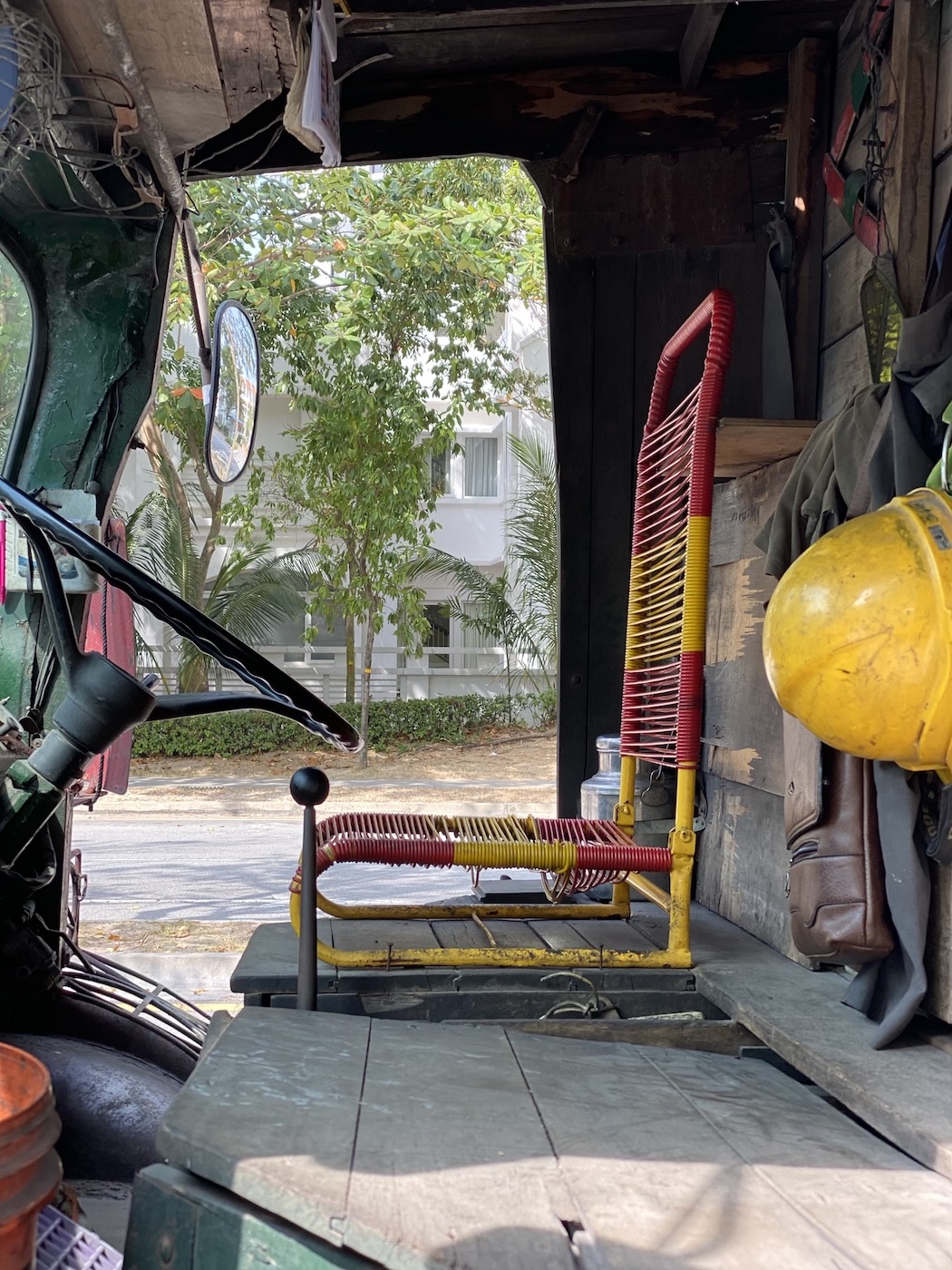
Morning coffees, lunches and dinners were enjoyed at the various establishments around the marina or slightly further afield, including a little café we found, Full of Beans, which serves a non-dairy option using oat milk; another first for Elaine and it was actually very creamy and tasty. Starbucks, however, remained the most consistent establishment for serving decaffeinated coffee with non-dairy milks. We did spoil ourselves, though, from time to time, with tasty barbecued steak dinners, given that these were the first in heaven alone knows how long, but one of our favourite lunches became the set menu selection at a fabulous restaurant serving Japanese cuisine, Edo Ichi, which we stumbled upon while walking around the Island Plaza. Dinners were often eaten at Healy Mac’s Irish Pub and Restaurant, but, given that Paw Paw’s berth was directly opposite this establishment, we were also able to enjoy a number of our favourite Irish tunes being belted our from time to time without actually having to leave the comfort of our home.
Since we had time to spare while awaiting Justine and Paul’s arrival, we also completed a few yacht maintenance activities, including defrosting the freezer, changing the generator oil, running both engines and the generator to tick them over, servicing the port shower pump, undertaking a detailed cleaning of Paw Paw’s exterior and, with the diesel truck eventually arriving, we had full tanks again in preparation for our departure.
By 29th January 2020, we were settled into Penang awaiting the arrival of Justine and Paul, Roy had completed the finishing touches to his “mystery” project and Elaine had completed the preparations for our flight to Singapore; packing and readying Paw Paw to be left unattended. Also, by that morning Roy had jumped through all the hoops necessary to get his “mystery” project submitted for review and had received approval; the project had officially entered the beta testing phase and we were now looking for volunteers. Well done Roy!
By now, however, alarming news reports were coming out of China and when we arrived at the airport, everyone, like ourselves, was wearing a mask; passengers, pilots, flight attendants, gate attendants, airport staff, services staff, although we did spot some completely clueless parents with both of them wearing a mask, but no protection for the most vulnerable; their children. The reason, of course, for all these precautions was the hot topic, the coronavirus, referred to as “2019-nCoV”, but later changed to COVID-19, a term, even the inhabitants of the remotest islands around the world, came to know of.
In chatting to family in various parts of the world, however, there was quite a discrepancy in the information being passed to citizens of the various countries, as well as a lot of misinformation being conveyed online, so we decided to provide the information that we were receiving, straight from the “horses mouth”, so to speak; from SE Asia.
Based on official research, the virus was believed to have developed from illegally traded wildlife at the Huanan seafood market in Wuhan and as of that morning, the various news media were reporting the death toll in China had risen to 132, including 26 new deaths and another 1,459 new cases confirmed, totally 5,974, while another 9,000 suspected cases that were being monitored. Besides China, the virus has also spread to Thailand, Hong Kong, Taiwan, Singapore, South Korea, Malaysia, Japan, Vietnam, Nepal, Cambodia, Macau, Australia, France, Germany, the United States and Canada.
Particularly disturbing was that both Germany and Japan confirmed that they had cases involving people who had not travelled to China, but caught the virus from someone who had. This had previously only occurred in Vietnam, where someone was infected by his father who had travelled from Wuhan. The latest cases in Japan and Germany suggested that anyone coming into close contact with another infected person could catch it and, the German case in particular, could confirm reports of spread before symptoms develop. Experts were yet to confirm this was not possible. However, over the succeeding weeks, this aspect was indeed confirmed.
The incubation period was believed to be anything from a few days to a fortnight and, at the time, it was unclear if the virus was contagious during this time; when an infected person showed no symptoms. Of course, we later learnt that this became the most deadly aspect of this highly contagious disease. Symptoms were believed to start with a fever, followed by a dry cough initially and then, after a week, led to shortness of breath, resulting in respiratory infections and pneumonia as apposed to some reports of flu like symptoms of running nose, sneezing, etc. A loss of taste and smell were later added to the initial symptoms.
China eventually agreed for the WHO (World Health Organisation) to send international experts to the country to help understand the virus and guide global response efforts. A day late and a dollar short, given the global spread by this time and here we were, in SE Asia, during the Chinese New Year festivities, with millions of Chinese commuting between countries to be with loved ones and Elaine without an immune system to speak of, as well as the risk of her psittacosis pneumonia being triggered by all of this! Not very good odds! We definitely started to say our prayers more regularly!
By 30th January 2020, on our return from Singapore, with the death toll of the coronavirus and the numbers of people infected continuing to rise rapidly, we weren’t surprised to see extra precautions being taken at Changi International airport; large areas cordoned off as flights from certain countries arrived, mass infrared screening, higher security screening on certain flights, including our flight to Penang, etc. Some of these procedures were evident on our arrival at Penang airport as well.
Friday, 31st January 2020, was all about bringing order back to our lives, which seemed to get lost very quickly these days for some obscure reason. Elaine unpacked, updated her medical notes, sorted out her new schedule of medications and supplements, finalised our yacht insurance, worked out a high level itinerary for Justine and Paul’s visit as well as made the necessary reservations at the various marinas, worked out a high level itinerary for Thailand and, finally, researched the customs’ regulations in Thailand for Paw Paw. Nothing like keeping your mind occupied so that you don’t dwell on other, more disconcerting matters! Roy busied himself doing the grocery shopping, downloading the latest software for our chartplotter and completed a software update on his “mystery” project, following a round of beta testing.
Saturday, 1st February 2020, however, was a day full of great news. Firstly, Roy announced that his “mystery “ project had been released to the market on the Apple Store. Yes, at last, the great reveal!
On the days that Elaine was debilitated by her conditions and had no choice but to rest in bed, Roy occupied his time, with design input from Elaine at times, writing two applications on the Apple platform; “Anchor” and “Anchor Plus”; applications for sailors, produced by sailors that work in Flight Mode!
“Anchor” is a free anchor assistant application, while “Anchor Plus” can be purchased for $4.99USD. Features of “Anchor Plus” include a compass, MOB (Man Overboard) functionality, a map and satellite view of one’s current location, sun and moon information and, of course, the anchor assistant with features that include an anchor alarm; one that actually doesn’t go to sleep when the device is stationary, as with all the other anchor alarms we’ve purchased over the years. Additionally, if you have connectivity, the feature will send email messages of the status of the anchor and yachts position, thereby keeping you informed when you are not onboard; the feature that worked perfectly well the night Paw Paw went adrift in Bali, but Roy had left his personal phone onboard and, therefore, didn’t see the emails. We now have the emails sent to both our email addresses, to be sure, to be sure!
Planned future features are to include weather, interfaces to other Apple devices and possibly tides and “light configuration” for nighttime navigation, all dependent on Roy’s enthusiasm and boredom levels.
These applications were borne out of a number of factors, though, that, as sailors, we were tired of. For instance, having other sailors continually anchor on top of us because they’ve misjudged the distance and scope needed, having to hunt around various websites or applications to acquire the information we needed and having to have some sort of connectivity to do so. We trust that sailors out there, like ourselves, will enjoy the “one-stop shop” instead.
The second event which conveyed fabulous news to start the day was a phone call from Keenan informing us that he had made Captain at Delta; what a momentous achievement at the tender age of 30, Captain of a major airline. While our hearts were bursting with pride, it somehow felt like an inadequate description. We were, in fact, ecstatic! Unfortunately a few short months later we would learn that this allocation would be short lived; the coronavirus had started to affect domestic and international travel all around the world! Pilots were being furloughed left, right and centre, including many of Keenan’s friends in the US and Elaine’s niece’s husband in South Africa.
Not knowing the eventual outcome of this good news, though, we decided to celebrate by heading to Georgetown for our nighttime adventure; celebrating the Jade Emperor's birthday, which falls on the ninth day of the Chinese New Year, a major celebration amongst the Hokkien people in Penang, steeped in culture and traditions.
The celebration is known as “Thnee Kong Seh” while the rites are known as “Pai Thnee Kong”, which translates as "Worshipping the Jade Emperor". Due to its significance, not only in Penang, but elsewhere too, the day is also known as the Hokkien New Year’s Day.
Various schools of Taoist interpret the Jade Emperor as being either an incarnation of the “Three Pure Ones”, the three highest gods in the Taoist trinity or ranked below them, but most Hokkien people, including the Penang Hokkien, where the Jade Emperor is known as “Thnee Kong”, literally meaning “Lord of the Heaven”, is regarded as the supreme deity in Taoist, reigning above all the other Taoist deities.
The birthday is celebrated with offerings of fruits and all sorts of food such as “Mee Koo” (Steamed Pink Tortoise-Shaped Buns), “Ngor Siew Th’ng” (Pink Pagoda-Shaped Candy), “Bit Chien” (Skewered Sweets) and “Bee Koe” (Sweet Glutinous Rice). We even saw full roasted pigs. Traditionally large tables are laid out where all the offerings are placed before the Jade Emperor, with sugarcane stalks flanking the front of the tables. There are apparently different meanings to the offerings placed on the altar. For instance, four types of fruit; apples, bananas, pineapple and mandarin oranges signify the four seasons.
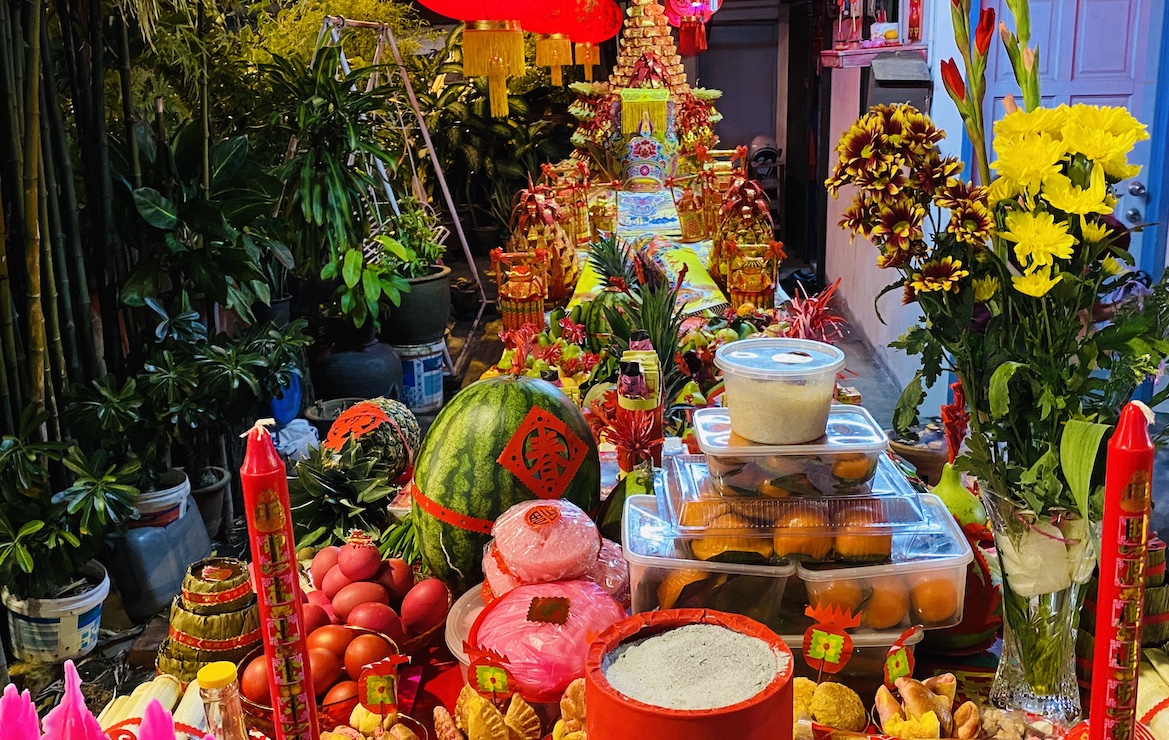
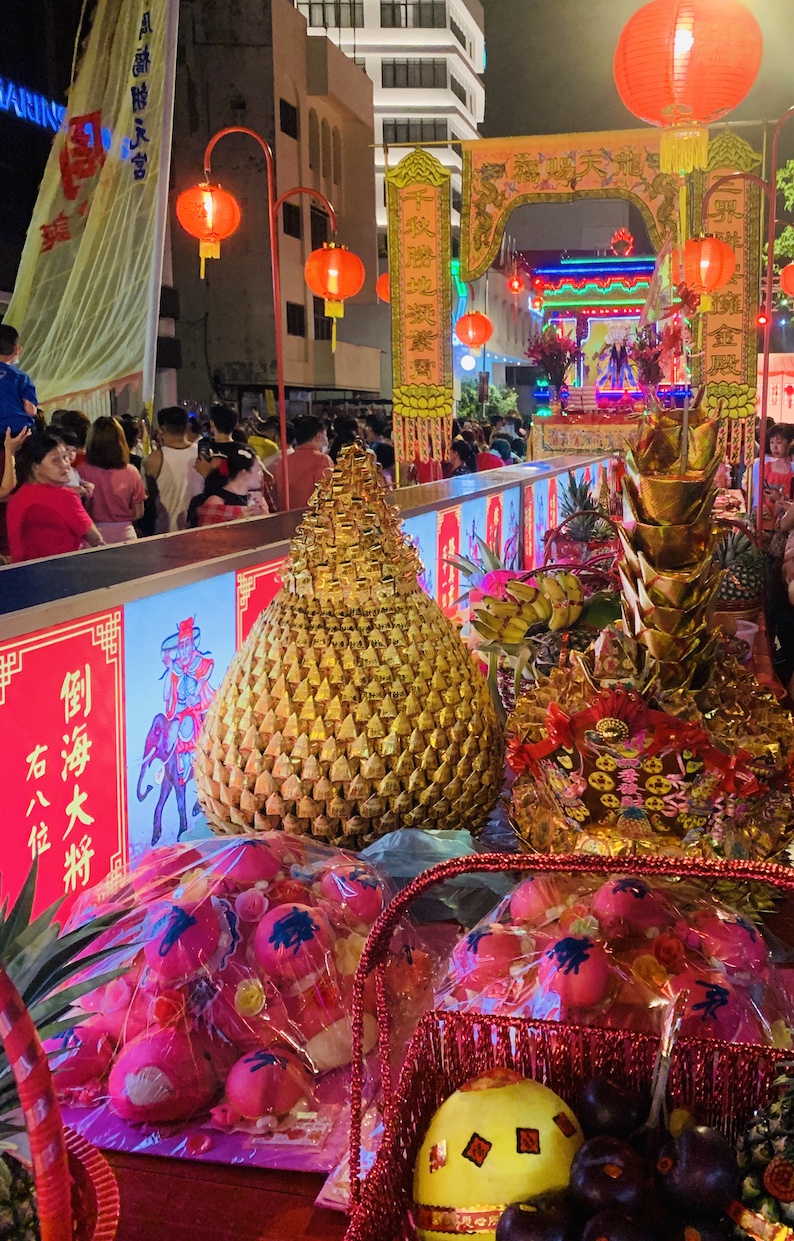
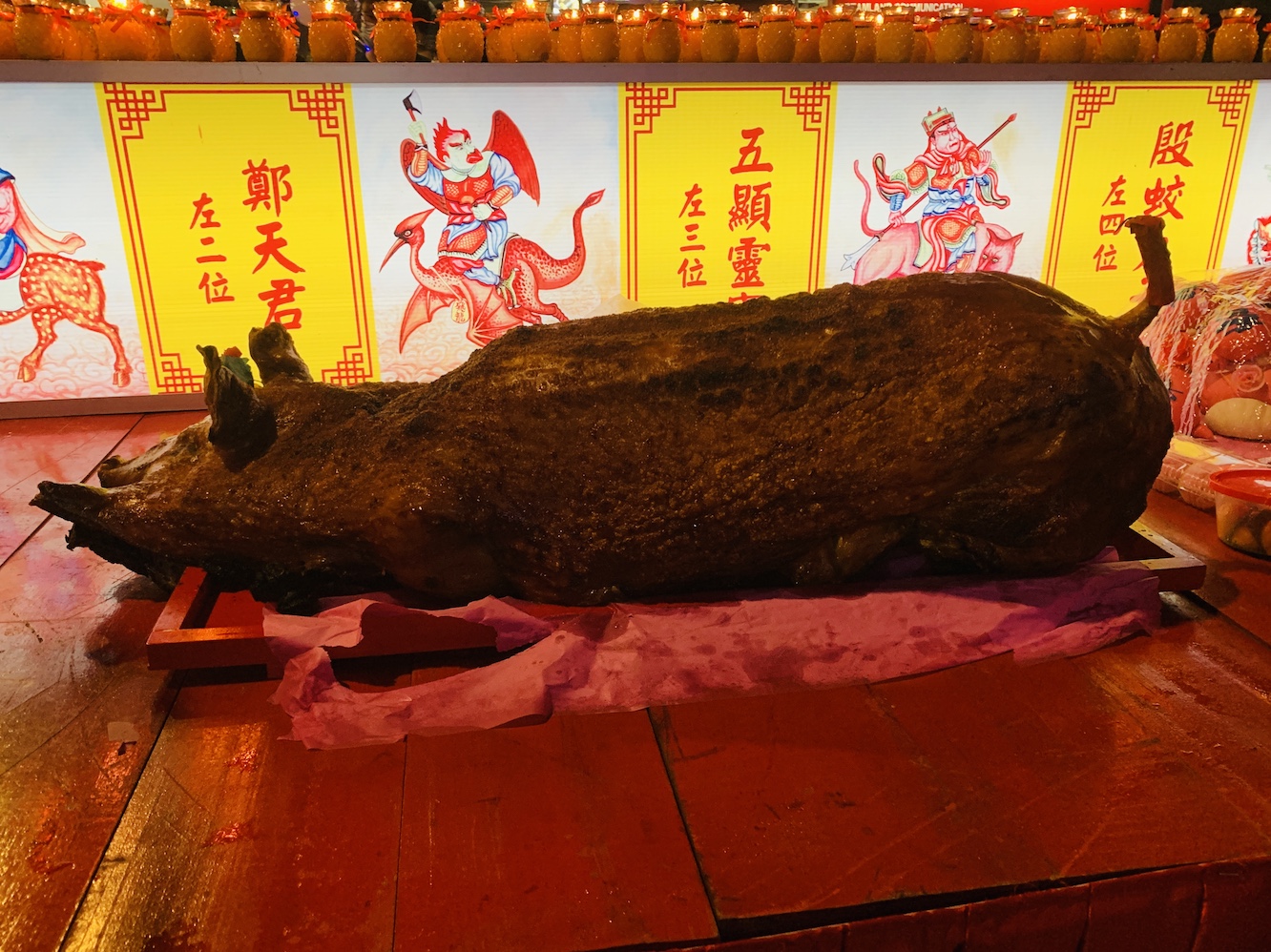
This grand celebration goes back to the year 879 in China, during the Tang Dynasty when a rebel tried to overthrow the Tang imperial government. The Hokkiens had to escape persecution on the first day of the Chinese New Year and a sugarcane plantation owner let them hide in his plantation. They hid there for nine days and when they emerged the danger had passed. Given that it was also the Jade Emperor’s birthday on the day they emerged, the Hokkiens believed that the Jade Emperor had saved them and pay homage to this belief to this day, hence the importance of sugarcane at the offering table. The rites of worship mostly take place at midnight in individual homes, but according to Hokkien tradition, time is marked by two-hour blocks. So, midnight encompasses the time block from 2300 to 0100, which means the worshippers may start the rites at 2300.
We managed to get down town at around 2130, although, due to the traffic jams and road closures, we had to walk a few blocks. The spectacle that awaited us was incredible. Besides the regular hustle and bustle of the Clan and Clew Jetties, there were shrines everywhere, traditional drum bands playing in front of the shrines, tables filled with offerings in front of the shrines, shrines in people’s homes, preparations underway for the traditional rites, fireworks, lion dances, a modern soundstage featuring various symbolic dances and music artists and, of course, the grand offering table in front of the Jade Emperor, featuring all the fruit and food items noted above.
With the throngs of people, it was also somewhat reassuring to see the authorities handing out masks at the various entry points to the celebrations, but regardless, we didn’t stay long after 2300, a very good decision on hindsight, given the traffic chaos and the experience we had at getting a Grab back to the marina. Nonetheless, it was another wonderful traditional Malaysian experience we were fortunate enough to enjoy; one we would never have known about, had it not been for our chance encounter with Sharon and Teoh off Kristal who informed us of the event. For us, although we had also placed ourselves in a huge amount of danger unknowingly, given the crowds that joined the celebrations, it was a fitting end to a day full of reasons to celebrate!
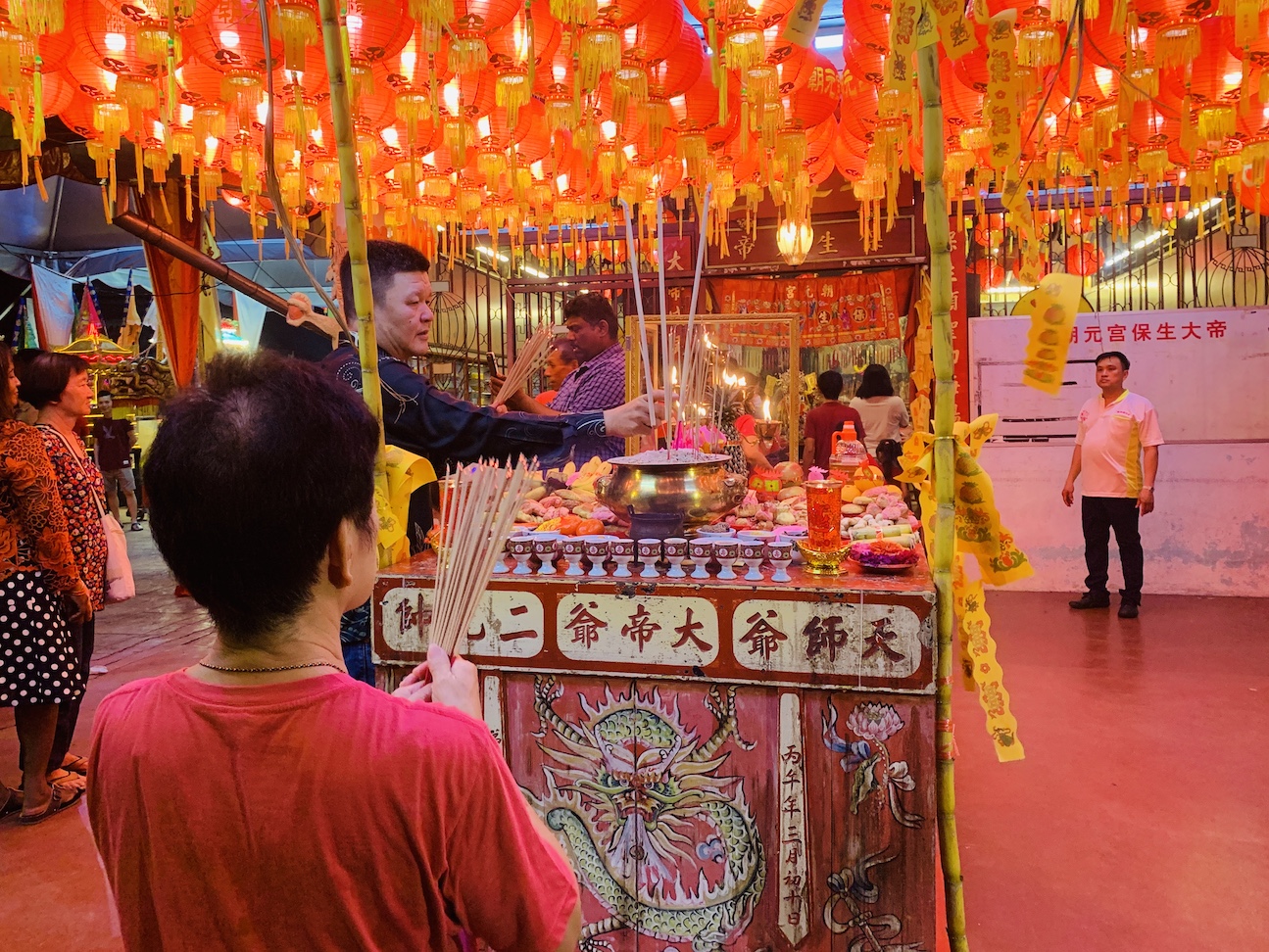
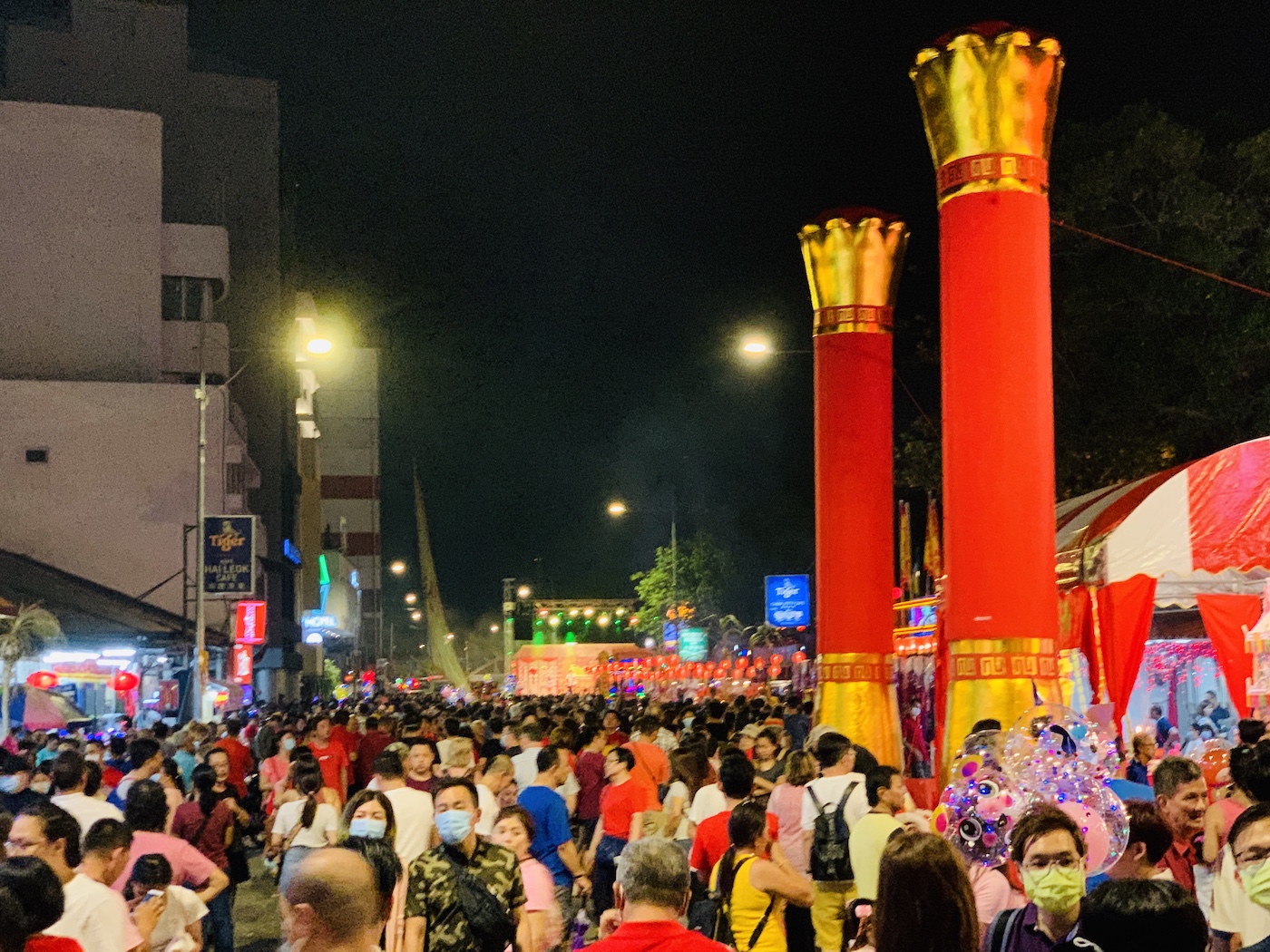
On Monday, 3rd February 2020, with all our plans on track, we were up before dawn to get to the Thailand Embassy before the crowds and before opening time. There was, however, a long queue by the time we arrived, but the process was very efficient nonetheless, so we didn’t have long to wait and had handed in all our documentation for processing within an hour, by which time the queues had dissipated. On hindsight we probably could have arrived at a more civilised hour and walked right in, but then again, maybe not! Unfortunately, though, the online form we completed and printed was unacceptable, so we had to complete the paper application form at the Embassy, although the online form was an exact replica of the paper form. The mind boggles!
For cruisers reading this, the process involved: completing a paper application form, acquired at the Embassy, for each applicant; stapling two passport photographs of the applicant to the application form; adding a copy of the yacht registration to accompany each application form; adding a copy of the identification page of the applicant’s passport to accompany the application form and making sure all the copies were on A4 or similar size paper. In addition to the paper application form, we received two additional forms per applicant at the Embassy, both to be completed and signed by the applicant. One was a checklist and the other a receipt slip with a number allocation. The latter was the order in which we entered the processing office and was returned to us after being stamped as our receipt for collection of our passport and visa. All of these documents had to be “bundled” together per applicant, ready to be handed in when we were directed to the counter.
Finally, there were three different queues; the first was outside the embassy complex gates, the second was outside the processing office, where our documentation was checked and the third was inside the processing office. “Groups” of 15 to 20 people were progressed through the subsequent queues from the first queue. Once we reached the counter in the processing office and handed over our applications, we were charged $150RM per applicant and given our stamped receipt, with instructions to return the following afternoon, at which time we collected our passports and visas, without incident. We were definitely getting excited now about Justine and Paul’s imminent visit and seeing family and friends in Thailand.
Unfortunately a multiple-entry visa was not on offer, which meant we would have to apply for another 60-day tourist visa for each of our visits to Thailand, even though our first visit was expected to be less than 30 days. That, of course, meant we would have to return to Penang from the Langkawi archipelago to obtain our visas for our second visit in July or pay the higher fee on Langkawi Island and wait for the longer processing time, since the visa officer actually travels to Penang to get the visas processed, similar to an “agent” type service. At this stage we were opting to pay the extra money rather than return to Penang! We weren’t to know, however, that the gods had another plan in mind and regardless, we would be returning to Penang some months later!
On leaving the Embassy, we enjoyed a drive down Gurney Street, which we’d previously only seen at night, then visited the Gurney Plaza mall. Arriving early at the mall meant we avoided the crowds, but our primary purpose of the visit was twofold; find Roy a Liverpool cap and to scout yet another supermarket, Mercado, in the hope of finding some products Elaine needed versus having to make from scratch. Fortunately we found gluten-free bread, but not the egg-free mayonnaise. It was the story of our lives these days!
Other outings while in Penang included, what we had hoped would be a beach day, as well as a few tourist attractions we saved to enjoy with Justine and Paul. Our impressions of Batu Ferringhi, however, were not favourable, although this is touted as the top beach in Penang. While the beach itself was lovely, the local homes and shacks lining it made the whole ambiance tacky. The only exceptions were the Frandy Beach Bar and the Parkroyal Penang Resort which were the only decent establishments along the entire stretch and where we enjoyed lunch at the latter. It didn’t help matters that the water was also very murky and there was quite a swell running in. The other odd aspect was that it was primarily deserted with all the “water toys” sitting idle. It later occurred to us that the coronavirus was probably affecting tourism. Regardless, we would be very generous in describing this beach as rustic; Pangkor Island’s Coral Beach was definitely far nicer. So, we returned to Paw Paw very disappointed at not having had the beach day we’d looked forward to, especially with the temperatures and humidity continuing to create very uncomfortable conditions. With no swimming pool around, our only option was to cool down in our air-conditioned “home”.
We of course also continued to keep an eye on the status of the spread of the coronavirus, all of which was very troubling, but we eventually found a website and an application that was providing all the information in an up to date chronological order. It was definitely very informative and interesting, although very disturbing indeed! At the time we thought we couldn’t have picked a worse time to sail through SE Asia after spending an extra year in Australia. All we could do now was take the precautions of wearing our masks at all times while out in public, washing our hands constantly, being vigilant of the state of health of others around us and avoid crowded venues moving forward. This definitely limited our outings or, at the very least, dictated when we undertook them, as we’d taken the decision to curtail our time off Paw Paw altogether by now. Our hope was that the worldwide authorities would get this ever worsening situation under control soon, as they all seemed to have been “asleep at the wheel”!
Wednesday mornings are never the best mornings for Elaine. Normally, the concoction of medications and supplements which she has to take first thing are spread out over a one and half hour period before she can have her breakfast, which is then succeeded by a host of other medications to be taken after breakfast. On a Wednesday, though, the precursor to breakfast covers a two hour period. The net result of all of this is that she needs to start early (aka wake up to an alarm) in order to get breakfast at a reasonable time of the morning. On a morning where we have to get up early for an appointment or for a flight, the logistics become impossible, especially since her choices for breakfast are not available at any on-the-run food outlet. And, Wednesday, 5th February 2020, was another one of those days; we both had appointments, or so we thought, at the Loh Guan Specialist Centre, for followup blood tests, but what an inefficient process this turned out to be.
After making prior arrangements for our appointments, we were told to be at the reception of the centre at 0800. After a 5 minute conversation with the receptionist, we were sent to the registration area and had to wait until their opening time at 0830. After about 10 minutes of formalities there, we were given a card and sent to the 5th floor of the building, where, you guessed it, we had to sit and wait for the nurse, who only started at 0900. After a two minute conversation with her, we were still sitting and waiting to see the doctor after another hour and a half. We’d essentially spent two and half hours being shuffled through an administration process and still hadn’t seen a doctor to provide the prescription for our blood tests, never mind the time it was now going to take to get the actual blood tests done. By 1030 and no sign of any progression, we asked for our medical records back, cancelled the “appointments” and left. What a complete waste of time!
Fortunately our visit to the dentist at SmileBay Dental in the Island Plaza was far more successful. Elaine walked out having had an annual checkup, a cleaning and three fillings done within an hour, following which it was Roy’s turn. He also needed his “temporary repair” replaced after one of his teeth broke off in Australia when we were en route to Indonesia. What transpired is that he’d apparently had a permanent repair completed when he visited the dentist in Townsville without realising it. No wonder it was still in place all these months later! It was the price we were charged that dismayed us, though; $27.50USD each for our checkups and cleaning plus $90USD for Elaine’s three fillings, all completed in a modern, hygienic facility with English speaking staff, similar to any found in a western country. No wonder dental tourism was on the increase here!
Of course, everyone was also on high alert with the progression of the coronavirus and we were screened at every institution we entered that day; screening areas were placed at the entrances, temperatures were being taken, no one could enter the buildings without first sanitising their hands in front of the officials controlling the checkpoints and masks were still being distributed and worn; all definitely a good thing and reassuring to know that no one was dropping their guard. We had also noticed just how quiet the Straits Quay mall and complex had become, including the marina, with only ourselves and our berth neighbour, Henrietta, left, aside from the permanent yachts. Normally the waterfront was a hive of activity, the restaurants were bustling, shoppers were out, etc, but that had not been the case for a number of days. We assumed it was due to a lack of Chinese tourists, who we saw constantly taking selfies from the railing with Paw Paw in the background. Now we were only seeing the odd caucasian or a local resident out for their exercise walk. While this was definitely affecting the local businesses, no doubt, we were definitely not complaining as it was making for a safer environment until the entire coronavirus situation settled down or dissipated! Wishful thinking!
Regardless, on Friday, 7th February 2020, we decided to enjoy another tourist attraction to avoid the weekend crowds. Our choice was a museum dedicated to Penang’s Peranakan heritage, but some researched history and background put this visit into context.
There is a geographical area known as Nusantara, an Indonesian and Malay name for parts of maritime SE Asia. It is an old Javanese term which literally means “outer islands” and is generally accepted to refer to the Indonesian archipelago, but in Malaysia, it is adopted to mean the Malay archipelago.
The term was first believed to be used in the era 1290 to 1364, by Gajah Mada, a powerful military leader and “Mahapatih” (similar to a Prime Minister), according to old Javanese manuscripts, poems and mythology, who was credited with bringing the Hindu empire, Majapahit, to the peak of its glory. He delivered an oath called “Sumpah Palapa”, in which he vowed to live ascetic by not consuming food containing spices until he had “conquered all of the Southeastern Asian Archipelago of Nusantara for Majapahit”. In modern Indonesia, Gajah Mada, serves as an important national hero, a symbol of patriotism and national unity. Today, however, Indonesian historians believe that the concept of Nusantara, as a unified region, was not invented by Gajah Mada in 1336, but earlier in history. In 1275, the term “Cakravala Mandala Dvipantara” was used to describe the Southeast Asian archipelago by Kertanegara of Singhasari, who died in 1292 and who was the last and most important ruler of the Singhasari Kingdom of Java, reigning from 1268 to 1292. “Dvipantara” is a Sanskrit word for "islands in between", making it a synonym to “Nusantara” as both “dvipa” and “nusa” mean "island". Kertanegara envisioned the union of the Southeast Asian maritime kingdoms under Singhasari as a defence against the rise of the Mongol Yuan Dynasty in mainland China.
Regardless of the term’s origins, it is associated with the Peranakan Chinese or the Peranakans, who are a sub-ethnic group defined by their genealogical descent from the first Chinese settlers in the Malay Peninsula and the Indonesian archipelago, as well as the Peranakan culture, especially in the dominant Peranakan centres of Malacca, Singapore and Penang. This culture is characterised by its unique hybridisation of ancient Chinese culture with the local cultures of the Nusantara region and, in the earliest days, included interethnic marriages. The ancestors of most individuals who identify as Peranakan were immigrants from the southern provinces of China who arrived in significant numbers in the Nusantara region between the 15th and 17th centuries, taking abode in the Malay Peninsula. Their descendants in Malacca, Singapore and Penang are referred to as “Baba-Nyonya”, a term we first encountered while touring in Malacca.
And this preamble brings us to Chung Keng Quee, the 19th-century Chinese tycoon, who built and resided in the Penang Peranakan mansion, formerly named Hai Kee Chan, which means “Sea Remembrance Hall” in Penang Hokkien and which we thoroughly enjoyed, along with the Embroidery and Beadwork Private Collection of Baba Peter Soon, which is housed in a former neighbours house to the side of the mansion, behind the servants quarters and renovated for this collection.
The third of five sons, Chung Keng Quee was born into a peasant Hakka family in a village called Xin Cun, in the county of Cheng Sheng in the province of Guangdong, China. It is believed that in 1841, he journeyed from China to British Malaya in a junk, sent by his mother, Madam Lai, to look for his father, Chung Hsing Fah, who had left his wife in China to look after his elderly mother. Chung Hsing Fah, had come to British Malaya as an indentured labourer ie under a legal contract that covers a debt or purchase obligation, to make a living and support his family in China, but after some time of not receiving any word from neither her husband nor her second son, whom she’d sent to track down her husband, she then sent Keng Quee. When Keng Quee arrived in Perak, a province of modern day Malaysia, he discovered that both his father, Hsing Fah, and his brother, Keng Seng, were well established in business.
Keng Quee joined the mining business which his father and brother were both engaged in and by 1860 he controlled the Penang based, Hai San Secret Society, as well as the Larut tin fields which the Hai San were associated with. He was also believed to be involved in many other industries, including farming, pawnbroking and logging. By the late 19th century Chung Keng Quee was the Kapitan China of Perak province, a high-ranking government position in the civil administration of colonial Malaysia and was one of the richest men in Penang. He commissioned the construction of the mansion in the 1890s and today, as a museum, contains thousands of Peranakan artefacts, antiques and collectibles and showcases the Peranakan lifestyle, interior design and customs, such as the typical grand long dining table, which we learnt from our tour guide, was positioned perfectly so that Keng Quee could see all four corners of the house, the entrance and the staircase, using mirrors mounted on the walls, when he sat at the head of the table while entertaining guests. It was believed this was necessary as a powerful man within the local Hai San Secret Society and, per our guide, as a member of the Chinese Mafia. Also, these long tables were used only to entertain guests, since Chinese families only eat at round tables.
The mansion incorporated both European and Chinese designs, particularly the number of wide open courtyards and the carved wooden panels and screen for the walls vs the European interior furnishings and features such as the Scottish cast iron works and the Stoke-on-Trent ceramic floor tiles. The majority of the furniture incorporated mother of pearl inlays and the courtyards were open on top to allow rain to enter the home; the pouring rain a Chinese symbolism believed to bring wealth.
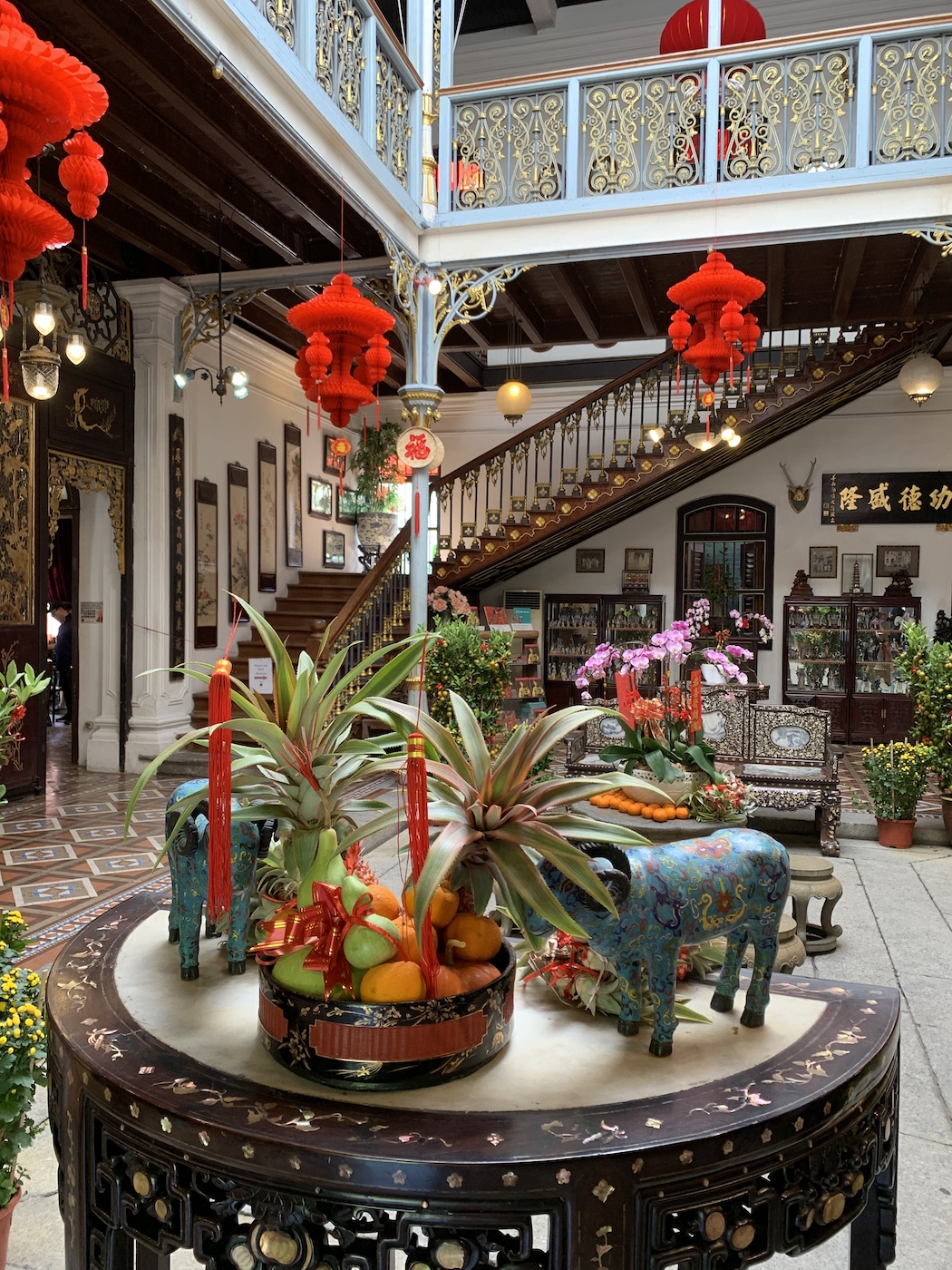
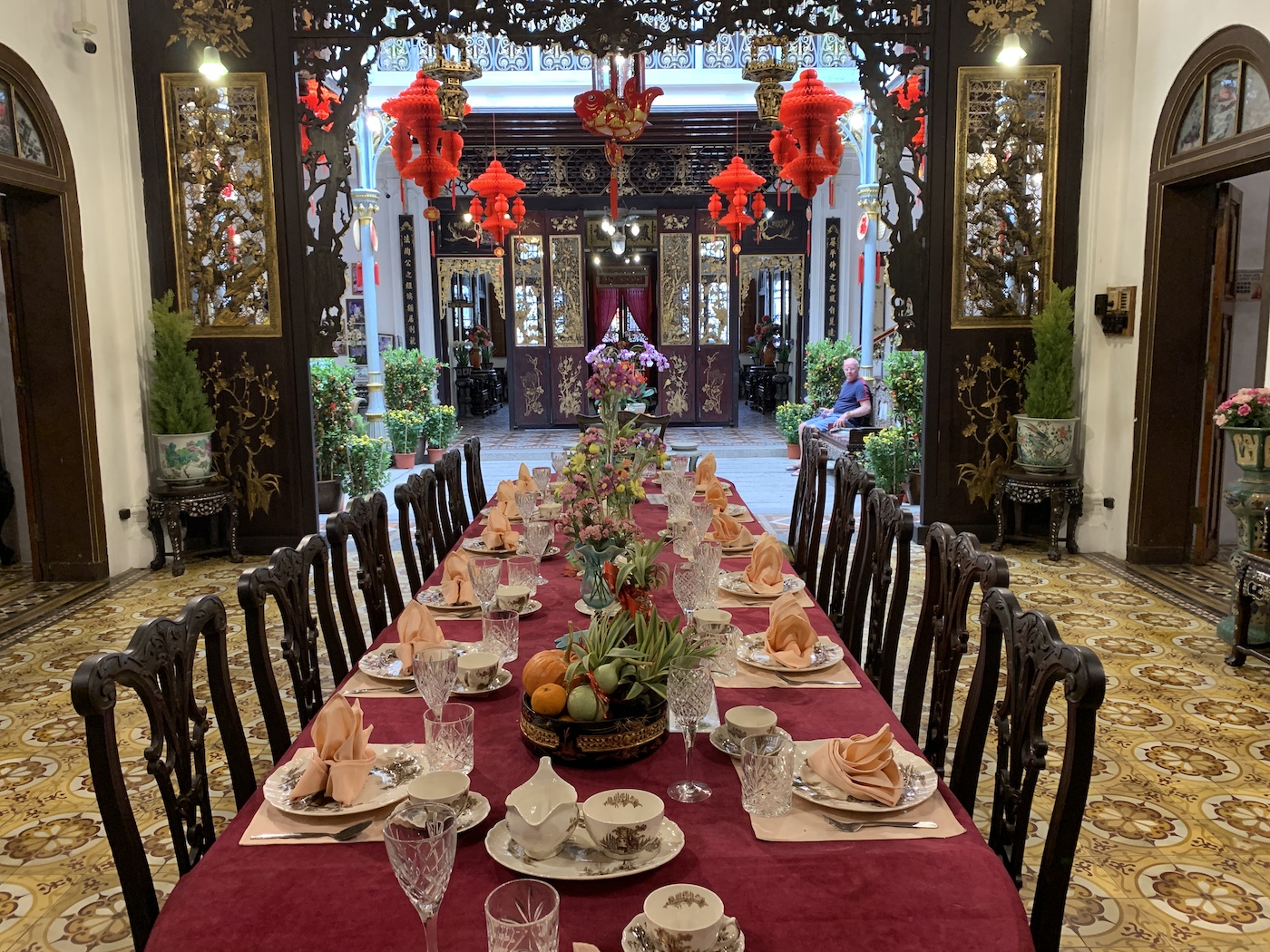
In addition, he built a temple next to the mansion honouring himself, which incorporates a life-sized statue of Chung Keng Quee, manufactured in England and still evident inside the temple today. The temple is also adorned with portraits of himself and his family members and the number of dragons on the facades of the temple were indicative of his power within the community. Since daughters were not allowed into the temple, there was a smaller, second one, on the second storey of the mansion for their use and where we got to sit in the “loveseat”.
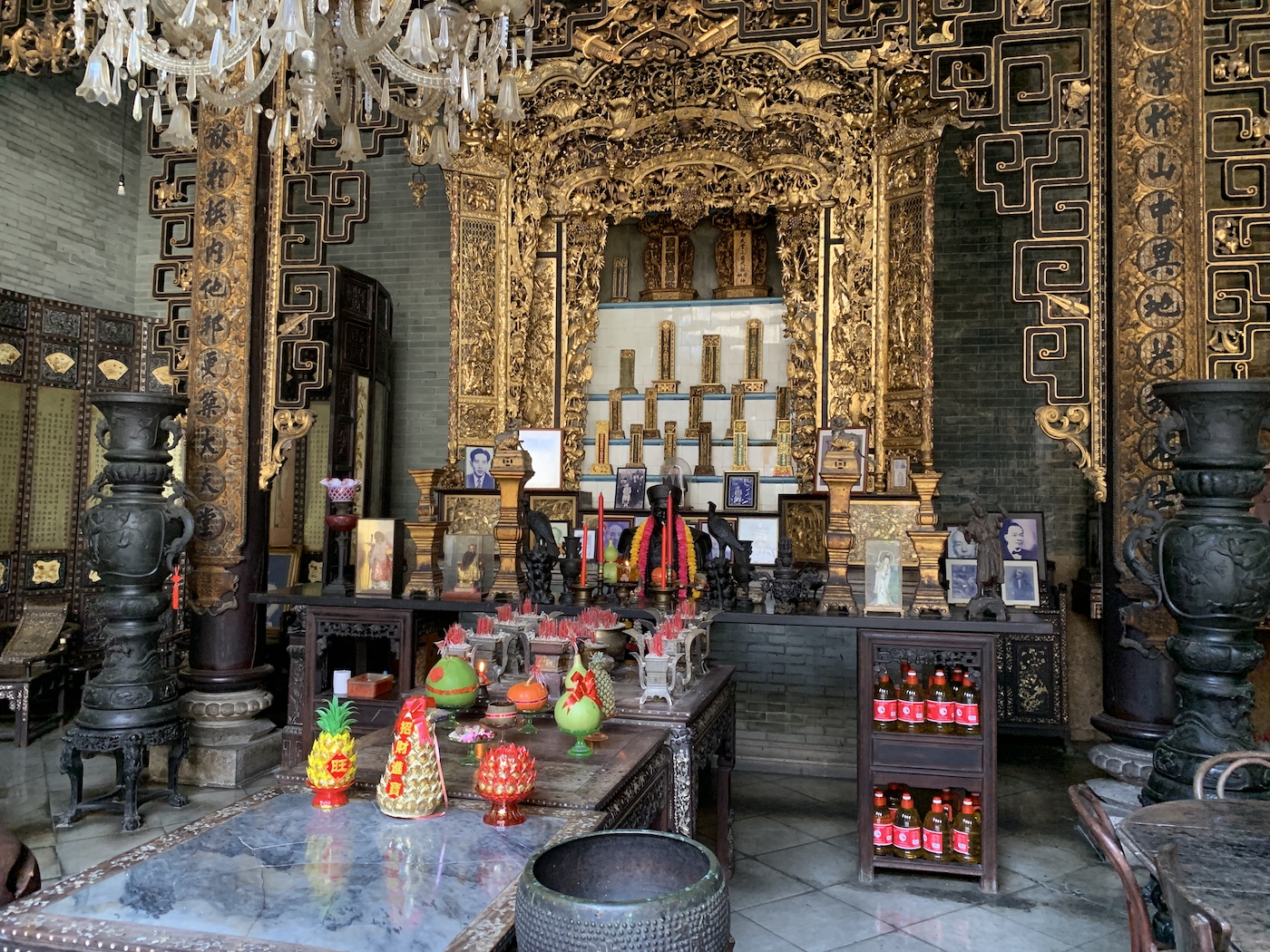
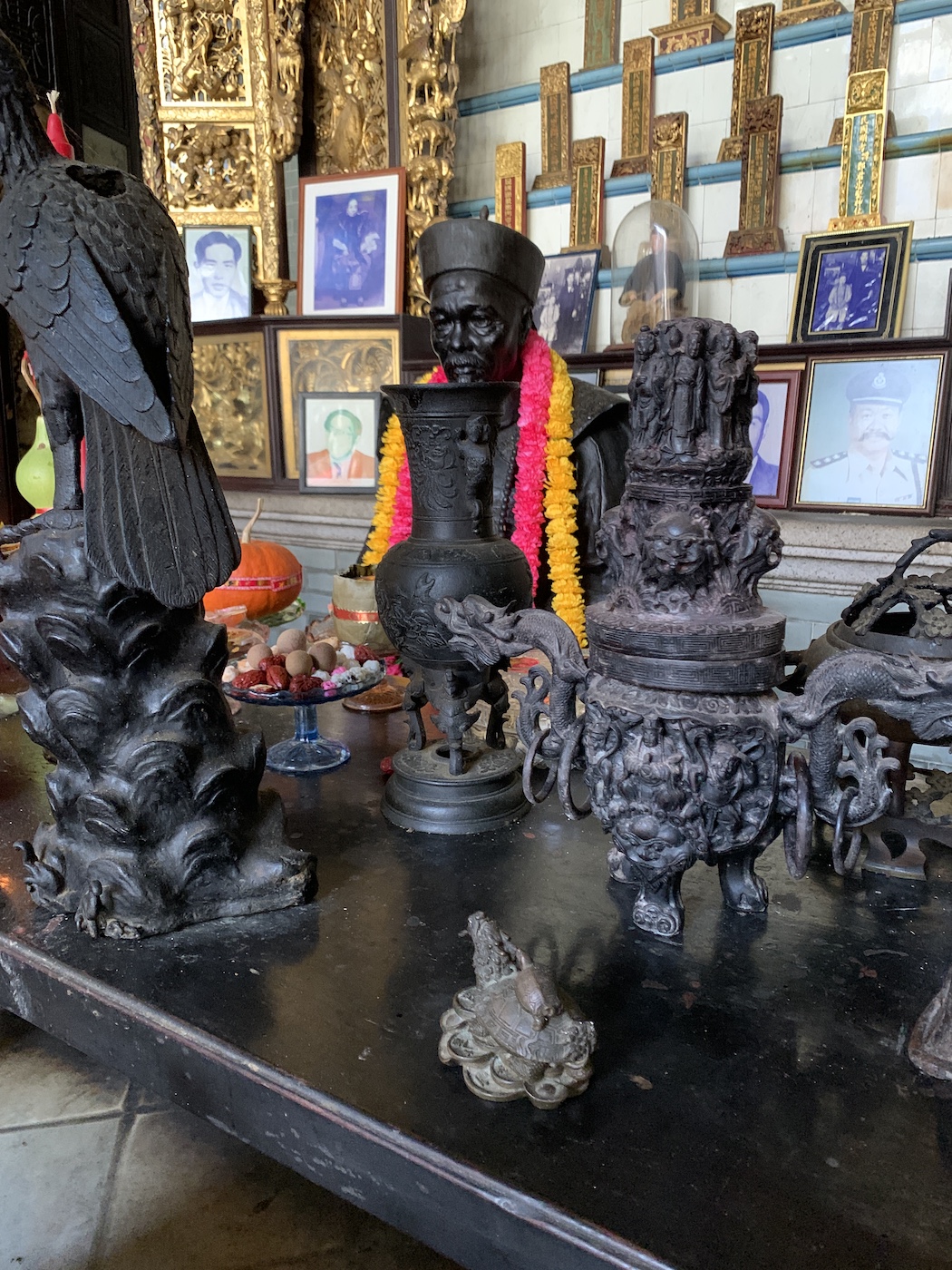
The servants quarters, another indication of power and wealth, were built behind the temple to the side of the house and included the kitchen. Here we were also shown a child’s playpen and seat, the latter converting to a stool for the mother to sit next to the playpen, when required.
Other rooms of the mansion included one with the “portraits “ of the owner and his wives, which were, in fact, tapestries; the means of capturing a person’s image at the time, as well as a room displaying the ornate oil lamps used in the mansion, various bedrooms and parlours and various family dining rooms, all with round tables.
Our tour continued to Baba Peter Soon’s Private Collection, where we learnt that a beaded slipper took four months to complete and the beaded tapestries took eight months, with production rotating through every female family member, each taking an hour a day to work on it. When you first look at a tapestry, it looks as if it was completed using wool or thread, but when you zoom in, the tiny beads reveal themselves. Simply stunning!
Of course there was also a display of the tiny shoes worn by women when their feet were bound and deformed, a tradition used to prevent a girl running away from her husband after the marriage ceremony.
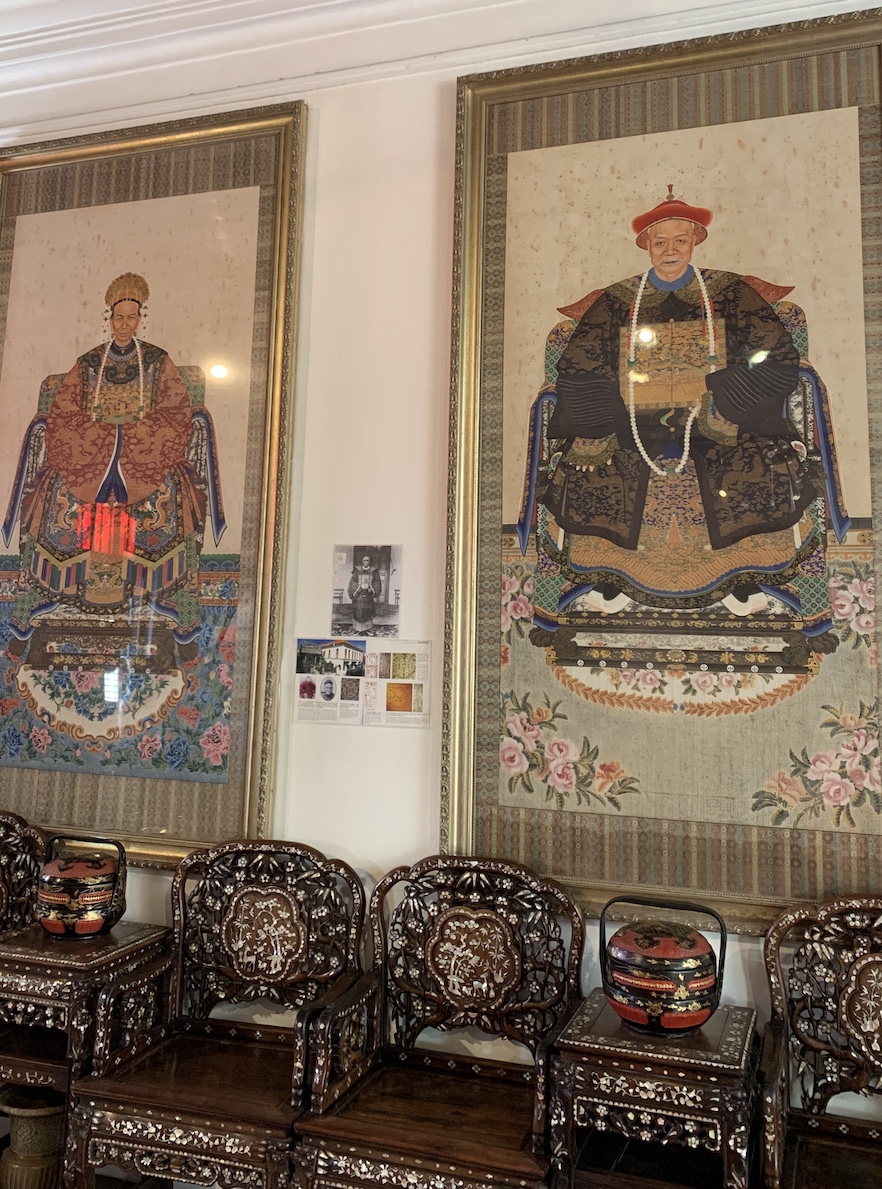
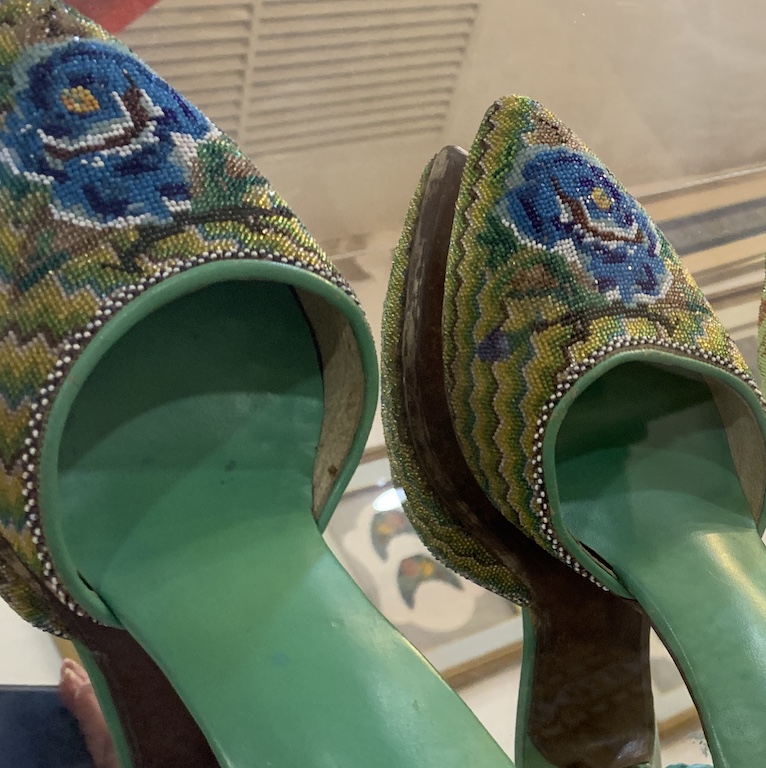
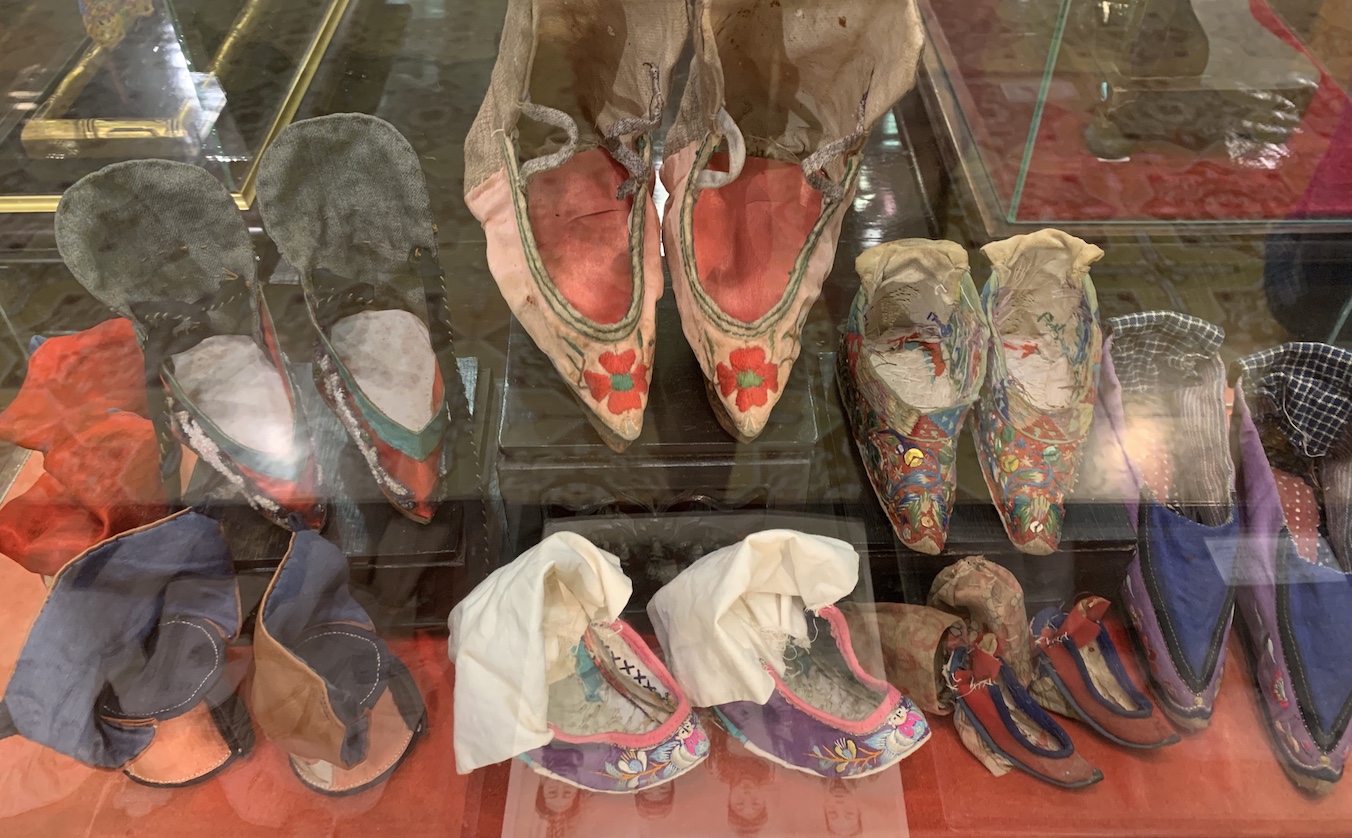
The jewellery covered all sorts from beautiful necklaces, rings, bracelets, headdresses, hair clips and tiaras to gold “belts” used by the men to keep their pants or wraps in place.
After Chung Keng Quee’s death in 1901, the mansion was passed down to his descendants, but gradually fell into disrepair. It was then acquired by a property developer in the 1990s, who turned it into a museum and what a fascinating glimpse into the Peranakan life it was.
We returned to Paw Paw to find our berth neighbour, Henrietta, had left, but Elaine spent her afternoon “hanging out” with Brooke and the grandsons, who had all watched a documentary on Australia, one in a series on the wildlife of different countries around the world and were keen to tell Grandma all about the animals they’d learnt about. When Grandma happened to mention she had a photograph of herself with a kangaroo, she opened the floodgates, because, of course, they wanted to see it. With that a flurry of photographs of wallabies, kuala bears, crocodiles, turtles, stingrays, giant eels, dolphins, seahorses, blue starfish, monkeys, Komodo dragons, etc, were sent to Brooke and were all received with exclaims of “whoa” and “cool”, completely fascinated that their Grandma and Grandpa were in the photographs with these animals and wanted to know: “How come?“. Then, at the end, William asked: “Grandma, do you have one of a giant gorilla?”. When Elaine indicated she didn’t, the response had her in stitches: “What do you ‘meeeannn’ you don’t have a picture of a giant gorilla!”, in a dignified tone. Guess he thinks his Grandma didn’t quite meet his exacting standards and expectations; this child is so like Elaine, it’s frightening! After goodnight kisses, as it was their bedtime, Elaine continued cataloguing our photographs. At this point it would have helped if she had actually stopped taking photographs while she caught up on this activity, but there was still so much of Penang to explore and capture.
Saturday, 8th February 2020, was the day of “Thaipusam”, a dramatic Hindu festival, which was taking place in downtown Georgetown. It is a festival celebrated every year on the full moon according to the Tamil calendar. The eve of “Thaipusam” is marked by a procession of a silver chariot carrying the image of the Lord Subramaniam, which stops at every shrine on a dedicated route through the town, while the crowds break coconuts and make offerings of fruits, flowers and money. On the day of Thaipusam, “kavadi” bearers (carrying a physical burden) start a procession from the Sivan temple, where the devotees are washed with saffron water and then put into trances to receive their body piercings, following which the procession moves to the Waterfall Temple where the body spears are removed. Although it would have been nice to see the festivities of a different ethnic group in Penang, we decided that this was not something we particularly wanted to see, given the body piercing aspects, but, more importantly, we didn’t want to be dealing with the very large crowds, given the continuing precarious situation with the coronavirus. In many ways we were also somewhat “festival’ed” out. Instead, however, a festival came to us, whether we liked it or not. The Lantern Festival or the “Chap Goh Meh” celebrations, the Chinese Hokkien term for the 15th night of the New Year. This day is also known as “Yuan Xiao Jie”, an important festival signifying the end of the Chinese New Year celebrations. Festivities took place on the waterfront of Straits Quay, overlooking the marina, literally on our doorstep, and included a number of cultural dance performances, the auspicious drum performance and the LED acrobatic lion dance performance, as well as a few other events which we decided to skip, including the spring dance party, the mandarin orange tossing and the pick and match games, preferring to return to Paw Paw for a nice cup of tea, where we still got to enjoy the fireworks display before heading to bed.
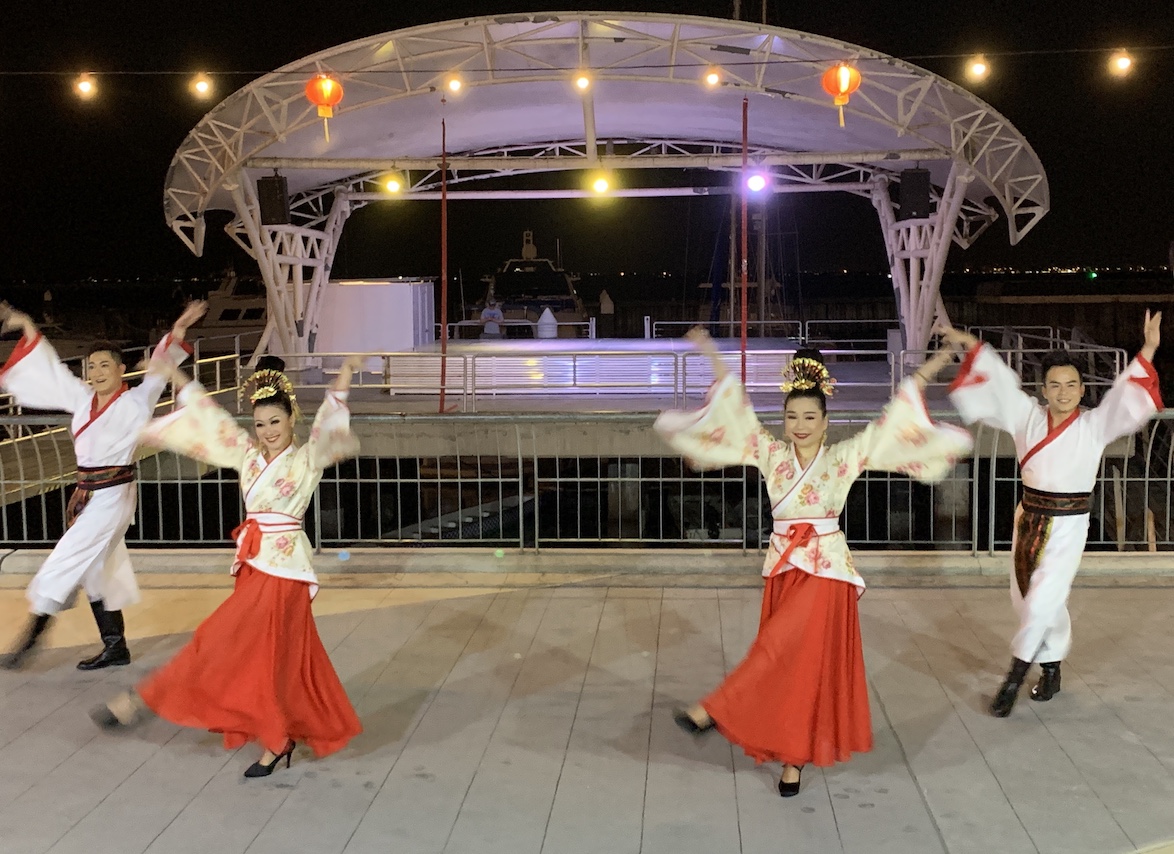
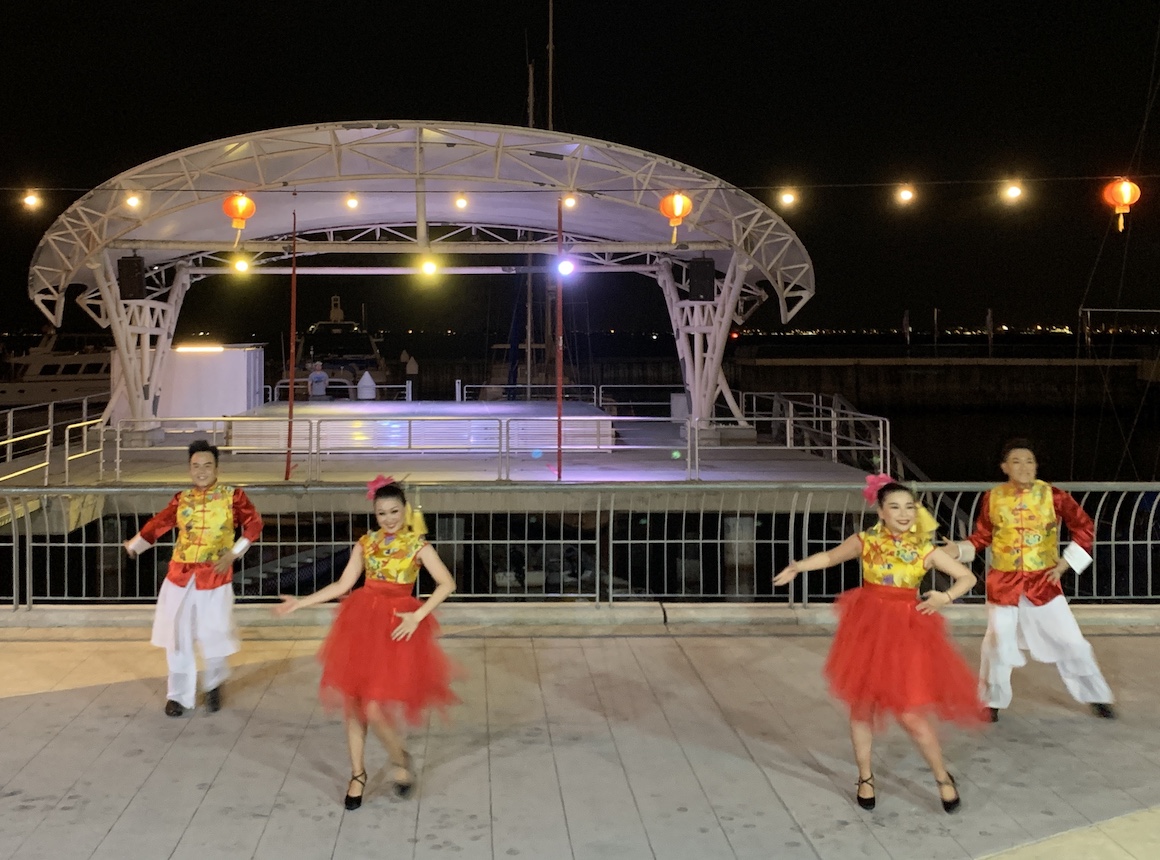
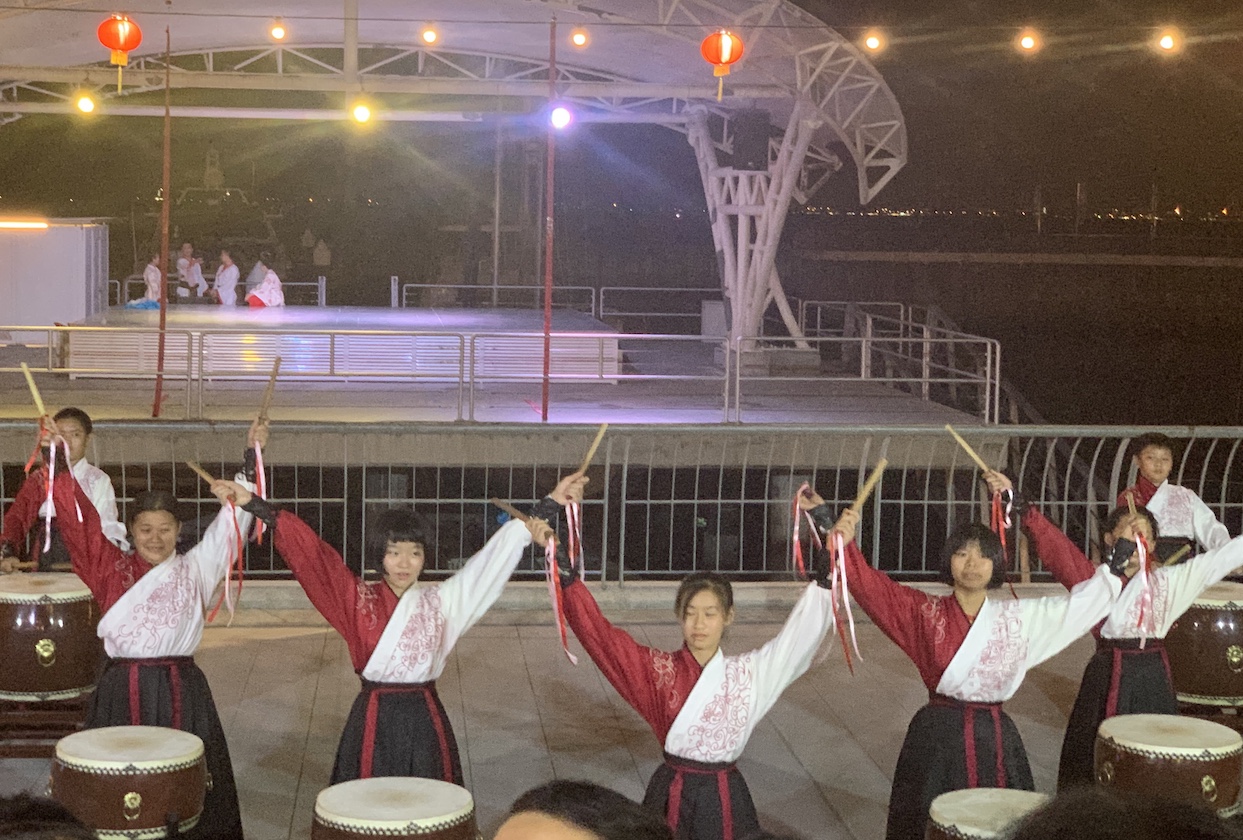
On Sunday, 9th February 2020, we woke to a rather strange phenomenon in the marina. The water looked like it had chickenpox, with little air bubbles floating over the entire surface and which continued to bubble up from the seabed for quite some time. We have no idea whether this was some kind of fermentation taking place or gas escaping from the seabed for another reason. Either way, it was most peculiar. Since it was laundry day as well, while we waited on the washing machine to do its thing, we enjoyed a coffee at the Starbucks in Straits Quay, but made a hasty retreat when a child close to our table started coughing; paranoia was an understatement at this point!
The following morning we were up with the birds again; definitely doing something wrong here! This time it was for our appointments with the dermatologist at the International Patient’s Centre of the Gleneagles Hospital and came to realise that, what we thought was a rather weird and inefficient system operating at the Loh Guan Specialist Centre, was, in fact, how all the hospitals worked in Penang.
Although we had an appointment, as had occurred at Loh Guan Specialist Centre, it transpired that that was only for our registration, following which we received a number, before being escorted to the specialist’s room, where we were instructed to take a sit and wait. However, we soon came to the realisation that this system was more like a very large Accident and Emergency unit, operating across the entire hospital, since the same process was applied to the registration of all the local patients, all going into the same “melting pot” with everyone sitting and waiting to see the same doctor or specialist. The only difference, we assumed, was the amount of money that was paid at the end of the visit, although we certainly couldn’t complain about the cost to ourselves.
Also, the process wasn’t necessarily chronological according to the numbers we were issued, as certain individuals or groups of individuals were seen ahead of us, making for a rather early morning start for a very long wait, which was indicative of what we observed on our arrival at the International Patient’s Centre; to our surprise, it was extremely busy, but the reception area for the locals was even busier. We also found the coronavirus screening process on entering the hospital had been significantly enhanced, compared to our visit to the Loh Guan Specialist Centre the week before, all of which was now operating similarly to what we’d seen in Singapore. With coronavirus cases in Malaysia steadily increasing, it was definitely needed.
Fortunately Elaine’s examination didn’t reveal anything precarious, which was a great relief after her last trip to a dermatologist in Australia. Roy’s visit was also successful, although he required his usual procedures, all completed for a cost equivalent to $125USD for the both of us. This kind of pricing still staggers us after years of living in the US and knowing that the astronomical costs remain in place there today.
On Tuesday, 11th February 2020, we enjoyed another touristy fun day; this time a trip to the Tropical Spice Gardens, but it was also combined with Roy’s long overdue birthday present from Elaine; a Malay cooking class at the Gardens! It did, however, mean yet another early morning start for our tour around the garden prior to the cooking class and what another interesting and captivating morning it was, not to mention tantalising. Definitely a “must-do” for any tourist visiting Penang.
The Tropical Spice Gardens is an old rubber estate, spanning around eight acres and situated on a hillside overlooking the Malacca Strait on the northern coastline of Penang Island. Apart from the various spices of the garden, there are more than 500 species of lush and exotic flora from around the world, including many medicinal plants; a biodiverse living museum with plants that have shaped global history, including the King of Spice, the humble nutmeg. The garden is divided into a number of sub-gardens; the Water Garden, the Heart of the Garden, an Ornamental section, the Spice Terraces, the Bamboo Garden, Beverages of the World, and the Vanilla Groves.
Research revealed that the garden was founded by David and Rebecca Wilkinson, funded by Bertam Consolidated Rubber Co. Ltd and much of the original indigenous flora and fauna of the site was maintained, including leaving many of the existing rubber trees undisturbed to provide shade, for visitors and inhabitants of the garden alike. The gentle gurgling sound of water heard throughout the garden was created by re-routing the water from a nearby waterfall through a series of man-made canals into a pond, forming the Water Garden.
Actual work on the site took one and a half years to complete, following which the garden was opened to the public in November 2003, becoming one of SE Asia’s award-winning eco-tourism destinations.
It has the largest functional art exhibition, all created from recycled materials, including the giant swing, an art bench and a hammock. From the giant swing we could see the entire landscape of the garden as well as the rarest collection of Forest Palms, mostly on the verge of extinction and collected by private collectors at an astronomical price. We were also fortunate enough to see a stingless honeybee nest, but unfortunately our photograph didn’t come out well.
Monkeys, squirrels and bats can be seen in the garden, the latter being the only true flying mammal. The first piece of information we received regarded the Coastal Palms which have been around for 15,000 years, but the species in the garden were used to produce the original palm oil. All other oil producing palms today are hybrids cultivated from this species. The fibres of the Coastal Palm are used to produce fishing lines and create lush, stable, light mattresses. The leaves are also exported to Japan, where they are used to create steam energy. The fresh sap below the flowers is still drank today and collected to make caramel and sugar and used in cooking. If the leaves are fermented, they produce a natural vinegar used for cleaning. Additionally, the leaves are used in the construction of roofs, not to mention, making plates, bowls, baskets, etc. Definitely a versatile plant!
The Bromiliad were our next stop, which do not require soil to grow, only high humidity and shade and are used mostly for ornamental purposes, with the exception of the pineapple, the only edible plant in this group. Again, pineapples sold around the world are hybrids from the original pineapple species in this garden. Today, in SE Asia, pineapple leaves are still used for a fragrant bath, which assists with the healing process after child birth.
Ferns, many of which are two tone; with a different colour underneath, actually have no flowers or leaves, but are, in fact, edible, although mostly are used for ornamental purposes only today.
The most unique plant in the garden, although toxic, was the Black Lily which is a nocturnal species. At night the white petals shine in the moonlight after the flower opens.
The Joey Palm was accidentally found in a Malaysian forest and all four species of the Johannesteijsmannia genus are found in the garden, including the Slender Joey and the Diamond Joey. It was the Joey Palm that gave rise to the design of corrugated tin roofs, mimicking the design of the leaf, which were also an original material used for roof construction.
Grasses have been around since ancient civilisations and this garden included Citronella and Lemongrass. The latter is generally cultivated for green tea and it helps with indigestion, but the garden also has the three highest quality species of the six known ones.
In the Bamboo Garden, we learnt details about this plant which we’d not heard before during our travels; firstly that bamboo grows at a rate of up to 75 cm every 24 hours, making it the fastest growing plant on earth, which in itself is a major bonus from nature; it produces large amounts of oxygen in the process, but it also absorbs radiation. As a result, not only has bamboo been planted around all nuclear disaster sites in the world, but many Pigmy Bamboo plants are placed in offices around SE Asia near computer systems to absorb any radiation and to refresh the air. Additionally, while pandas eat bamboo shoots, they are known to improve bone density in humans. There is now also a high demand to produce bamboo commercially, since Japan developed a method to produce diamonds from bamboo fibres by compacting the pure carbon bamboo elements under pressure. These diamonds are now used as jewellery and for grinding, polishing and cutting in industry.
Limes from Lime Bushes are mostly used in cooking, but it is the leaves that are more valuable in SE Asia, rather than the fruit, as it is a medicinal plant, used to enhance digestion and the immune system for overall health, as well as to enhance the fragrance of beverages and beauty products.
The Curry Leaf tree produces seeds that are high in antioxidants and are fried, baked or steamed to be eaten as a snack, similar to peanuts, while the leaves are eaten as is, similar to chips. In medicinal medicine it is believed that any food source high in antioxidants is the only protection against viruses. At the time we weren’t to know how valuable this information was to become!
Not surprisingly, though, it was the Spice Terrace section of the tour which provided the most information and discussion. 3000 years ago, only fresh spices were available, but given the spice trade and the need for spices to travel vast distances to foreign lands, there was a requirement to preserve them and the associated value, given the fortunes to be made and fame and influence to be had. While harvesting had to wait for the appropriate season, spices were then pickled with vinegar, dried in the sun or disinfected with black pepper. The latter was also used to disinfect wounds and purify water streams.
A discussion on the use of spices prior to fridges and freezers ensued, primarily since spices were used to cure meat, poultry and fish, thereby removing any parasites and pathogens, making them safe to eat. This lead to a conversation around which spice needs to be used for which food type. For instance, Turmeric has to be used on white meat, while it also has healing properties for arthritis, colon cancer and blood poisoning, but it can cause blood clots and, because of its potency, if consumed regularly, it can disguise the presence of very fast growing parasites in the gut. In fact, the tour guide insisted that even extracting the Curcummin for anti-inflammatory purposes was fraught with issues, suggesting to rather drink a freshly squeezed juice made from cucumbers, melons, pineapples and limes. Of course, Elaine got right on that, and, by adding celery to the mix, made for a delicious drink. She’ll definitely have to research the InflaCalm supplements her naturopathic physician prescribed, though, and ask a few more questions.
Our discussions on what spice to use with which food type led to another interesting aspect; red meat vs white meat. In the Chinese tradition, red meat is from warm blooded animals while white meat is from cold blooded species. The illustrations used, pointed out the flaw in modern day classifications when considering chicken to be white meat, but ostrich as red meat or a pig being classified as white meat, but a wild boar as red meat, the danger, of course, being the wrong spice used to purify the food source. Certainly food for thought!
Additionally, the use of warm spicy spices and the impact of the environment ie hot or cold temperatures and climates on these spices, came up, particularly with regard to their healing properties. We learnt that warm spices are specifically used for soothing, calming, relaxing, etc, making Vanilla the Queen of Spice.
Basil, we learnt has antimicrobial properties which prevents digestive complications, while Thai Basil is actually a steroid, together with Cinnamon and Star Anise, the latter produced from an evergreen tree native to northeast Vietnam and southwest China, Illicium Verum, increasing the demand by the pharmaceutical industry for the “fake version” of the Cinnamon spice. It transpired that most of the Cinnamon available for general purchase and consumption today falls into this “fake” category, with the only genuine, official Cinnamon spice being the Cinnamon Verum species from the tree, Ceylon Cinnamon, which originated in Sri Lanka. While, traditionally the bark is still used today, it is the higher quality oil from the leaves that is sought after for its healing properties, including healing soft tissue and organ damage as well as diabetes and hormone complications. The leaves can also be cooked for additional goodness. However, the powder created from Cinnamon fibres is an ingredient of rat poisoning and has been used in biological war fare in the past. Alarming to say the least! Thank goodness neither of us like Cinnamon powder.
Cadammon is sought after in the pharmaceutical industry as an ingredient in birth control products and has a natural healing property for blood related diseases and complications.
The Honey Pepper vine, also called the Wild Beetle vine in SE Asia, is used to prevent bad breath when eating pungent food. In this instance it is the vine that is used, dried or pickled, not the corn. Today red, black and white pepper corns are produced commercially. In a Thai wrap appetiser which consists of uncooked food of dry prawns and anchovies, Honey Pepper vines are used to purify the ingredients.
While there are 350 species of Ginger worldwide, 50 of these are found in the garden, including Bird of Paradise and the Banana plant, which are not widely known to be a species of Ginger, the latter of which is used to wrap certain foods for cooking as well as ironing cloths. Other species include the Common Ginger, Mango Ginger and Turmeric, all used to make aquatic food sources free of parasites and safe to consume, as well as being used in salads, soups, red meat dishes, perfumery, etc. Because of ginger’s antimicrobial properties it can be used as a replacement for healing and purifying purposes in the absence of another spice.
The Bunga Kantan or Torch Ginger, indigenous to Malaysia and SE Asia, was the inspiration for the logo of the Tropical Spice Gardens, a modern day interpretation of the Torch Ginger’s flower, which when finely chopped, is the garnish for Penang’s famous Penang Assam Laksa, a dish we eventually got to sample. It is also used in perfumery and soup stocks.
Nutmeg, however, is the spice which wars were fought over and land was traded for. In ancient times it was used against the bubonic plague; for good reason; it is the most potent and versatile spice of all, containing all the properties of all the spices of the world, earning its place as the King of Spice. It can be used as a relaxant, a booster, a stimulant, a hilluciant and a poison depending on the quantities consumed. Additionally, its healing properties, smell and spiciness increase as degrees of heat are applied to it, making it the most unique spice in the world, worth more than it’s weight in gold during the height of the spice trade, information first conveyed to us during our tour in the Banda Islands, Indonesia.
In light of all this newly acquired information, on the spices in particular, Elaine did some “fact checking”, revealing that these spices, as well as others not mentioned here, like Cloves, Oregano and Thyme, have indeed been scientifically proven to act against food-borne pathogens and spoilage bacteria and have been applied to treat infectious diseases because they were: “experimentally proven to possess antimicrobial activities against pathogenic and spoilage fungi and bacteria. Moreover, the secondary metabolites of these spices are known as antimicrobial agents”.
During our tour of the garden, we enjoyed a mid-morning tea break, a refreshing Pandan, Lemongrass and Stevia tea, the latter a natural sweetener, derived from the plant species, Stevia Rebaudiana, and having 30 to 150 times the sweetness of sugar, before bring escorted to our cooking class and what a fabulous experience that was.
We were given two Malay recipes to cook, “Ayam Kuzi” (Chicken Curry) and “Kacang Kelisa Goreng Taucu” (Stir Fried Winged Beans with Fermented Soy Beans), which was accompanied by rice for our main meal and “Bubur Kacang”, a Mung Bean based dish, for dessert, enjoyed under a pergola set in the gardens. Besides the meal being the tastiest Malay dish we’ve had, and, in fact, the tastiest curry we’ve ever had, it was a lot of fun cooking it and it gave us some fantastic tips that have since been applied to all our curries and stews. We felt a little sorry for our instructor, Jamie, though, as she had to cater to four different dietary requirements; mine, Roy’s, two vegetarians and a pescatarian, but she did a marvellous job, ensuring we all had a delicious meal to eat at the end of our efforts. Best of all, Elaine didn’t burn anything, injure herself or anyone else nor set the place on fire!
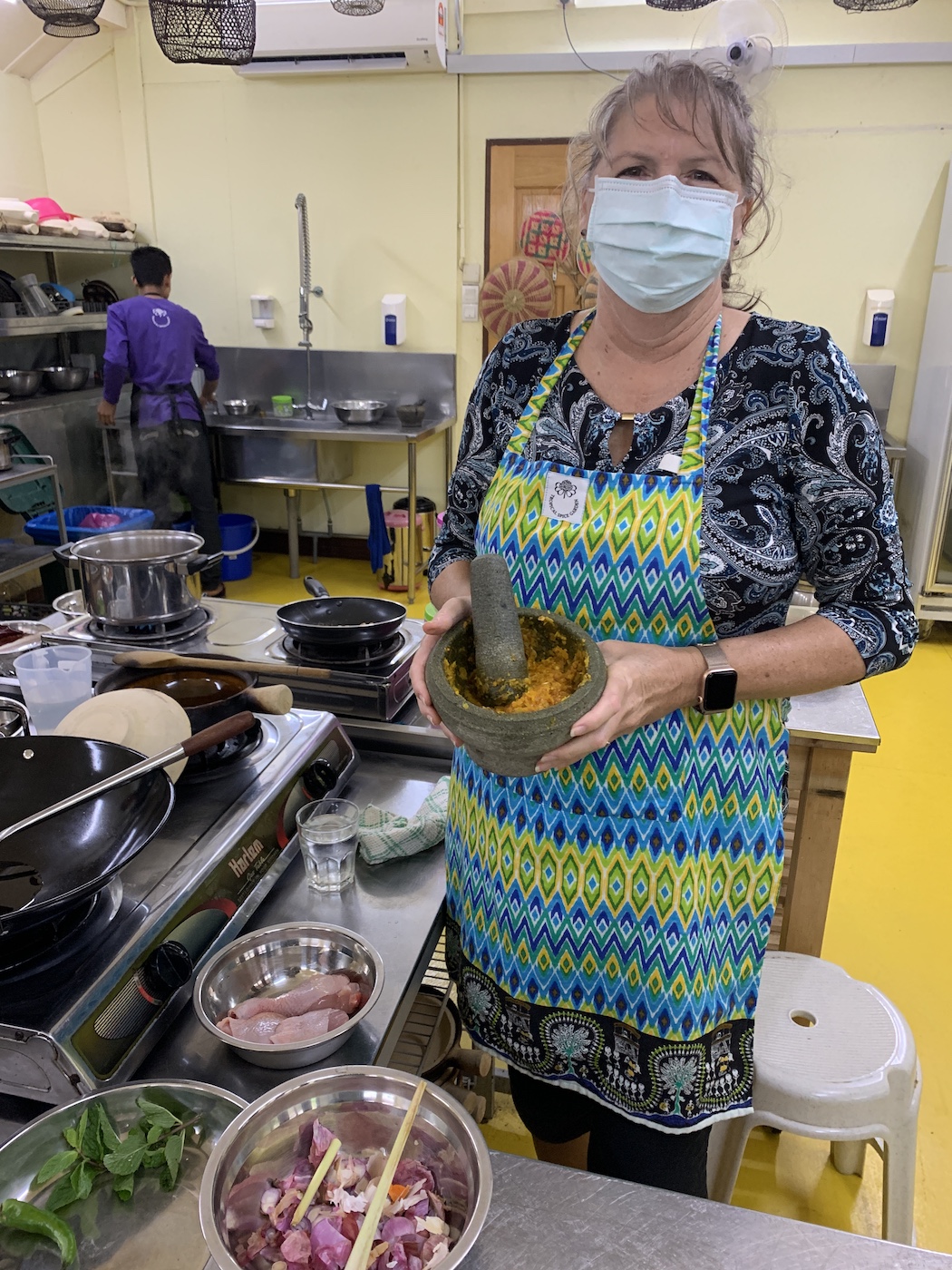
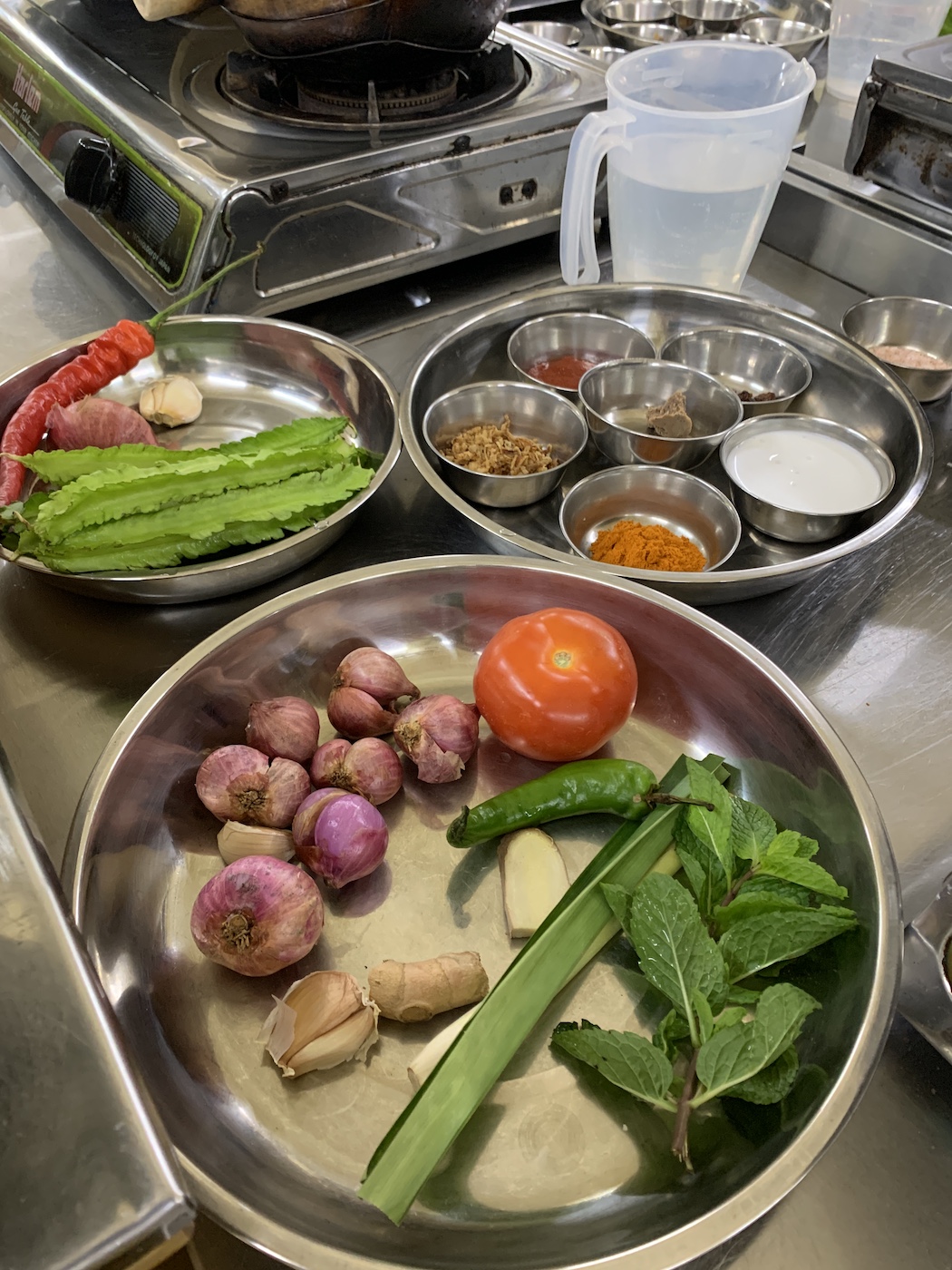
Afterwards we enjoyed a walk on the nearby beach, a vast improvement on Batu Ferringhi, and a rest on the rocks, in the shade of the trees, before heading back to Paw Paw for an afternoon nap, the best ever for Elaine, waking a number of hours later to find Roy sitting waiting patiently for her to surface!
After two very long, stressful days in Singapore, Friday, 14th February 2020, was a day of rest aboard Paw Paw. While Elaine caught up on our blogs, Roy pottered around, but he did prepare a delicious meal for our “candlelight” dinner. Elaine had definitely thought the romance had completely died when she received a bag of Sambal spice as a gift for Valentine’s Day, instead of flowers, but the man redeemed himself with the delicious dinner he cooked prior to which we enjoyed sundowners at Healy Mac’s Irish Pub and Restaurant.
While we enjoyed a long chat to Keenan over breakfast the following day and received lovely photographs from Brooke of the grandsons all dressed up for their Valentine’s Day event at school, which definitely put a smile on our faces, the rest of today was somewhat less pleasant, although not physically exerting; all Elaine needed was patience and brain power as she spent her entire day catching up on correspondence and dealing with a myriad of medical insurance administration matters. We’re not sure who had the more unpleasant day, though, as Roy spent his in a dentist’s chair; that tooth we thought was permanently repaired in Australia, broke off while eating dinner, which subsequently required a crown. Fortunately the dentist could see him almost immediately and prepared the tooth for the crown, which he was to have fitted the following week, all for the cost of $400USD and that’s using a 3D-printer to create the tooth, the exact same procedure which cost Elaine more than $2500.00USD in Arizona, two years ago. Unbelievable!
Sunday, 16th February 2020, was the first time we’d seen a Chinese tour group walk through the Straits Quay complex in weeks. To say we were not pleased, would be an understatement. We’d specifically stayed out of Georgetown to avoid this kind of exposure. Of course, that prompted the question: “Why were folks still being allowed to travel from China and why were countries still accepting them, when new coronavirus cases were rapidly increasing on a daily basis world wide?” It didn’t make an ounce of sense to have some countries curtail or cancel flights, when others had not or for certain countries to prevent cruise ships from docking, while others were still allowing their free movement. Case in point, the previous evening during our walk along the promenade we spotted two ships lined up waiting for two others to depart. We’d seen a constant flow every day of ships coming and going, to and from the Cruise Ship Terminal in Georgetown and we had no doubt that Cruise Ship Terminals elsewhere in SE Asia were just as busy. The answer, of course, was simple; money! Cruise ship operators didn’t want to reimburse for cancellation, tourists still wanted their holiday and countries still wanted the tourism trade. In fact, most country’s economies had come to rely heavily on the Chinese tourist and it wasn’t surprising.
Research revealed that Thailand, Japan, Vietnam, South Korea and Singapore were amongst the Top 10 destinations for Chinese tourists, with the US and Italy completing the list, all of which had resulted in a major increase in total overseas arrivals in the neighbouring countries as well.
Apparently, in the first year of the new millennium, a modest 10.5 million overseas trips were made by Chinese residents, but in 2018, that figure increased to 149.7 million; an astounding increase of more than 1,300%. In less than two decades, China had grown from a relatively insignificant contributor to world tourism to the world’s most powerful outbound market, overtaking Japan as Asia's biggest spender in international tourism and surpassing the US by a country mile.
According to the UNWTO (United Nations World Tourism Organisation), Chinese tourists spent $277.3 billion USD in 2018, spending an average of $762USD per person compared to the non-Chinese tourist who spends $486USD on average. Collectively, US traveller’s contributions amounted to a mere $144.2 billion USD in 2018 in comparison.
An additional influence had been the “trade war” between the giants, resulting in a major decrease in Chinese tourists visiting the US, but increasing number of visitors to other countries. Couple this with the rising incomes of billions of Chinese nationals, makes this source the biggest contributor to international tourism income for over 200 countries and regions across the world and everyone wanted a part of it, regardless of the health consequences associated with the spread of the coronavirus! Fortunately or unfortunately, this influx diminished shortly thereafter, but the impact of the coronavirus on travel and tourism, internationally and domestically, was to be felt across the world, devastating this industry and all who worked in it.
However, prior to this disastrous outcome, on Thursday, 20th February 2020, we were just as guilty at fuelling the tourism craze. We were up by 0500 to ensure we reached the Penang Hill Lower Station in time for the first train of the day, at 0630. Fortunately we also managed to secure a Grab at that time of the morning, which meant we arrived a little earlier than expected, but it was perfect, given that it was still dark. With that, another fabulous outing unfolded; once again, surpassing all our expectations.
The Penang Hill Railway is a one section funicular railway which climbs straight up the Penang Hill, to a height of 721 metres / 2,365ft above sea level. The railway was first opened in 1923 as a two-section railway, initially constructed between 1901 and 1905, but the first attempt, using a steam engine, proved to be a failure. In 1909, the Straits government organised a new project, based on a Swiss design. Construction of the second railway cost $1.5 million Straits dollars, the currency of the Straits Settlement from 1898 until 1939.
The 2,007 metre / 6,585ft long funicular railway was officially opened in January 1924. In its first year of operation it carried 35,201 passengers and made 4,021 trips. The Penang Municipality of Georgetown managed and maintained the railway from its opening until February 1977, when it was then taken over by the Penang State Government.
Until 2010, the railway had two independent sections due to the difference in gradient between the lower and upper sections and passengers were required to change train at the Middle Station. Then in February 2010, the 87 year old funicular railway was closed for an upgrade to a new system at a cost of $63 million RM. The timber from the old railway track, however, was re-used in the construction of a new four-storey Penang Hill Visitor Centre at the top and does not require passengers to change trains halfway up. Instead we enjoyed a non-stop service in the “new” blue and white, air-conditioned Swiss-made cars, capable of ferrying up to 100 passengers at a time, with a maximum working load of 7,500 Kg / 16,535 Pounds, carrying a 1,000 passengers per hour. This was the very reason we were advised by Sharon and Teoh off Kristal to get an early start in order to enjoy the grounds to ourselves. It was another piece of great advise!
Prior to the construction of the railway, however, 500 Achenese ponies were imported from northern Sumatra per year and used to negotiate Penang Hill’s steep pathways, which they apparently did with ease, even while carry their heavy loads.
While we had expected the temperatures to be cooler, we hadn’t expected the massive temperature drop with the wind chill factor; it was freezing! However, we had stars to enjoy again, given the clear skies and we found a sheltered spot out of the wind on the East Sky Walk, where we enjoyed our “picnic breakfast”, while watching a stunning sunrise, which, in turn, slowly revealed the most magnificent views; an experienced enhanced only by the fact that we were indeed completely alone; there wasn’t another sole on the Sky Walk!
After daylight broke and it had warmed up, a handful of other visitors had arrived, so we set off to explore. Our first stop was the 2.75 ton cannon, capable of firing 32 pound cannon balls at a velocity of 1,600 metres / 5,250ft per second. From there we visited the Penang Hill mosque, Masjid Bukit Bendera and one of oldest Hindu temples in Penang, the Sri Arulou Thirumurugan temple, better known as the Penang Hill Hindu temple, a holy shrine to the Hindu deity, Lord Murugan, the god of war.
A short walk further along the pathway took us to the Bel Retiro Gate House, part of the most prestigious property on Penang Hill, built by the Governor of Penang, Captain Francis Light, founder of the British colony, Penang.
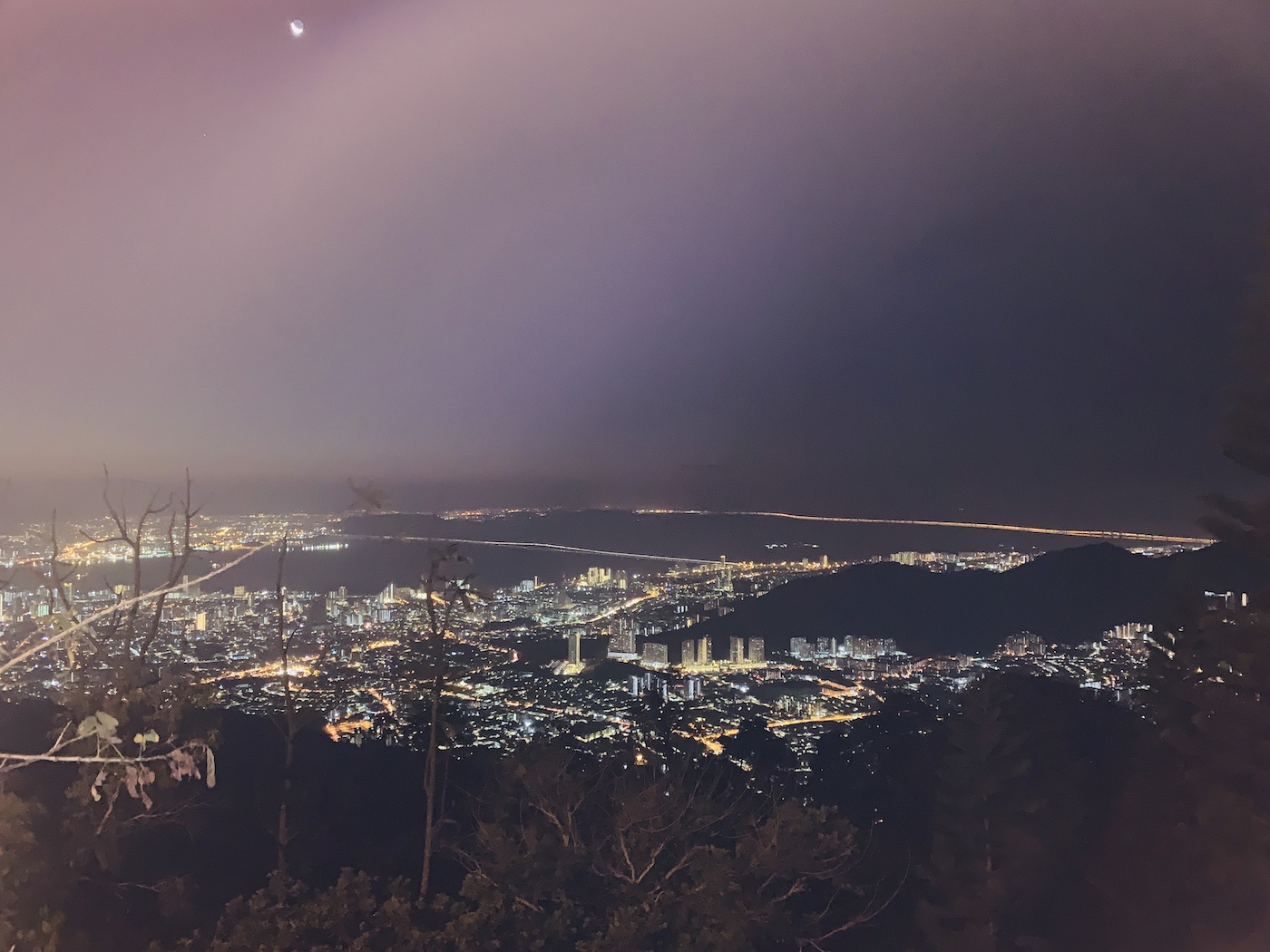
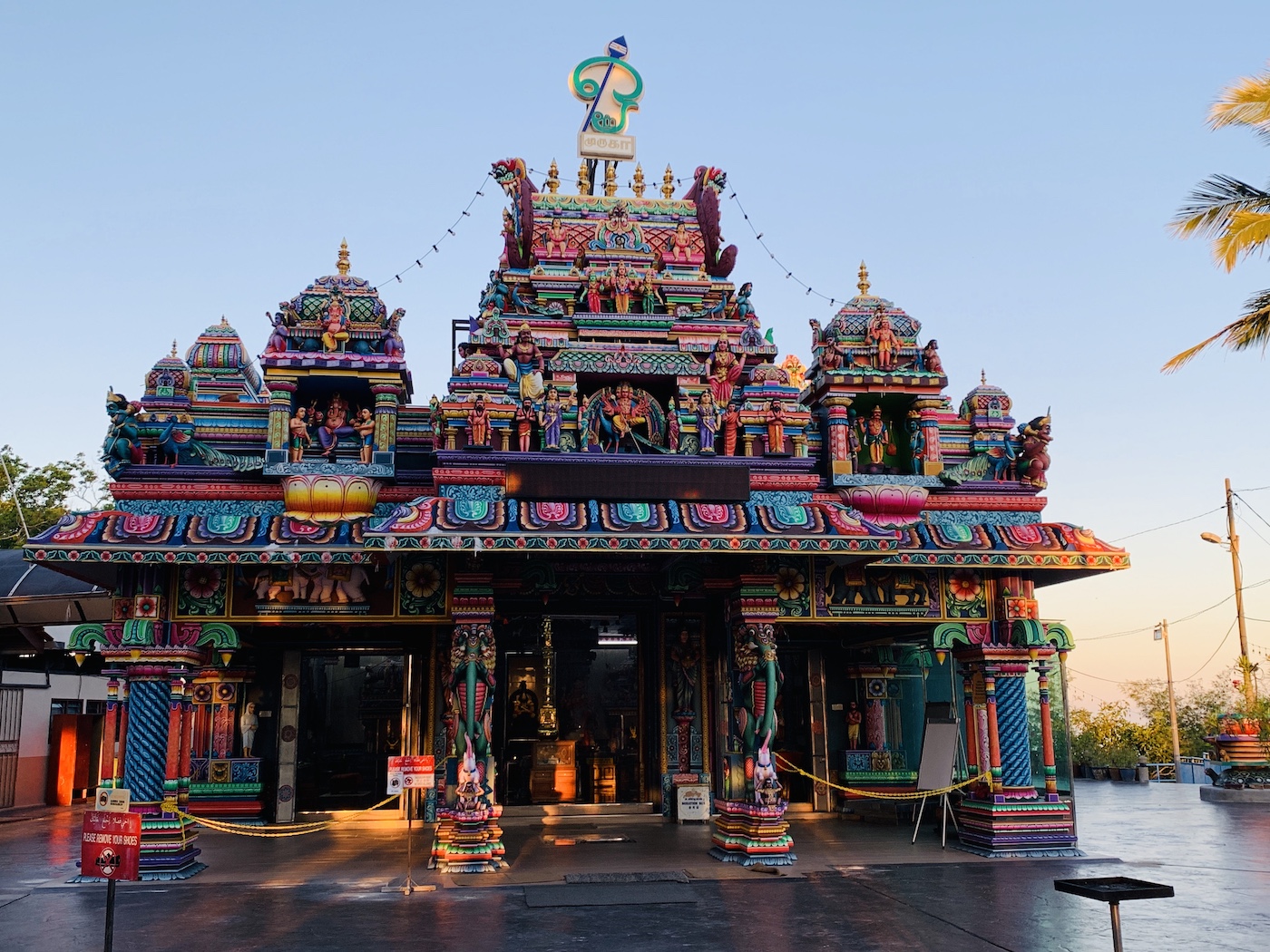
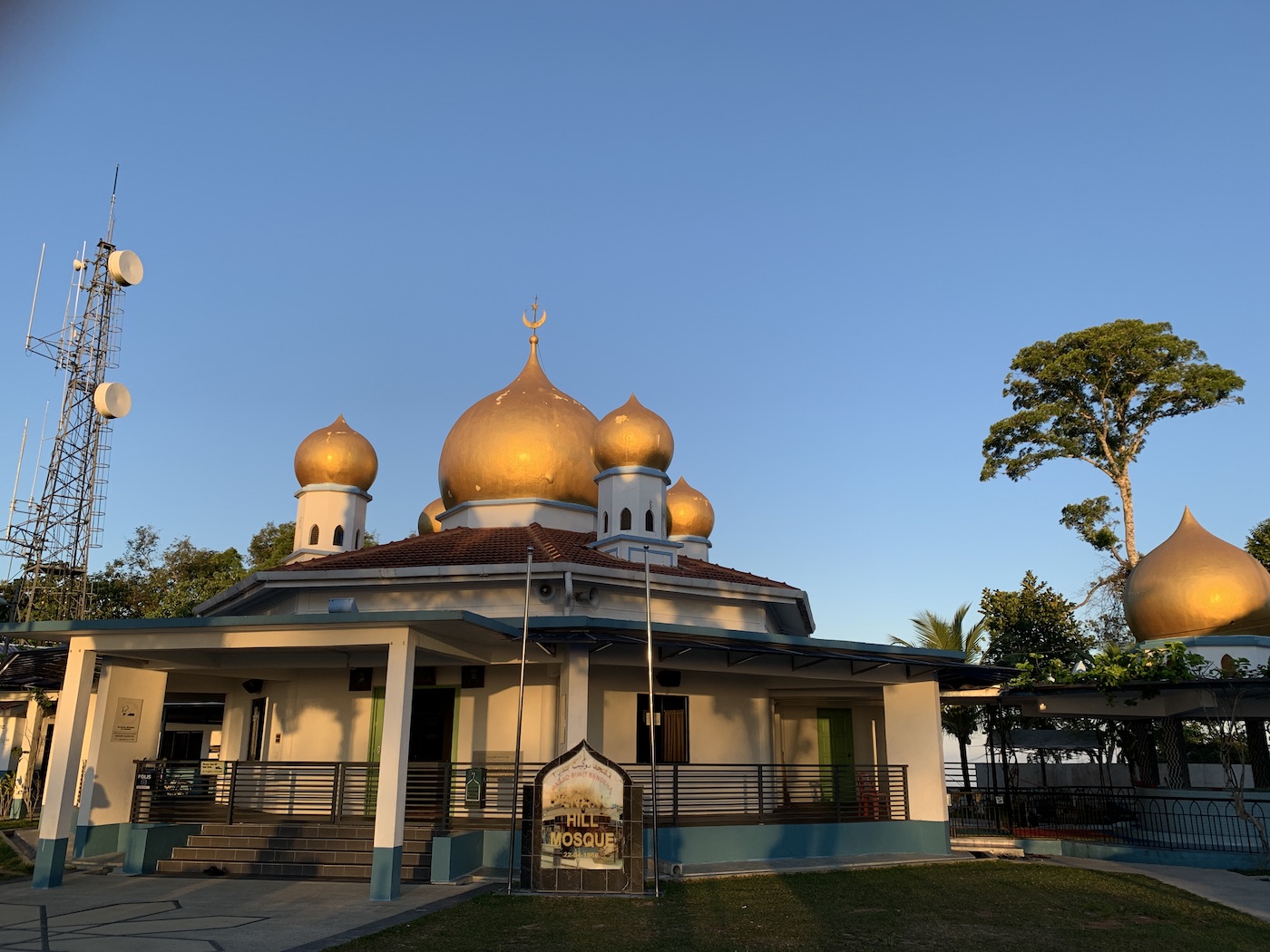
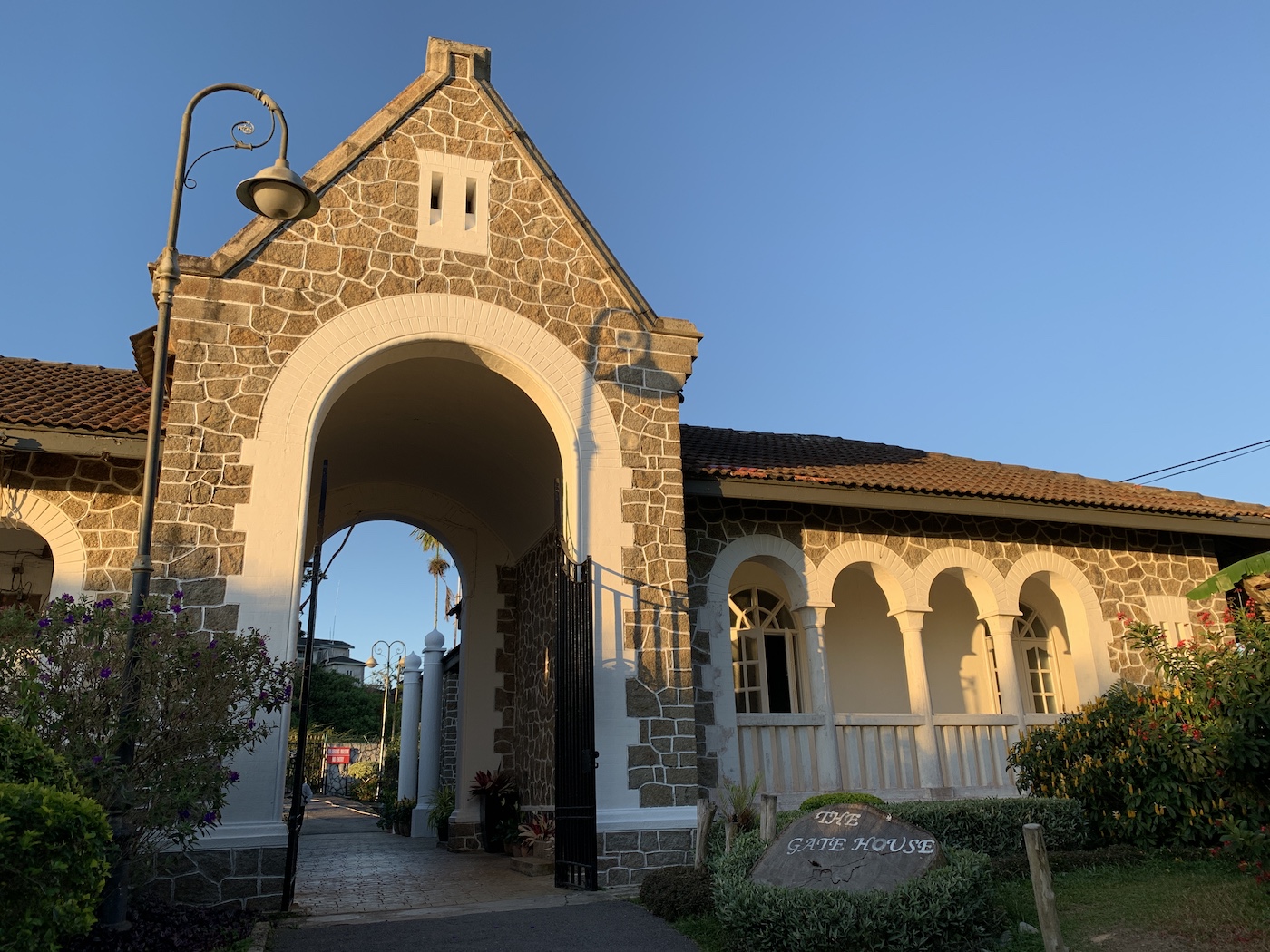
The top of Penang Hill was first cleared in 1793 when war broke out with France. A flagstaff was built to signal Fort Cornwallis at the first sign of an impending attack and the property was built for the two men who served as “lookouts”. Afterwards, senior officials built bungalows near Bel Retiro and the upper reaches of Penang Hill became a British enclave where officials retreated from the heat. Other races were forbidden to build here.
We later learnt that Penang Hill was subsequently used as a convalescence centre, with the first bungalows built for this purpose in 1803, at a time when Georgetown was overcrowded, polluted and diseases like dysentery, smallpox, cholera, malaria and tropical wounds were present. There was a belief that clean air and mountain breezes could help Europeans recover from these diseases. At first it was a retreat for members of the East India Company who could not return to England due to illness, many recovering here, but, for others, it became a peaceful place to spend their final days. In 1815, Dr James Johnson, the Royal Navy Surgeon recommended “invalids” visit the bungalows on Penang Hill writing: “those that cannot undertake the long and expensive voyage to Europe should endeavour to change a continental for an insular condition in India, Pulo Penang or Prince of Wales Island”.
Other properties on these upper reaches of the hill included Crag Hotel, which opened in the 1800s as a sanitarium where Dutch tobacco planters from Sumatra could recover from malaria. In 1905 the Armenian Sarkis brothers, owners of the Eastern & Oriental hotel in Penang and the Raffles Hotel in Singapore, took control of the building and renovated it in 1925, making it a popular destination for visiting English colonialists until World War II broke out. In 1955 it was leased by the International Society of Planters as a remote location away from the political unrest in Malaysia at the time, following which it became an international boarding school, called “Uplands”, but was abandoned in 1977. Today it serves as a movie set.
After a morning tea at the Bellevue Hotel, while enjoying the magnificent views and the milder temperatures, our meander towards the Curtis Crest Treetop Walk took us over the Langur Way Canopy Walk, the stressed, two-span ribbon bridge, located 700 metres / 2,297ft above sea level, designed and engineered to be “tree friendly” since none of the steel cables were rigged directly onto the trees. It is said to be the first of its kind in the world and is also the only one built amongst the tree top canopy of a tropical rainforest, the 130 million year old virgin rainforest of Penang Hill. It was named, after a family of Dusky Leaf Langurs were spotted sitting on the cables, munching on forest canopy leaves while the bridge was being built.
Due to its height and location, spanning three headlands and two valleys, we were able to see all the forest layers from the forest floor to the emerging canopy, but it was the vast height when looking down that was incredible.
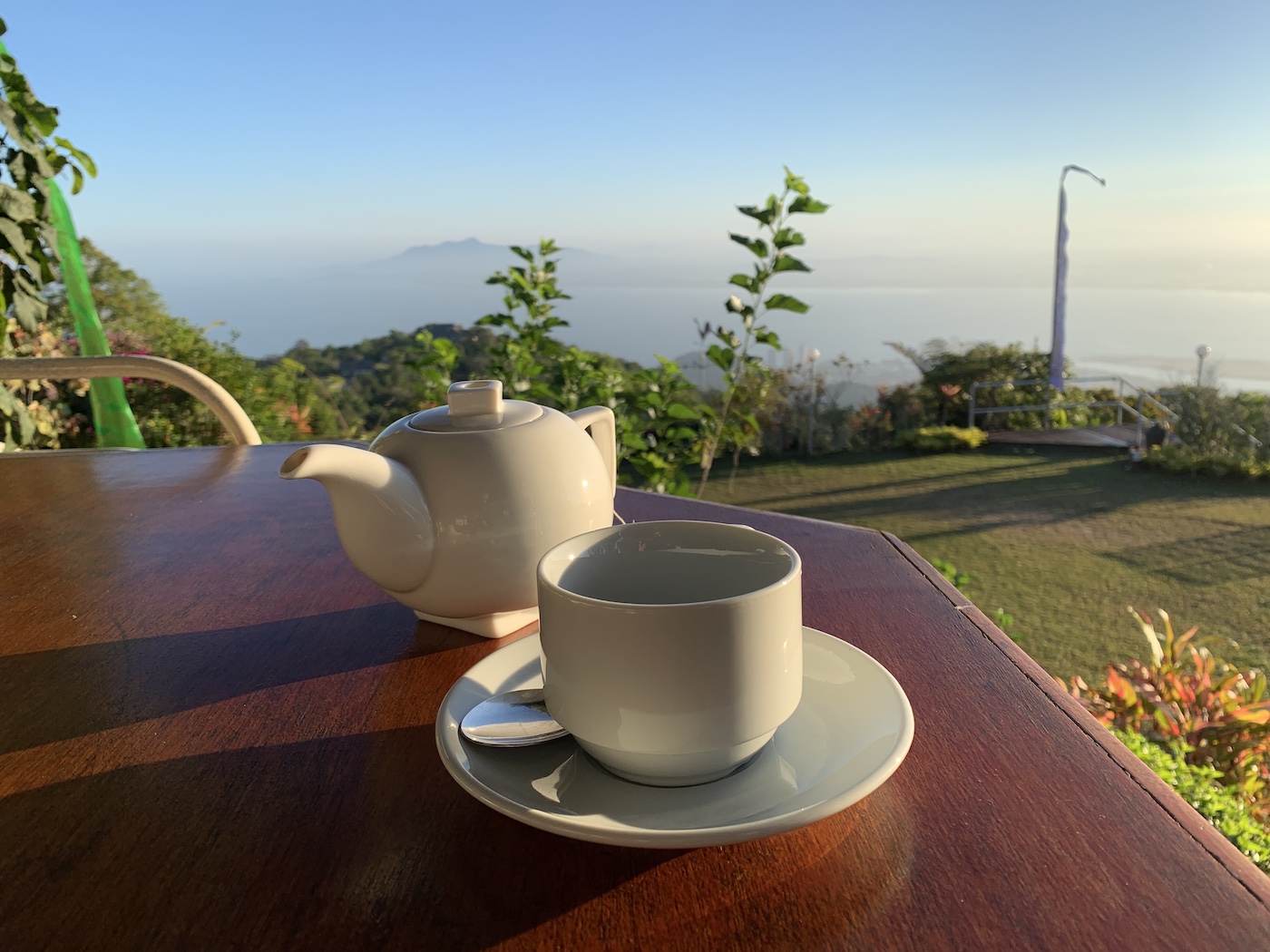
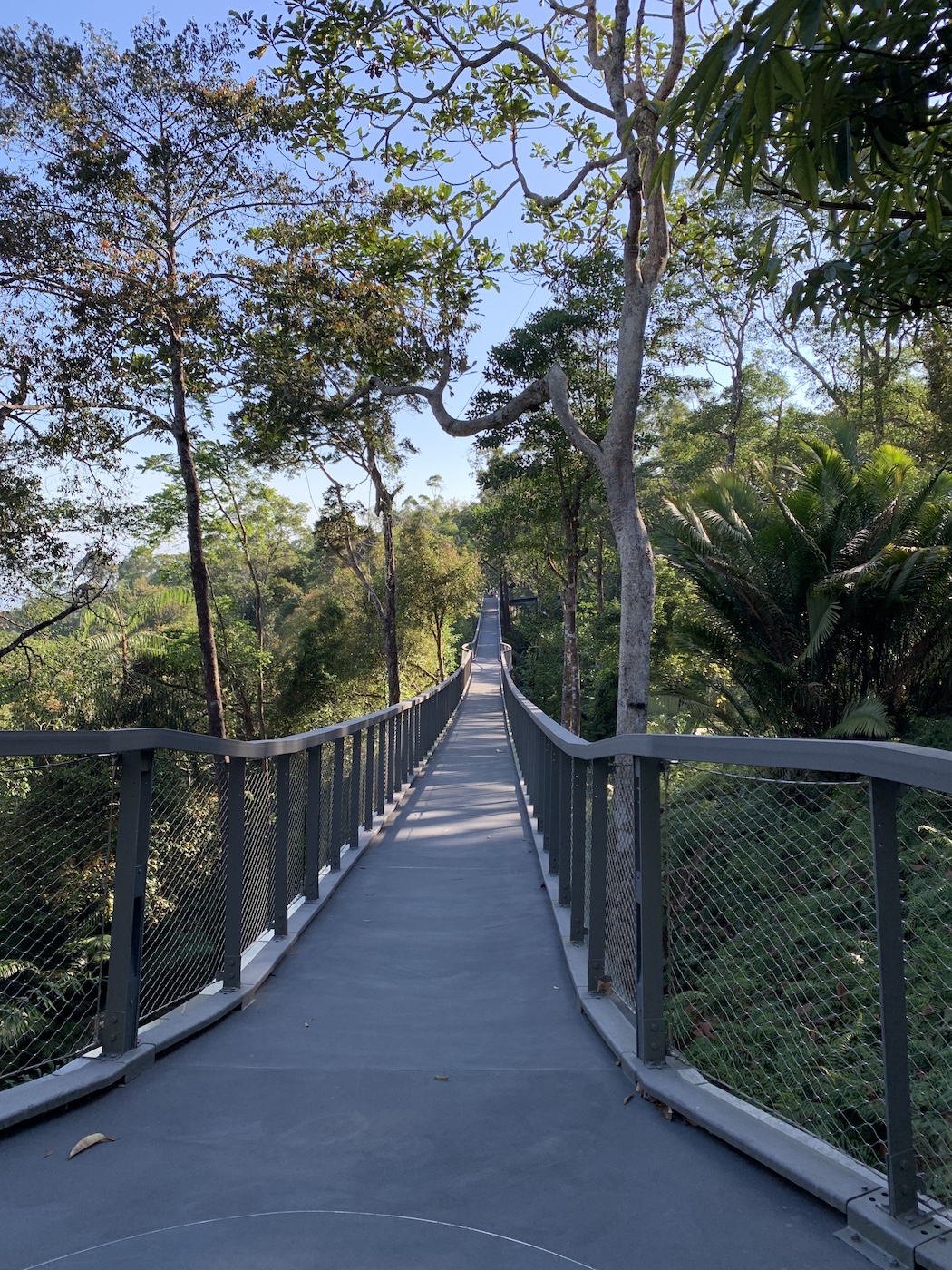
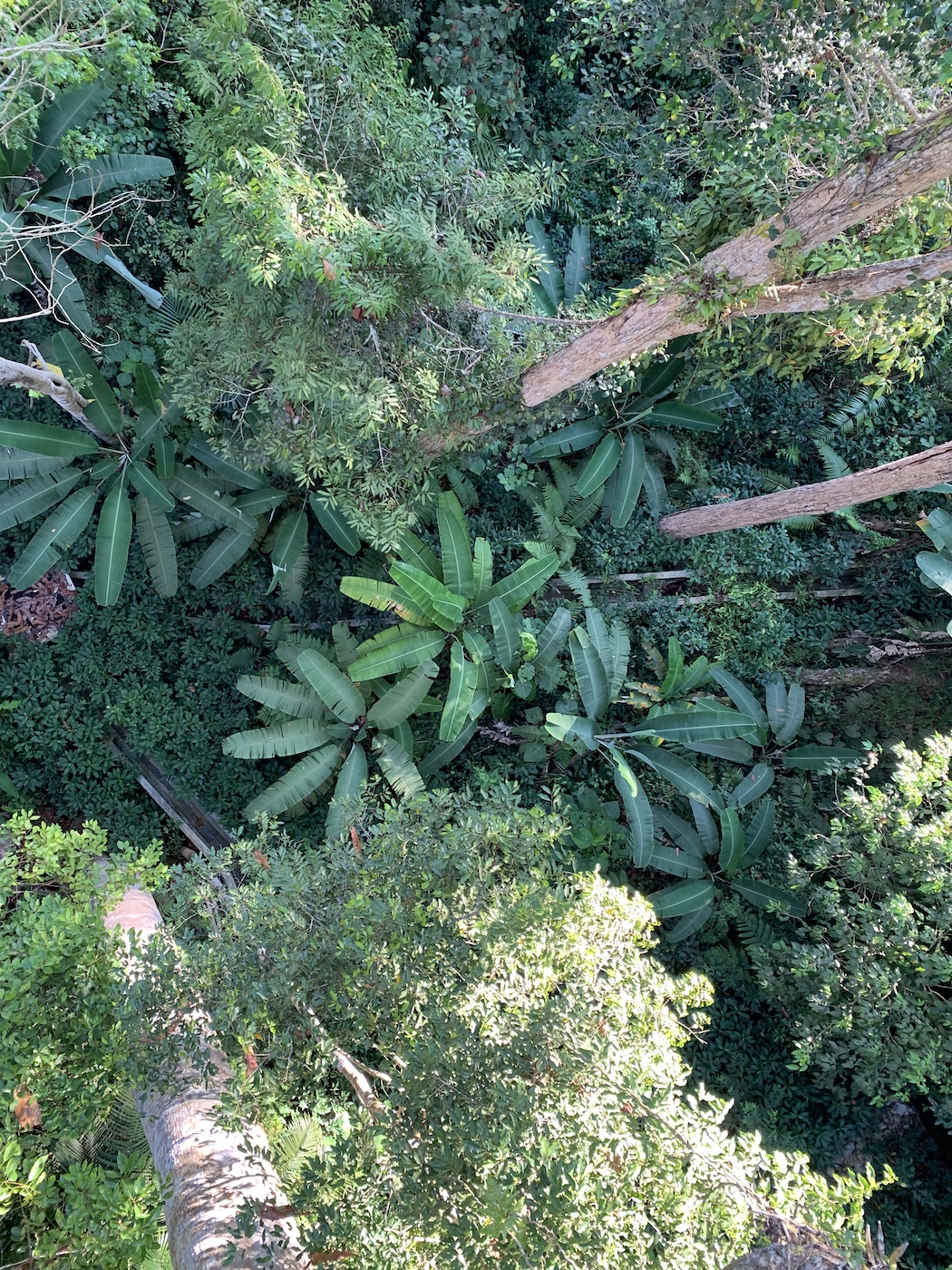
Continuing on and passing the Fern Garden, the Squirrel and Butterfly circles, we stopped at the Ginger Garden to admire the beautiful flowering Ginger Rhizome, as well as at the Fragrant Garden to enjoy the early spring flowers in bloom. Stumbling upon a Meranti tree, the first one we’ve ever seen, however, brought back a flood of memories of South Africa, particularly the cottage we built in Randjiesfontein with its Meranti timber cottage window frames and French doors. Apparently this is a dominant species in the hill forests of Malaysia, found at elevations of 300 to 800 metres / 985 to 2,625ft, with its silvery crown stands out like billowing grey-coloured broccoli. Ever 3-8 years they produce an abundance of flowers, believed to be associated with the El Nino phenomena, triggered by the low temperatures and severe droughts during these years. Given that they grow to heights of 70 metres / 230ft, they are commercially traded as one of the strongest woods in the world for construction.
As with all these outing, there is the educational aspects to savour and, in this instance, we discovered that there are a number of “tree loving animals” in the forest, including Dusky Leaf monkeys, Sunda Colugos, Plantain and Giant Black squirrels, the latter of which Elaine spotted scurrying out of the undergrowth and making a beeline for the next tree. Surprisingly there were a number of venomous snakes to consider as well, including the Wagler’s Pit Viper and the Oriental Whip, the former we got to see up close and personal a few months later. Fortunately it was in a glass enclosure. Creatures of the “forest floor” included the Common Treeshrew, the Lesser Mousedeer, Spiny Hill Turtles, Long-Tailed Macaque monkeys and a few more venomous snakes, like the Speckled-Bellied Keelback and the Striped Coral and Blue Coral snakes.
Our penultimate stop was the Curtis Crest Treetop Walk, the highest viewing platform on Penang Island. It was named in honour of the 19th century English botanist, Charles Curtis (1853-1928), who was the first superintendent of the Penang Botanical Gardens.
Located 12 meters / 39ft from the ground, the Curtis Crest has a total length of 100 meters / 328ft and forms a semi-circular loop at about 820 meters / 2,690ft above sea level, about 100 meters / 328ft higher than the Penang Hill Upper Station. From this vantage point, we were able to enjoy spectacular panoramic views, including Kedah on the mainland and the Langkawi archipelago in the distance. The flattened piece of land on which this structure sits, was cleared more than 200 years ago for tennis courts, used by the British colonialists who visited Penang Hill to escape the heat, just as we did yesterday.
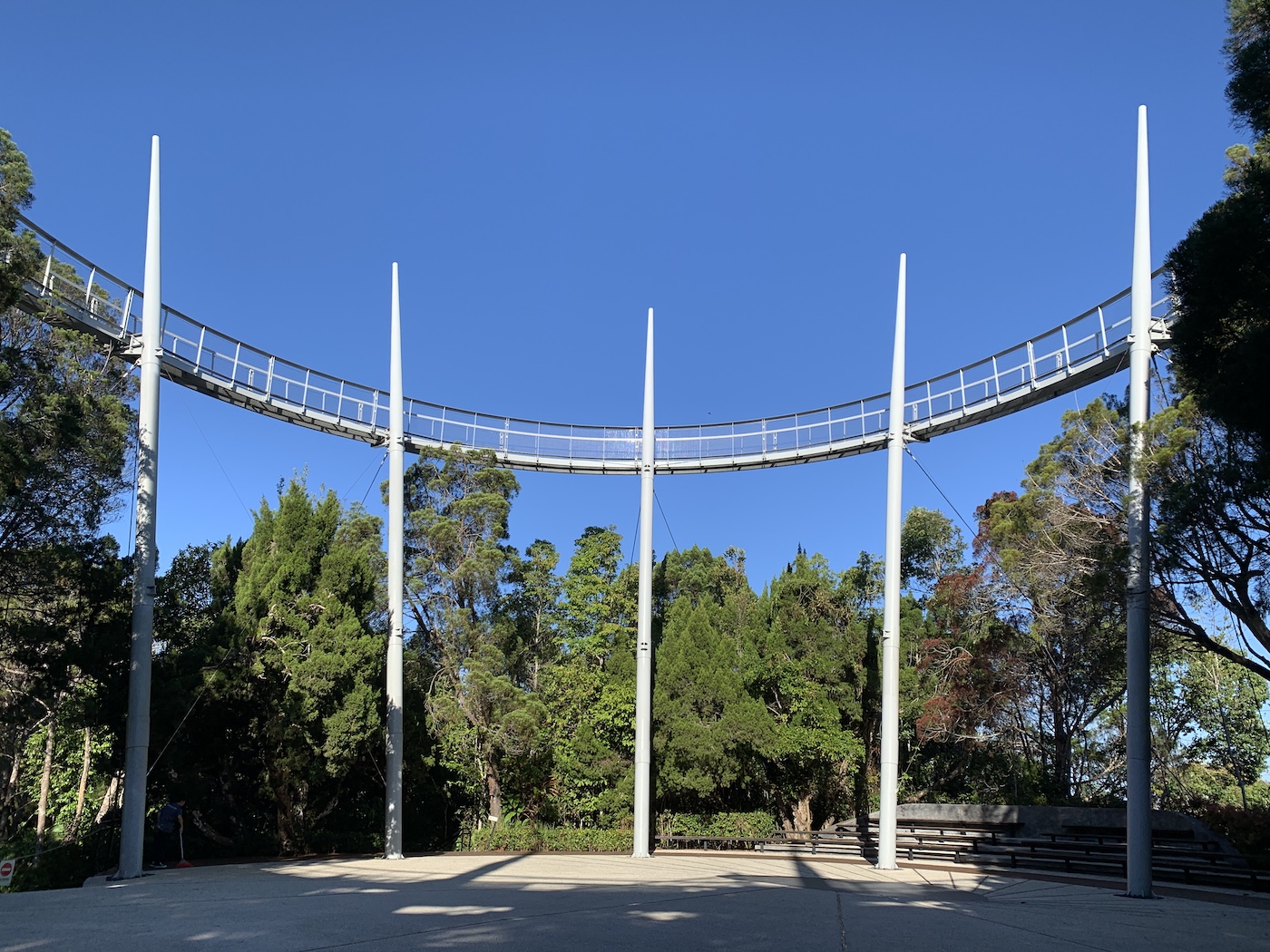
At the little shop nearing the exit, we found a fabulous cookbook, Penang Heritage Food, containing recipes passed down through the generations, but which were at risk of being lost forever, given that the modern generation are no longer interested in cooking. It provided an explanation of the traditional ingredients used as well as details of the history of each of the dishes and included recipes covering all the influences of Malay, Hokkien, Hainanese, Indian and Thai, all of which give the cuisine of Penang its uniqueness. We couldn’t wait to try them!
On our stroll to our last, but by no means least attraction, the Monkey Cup Garden, we passed more spring flowers in bloom as well as beautiful ornamental features along the road side. Under one of these, a pergola, we took a rest from all the walking and enjoyed our mid-morning snack and drink. Refuelled, we headed onwards to the most interesting little garden we’d ever seen. In fact, we were both in awe of what we saw. With little to no other tourists around, we enjoyed a private tour of the garden, receiving a detailed explanation of each of the various species. The Nepenthes is a genus of carnivorous plants, also known as the “tropical pitcher plants” or “monkey cups”, comprising about 170 species. Of these we were fortunate enough to see the Nepenthes Stenophylla, the Nepenthes Ampullaria, the Nepenthes albomarginata, the Spotted, Red and Green Hot Lips, the Nepenthes Bicalcarata, the only natural hybrid and the Hookeriana, a spotted mix of the Ampullaria and the Rafflesiana. The name "monkey cups" refers to the fact that monkeys have been observed drinking rainwater from these plants.
The Nepenthes species usually consist of a shallow root system and a climbing stem, often reaching lengths of up to 15 metres / 49ft or more and usually 1 cm / 0.4 inch or less in diameter. From the stems arise sword-shaped leaves. An extension of the tendril protrudes from the tip of the leaf and, at the end of this, the pitcher forms. The pitcher starts as a small bud and gradually expands to form a globe or tube shaped trap, similar in shape to a champagne flute. The trap contains a fluid of the plant's own production, which may be watery or syrupy and is used to drown the prey. The trapping efficiency of this fluid remains high even when significantly diluted by rain water. The lower part of the trap contains glands which absorb nutrients from the captured prey. Along the upper inside part of the trap is a slick, waxy coating which makes the escape of its prey nearly impossible. Surrounding the entrance to the trap is a structure called the “peristome” (the "lip"), which is slippery and often quite colourful, attracting prey, but offering an unsure footing. Above the “peristome” is the “operculum” (a “lid”). In many species this keeps rain from diluting the fluid within the pitcher, the underside of which may contain nectar glands to attract prey.
Regardless of all this technical information on these plants, they were the most amazing flora we’d seen. The “cups” ranged in size from about 5 cm / 2 inches high to about 20 cm / 8 inches and the shapes varied from little “fat” cups, if they grew closer to the ground, to long, slender flutes if they grew further up the creeper. They were completely fascinating with their colourful “lips” and their little “hats”, not to mention the shapes, sizes and colours.
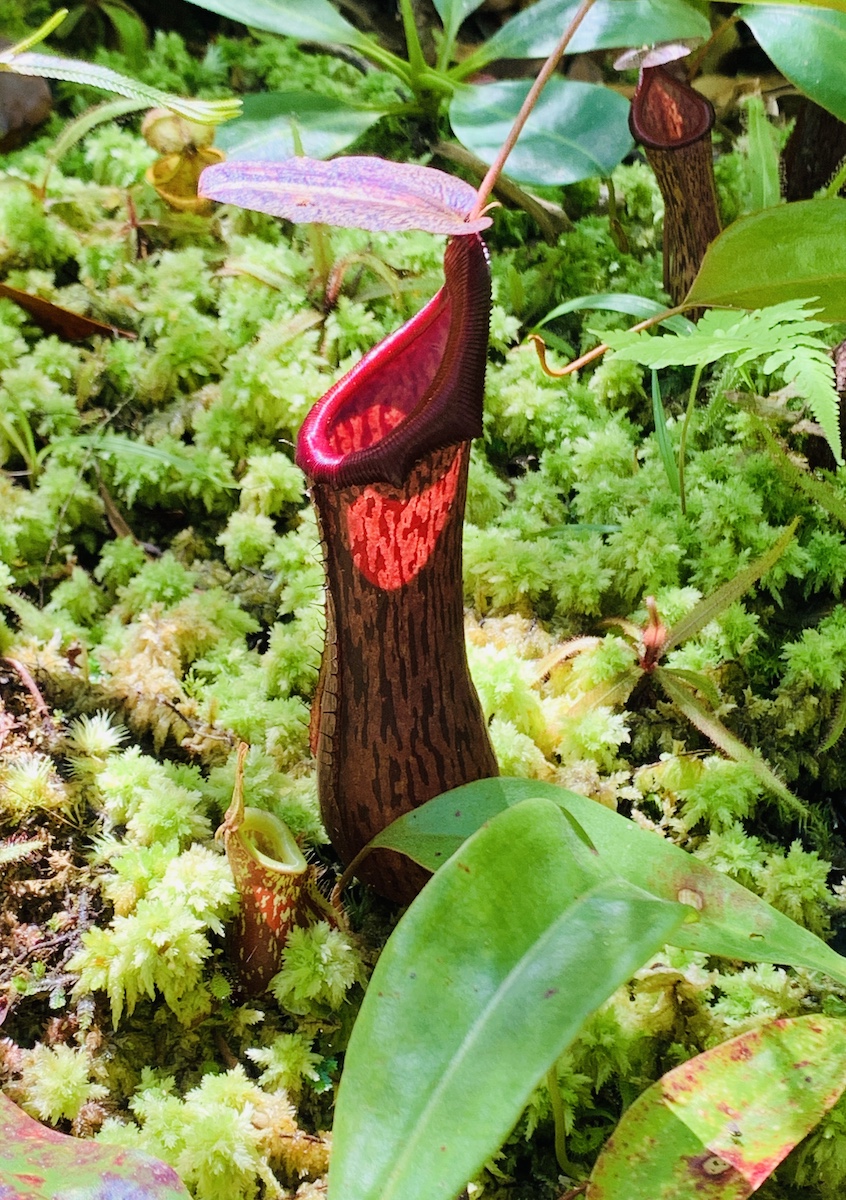
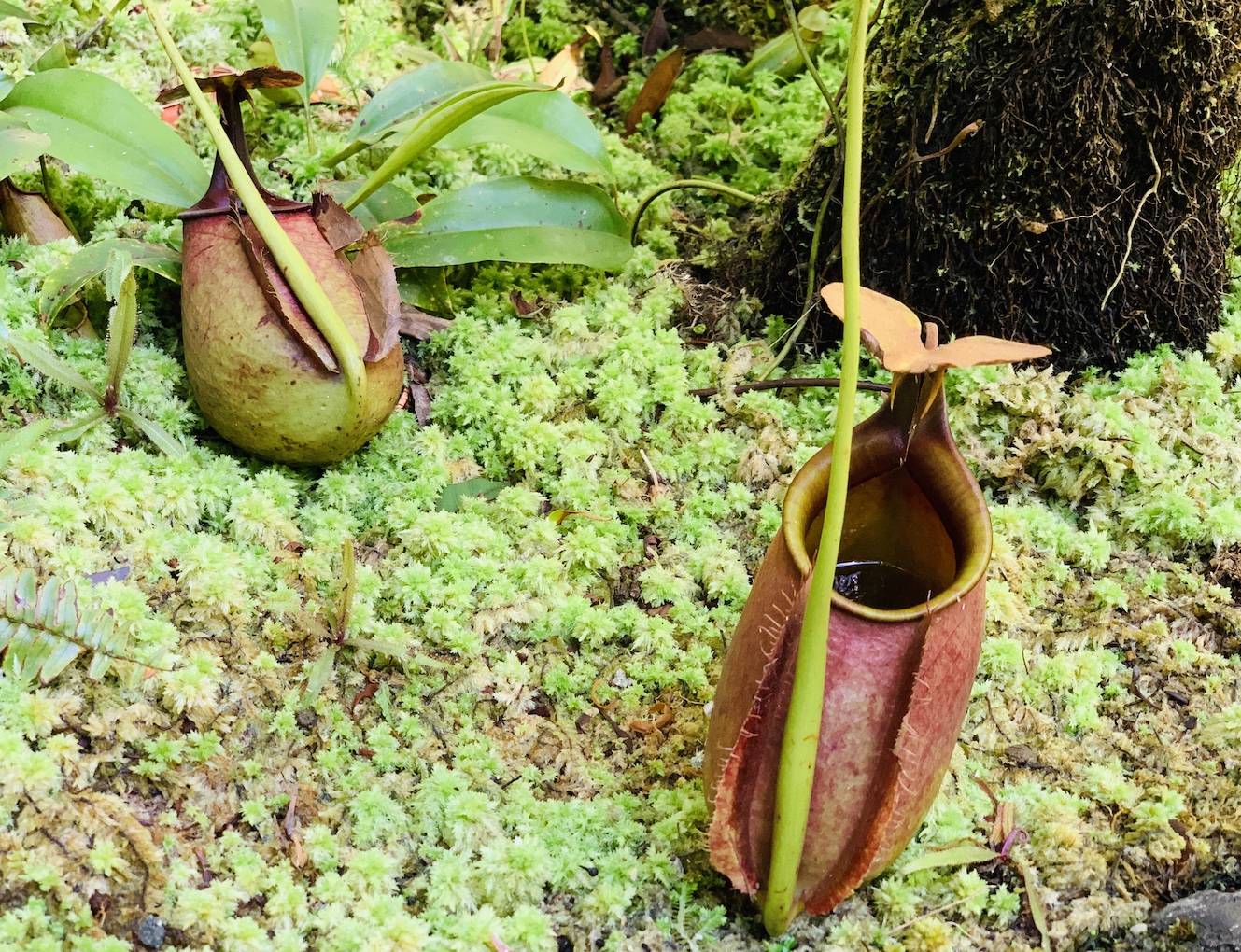
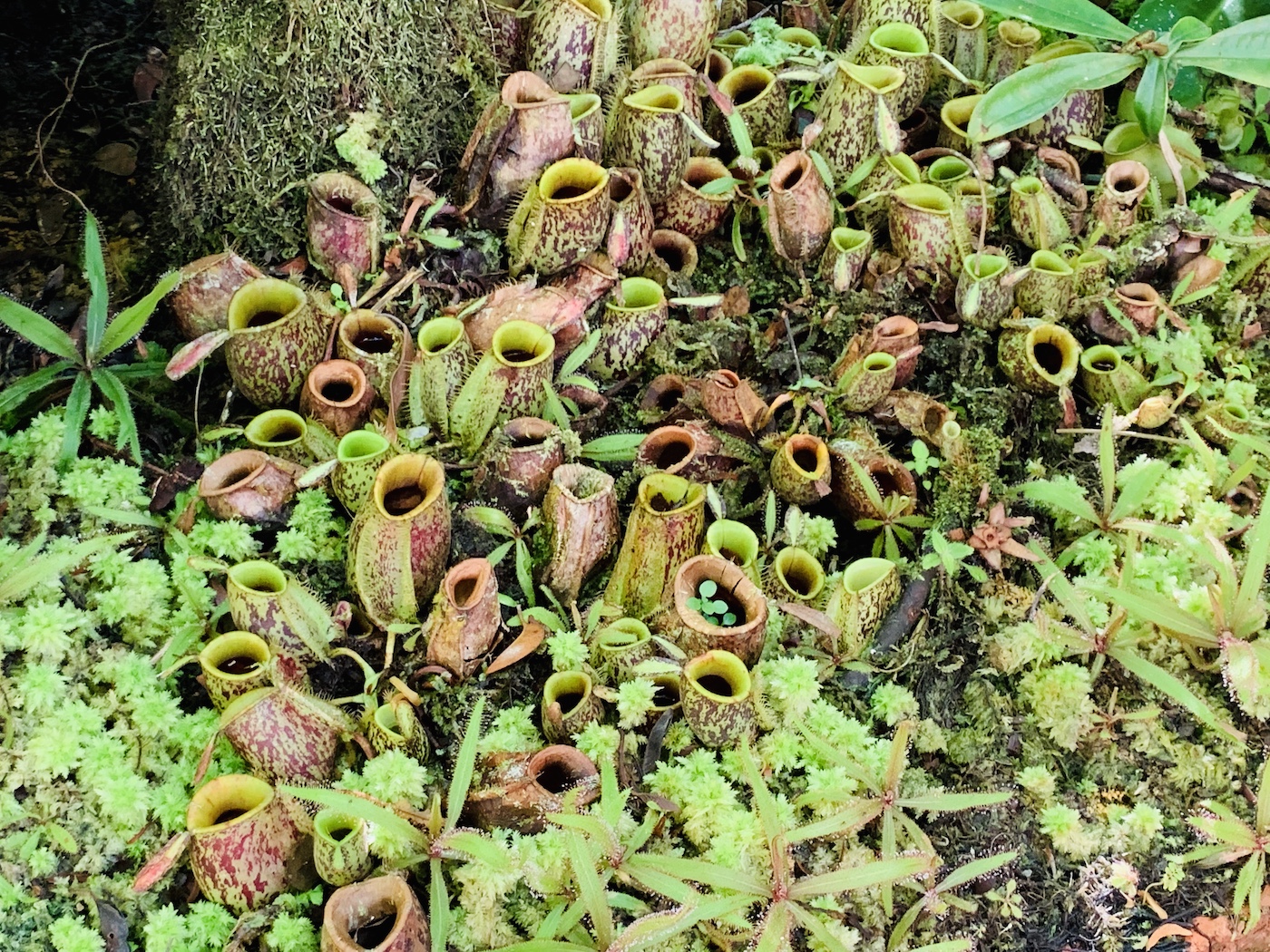
After deciding not to linger over a morning coffee at the Monkey Cup Café, the delightful owners arranged a shuttle to take us back to the Upper Station, saving us a few more kilometres of walking, for which we were very thankful. However, we were surprised to see the throngs off tourists that were now on the hill. We were probably about a half an hour too long at departing to have avoided these crowds, but either way, it was time to leave!
Over the next two days, although both of us were feeling a little washed out from all our touring as well as socialising with cruising friends, we still managed to mustered up the energy to prepare the starboard cabins and heads and give Paw Paw a good cleaning, inside and out for Justine and Paul’s arrival, regardless of the sweltering heat, with temperatures that were forecast to reach 36 / 37C, but fortunately only reached 34 / 35C, accompanied by a strong, hot wind that had Paw Paw bouncing around a little in her berth. In many ways, though, Justine and Paul’s visit this time seemed different from all the previous ones; less stressful, mainly because there didn’t seem to be that many logistics involved. We didn’t have to sail hundreds of nautical miles to meet them at a pre-arranged rendezvous, agreed a year in advance and with all sorts of weather and delays to accommodate, not to mention an unexpected illness. This time we’d been in Penang a month already, chilling, socialising with cruising friends and enjoying the delights the island had to offer.
In the interim, Roy had also had his new crown fitted, although he wasn’t completely happy with it, so another trip to the dentist was necessary before our departure from Penang, but, by then, we’d received the news that Justine and Paul had arrived safely in Kuala Lumpur. The following morning we received word that they had landed in Penang and were in a Grab en route to Straits Quay. With the “10 minute warning” of their impending arrival received, we charged to the front of the complex to meet them and waited with great excitement. And waited! Turns out they got the only Grab driver in town who dropped them off at a side entrance, so, while we sat waiting at the front, they stood at the locked marina gate. Typical!
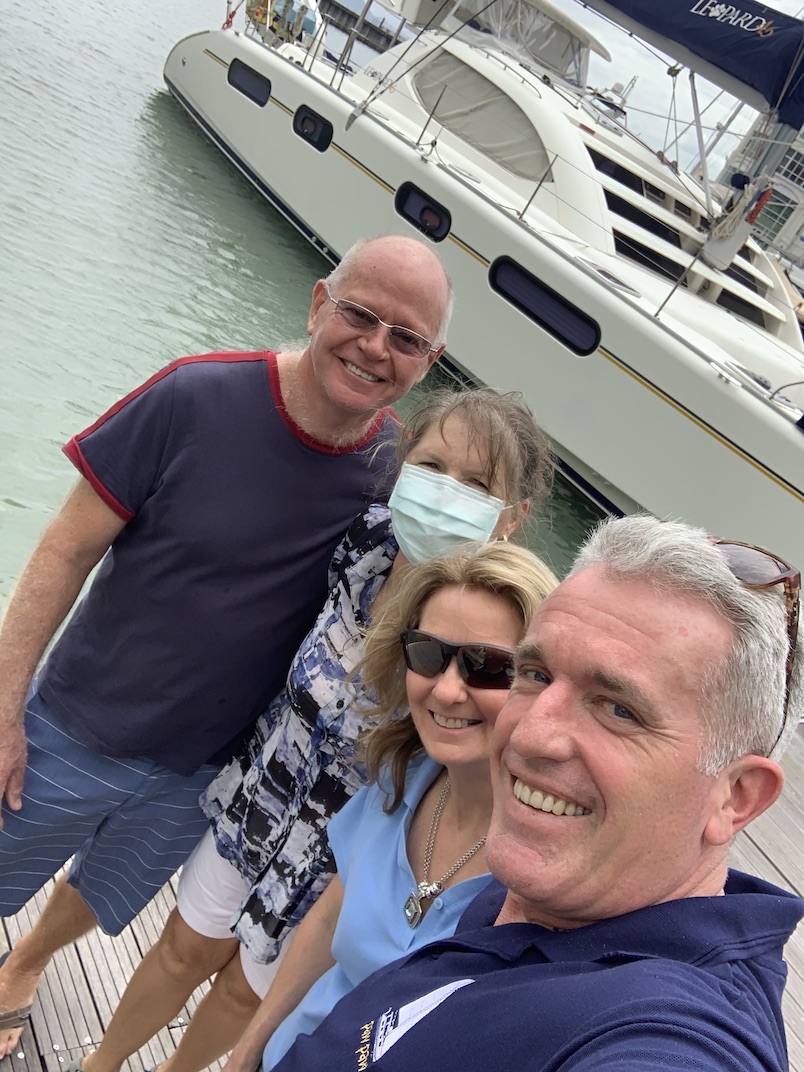
Regardless it was wonderful to see them, donning their Paw Paw shirts, a reminder of their first adventure aboard Paw Paw more than eight years previous. Needless to say, after hugs and kisses and dropping off luggage, it was time for a good “chin wag” over lunch at the Winter Warmers Tea Room. The day seemed to disappear, though, and by late evening, with the men enjoying a refreshment on the deck, Elaine and Justine took an evening stroll. Dinner onboard, complements of Roy, followed by a nice cup of tea and biscuits in the cool breeze of the cockpit, sealed the day. fWith Justine and Paul’s arrival, however, we knew our days in Penang were coming to a close, but there were a number of outings still to enjoy, specifically ones they had requested, a few we had reserved for their visit and a few we were happy to repeat.
Their first morning onboard, though, Elaine, thinking everyone was still asleep, sneaked up the companion way to start her early morning medication regiment, only to find the Hobbler (Paul), the Walker (Roy) and the Runner (Justine), all in the cockpit about to set off on their dawn exercise stint. Needless to say, Elaine cheerfully waved them all off and crawled back into bed, but was delighted to receive the news of the birth of her beautiful great-niece as she caught up on overnight events. Welcome to our family, Chloe!
After breakfast, the three amigos set off on another walk, this time to Tesco and to find a Thai massage parlour, one Entice had recommended. Unfortunately the establishment was closed and after trying to find another one in the same vicinity, they returned to find the Thai Odyssey right on their doorstep in the Straits Quay complex. Paul was the first brave soul to undergo the torture, but returned to Paw Paw full of accolades and, with that, the decision was made; Roy and Justine would also have a massage, but not before we all enjoyed our delicious lunch at the Edo Ichi Japanese restaurant and our tourist outing planned for the day.
While we’d booked a Grab ride to the Kek Lok Si temple, we were dropped off at a completely different entrance, which afforded Elaine and Roy the opportunity to see something different on this visit, as we all got to feed the numerous turtles at the base of the temple complex. The hike up to the main entrance, though, was definitely Elaine’s exercise for the day.
While this was our second visit to the temple, it was a completely different experience; first, it was all but deserted and secondly, the flowers were all in bloom, making for another fabulous outing, especially since we got to stroll around at our leisure, without having to deal with crowds. Also, since Justine still had energy left in her, she ascended the stairs to the top of the seven storey, Pagoda of Rama VI (Pagoda of Ten Thousand Buddhas) to enjoy the views, while the rest of us found a bench at the foot of the Pagoda and enjoyed the views from there instead.
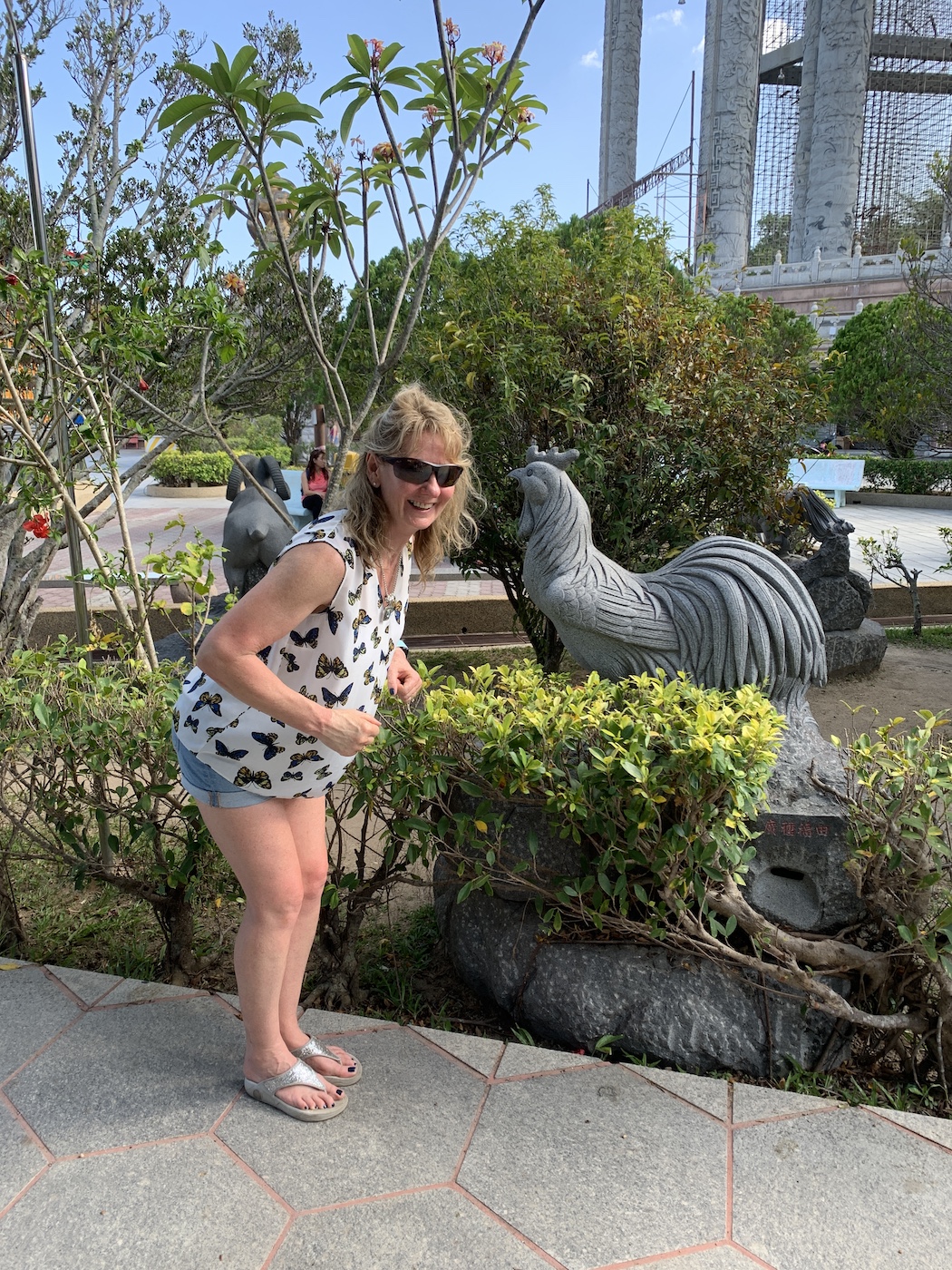
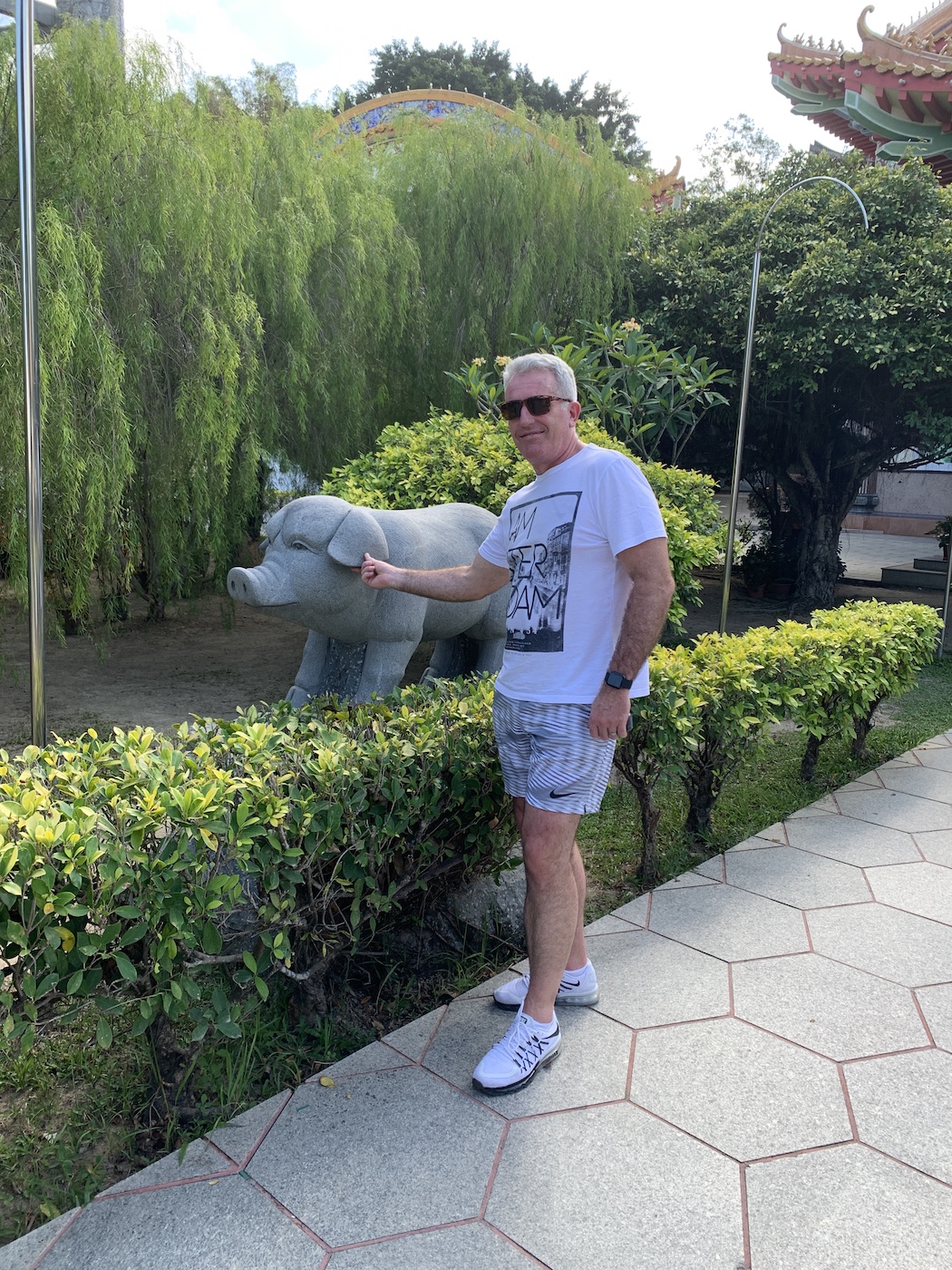
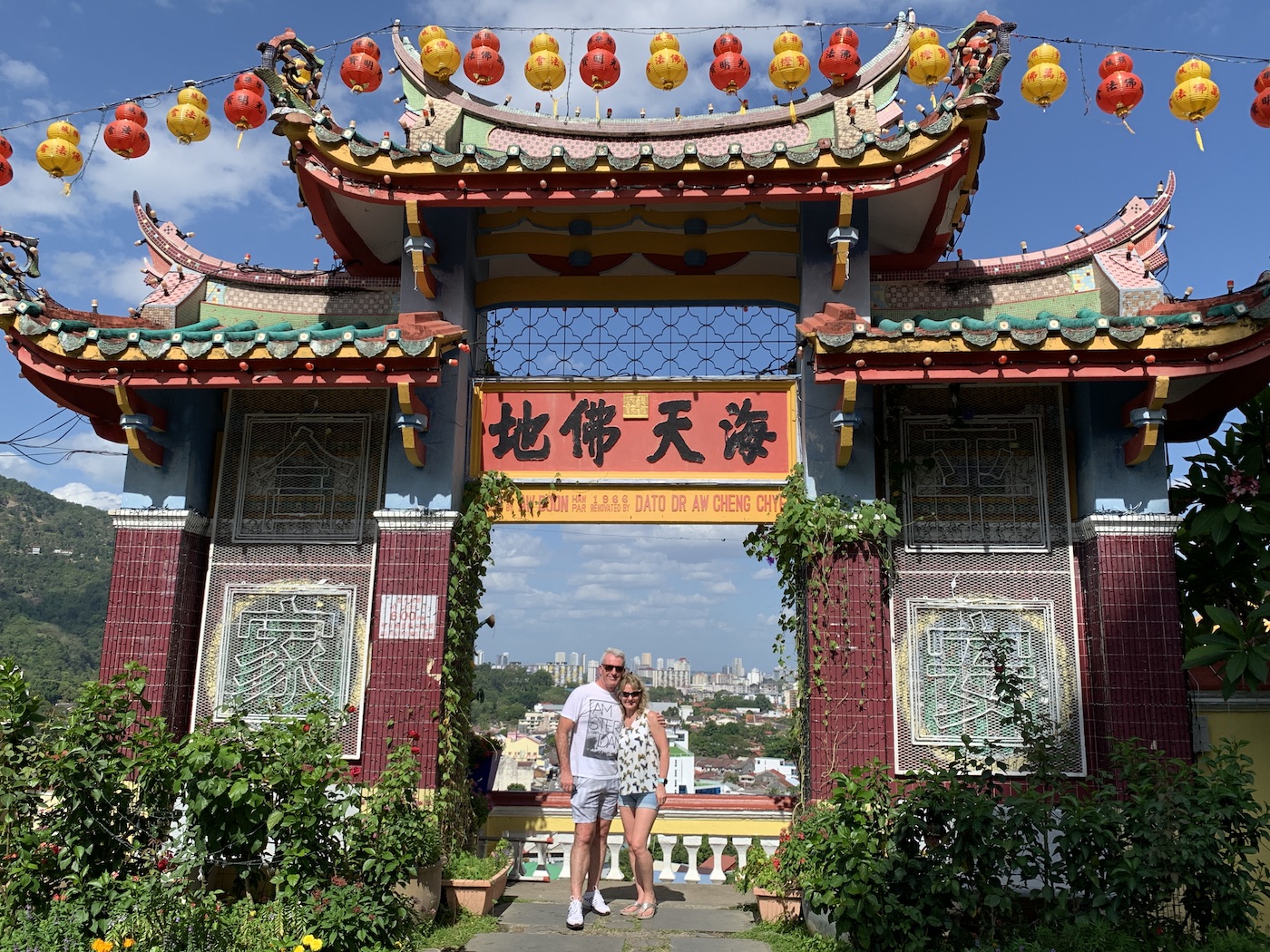
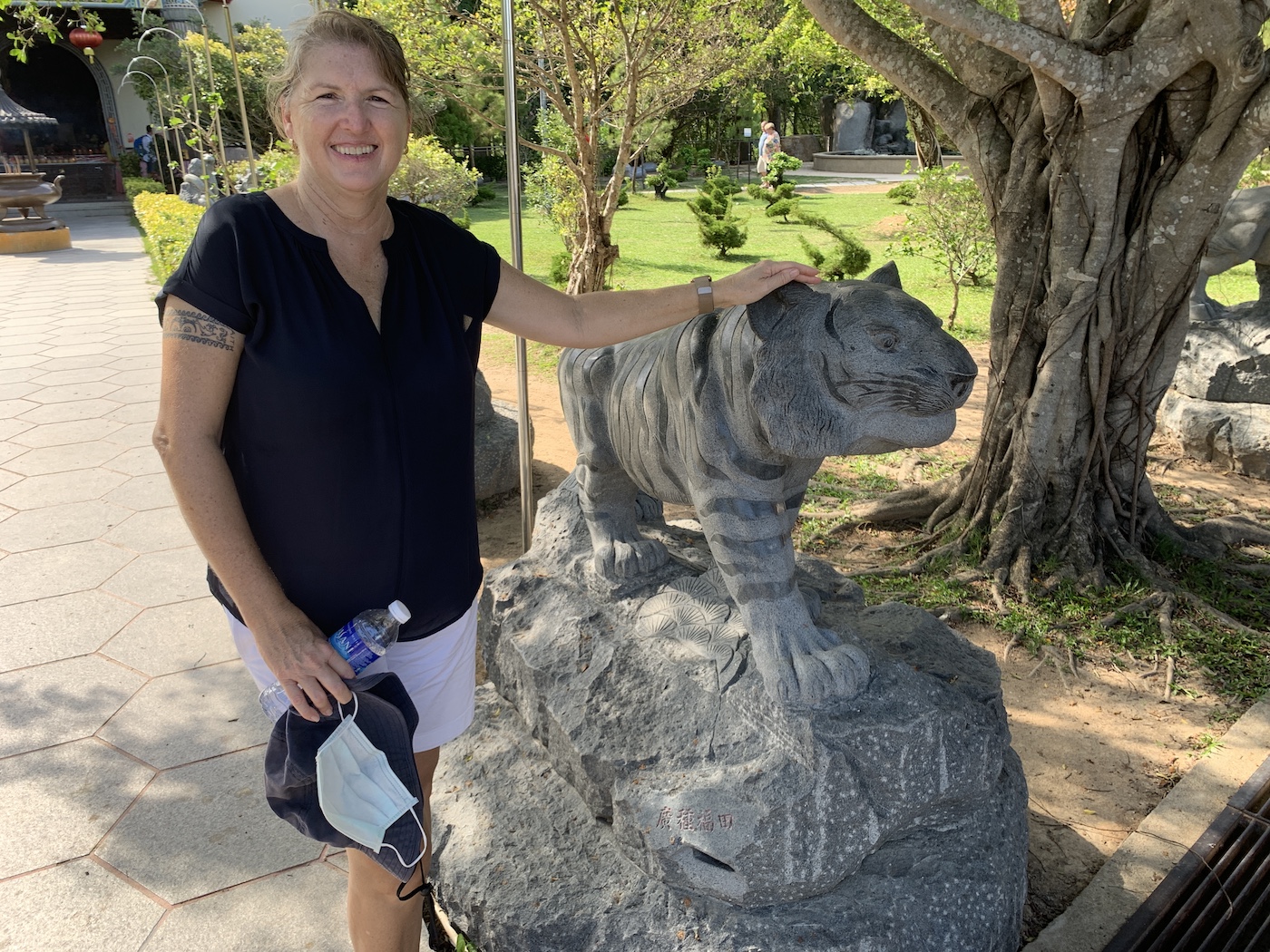
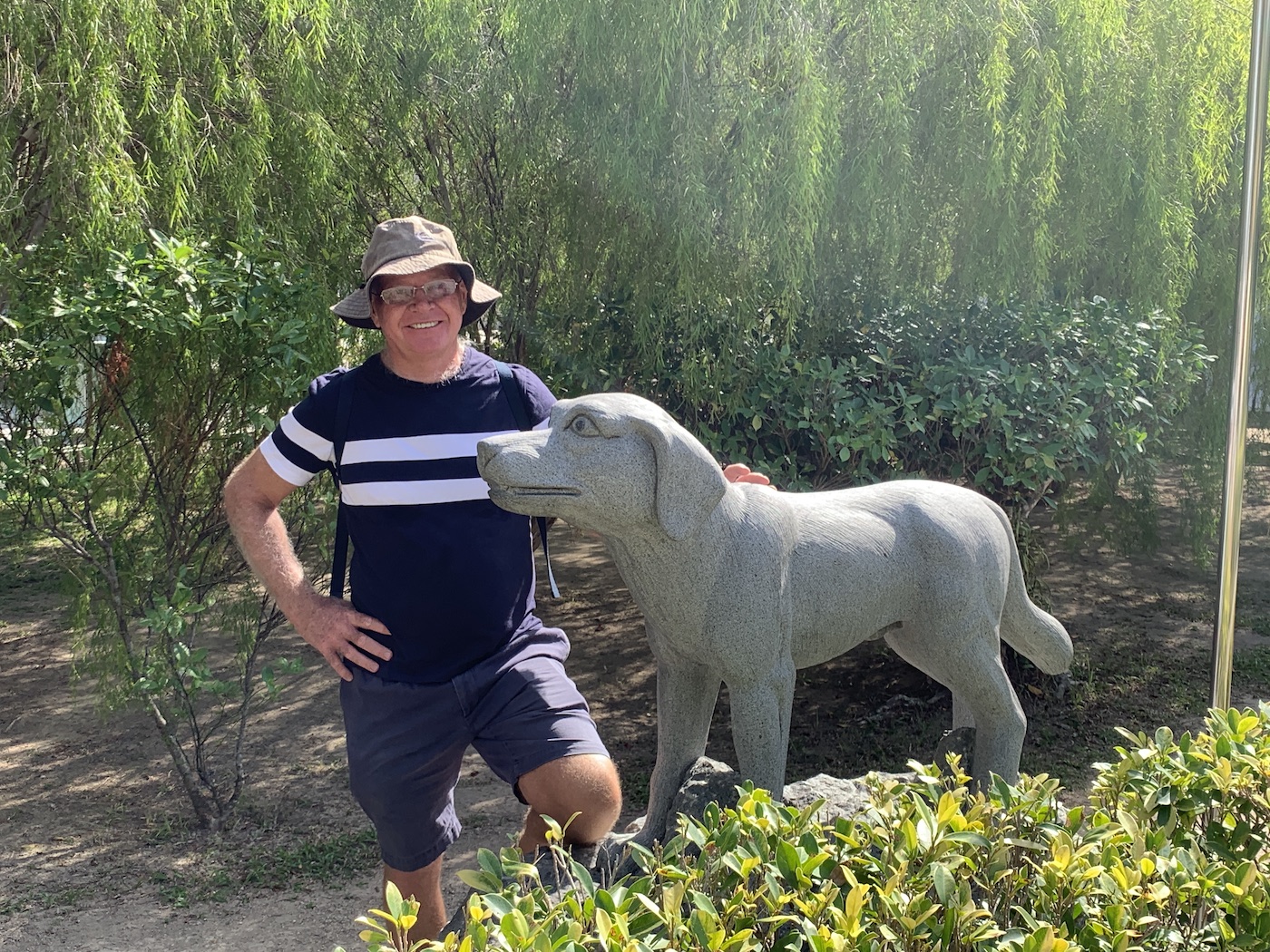
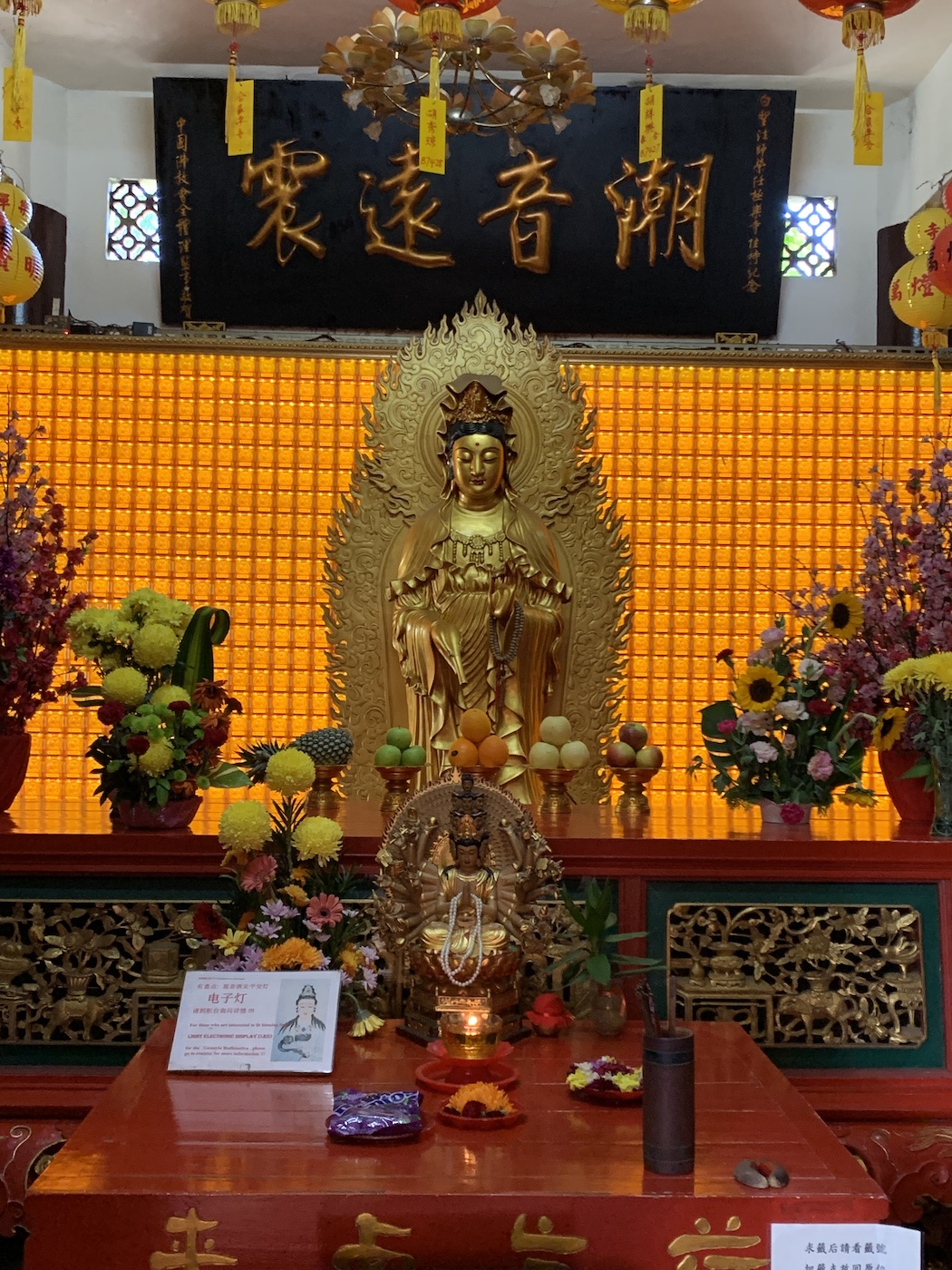
The incident that had us all in stitches, however, was getting back down the mountain; something we had decided not to do and, instead, opted for a Grab to collect us at the top. However, after numerous attempts at booking a ride, only to have the driver cancel on us, we discovered that this service was not offered to the collection point we wanted. So, having spent just $14RM to get us to the temple from Island Plaza, a half an hours drive away, it cost us $34RM just to get back down to the carpark of the temple, using the funicular service as none of us was prepared to walk another step further by then. We were all exercised out! It was the perfect time, though, for Roy and Justine to enjoy their massage, following our return to Paw Paw. Dinner was enjoyed at the Winter Warmers restaurant again, although it was a stretch to call it dinner; while Elaine enjoyed a healthy salmon concoction, the others got tucked into all sorts of goodies which included a variety of cakes and waffles.
Tuesday, 25th February 2020, was another early start. This time to get to Batu Ferringhi for Justine’s pre-booked horse ride on the beach. So, while she enjoyed that outing, the rest of us enjoyed a walk on the beach and then the views from the beach café of the Park Royal resort. Morning refreshments were savoured once Justine rejoined us, following which we returned to Paw Paw for lunch and to wait on the completion of Roy’s followup dentist appointment. On receiving word he was done, we ordered a Grab, collected him en route and headed to downtown Georgetown for a very relaxing, but lovely afternoon; a trishaw ride around the UNESCO World Cultural Heritage site, listed in 2008, to enjoy the street art, topped off with afternoon refreshments at China House, which, of course, included more delicious baked delights for everyone other than Elaine; she’d learnt her lesson with the delectable temptations of this establishment when we first visited it with Maria and Maurice off Cattiva!
In an initiative to physically brand the heritage site, an “Idea Competition” opened in 2009. “Sculpture at Work”, under the creative direction of local artist Tang Mun Kian, won the commission with the theme “Voices of the People”, a retelling of Penang’s history by Penang characters through their own particular brand of wit and humour. To date there are 52 steel-rod sculptures, but this initiative also opened the door for new public art forms by artists like Lefty, Reggie Lee and Baba Chuah, many of which we got to see during our tour; “The Cheating Husband” on Love Lane”, “Old Motorcycle”, “Kids on Bicycle “Boy On Chair”, “The Indian Boatman”.
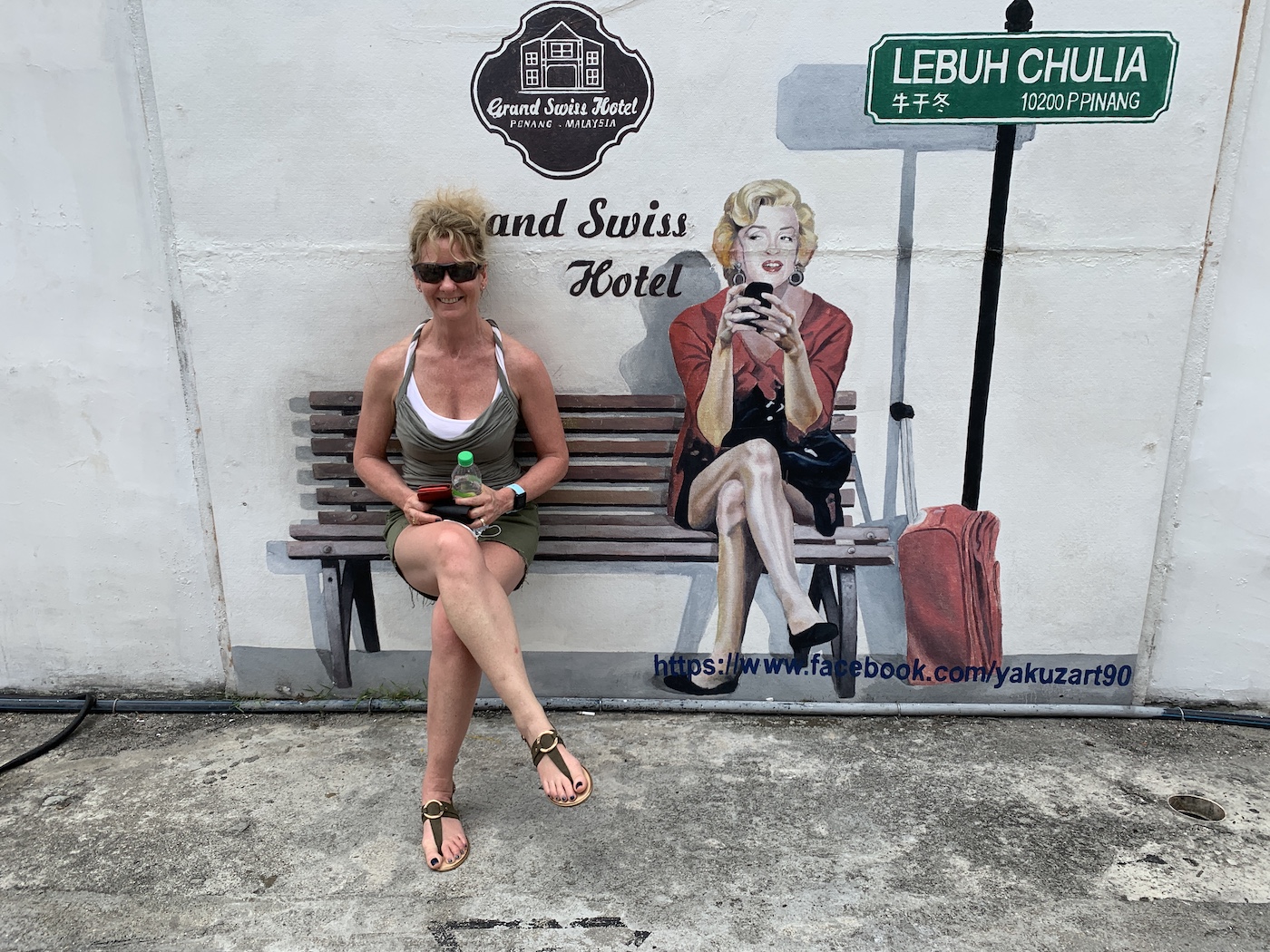
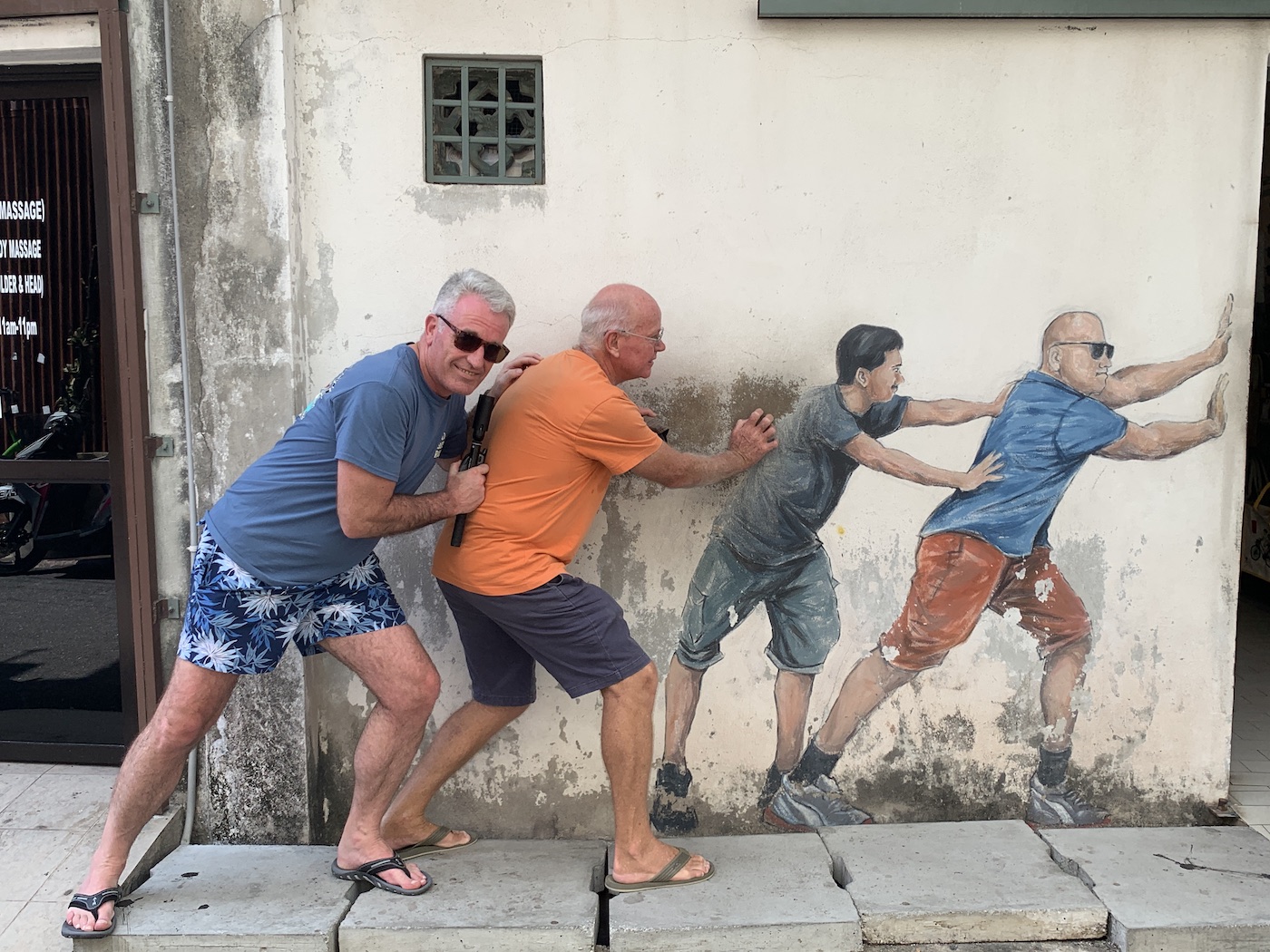
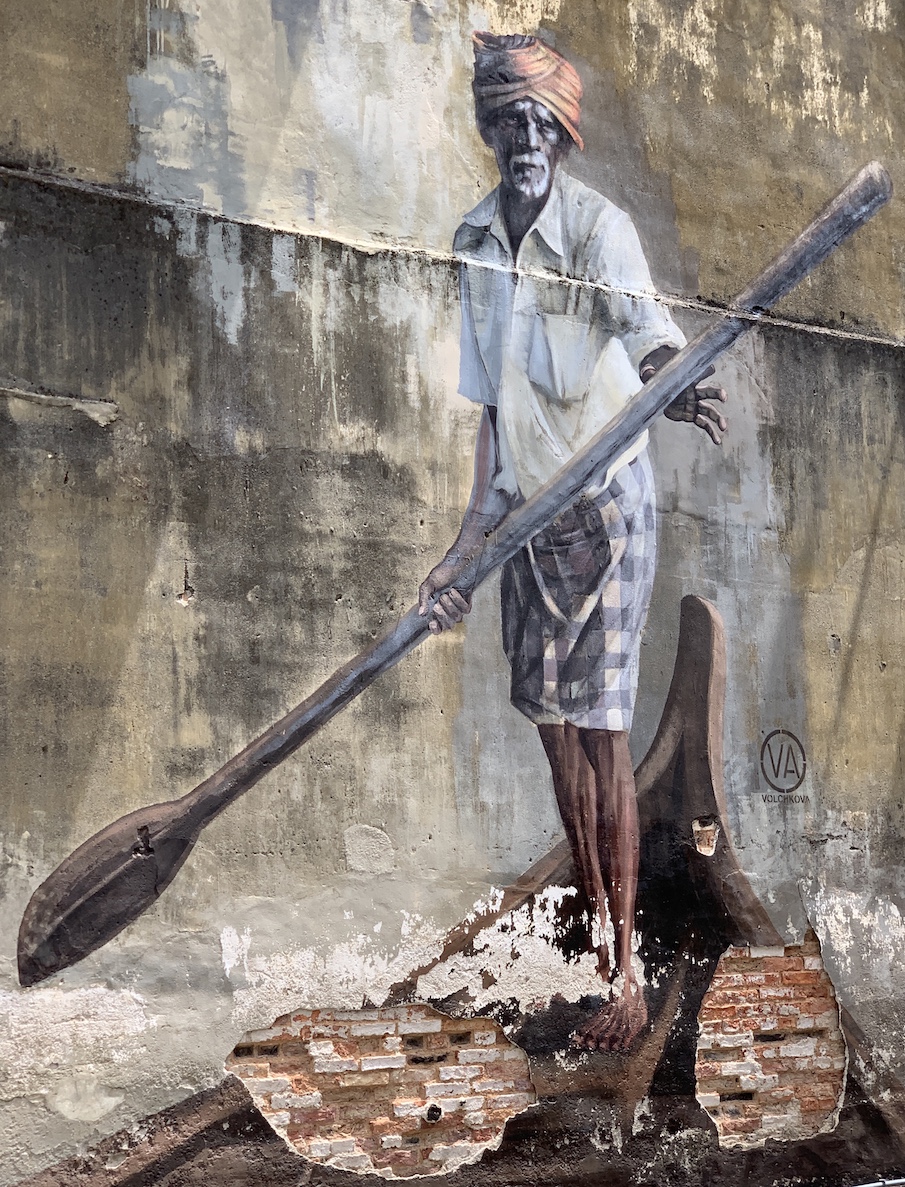
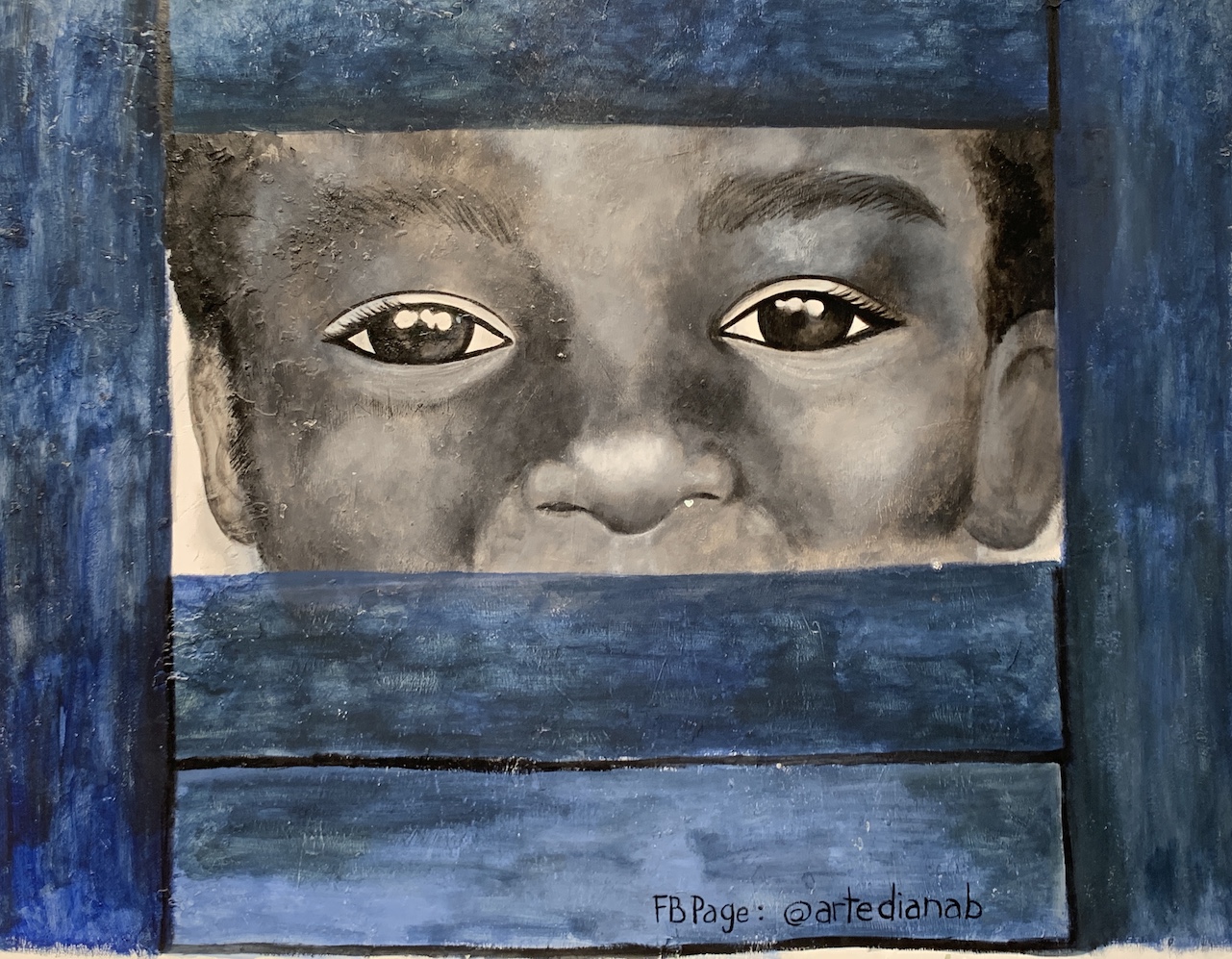
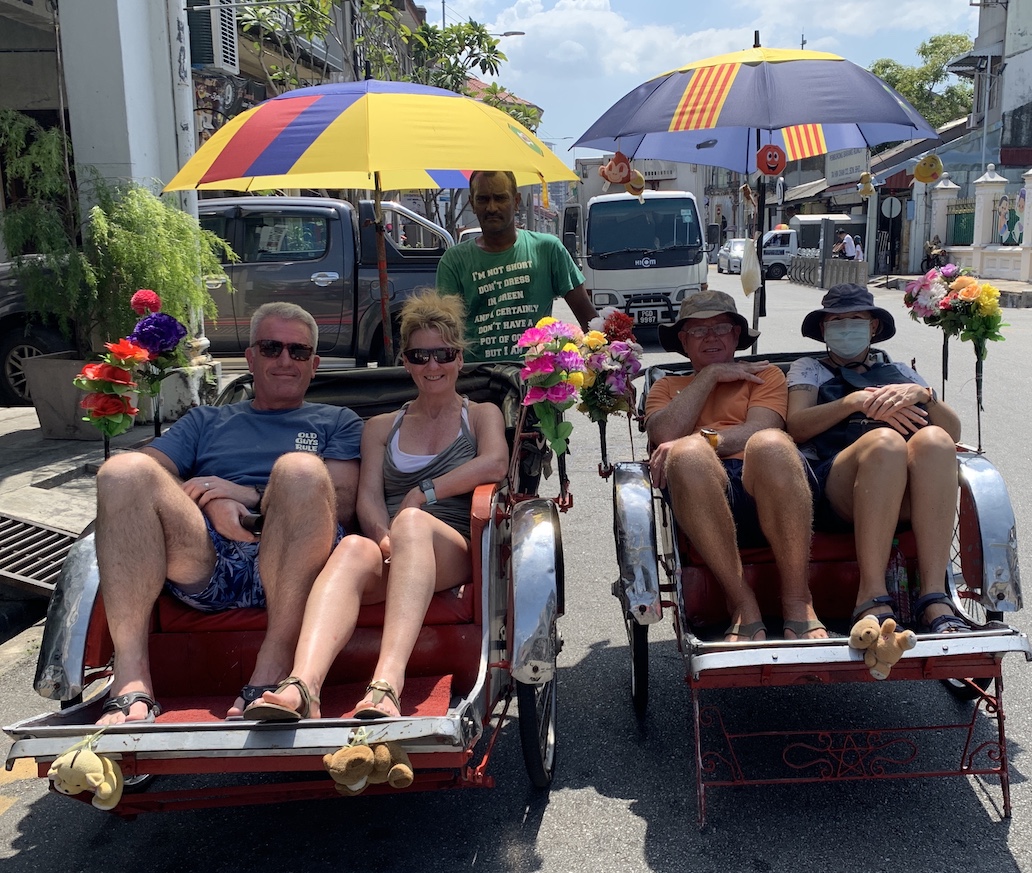
Back on Paw Paw, much needed late afternoon naps were enjoyed by all, although Paul squeezed in another massage before we all headed to Pappa Rich’s restaurant for a traditional Malay dinner. Unfortunately, Elaine ordered the Penang Asam Laksa, which she was determined to try before leaving Penang, but it was far too spicy for her. This Malay signature dish of Penang is described as a smorgasbord of slurpy white rice noodles, shredded fish (typically mackerel), sliced pineapples, cucumber, onions, red chillis, lettuce and mint leaves steeped in a tamarind-flavoured soup base. Fortunately Roy’s dish was something Elaine could eat, so, after a quick swap of meals, another scrumptious dinner was enjoyed. Tea, biscuits and a good “chin wag” sealed the day, although it was far later than we realised when we all headed to bed.
On Wednesday, 26th February 2020, we all enjoyed a somewhat lazy morning while we awaited our afternoon outing. Justine and Paul were, however, up early to enjoy a run and walk respectively, following which Paul sneaked off to have a foot massage and pedicure and Justine worshipped the sun god from a comfy spot on the cockpit stern bench, but not before we had a bit of a laugh at Paul’s expense. Cheerfully he asked: “Would anyone like a Starbucks?”. What ensued was not exactly an answer to his question, though. While Elaine and Roy gave him our orders, Justine entered into a rendition of “Can I have a salad from Subway please, but I don’t want a creamy dressing and I don’t want beetroot and can you get me something cold to drink, but not a soda like a Fanta or a Coke, but rather a ‘slush puppy’ type fruity something and...”. By now Paul had regretted his question and wandered off in search of Justine’s request. Of course, Elaine hadn’t heard this exchange and when Justine regurgitated the story, Elaine burst out laughing, indicating that we had loads of fresh fruit juice onboard with plenty of ice and ice water and, thus, the plot hatched.
Before Paul’s return and after he’d apparently searched high and low for this drink Justine wanted, we made up a fruit cocktail, added some freshly chopped fruit to it and positioned Justine in the cockpit drinking her refreshments just as Paul climbed aboard. The look of sheer disbelief on his face was priceless when he spotted Justine with her drink in hand. Needless to say, we both nearly got hit over the heads with the only drink he managed to find; a carton of guava juice that he’d purchased after walking all the way to the supermarket, while us girls rolled around the cockpit in fits of laughter. It was then that the poor man decided he needed some “me time” and headed off for his foot massage and pedicure.
Roy, in the meantime, had ensured all the printing and photocopying was completed for the clearing out process, while Elaine completed all the administrative activities and necessary phone calls to obtain approval from the Port Harbour Master and then squeezed in her light stretches and meditation.
Around mid-afternoon we ordered a Grab, bound for Penang Hill Lower Station again, but this time we’d planned a sunset dinner excursion and, fortunately, the temperatures were definitely much warmer than our sunrise excursion.
Once we’d reached the Upper Station and pointed Justine and Paul in the right direction, Elaine and Roy found a comfortable spot on the patio of the Bellevue Hotel to enjoy the magnificent views again, accompanied by a cold beverage, while Justine and Paul enjoyed the delights of Penang Hill, including the Penang Hill mosque, Masjid Bukit Bendera, the Sri Arulou Thirumurugan Hindu temple, the Bel Retiro Gate House and a meander through the rainforest, taking them over the Langur Way Canopy Walk and on to the Curtis Crest Treetop Walk. They also took the opportunity to do the “Honeymooners” zip-line experience before meeting us back at the hotel.
After a few sundowners, we made our way to the David Brown’s restaurant on Strawberry Hill to enjoy the sunset and a delicious meal, set in a beautiful garden, surrounded in twinkle lights. En route Roy, Justine and Paul stopped to enjoy a man and his cockatoo performance, although everyone avoided the snake act.
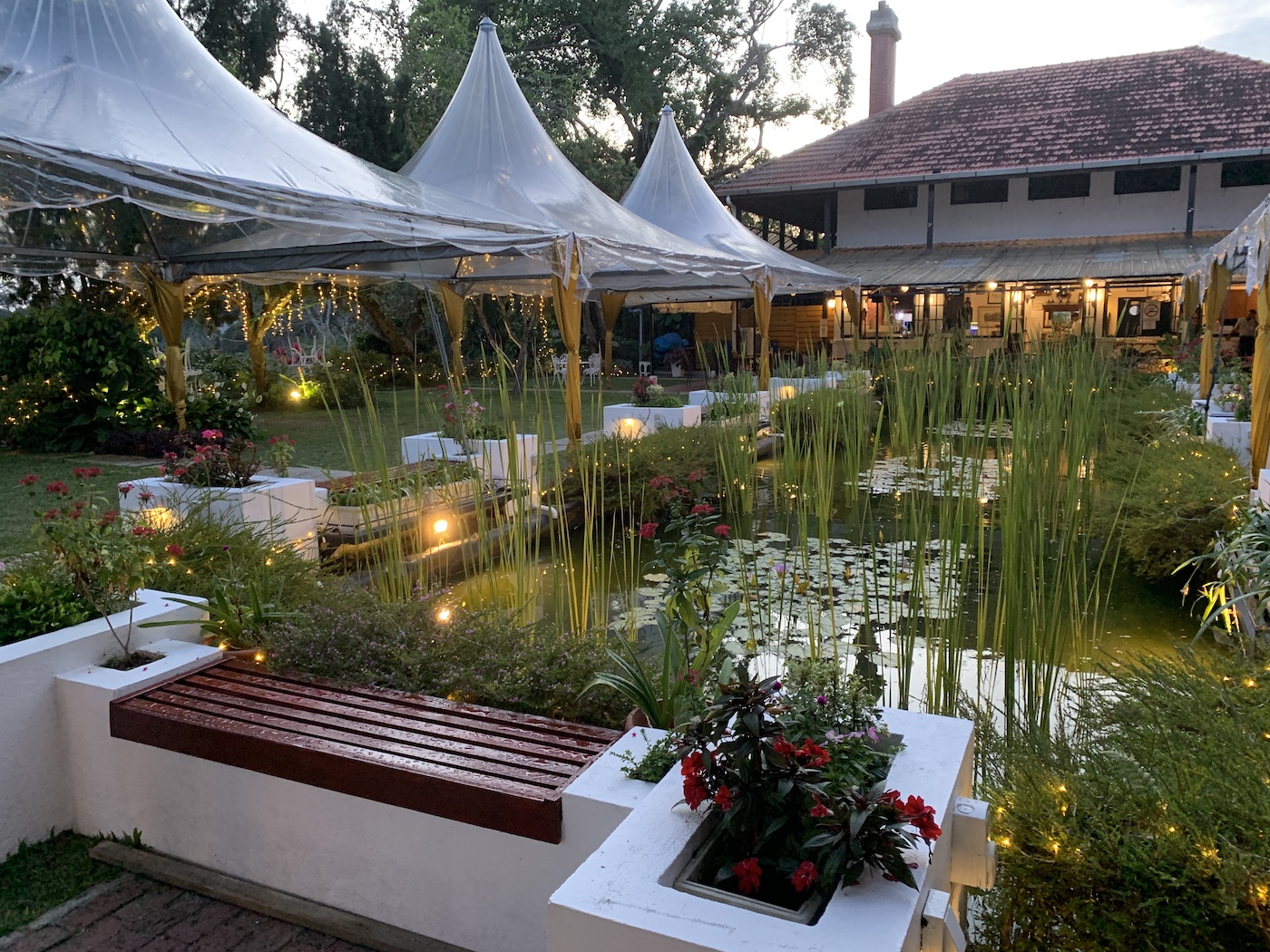
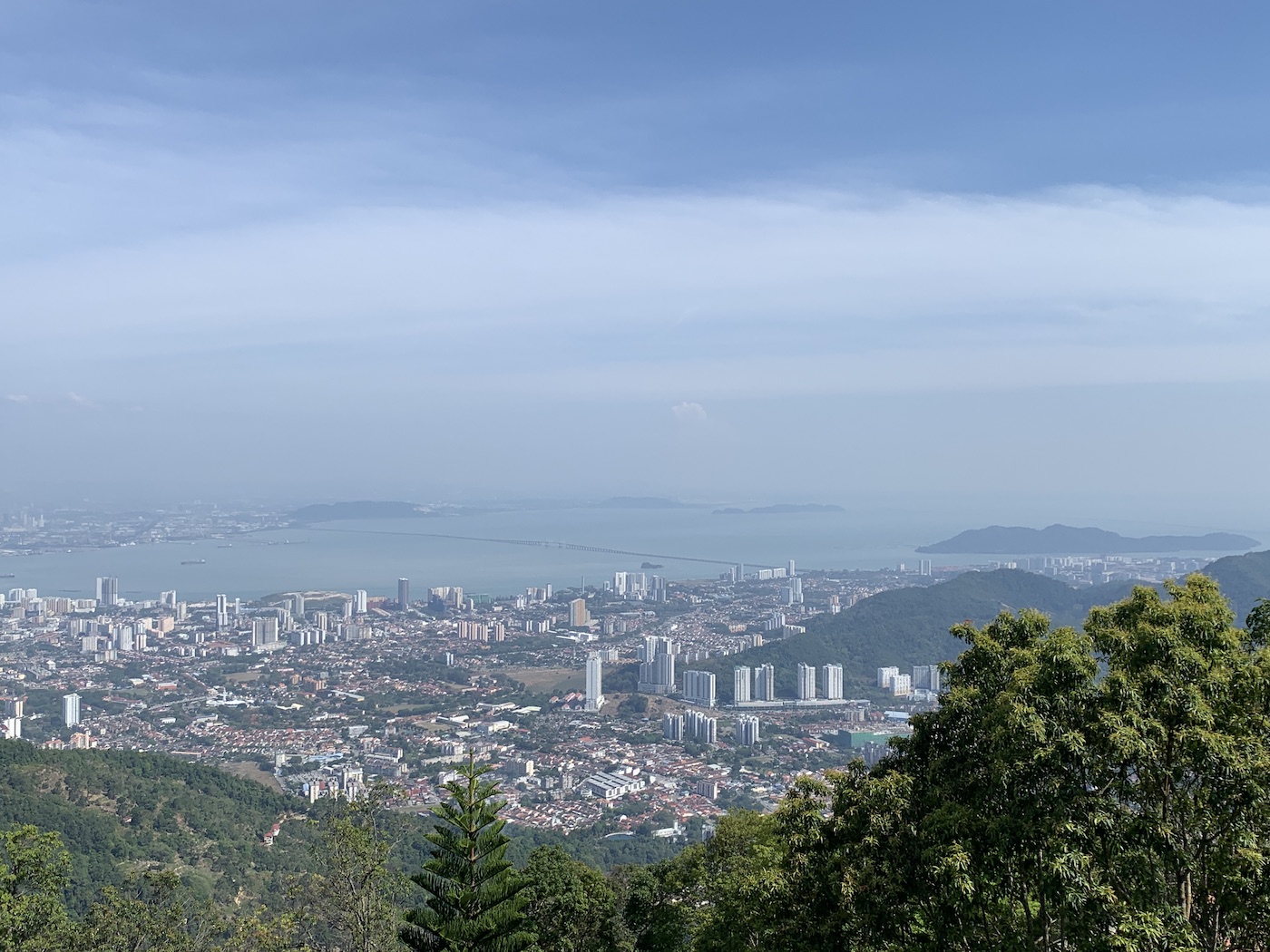
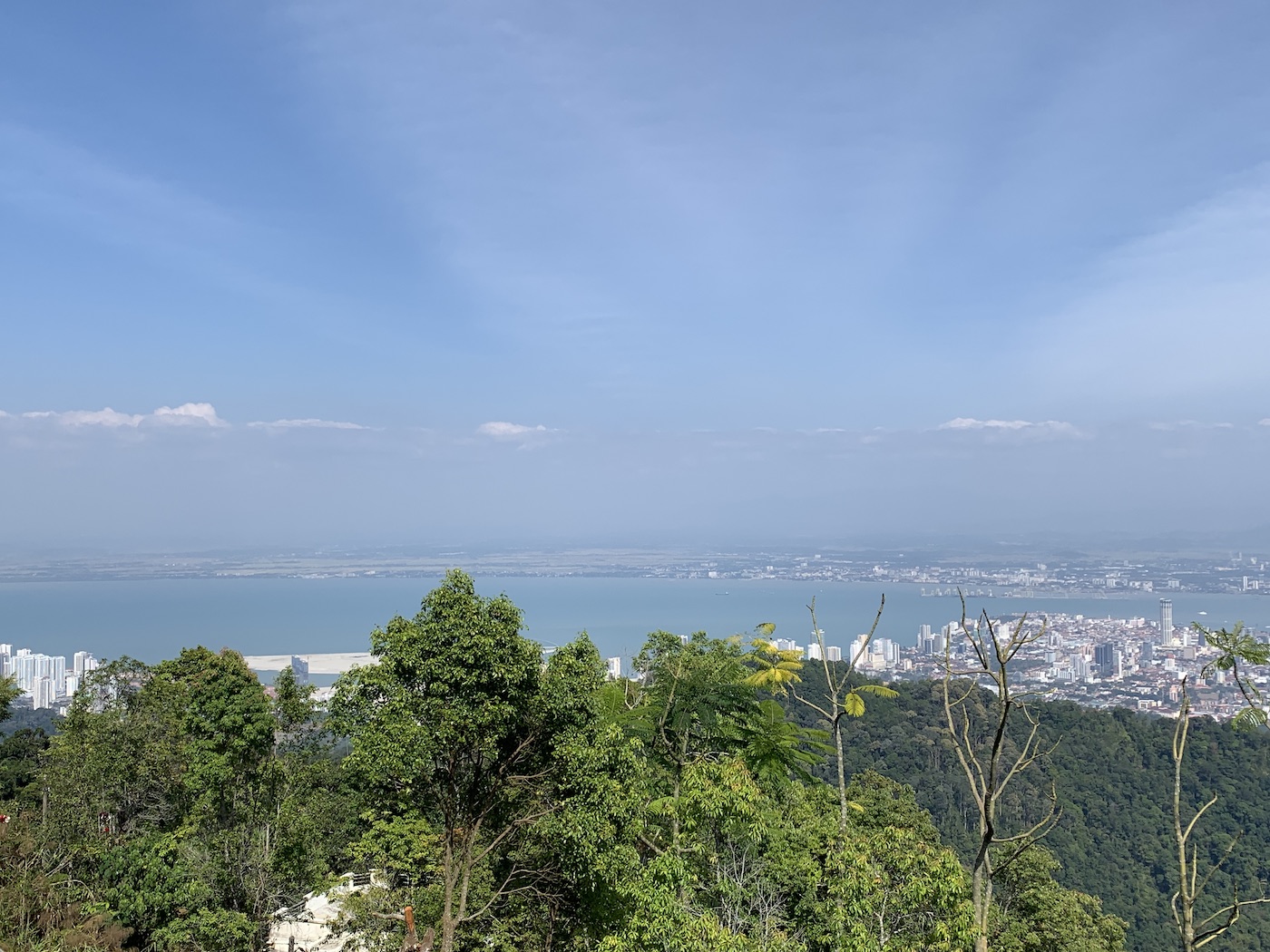
However, inadvertently, Paul’s “torture” at the hands of the ladies onboard carried over to the afternoon. Having been informed that there were no steps to climb on Penang Hill, he was definitely not impressed to discover Elaine had completely forgotten about the steps down to the eastern sky walk, up to the mosque and temple and up to the Curtis Crest Treetop Walk. The final straw was all the steps up Strawberry Hill to the restaurant. Elaine was definitely in his bad books by then and had to forfeit her “thank you kiss” as a result!
The following morning we all endured the frustrations of clearing out at Immigration and Customs. At first, after completing the reams of paperwork, the Immigration officer decided that she wasn’t going to issue our clearance, requesting us to return that evening, since we were departing more than 12 hours later. With that, the swift decision was made that we’d depart that evening instead, following which she reneged and provided us with the necessary documentation to, at least, proceed to Customs.
At Customs another debacle ensued, since the officers there were unaware of the Port Harbour Master’s new process. Fortunately the Port Harbour official was kind enough to come across to the Customs office and assist everyone through the process. The final step was to return to Immigration to collect the last of the departure documentation. We eventually walked out of the Cruise Ship Terminal nearly 3 hours later, all rather exasperated, but pleased to have received our clearance nonetheless. In true Malaysian style, though, the officers at Customs were very kind in offering us food from a party they were having to honour a visit from a top ranking official from Kuala Lumpur. Having declined graciously, by then all we wanted was a coffee, to get our provisioning completed and to head back to Paw Paw as soon as possible. So, a pitstop at the Gurney Plaza satisfied both objectives and back to Paw Paw we went.
Our day wrapped up with late afternoon naps for everyone, barring Roy, who topped up the water tanks and pottered around while his crew snored away what was left of the afternoon, after which we all scrambled to met Georgia (Chris and Paul), whom we hadn’t seen since Belitung, Indonesia, in October 2019, for sundowners and dinner on the patio of Chili Head, as arranged. A nice cup of tea, after “all-hands-on-deck” helped complete the pre-sail checklist, sealed the day. Paul, however, also managed to squeeze in his last Thai massage before bedtime.
On the morning of Friday, 28th February 2020, we were all up early and had the pleasure of a beautiful sunrise as we cast off the dock after five fabulous weeks enjoying Penang Island. It didn’t take long to pick up the stiff breeze after hoisting a full mainsail and unfurling the headsail, following which Paw Paw romped along at a SOG of up to 9.0 Kts, on a close reach, in somewhat confused seas and, with that, it was goodbye to Penang Island or, in these unprecedented times, so we thought! Given our VMG (Velocity Made Good), though, we decided to skip Palau Payar and continue on to the southern anchorages off Palau Dayang Bunting Island in the Langkawi archipelago. While the crew took turns to rest their “butts”, as they put it, both falling fast asleep in the cockpit, we received the news just before we lost connectivity that Keenan and Brooke had closed on their first brand new house. It was congratulations all round and best wishes for many years of creating happy memories together in their new home.
Aside from the usual avoidance of fishing nets and boats, we dropped anchor at around 1600, delighted to find a picturesque anchorage, far exceeding our expectations of the Langkawi archipelago and it didn’t take long for us all to don our swimsuits and jump in the water for a refreshing swim. Fortunately we’d been warned about the fierce currents in this anchorage, so we’d put out floating safety lines, which we all definitely had to cling to while we waded. A barbecue followed by a game of Mexican train dominoes was supposed to seal the day, but unfortunately our generator started to play up in the middle of the air-conditioners running to cool the cabins before bedtime. Roy then spent some time troubleshooting the problem, not easy in the dark, and decided the matter was best left until daylight.
So, the first order of the day on Leap Year Day was to troubleshoot the generator. At first glance there was nothing obvious, so Roy donned his swimsuit and snorkel gear to check all the throughhulls and give Paw Paw’s bottom a cursory clean, having sat in a marina for five weeks. When that didn’t solve the issue, further investigations revealed an issue with the v-belt that drives the fresh water pump. Once replaced everything was operational again; thank goodness, as we really did need the air-conditioning to help cool the cabins at bedtime to give us all a reasonably comfortable night’s sleep in the heat.
While Roy was busy with the generator, Elaine eventually got around to stowing our dry provisions and, after breakfast, she baked some muffins and oatmeal biscuits, while Justine and Paul lounged around or napped on deck. It didn’t take long for Elaine and Roy to join them, though; everyone happy to simply enjoy a lazy day onboard. However, once a shadow was cast over the little beach, Justine and Paul swam the 300 metres / 980ft to shore, while Elaine and Roy took the far less energetic option; the dinghy, but we all thoroughly enjoyed our swim, followed by a cold beverage on the beach, which certainly went a long way to shaking off the heat of day. Back on Paw Paw, dinner was followed by stargazing on the trampoline, in the cool night breeze, before heading to bed.
This following morning, once everyone was awake, we weighed anchor and motored to the next bay along the southwestern coast of Pulau Dayang Bunting, enjoying dolphins and the picturesque scenery as we meandered through the cliff-faced islands. After breakfast we dinghied ashore to enjoy what we thought was going to be a nice nature hike to the Princess Lake for a peaceful swim, a lake surrounded in legend of a celestial princess, who bathed in this very same water.
After a local prince “chanced upon her while she bathed”, he fell deeply in love. Wanting to marry her, he sought the advice of a wise man who told him he “had to bath his face in the tears of a mermaid”. After the prince and princess married, they were blessed with a baby, who died soon after, following which the princess realised her marriage was based on trickery. Casting the baby’s body into the lake, “she blessed it with her magic fertility powers, before returning to the heavens, never to be seen again”.
Prepared to take our chances with a swim in the lake, we unfortunately, had the unpleasant experience of discovering hoards of people visiting an overly commercialised establishment, one that was a stark reminder of the unhygienic environments of Indonesia. Additionally, other than Elaine, no one else had their protective masks with them. However, given that we’d gone to all the trouble of getting there and everyone could cover their faces with towels, as well as the fact that Elaine had packed sanitising hand gel, we decided to enjoy a paddle boat ride that, at least, took us away from the crowds, solar powered ones at that, although Roy and Justine still mustered up the energy to do a bit of physical paddling nonetheless.
Deciding then that a swim in the lake was definitely out of the question, we stopped at a secluded beach en route back to Paw Paw and enjoyed a swim there instead, while Paul played with his drone. The surprise of the day, though, was returning to Paw Paw to find all the anchor alarms sounding; in 4.5 metres / 15ft of water at low tide, with 40 metres / 130ft of chain out, we had dragged more than 60 metres / 200ft; another first on Paw Paw. We were obviously anchored in a very slushy bottom, although pulling back on the anchor initially with the engines, in strong winds, hadn’t indicated a potential problem.
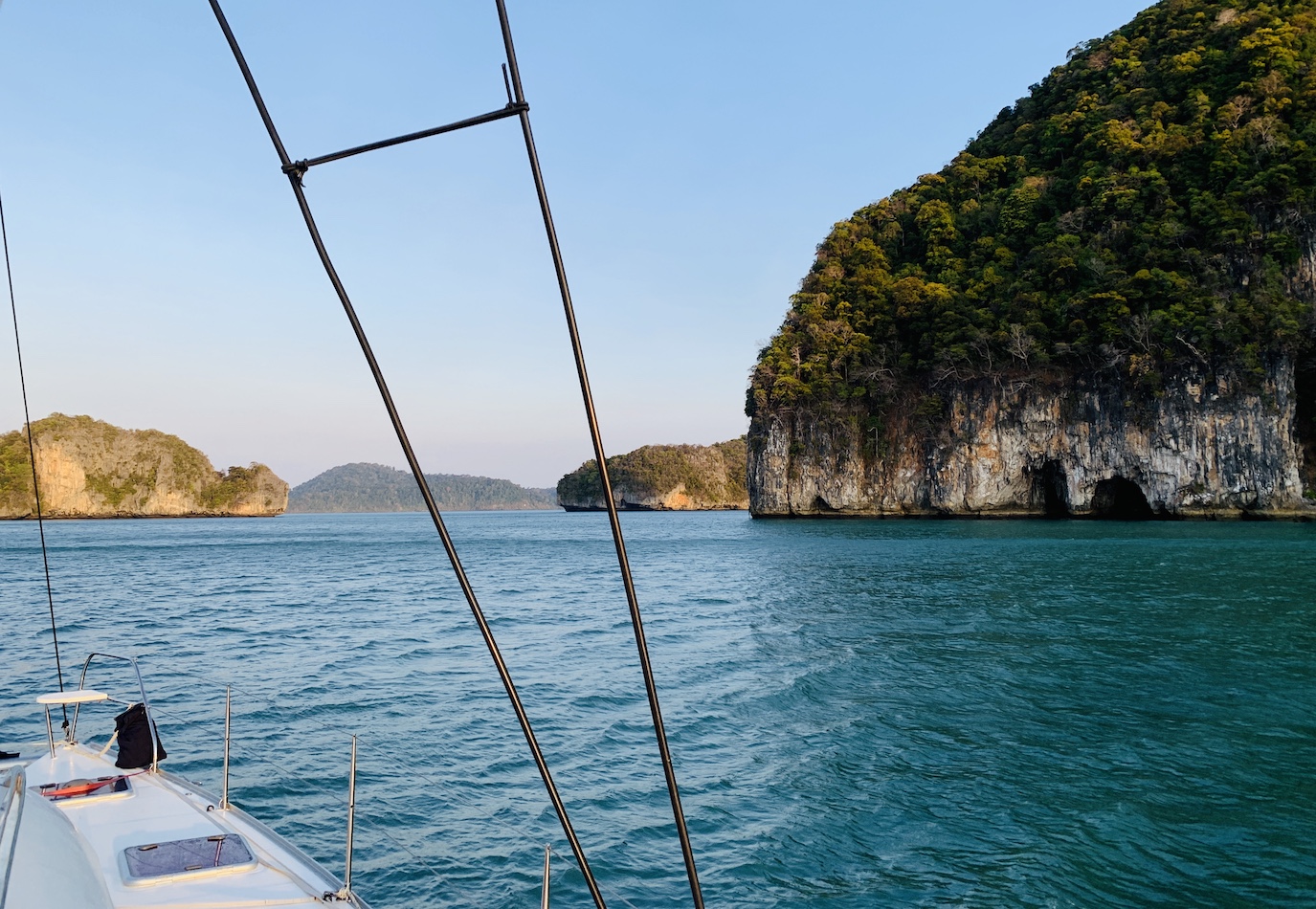
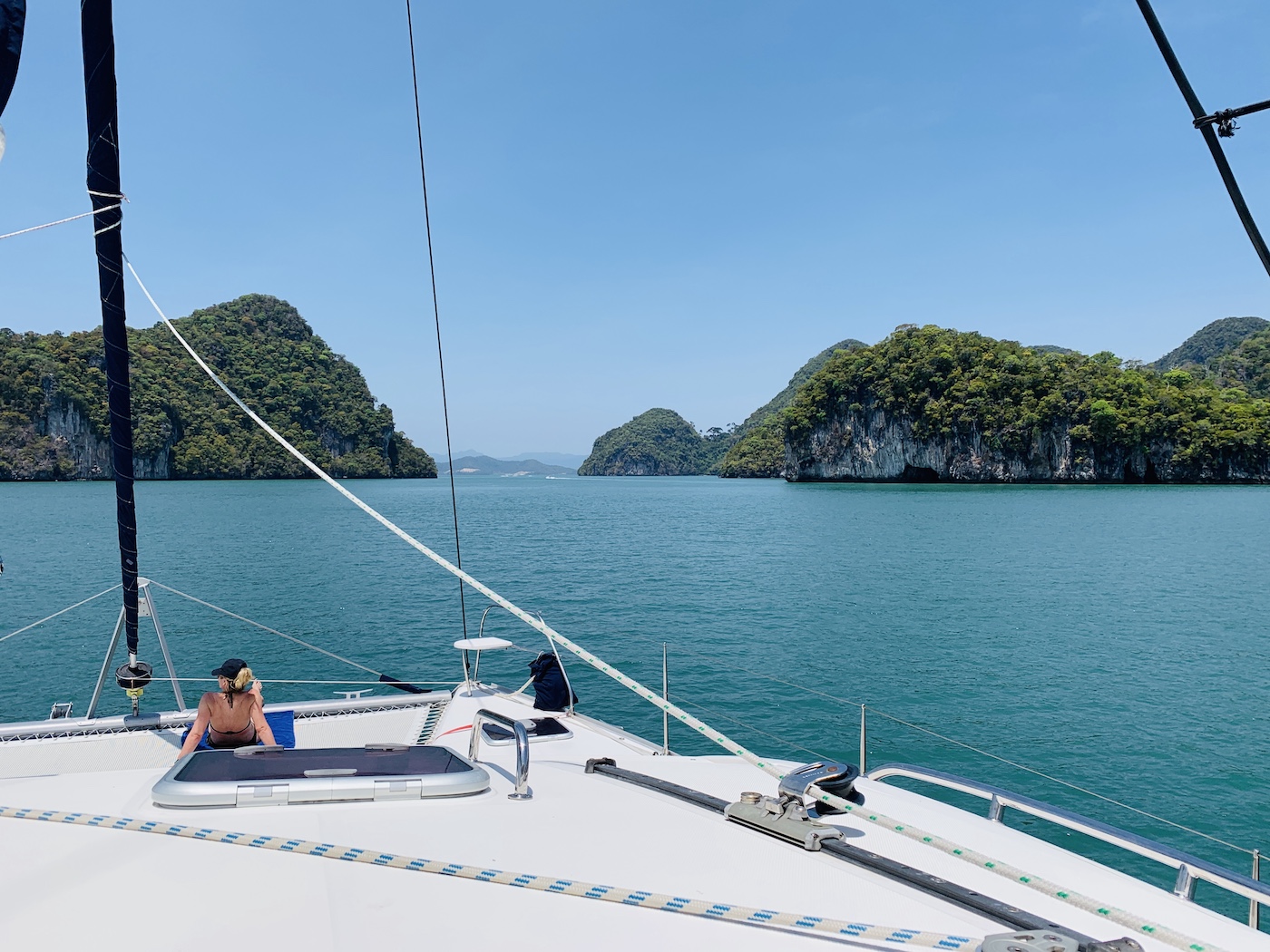
So, after a coffee onboard we moved to the very touristy anchorage of Pentai Cenang on Palau Langkawi and enjoyed a lazy afternoon, interspersed with naps, before dinner was served and a very competitive game of Mexican train dominoes ensued, which included Justine jumping out of her seat to perform her “victory dance” every time she won a game, although Paul finished ahead of her by a mere 4 points. With that, another night of fun and laughter completed the day.
On Monday, 2nd March 2020, Roy and Paul were up early to dinghy ashore, dispose of our garbage and explore the general area of Pentai Cenang and, while doing so, enjoyed breakfast for two at a local bakery / café which they stumbled upon, called The Loaf. Meanwhile, Elaine and Justine enjoyed a sleep in and had breakfast for two onboard. Afterwards, based on the report back of the general area, we weighed anchor and moved further along the coast, with Paul helming and picking the perfect anchoring spot, ruined only by the jet skis we endured for most of the afternoon, resulting in the all too familiar “teapot” stance Elaine had to give a few holiday makers who thought it was perfectly all right to video each other doing loop-the-loops around Paw Paw, churning up the sea and bouncing us around all over the place. Staggering how ignorant and clueless humans can be!
Lunch was enjoyed at the Yellow Beach Café, but not before Elaine had caught up on the blogs, Justine had worshipped the sun god, Paul had made a great effort at examining the inside of his eyeballs and Roy did whatever it is that Roy does. Lunch was followed by a walk to Starbucks for an afternoon coffee for Elaine and Roy, followed by a browse around the tourist stalls, while Justine and Paul explored a little further afield.
Back on Paw Paw, with the swim platform down, afternoon swims were enjoyed, followed by more lazying about the cockpit, dealing with more jet skis, whom Paul shouted at on two occasions, and para-sailors who may as well have landed on Paw Paw. The joys of anchoring off a holiday beach area! When the mayhem in the anchorage ceased, sundowners, accompanied by a beautiful sunset, were enjoyed on the foredeck, followed by another delicious dinner, complements of Chez Roy. Peace and tranquility, however, continued to elude us with the blaring music from shore. Thank goodness we were moving on, weighing anchor just after sunrise the following day and headed to Telaga Harbour, where we found a perfect spot in a surprisingly lovely anchorage, another best kept secret. It was overlooking The Danna Langkawi Resort, a very yacht-friendly establishment with a fabulous menu selection at their international cuisine restaurant as well as a spa, where Elaine, at least, had hoped to enjoy a massage, although prices seemed a tad high.
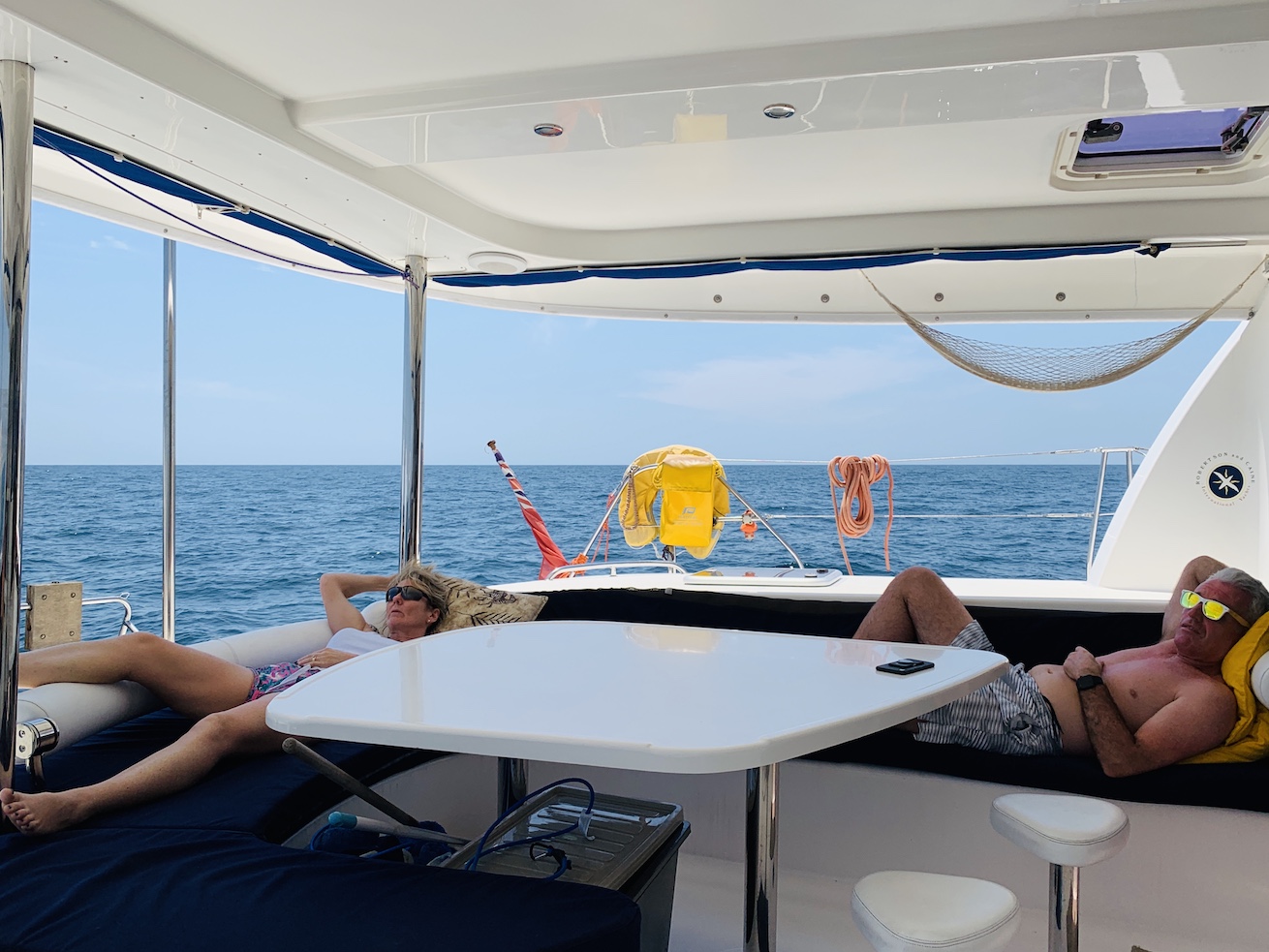
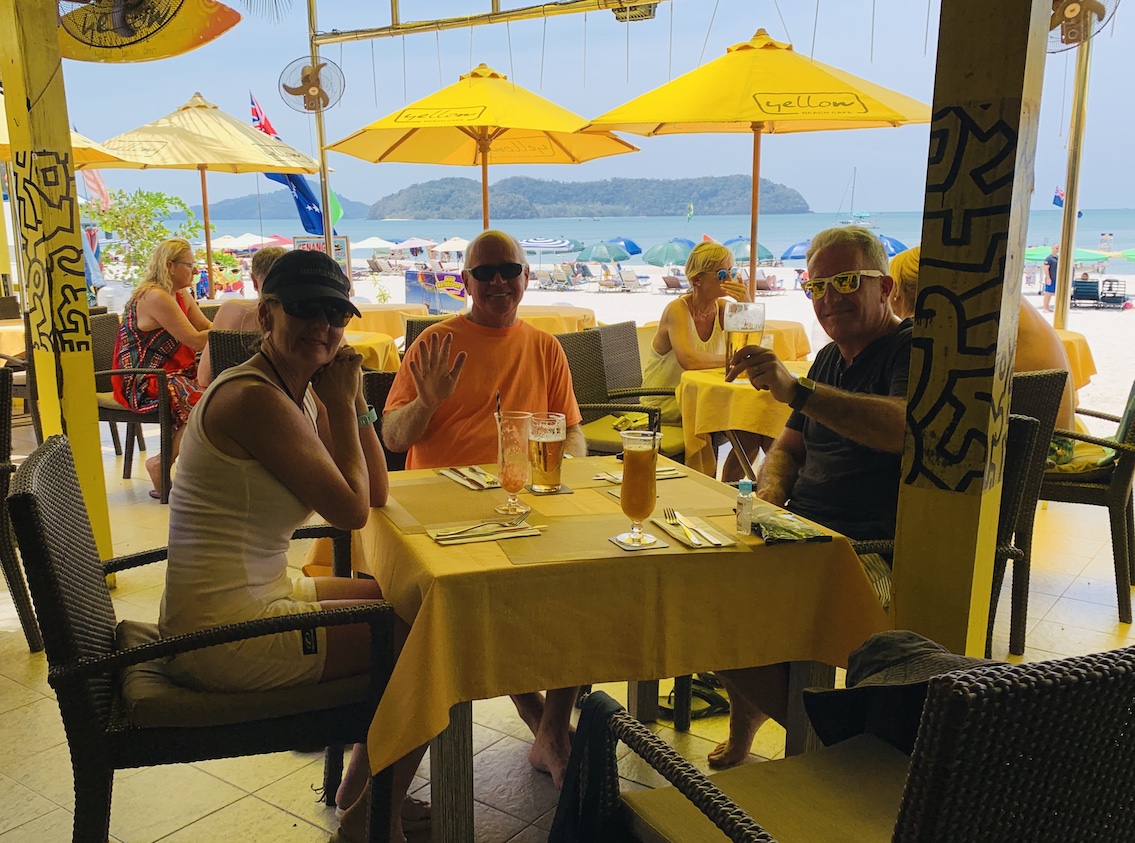
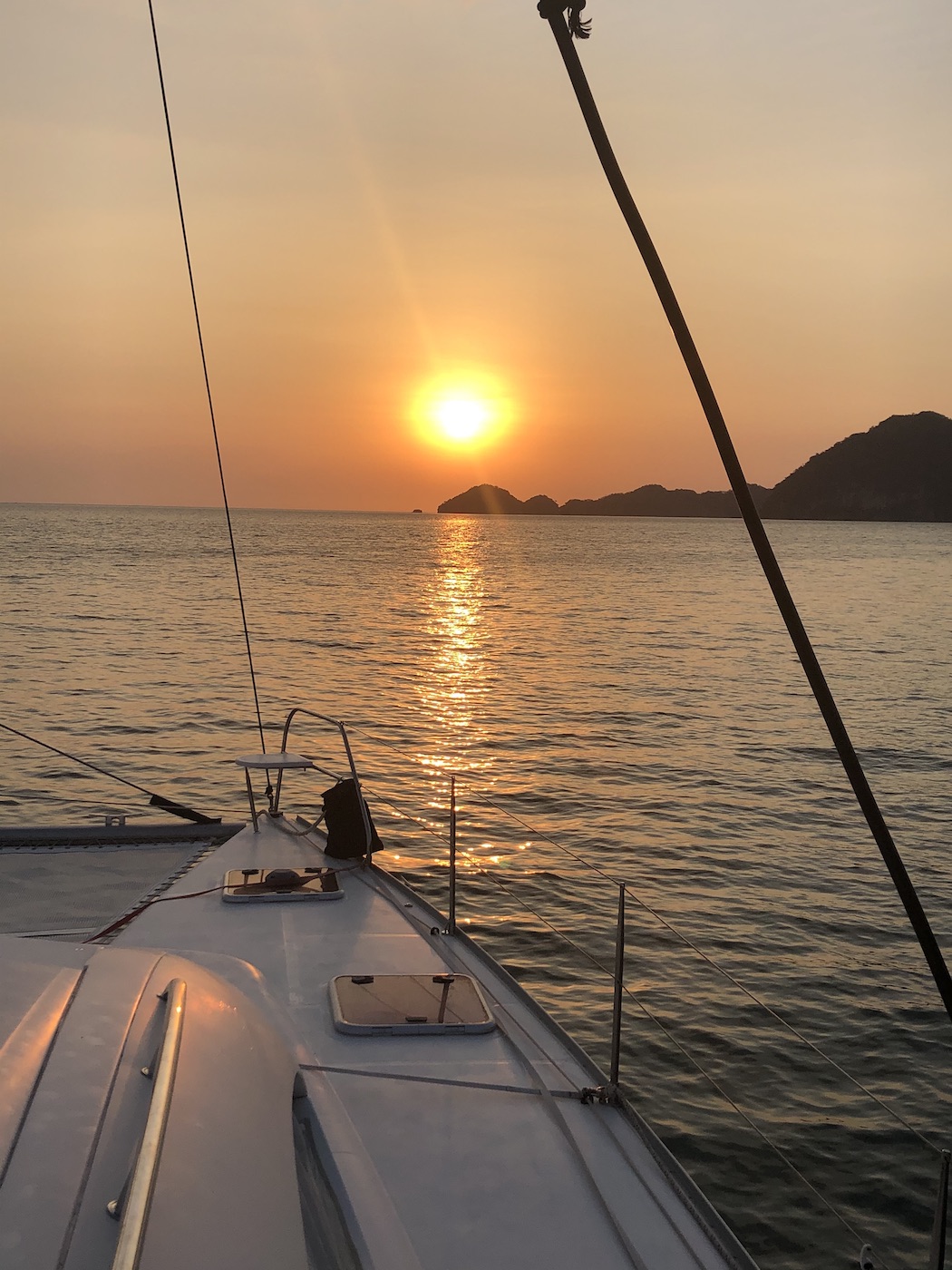
Once we were securely anchored, had had breakfast and had lounged around while Roy changed the v-belts on both engines, we dinghied to the marina, paid our dues for the privilege and enjoyed a light lunch at another branch of The Loaf before taking a snoop around the premises. Then Justine decided she wanted to take a nice long walk along the beautiful white sandy beach towards the second resort, the Berjaya Langkawi, where we were supposed to meet her with the dinghy. Unfortunately we hadn’t realised we couldn’t get to the resort without taking the dinghy out into open waters. Since that wasn’t an option in the stronger winds that had developed, we headed to the closest beach, where the “search party”, Paul, disembarked, unfortunately hitting the propeller and the dinghy bottom on one or two rocks en route. Fortunately we didn’t do too much damage to the dinghy, but it did require some paddling to get out of the rocky shallow water before submersing the dinghy engine again and returning to Paw Paw to do anchor watch, given the increased winds. It wasn’t too long, though, before we received the call that Paul had found Justine and that they were ready to be collected from the beach; this time away from the rocks.
With everyone back onboard, afternoon naps were attempted, but soon abandoned due to the heat. Instead the men went on a dinghy reconnaissance of the surrounding islands, finding another lovely establishment where they enjoyed a cold beverage, while Elaine did her meditation and Justine napped in the cockpit following a swim. It was a lovely surprise to have the men return with a refreshing freshly made fruit juice for the ladies; mango for Elaine, pineapple for Justine. The men then enjoyed a swim off the back of Paw Paw and gave her bottom a proper cleaning at the same time.
After a barbecue onboard and another beautiful sunset, appreciated from the foredeck, a game of Snap ensued, followed by another game of Mexican train dominoes. Against protests and warnings from Paul, however, who indicated that it was not a good idea to play Snap with Justine, and Elaine having forgotten just how bad it could be, we settled down around the cockpit table, putting the ground rule in place that we’d only play one game and no more.
The excitement in Justine, as Paul dealt the cards, was clearly evident and had us all giggling, but, frightening Elaine and Roy completely out of their wits and having the entire anchorage wondering what on earth was going on aboard Paw Paw, when Justine jumped clean out of her seat, screaming “snap” at the top of her voice, as she hurled herself across the table, clamping her hand over the pile of cards and Paul saying: “I told you so”, had us all in fits of laughter once we’d all recovered, vowing that playing Snap again on Paw Paw was definitely banned! Fortunately the game of Mexican train dominoes was far more civilised.
On Wednesday, 4th March 2020, Roy and Paul dinghied ashore, intending to take a walk along the beach, but decided instead to enjoy a coffee and French pastries at The Loaf, returning with a baked delight for Justine. Elaine, however, had to settle for her usual breakfast onboard before we all dinghied back to shore to take a Grab to our chosen touristy outing for the day, the Langkawi Cable Car and Sky Bridge, accessed from the Oriental Village located at the foothills of the Mat Cincang Mountain range.
Also known as the Langkawi SkyCab, it is located just north of Telaga Harbour and provides an aerial link from the Oriental Village to the Top Station located at the peak of Gunung Mat Cincang, the second highest mountain on Palau Langkawi and where the Sky Bridge is also located.
The gradient of the slope between the Base Station and the Middle Station is said to be one of the steepest in the world at 42° and you definitely know this as the cable car approaches Middle Station for visitors to disembark, which we did, or continue on to the Top Station. The gondola cable car system covers a total length of 2.2 Km / 1.4 miles, taking roughly 15 minutes to reach the top and has the longest free span for a mono-cable car at 950 metres / 3,120ft, with gondolas that travel at a distance of approximately 70 meters / 230ft above the canopy of the Muchincang Cambian Geoforest Park, with the oldest rock formations, established 550 million years ago, known as the Cambria-Geology Age. The sandstone in the area has proven to withstand weathering and tectonic activity. We also learnt that the “ripple marks” were sedimentary structures formed by wave motion and could be found near beaches too.
The project was a joint venture between Doppelmayr of Austria and a local company, who conducted a survey of the mountain in May 2000, before construction commenced in April 2001. Since there are no roads to the top, due to the steepness of Gunung Mat Cincang, all the structural components had to be lifted by helicopters, in combination with an auxiliary working cable, and then assembled on site. The project was completed in August 2002 at a cost of $46 million RM and opened to the general public in November 2002, but was only officially opened in 2003.
The Sky Bridge, on the other hand, is a 125 metre / 410ft curved pedestrian cable-stayed bridge, completed in 2005. The bridge deck is located 660 metres / 2,170ft above sea level, reached by taking the SkyCab to the Top Station, then an inclined lift, called the SkyGlide. The bridge is a curved walkway to maximise the viewing experience by providing a different perspective as one walks along it. The walkway, formed of steel and concrete panels, sits on top of an inverted triangular truss, connecting two hilltops on Gunung Mat Chinchang. The bridge is suspended by 8 cables from a 81.5 metre / 267ft high pylon, and hangs about 100 metres / 328ft above ground level. The pylon is anchored onto a concrete pad set at an elevation of 604.5 metres / 1,983ft and its tip reaches a height of 686 metres / 2,250ft above sea level. It is inclined at angles of 78° and 2° in two directions, supported by two cables.
Similarly to the SkyCab, the Sky Bridge was pre-fabricated, then helicopters used to erect the pylon and the main section of the deck. Afterwards deck sections were assembled using the more conventional “cable and winch” system and opened to the public in February 2005. In July 2012, it was closed for maintenance, upgrading and structural strengthening, which included replacing the entire structure with stainless steel and adding sections of glass on the walkway, as well as constructing the SkyGlide. The bridge reopened in February 2015, although access was limited until completion of the SkyGlide in December 2015.
For us it was simply a wonderful outing, accompanied by spectacular views in every direction from the lookout points at the Top Station, although Elaine decided to pass on the Sky Bridge experience, opting rather to take a photograph and video of the others on the bridge and enjoy the educational aspects of this engineering marvel instead.
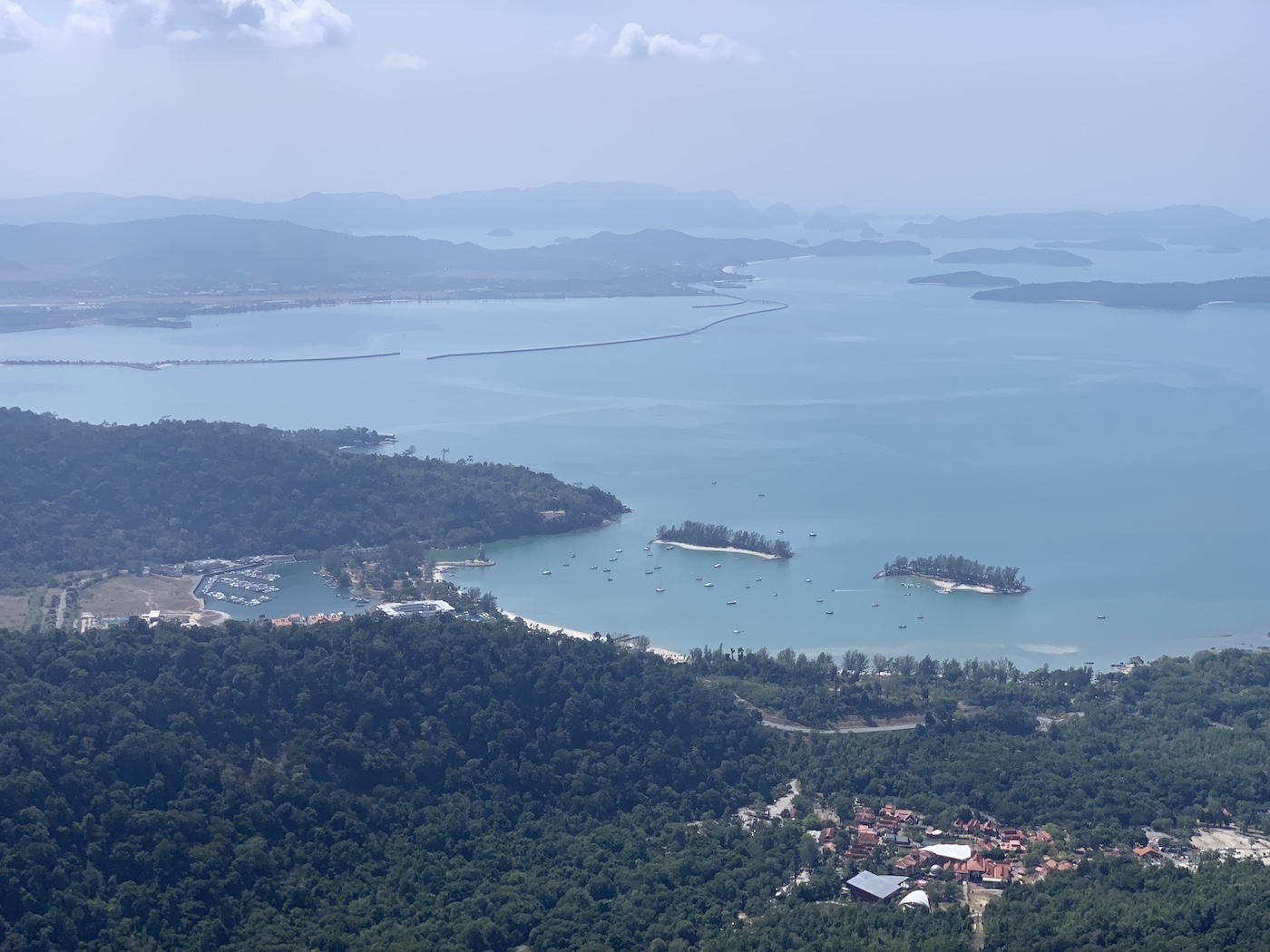
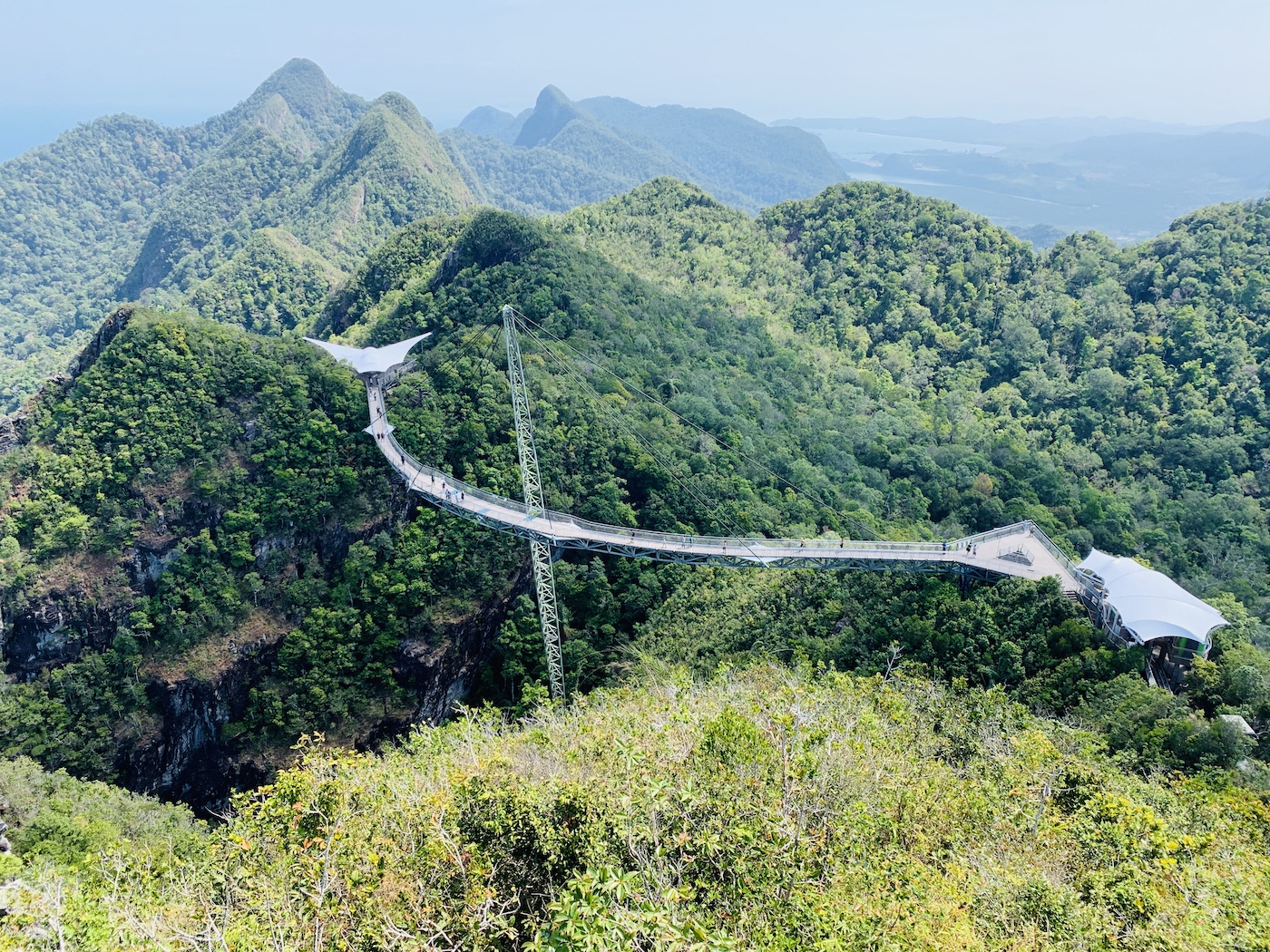
Before heading back to Telaga Harbour, where we enjoyed a light lunch at the Tapaz restaurant, we took a wonder around the Oriental Village. Back on Paw Paw, while Elaine, Justine and Paul lounged around, napped and / or swam, Roy procured some much needed dinghy fuel and ferried the sailmaker to and from Paw Paw to complete the measurements required for our new headsail. Numerous follow-ups, however, resulted in absolutely no service, so this was a task we decided was best left until we reached Thailand. After an early dinner, we dinghied to Paradise 101, the impressive entertainment venue which Roy and Paul had discovered the previous day and enjoyed a few sundowners before returning to Paw Paw to complete our game of Mexican train dominoes.
The morning of Thursday, 5th March 2020, Elaine jumped out of bed early to set the table and get everything ready for Paul’s Birthday Breakfast. It wasn’t long before Justine surfaced to lend a helping hand, following which Paul decided to come on deck, but was severely reprimanded and banished to the foredeck, where he could at least enjoy his desperately needed morning vape. Not exactly the birthday greeting he expected.
However, once the table was set and decorated, the presents, cards and Prosecco strategically placed, the birthday cake assembled; an improvisation on Elaine’s part of a decorated slice of pineapple, the cockpit decorated with balloons, complements of Justine and a breakfast of freshly baked buckwheat pancakes, bacon, complements of Roy, chopped pineapple, coconut cream and honey, complements of Elaine and a birthday song selected by Justine, Paul was allowed to return to the cockpit.
As he made his way along the starboard deck, everyone took their places; Elaine lit the candle and started the video recording, Roy and Justine swayed methodically to the melodic sounds of Stevie Wonder’s, “Happy Birthday”; a perfectly choreographed performance. All Roy lacked was a grass skirt and a pair of coconuts. Paul’s parents phoned from New York just as the scene unfolded; It was perfect timing! Needless to say, we made up for the initial scolding Paul received for leaving his cabin. It was a decadent birthday fit for a pirate!
The rest of us also enjoyed a day of birthday celebrations. Roy and Paul headed to town for a haircut and massage respectively, as well as to purchase supplies for the Birthday Dinner, but not before Roy ferried Elaine and Justine by dinghy to the Berjaya Langkawi Resort for their morning at the Taaras Spa, where Elaine enjoyed a Stress Relief Massage, a relaxing massage enhanced with the use of organic seaweed massage oil and Justine enjoyed a head, neck and shoulder massage, the sauna, the steam room and the beautiful pool high up on the hillside on the edge of the Muchincang Cambian Geoforest Park and strategically positioned to offer magnificent views overlooking the beach and the Andaman Sea through the woodlands of the resort’s premises. Just stunning!
A return trip in a golf cart took us back to the main reception and entertainment area of the resort, where we enjoyed a mocktail each and a delicious meal before meandering along the white sandy beach, around rock pools along the way, to await our dinghy ride back to Paw Paw. It was perfect timing; We’d barely sat down in the sand under a shady tree, when Roy arrived back at the marina, leaving Paul in town to have his massage. Once Paul returned, dinner was prepared, everything packed in the dinghy and we set off for our beach barbecue on the second of the islands surrounding Telaga Harbour. It was the perfect way to end a perfect day of birthday celebrations!
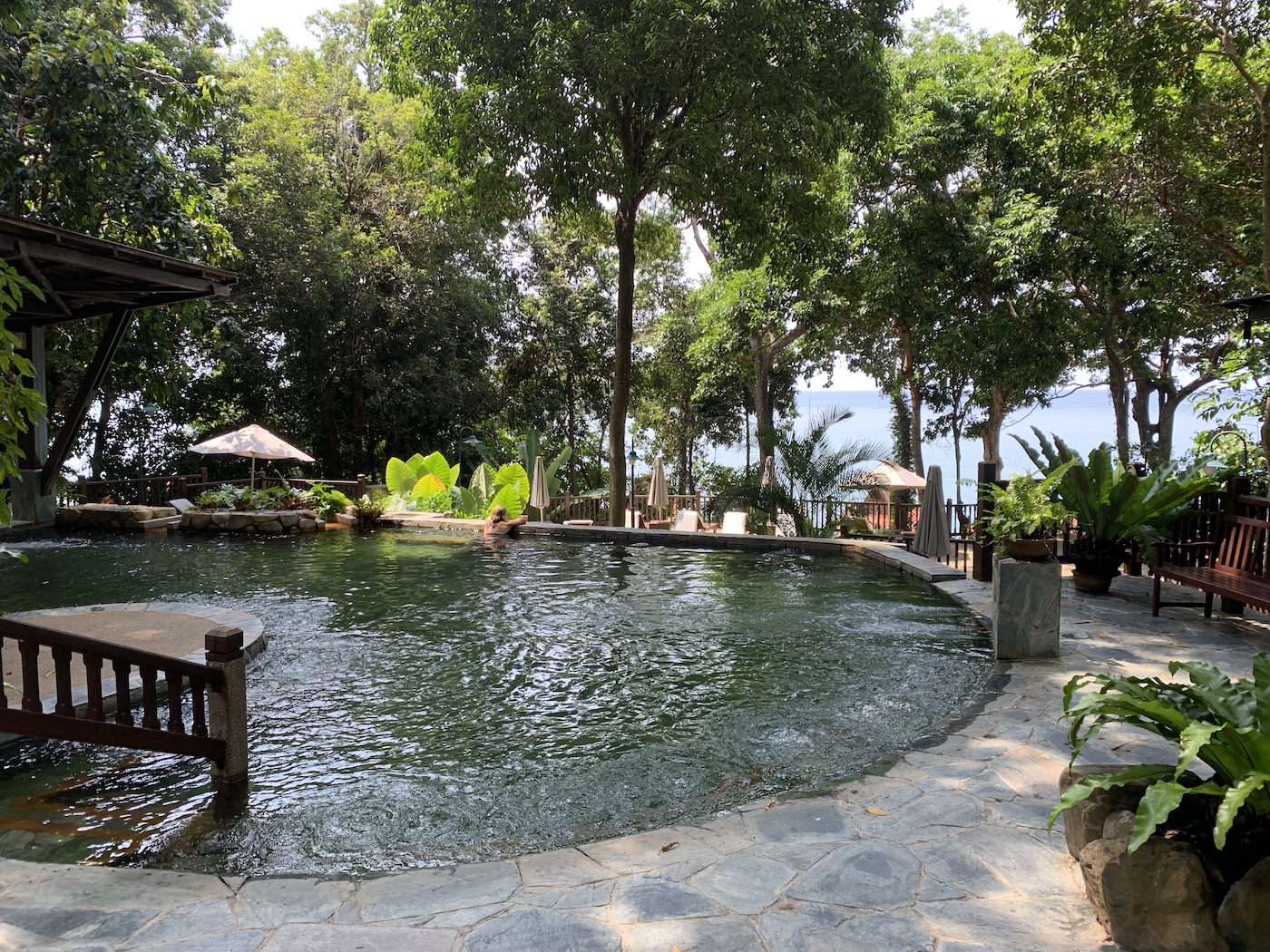
The following day we got up, we had breakfast, we moved. End of. However, while Elaine was very tempted to leave the daily blog at that, after breakfast we moved to the Royal Langkawi Yacht Club anchorage, had lunch, dinghied ashore, paid our daily dues at the marina for the use of their dinghy dock, then, while Roy cleared us all in, the rest of us enjoyed a refreshments at the Fisherman’s Wharf, before Roy joined Elaine in a Grab ride to the nearest doctor. This time to see a local doctor in order to obtain a prescription for medications that she had hoped would get her over what was originally thought to be an allergic reaction to one of the tablets she had to take to avoid another flareup. Feeling like she was “in the wars” was an understatement at this point, but the rheumatologist in Singapore was kind enough to provide this direction, so off we went.
We were definitely surprised to find a modern, clean establishment and a very pleasant and thorough doctor. There was just one small obstacle before Elaine could actually see the doctor though; she had to remove her shoes before entering the surgery. Reluctant to do so, given public surfaces, coronavirus and no immune system to speak of, as well as not having a pair of socks to use, we had to work a plan; shopping bags.
So, donned in her wrap to cover her knees and beautiful pink “socks” to protect her feet, her consultation with the doctor revealed that she had, in fact, contracted a form of a “herpes type virus”, confirmed later to be Shingles and apparently was very lucky not to have ended up in hospital, since the doctor consider the infection to be “mild“. Based on how Elaine felt, though, there was nothing “mild” about it in her mind! Regardless, the doctor was lovely and Elaine was able to leave the surgery with all the necessary medications she needed to help her recover, hopeful that she would be on the mend in no time at all. As things transpired, unfortunately, it actually took another six weeks before Elaine felt human again.
Justine and Paul, in the meantime, took a stroll into town from the marina and were delighted to find a Starbucks at the Kuah Jetty, as well as Dataran Lang, the huge eagle statue perched over the scenic waterfront plaza.
To give Roy a break from all the cooking, an executive decision was taken to eat ashore instead of cooking onboard. As a result, the chosen venue was Captain Eva’s Pool Bar in the marina, where we were delighted to spend an evening with Time Bandit (Anne and Stuart) as well. It was a lovely surprise when Roy bumped into Stuart earlier in the day, when Roy was returning from the Harbour Master, Customs and Immigration offices. With Elaine feeling under the weather, though, we settled for an early night and returned to Paw Paw once Anne’s sister and brother-in-law had arrived to spend a few days with them onboard.
Saturday, 7th March 2020, was “Take Two” on the birthday celebrations aboard Paw Paw. So, once again, Elaine jumped out of bed early to set the table and get everything ready for Justine’s Birthday Breakfast. However, this time, Justine was given strict instructions to say in her cabin until she was summoned. Then, once the table was set and decorated, the presents and cards strategically placed, the non-alcoholics Sparkling Wine for the Buck’s Fizz to the ready, the birthday cake assembled; another improvisation on Elaine’s part of a decorated apple, since she was unable to bake the chocolate cupcakes as previously planned, the cockpit decorated with Happy Birthday banners and balloons, the latter complements of Paul, a breakfast of Justine’s choosing; French toast with tomato sauce, complements of Roy, together with some chopped pawpaw for good measure, complements of Elaine and a birthday song selected by Paul, Justine was called on deck.
Dancing merrily and singing along to her birthday tune, the latter never a good idea, Justine made her way to the cockpit, donned her Princess crown, attached her Birthday Girl rosette, blew our her candle and settled herself down to open her presents and cards and enjoy her Birthday Breakfast; one fit for a Princess, or rather, one of a Princess’ choosing!
We, of course, can’t forget the two serenading men, Roy and Paul, who swayed methodically to a modern rendition of “Happy Birthday”. It was another perfectly choreographed performance and all captured on video! We also had another birthday, however, to celebrate, although the Birthday Boy wasn’t onboard, but we did video call Keenan and sang Happy Birthday to him, followed by a nice long chat. The cutest was each of the grandsons running up to the phone, one at a time, to wish Justine a Happy Birthday.
Afterwards, we dinghied ashore and, while Justine and Paul set off to enjoy their chosen touristy attraction, Elaine and Roy enjoyed a Starbucks back at the marina, before Roy set off to top up on a few provisions. It wasn’t long thereafter that Justine and Paul found Elaine at the Fisherman’s Wharf and decisions were made for the afternoon; Justine and Paul would stay ashore, have lunch and enjoy the pool, while Roy returned to Paw Paw with Elaine to have lunch before he joined the others at the pool; Elaine was in desperate need of an afternoon to rest and recover. The day was topped off with a fabulous Birthday Dinner at Jack’s Charcoal Grill, followed by tea and coffee on Paw Paw’s foredeck in the cool night breeze and, with that, the birthday celebrations, for this “holiday” anyway, came to a close.
The following day, we got up, we had breakfast, we moved; again. This time to the beautiful Vivanta Rebak Resort and Marina and by midday we were securely tied up to the dock. While we got settled in, Paul took a meander and found the pool. Soon thereafter Justine made a beeline for the pool too while we wrapped up the paperwork at the marina office.
Not knowing what to expect, although we had been told by other cruising friends that this establishment was a great place to enjoy some R&R, we were definitely surprised to find such a lovely resort which allowed us access to all the facilities as a result of being in the marina and we didn’t waste any time putting that access to full use. While Justine and Paul waded in the pool, Elaine and Roy had a very tasty lunch on the patio of the Senari restaurant. In fact, the lunch was so good and the menu so extensive that we decided to repeat the experience for dinner, but not before Elaine had taken a dip in the sea then joined everyone else at the pool bar.
After a delicious dinner, a half a game of Mexican train dominoes, given the lateness off the hour, sealed the day. We had planned on completing the game the following night, but, after another delicious dinner at the Senari restaurant, we called it a day.
Monday, 9th March 2020, however, was all about getting Paw Paw back to her sparkling self. So, while Roy and Paul tackled the decks, then headed out to have breakfast at the resort, Justine packed, then tackled the starboard aft cabin, head and companion way and Elaine tackled the port side, after the two of us had breakfast onboard. By then, though, Elaine was in desperate need of a break and Justine had already started on the galley, so she made Elaine a nice cup of tea. The men returned unexpectedly at that point, but Elaine and Roy needed to continue the cleaning, so Justine and Paul were dismissed to spend their last day relaxing and enjoying the resort. While Elaine completed the saloon and a detailed cleaning of the galley cupboards, drawers, shelves, freezer, fridge, stove and the stainless steel in the cockpit, Roy cleaned the topsides, filled the water tanks and revisited areas of the deck that needed more attention, before joining Justine and Paul at the pool, but stopping off at the laundry facility en route.
The plan was for Roy to start the machines to wash our linen and all the swimming towels, but, unfortunately, all the machines were occupied and informed Elaine that the next machine would only be available in an hour. That, at least, gave Elaine time to have her lunch onboard, before heading to the laundry facility, but we then found out that people were jumping the queue. With that, instead of joining everyone at the pool, Elaine found a seat at the facility and didn’t move until our laundry was in the washing machines. Not the way she had intended to spend her afternoon!
Regardless, once the laundry was done and everything hung out to dry with assistance from Roy, Elaine eventually got her opportunity to wade in the pool as well, while Roy provided a much needed foot massage.
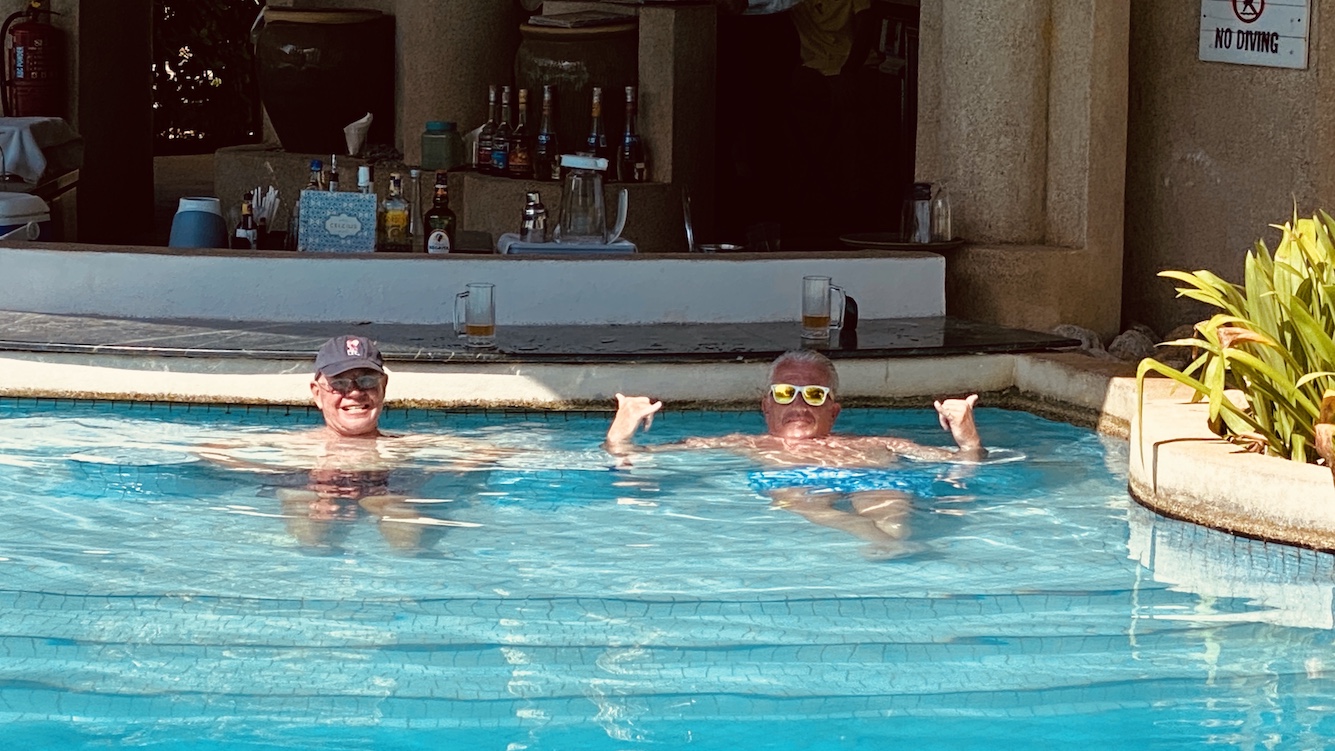
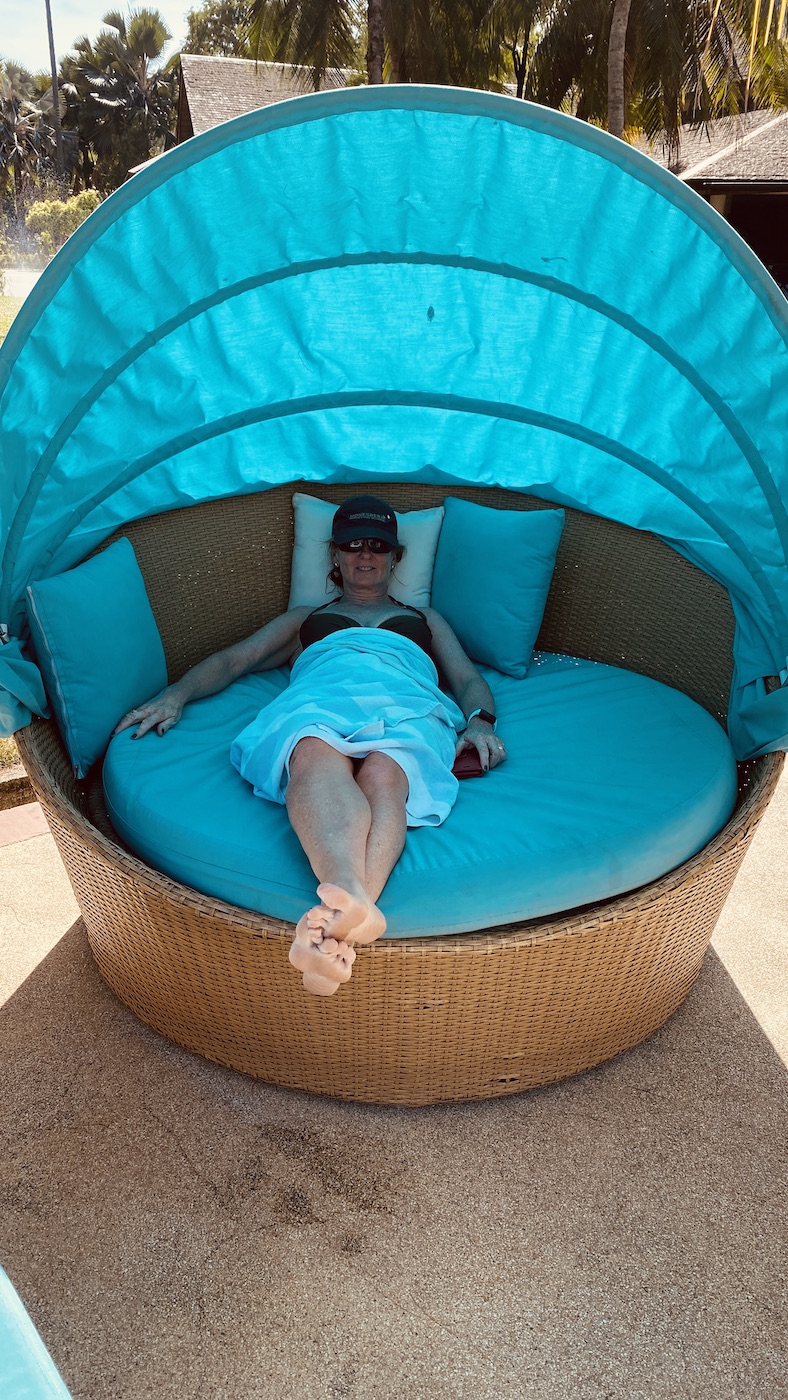
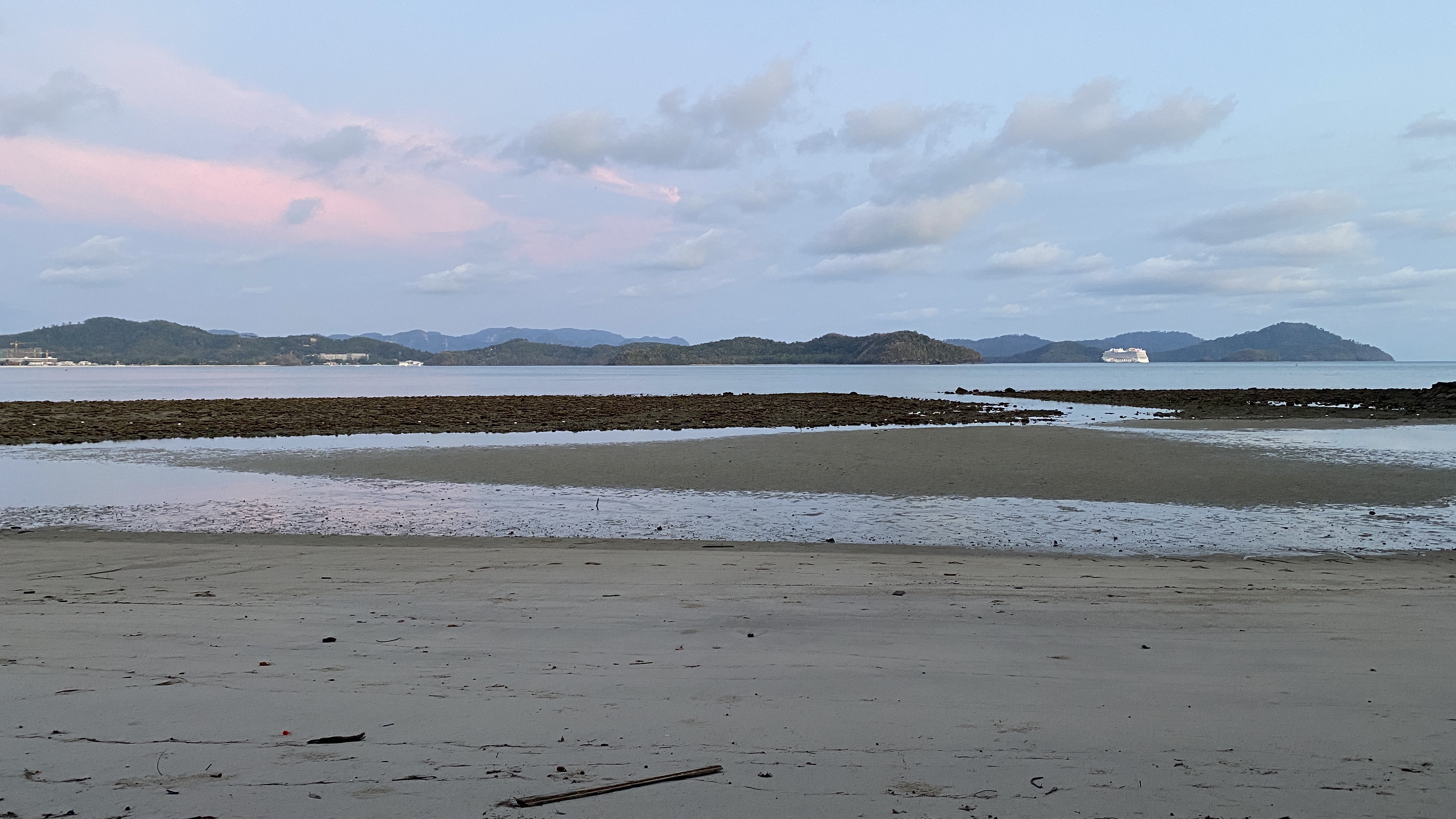
The next morning, once everyone was up and about, we headed back to the resort for a farewell breakfast, following which it was time to head to the ferry dock to say our goodbyes to Justine and Paul. Since we wanted to avoid the other ferry passengers, with the COVID-19 pandemic spreading like wild fire by now, we returned to Paw Paw, where we waited to wave them off as the ferry passed by, wishing them a safe journey home; it was the first time ever that this farewell meant we said our goodbyes “till we meet again, who knows where, who knows when”, given that Italy and Spain had become the new epicentres of the pandemic, with the UK not far behind.
The rest of our morning was spent giving Paw Paw a quick once over on the cleaning front, hanging a tarpaulin over the foredeck to help keep the sun from baking between the louvers and to keep the saloon cool, then trying to finalise our sailing itinerary for the next few months. It had become a very difficult and upsetting morning on the back of saying goodbye to Justine and Paul, given that we had to cancel our flights to the UK and the US to visit the family, as well as cancel our land travels to Vietnam and Cambodia, all due to the explosion of COVID-19. Earlier in the month, we’d also decided that it wasn’t a good idea for Brooke and the grandchildren to visit us on Paw Paw either. That decision became a bit of a joke a few short months later, though, when the family and that of every person in the US ended up in the worst affected area of the world. Trying to get our refunds, trying to dovetail an itinerary with the necessary visits back and forth to Singapore and possibly still trying to sail to Thailand to meet up with our cruising friends, Lynda and Steve off Nina, as well as to see Elaine’s younger sister for the first time in nearly 20 years, who would be visiting Thailand on holiday, gave us both a headache, so we gave up, vowing to revisit it all after our trip back to Singapore the following week.
Meanwhile, we’d decided to just take it one week at a time as heartbreaking and upsetting as it all was, especially since Elaine had taken the decision not to return to the US with Roy in December, given the precarious situation of her travelling during the winter months. Oh how that decision paled into insignificance too and not knowing when she’d ever see Keenan, Brooke and the grandchildren has weighed heavily on her heart since!
A few days later, while getting ready to undertake our next trip to Singapore, we had no choice, but to make another difficult decision; postpone our sail to Thailand. This became the prudent and sensible thing to do as yacht after yacht, coming from Thailand, sailed into Rebak Island marina amid rumours of border closures. Before long the marina was bulging, our world, and that of the entire planet, had changed forever. Our circumnavigation, along with every other cruiser’s, halted indefinitely. We were placed in lockdown, under the Movement Control Order, on the tropical island of Rebak, as the world was brought to its knees by the global COVID-19 pandemic! Our experiences moving forward, a story for a separate article.
